
A World Without Email: Reimagining Work in an Age of Communication Overload
by
Cal Newport
Published 2 Mar 2021
As a result, the knowledge sector prefers to leave these processes unspecified, relying instead on the hyperactive hive mind workflow to informally organize their work. For sure, a major explanation for this process aversion is the insistence on knowledge worker autonomy that we explored earlier. Production processes, by definition, require rules about how work is coordinated. Rules reduce autonomy—creating friction with the belief that knowledge workers “must manage themselves,” as Peter Drucker commanded. This dislike of processes, however, goes beyond a general bias toward autonomy. There’s a belief, implicitly held by many knowledge workers, that the lack of processes in this sector is not just an unavoidable side effect of self-management, but actually a smart way to work.
…
Drucker argued this approach was doomed to fail in the new world of knowledge work, where productive output was created not by expensive equipment stamping out parts, but instead by cerebral workers applying specialized cognitive skills. Indeed, knowledge workers often knew more about their specialties than those who managed them. The best way to deploy these highly skilled individuals, Drucker concluded, was to give them clear objectives and then leave them alone to accomplish their brainy work however they saw fit. While it might have been efficient to tell an assembly line worker exactly how to install a steering wheel, it was futile to try to tell a marketing copywriter exactly how to brainstorm a new product slogan. Drucker preached this idea of knowledge worker autonomy throughout his long career.
…
Drucker preached this idea of knowledge worker autonomy throughout his long career. As late as 1999, he still emphasized its importance: [Knowledge work] demands that we impose the responsibility for their productivity on the individual knowledge workers themselves. Knowledge workers have to manage themselves. They have to have autonomy.35 It’s hard to overestimate the influence of this idea. With the exception of some routinized bureaucratic processes, like filing expense reports, the intricacies of how the myriad demanding tasks that define modern office work are accomplished remain largely beyond the scope of management. They’re pushed instead into the hazy realm of personal productivity.
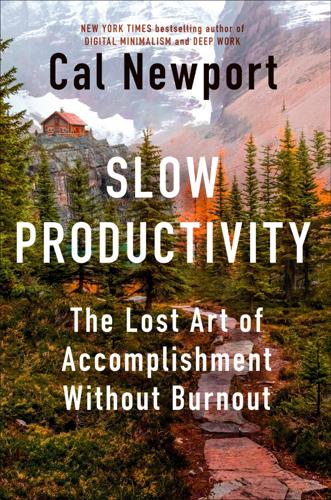
Slow Productivity: The Lost Art of Accomplishment Without Burnout
by
Cal Newport
Published 5 Mar 2024
* * * — As I witnessed this fast-growing discontent, it became clear to me that something important was happening. Knowledge workers were exhausted—burned out from an increasingly relentless busyness. The pandemic didn’t introduce this trend so much as push its worst excesses beyond the threshold of tolerability. More than a few knowledge workers, thrust suddenly into remote work, their kids screaming in the next room as they suffered through yet another Zoom meeting, began to wonder, “What are we really doing here?” I began extensively covering knowledge worker discontent, as well as alternative constructions of professional meaning, on my long-standing newsletter, as well as on a new podcast I launched early in the pandemic.
…
As I read through more of my surveys, an unsettling revelation began to emerge: for all of our complaining about the term, knowledge workers have no agreed-upon definition of what “productivity” even means. This vagueness extends beyond the self-reflection of individuals; it’s also reflected in academic treatments of this topic. In 1999, the management theorist Peter Drucker published an influential paper titled “Knowledge-Worker Productivity: The Biggest Challenge.” Early in the article, Drucker admits that “work on the productivity of the knowledge worker has barely begun.” In an attempt to rectify this reality, he goes on to list six “major factors” that influence productivity in the knowledge sector, including clarity about tasks and a commitment to continuous learning and innovation.
…
I was interested in Davenport because, earlier in his career, he was one of the few academics I could find who seriously attempted to study productivity in the knowledge sector, culminating in his 2005 book, Thinking for a Living: How to Get Better Performance and Results from Knowledge Workers. Davenport ultimately became frustrated with the difficulty of making meaningful progress on this topic and moved on to more rewarding areas. “In most cases, people don’t measure the productivity of knowledge workers,” he explained. “And when we do, we do it in really silly ways, like how many papers do academics produce, regardless of quality. We are still in the quite early stages.” Davenport has written or edited twenty-five books.
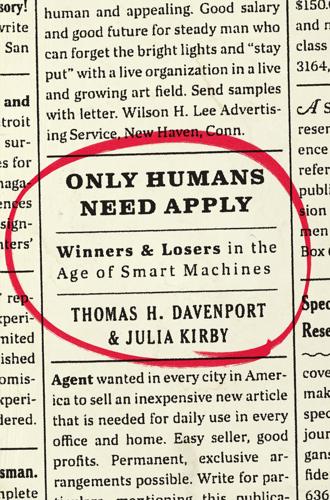
Only Humans Need Apply: Winners and Losers in the Age of Smart Machines
by
Thomas H. Davenport
and
Julia Kirby
Published 23 May 2016
The obvious peril in Era Three is more job loss. This time the potential victims are not tellers and tollbooth collectors, much less farmers and factory workers, but rather all those “knowledge workers” who assumed they were immune from job displacement by machines. People like the writers and readers of this book. Knowledge Workers’ Jobs Are at Risk The management consulting firm McKinsey thinks a lot about knowledge workers; they make up essentially 100 percent of its own ranks as well as its clientele. When its research arm, the McKinsey Global Institute, issued a report on the disruptive technologies that would most “transform life, business, and the global economy” in the next decade, it included the automation of knowledge work.
…
They might finally lead to that fifteen-hour workweek. But our belief is that they will—and should—follow the path blazed by spreadsheets. Instead of replacing knowledge workers, they should give them more to think about. Some decisions and actions may be taken by automated systems, but that should free up knowledge workers to accomplish larger and more important tasks. Of course, there is a downside to working as much as knowledge workers tend to (particularly in the United States) today. But there is perhaps an even greater downside to not working enough or at all. The price we have to pay for thinking expansively about work is never having enough time to do it all.
…
When its research arm, the McKinsey Global Institute, issued a report on the disruptive technologies that would most “transform life, business, and the global economy” in the next decade, it included the automation of knowledge work. Having studied typical job compositions in seven categories of knowledge workers (professionals, managers, engineers, scientists, teachers, analysts, and administrative support staff), McKinsey predicts dramatic change will have already taken hold by 2025. The bottom line: “we estimate that knowledge work automation tools and systems could take on tasks that would be equal to the output of 110 million to 140 million full-time equivalents (FTEs).”3 Since we’ll continue to use the term “knowledge workers” quite a bit, we should pause to define who these people are. In Tom’s 2005 book, Thinking for a Living, he described them as workers “whose primary tasks involve the manipulation of knowledge and information.”4 Under that definition, they represent a quarter to a half of all workers in advanced economies (depending on the country, the definition, and the statistics you prefer), and they “pull the plow of economic progress,” as Tom put it then.

Slack: Getting Past Burnout, Busywork, and the Myth of Total Efficiency
by
Tom Demarco
Published 15 Nov 2001
In my experience, there is never less than a 15 percent penalty due to time-sharing a knowledge worker between two or more tasks. Moving a person who had been assigned to a single job to work part-time on a second exposes you to a loss of at least six hours per week of that person’s time. And the penalty is greater when the partitioning is greater. I limit this statement to knowledge workers, since manual and blue-collar workers may not be affected, or may be less affected, by some of the components of the task-switching penalty. For knowledge workers, though, the minimum penalty is 15 percent. The only method I have used so far to substantiate the 15 percent minimum penalty is a time-honored approach called proof by repeated assertion.
…
Part Four Risk taking and risk management: Why running away from risk is a no-win strategy, and why running toward it makes sense when managed sensibly (and what that entails). Slack is directed toward management at all levels in knowledge organizations and other modern corporations where knowledge workers predominate. It is also directed to the knowledge workers themselves. It’s directed toward you if you sense that there is something terribly wrong in the infernal busyness of the modern workplace, if you know in your heart that the slack that has been squeezed out of your organizations over the last ten years now has to be reintroduced, or no further meaningful progress will ever be possible.
…
Growth is essential to Eve, as essential as her paycheck. You can no more expect her to work without meaningful challenge than you could expect her to work without salary. The nearly equal status of challenge and pay is unique to knowledge workers. They are different from the blue-collar workers that our fathers managed a generation ago. The easy, dumb error of managing knowledge workers is to forget that they are different and assume that basic rules developed on factory floors a century ago apply to them. The Nonprofit Model I had occasion recently to manage a small not-for-profit organization where most of the work was done by volunteers.
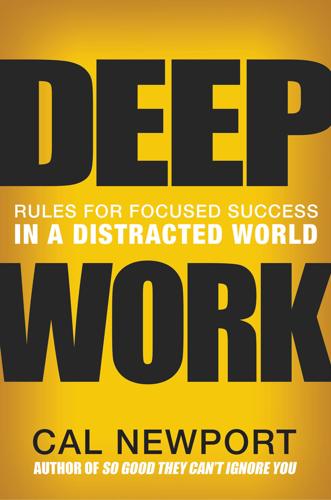
Deep Work: Rules for Focused Success in a Distracted World
by
Cal Newport
Published 5 Jan 2016
The ubiquity of deep work among influential individuals is important to emphasize because it stands in sharp contrast to the behavior of most modern knowledge workers—a group that’s rapidly forgetting the value of going deep. The reason knowledge workers are losing their familiarity with deep work is well established: network tools. This is a broad category that captures communication services like e-mail and SMS, social media networks like Twitter and Facebook, and the shiny tangle of infotainment sites like BuzzFeed and Reddit. In aggregate, the rise of these tools, combined with ubiquitous access to them through smartphones and networked office computers, has fragmented most knowledge workers’ attention into slivers.
…
In aggregate, the rise of these tools, combined with ubiquitous access to them through smartphones and networked office computers, has fragmented most knowledge workers’ attention into slivers. A 2012 McKinsey study found that the average knowledge worker now spends more than 60 percent of the workweek engaged in electronic communication and Internet searching, with close to 30 percent of a worker’s time dedicated to reading and answering e-mail alone. This state of fragmented attention cannot accommodate deep work, which requires long periods of uninterrupted thinking. At the same time, however, modern knowledge workers are not loafing. In fact, they report that they are as busy as ever. What explains the discrepancy? A lot can be explained by another type of effort, which provides a counterpart to the idea of deep work: Shallow Work: Noncognitively demanding, logistical-style tasks, often performed while distracted.
…
Benn needed to learn a hard skill, and needed to do so fast. It’s here that Benn ran into the same problem that holds back many knowledge workers from navigating into more explosive career trajectories. Learning something complex like computer programming requires intense uninterrupted concentration on cognitively demanding concepts—the type of concentration that drove Carl Jung to the woods surrounding Lake Zurich. This task, in other words, is an act of deep work. Most knowledge workers, however, as I argued earlier in this introduction, have lost their ability to perform deep work. Benn was no exception to this trend.

The Global Auction: The Broken Promises of Education, Jobs, and Incomes
by
Phillip Brown
,
Hugh Lauder
and
David Ashton
Published 3 Nov 2010
Smokestack industries had given way to California’s Silicon Valley and Route 128 in Boston. Working-class occupations were in decline as a larger share of the workforce joined the burgeoning ranks of knowledge workers. Peter Drucker, a leading management guru, wrote of another power shift from the owners and managers of capital to knowledge workers, as the prosperity of individuals, companies, and nations came to depend on the application of knowledge. Knowledge workers were gaining the upper hand because “the firm’s most valuable knowledge capital tends to reside in the brains of its key workers, and ownership of people went out with the abolition of slavery.”10 This required a new approach to management within a dynamic global environment.
…
See mass production mechatronics, 101, 174n27 knowledge economy, 15, 20, 25, 79 knowledge transfer, 70 knowledge wars, 19–23, 28, 30–36, 32, 38, mental revolution, 71 meritocracy, 9, 18, 133–36, 146, 182n3, 187n31 40–41, 43–48, 59, 123, 150–51, 158–59, 164, 168n3. See also knowledge workers; knowledge-driven economy knowledge workers, 6, 8–9, 18–19, 66, 68, 72–76, 80–82, 84, 96, 99, 104, 108, 110–12, 123, 126–27, 137–38, 147–48, Mexico, 35 MG Rover, 42 Michaels, Ed, 85–86, 93, 176n8 micromanagement, 74 middle class as agrarian peasants, 182n48 153, 159, 180n17. See also knowledge wars; knowledge-driven economy knowledge-driven economy, 2, 4–5, 23–27, 37, 65–68, 85, 96, 155, 173n9. See also knowledge wars; knowledge workers 194 labor arbitrage, 97, 99, 106–7, 111, 159 Index Brazil, 182n43 China, 2, 130 corporate profits, 110 downward mobility, 138 emerging economies, 130–31 erosion of benefits, 121–22 financial crash of 2008, 6 global, 128–29, 130, 131 Nike, 102 global poverty, 182n43 globalization, 47–48 growth of, 18 income inequalities, 9, 118–19, 120 income stagnation, 5 Obama, Barack, 3, 23, 27, 147 OECD (Organisation for Economic Co-operation and Development), 31, 35, 91, 109, 149, 168n2 office management, 72, 127 India, 2, 30, 34, 130 Italy, 130, 182n43 mechanical Taylorism, 81 offshoring, 109, 152 offshoring, 8, 46, 51–52, 55–56, 60, 73, 75, 77–78, 90–93, 99, 107–11, 119, 129, 152, 170–71n2, 180n17 Ohmae, Kenichi, 104–5 opportunity bargain, 132 opportunity gap, 141 opportunity bargain American Dream, 27, 132 oasis operations, 64 opportunity trap, 143 politics of more, 186n16 positional conflict, 134 bidding wars, 183–84n22 corporate profits, 124 credentials, 184–85n2 prosperity, 2 purchasing power parity (PPP), 129, 131 development of, 4–6 digital Taylorism, 65, 155 quality-cost revolution, 59 salaries, 118–19, 120 soft currencies, 140–41 economy of hope, 148–49, 164 education and, 4–6, 27–28 and the global auction, 132 war for talent, 84, 91, 96–97 Mills, C.
…
It encourages the segmentation of talent in ways that reserve permission to think to a small proportion of elite employees responsible for driving the business forward, functioning cheek by jowl with equally wellqualified workers in more Taylorized jobs. Many knowledge workers may disappear off the talent radar screen. This process is at an early stage in many organizations, as we’ve already indicated, but we can distinguish three types of knowledge worker: developers, demonstrators, and drones. Developers include the high potentials and top performers discussed in the next chapter. They represent no more than 10–15 percent of an organization’s workforce given “permission to think” and include senior researchers, managers, and professionals.

Business Metadata: Capturing Enterprise Knowledge
by
William H. Inmon
,
Bonnie K. O'Neil
and
Lowell Fryman
Published 15 Feb 2008
Is this the same type of experience that people would have if they were unable to find information to do their jobs? 4.4.1.1 Information and “Knowledge Workers” Peter Drucker first created the term “knowledge worker” in the late 1950s and early 1960s. The economy of the twenty-first century is an information economy, and most workers today are knowledge workers who produce abstract work products consisting mainly of information, not tangible items like cars or pencils. Therefore, the know-how of the knowledge worker is not necessarily knowledge of everything, but knowing where to find it. Samuel Johnson, who compiled the first English dictionary in the 1700s, said: 66 Chapter 4 Business Metadata, Communication, and Search Figure 4.4 Searching for a Needle in a Haystack.
…
. ✦ The average knowledge worker spends 2.5 hours/day (30%) searching for information. ✦ The enterprise employs 1000 knowledge workers. ✦ 50% of information is not centrally indexed (housed in silos as on someone’s notebook computer or a database). ✦ 50% of Web searches fail/are abandoned. 4.4.2.3 Employee Time Wasted Based on these assumptions, Feldman calculated that the enterprise wastes $48,000 per week, or almost $2.5 million a year in searches. This number is an estimate only; she did not factor in employee vacations. 4.4.2.4 Duplicating/Reworking Information Knowledge workers inadvertently re-create information because they can’t access the original work products.
…
Here is IAIDQ’s definition of information quality (three separate definitions are given, one having two components): Information quality: (1) Consistently meeting all knowledge worker and end-customer expectations in all quality characteristics of the information products and services required to accomplish the enterprise mission (internal knowledge worker) or personal objectives (end customer). (2) The degree to which information consistently meets the requirements and expectations of all knowledge workers who require it to perform their processes. (Larry English, noted data and information quality expert and author) Information Quality: The fitness for use of information; information that meets the requirements of its authors, users, and administrators.

The Lights in the Tunnel
by
Martin Ford
Published 28 May 2011
There is no need for robotic arms or, in fact, any moving parts at all. Another, more common, term for people with software jobs is, of course, knowledge worker. Software jobs are also highly subject to offshoring. The conventional wisdom used to be that becoming a knowledge worker represented the best path to a prosperous future. The advent of offshoring has increasingly called this proposition into question. Today, offshoring is impacting knowledge workers across the board. Jobs in fields such as radiology, accounting, tax preparation, graphic design, and especially all types of information technology are already being shipped to India and to other countries.
…
In fact, we can reasonably say that software jobs (or knowledge worker jobs) are typically high paying jobs. This creates a very strong incentive for businesses to offshore and, when possible, automate these jobs. Another point we can make is that there is really no relationship between how much training is required for a human being, and how difficult it is to automate the job. To become a lawyer or a radiologist requires both college and graduate degrees, but this will not hold off automation. It is a relatively simple matter to program accumulated knowledge into an algorithm or enter it into a database. For knowledge workers, there is really a double dose of bad news.
…
Not only are their jobs potentially easier to automate than other job types because no investment in mechanical equipment is required; but also, the financial incentive for getting rid of the job is significantly higher. As a result, we can expect that, in the future, automation will fall heavily on knowledge workers and in particular on highly paid workers. In cases where technology is not yet sufficient to automate the job, offshoring is likely to be pursued as a interim solution. Given this reality, it may be that the simulation we performed in Chapter 1 was actually somewhat conservative. Look back at the table listing traditional jobs. Very few of these people are knowledge workers. In our simulation, we assumed that automation would fall evenly on some significant percentage of the average lights in the tunnel.
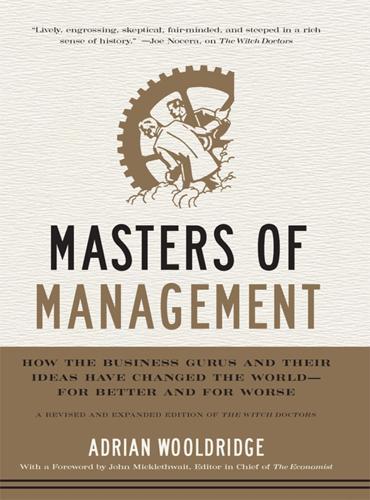
Masters of Management: How the Business Gurus and Their Ideas Have Changed the World—for Better and for Worse
by
Adrian Wooldridge
Published 29 Nov 2011
Drucker’s enthusiasm for empowerment was reinforced by his belief that the old industrial proletariat was being replaced by knowledge workers. He believed that the advanced world was moving from “an economy of goods” to “a knowledge economy,” and that management was changing as a result: managers needed to learn how to engage the minds, rather than simply control the hands, of their workers. This softer approach was a direct challenge to Taylor’s stopwatch theories and their fans in business. But the idea of a “knowledge worker” (a term that Drucker coined in 1959) also posed questions for politicians. It suggested that rather than defending dying industries against cheaper, less “knowledgeable” workers abroad, governments should concentrate on improving the country’s stock of knowledge, but otherwise keep well out of the way.
…
It suggested that rather than defending dying industries against cheaper, less “knowledgeable” workers abroad, governments should concentrate on improving the country’s stock of knowledge, but otherwise keep well out of the way. Drucker did not confine himself to the question of how managers and governments ought to handle these new knowledge workers. He spent much of his career looking at how the knowledge workers themselves could come to terms with this new world in which they were neither workers nor bosses. Knowledge workers have much more freedom than old-fashioned workers because they control the most important productive asset of modern society: their brainpower. Brainworkers are free, or, in the jargon that Drucker did not invent but unfortunately helped to legitimize, “empowered” to shape their own careers, hopping from firm to firm in pursuit of the highest salary or the most interesting job.
…
Brainworkers are free, or, in the jargon that Drucker did not invent but unfortunately helped to legitimize, “empowered” to shape their own careers, hopping from firm to firm in pursuit of the highest salary or the most interesting job. But freedom could be destabilizing as well as liberating: knowledge workers needed more training and different pension arrangements, for example. Drucker knew whereof he spoke: an itinerant Mittel-European who had dabbled in banking and journalism and always remained ambivalent about America’s hyperspecialized academic system, he was an archetypical knowledge worker. But he was a knowledge worker with a growing number of acolytes in the real world. The younger Henry Ford took The Concept of the Corporation as his text when he tried to rebuild his company after the war.

Head, Hand, Heart: Why Intelligence Is Over-Rewarded, Manual Workers Matter, and Caregivers Deserve More Respect
by
David Goodhart
Published 7 Sep 2020
Clearly some of the value of Teach First has been in attracting more able young people with top degrees back into teaching, but wherever it has been tried it has usually been accompanied by other changes, such as breaking the monopoly of teacher training in education faculties and generally disrupting groupthink in public service professions. A concluding observation: the knowledge worker is increasingly a female worker. The rise and rise of the knowledge worker in the last three decades is also, in part, about the rise and rise of the female professional. Women in the United Kingdom have not only caught up with but overtaken men in jobs that require higher education. In 1997, 28 percent of men and 23 percent of women were in such jobs.
…
Artisanal skills are also being rediscovered in some corners of the economy, especially in food and drink production, often by affluent young professionals. Indeed, a shift away from Head and toward Hand and Heart seems to be programmed into many of the biggest social and economic trends: in the knowledge economy’s declining appetite for all but the most able knowledge workers; the growing concern for place and environmental protection, including more labor-intensive organic farming; and the inevitable expansion of care functions of various kinds in an aging society. These are trends that are likely to be reinforced by the Covid-19 crisis, which revealed that most of the “key workers” who support our daily lives were Hand and Heart workers, mainly people without university degrees.
…
Political parties of both the center-left and center-right have taken as axiomatic that modern society will see a continuing expansion of secure, middle-class, professional graduate jobs. Both education and social mobility policy are based on this assumption. Yet it is almost certainly wrong. The knowledge economy does not need an ever-growing supply of knowledge workers. (See Chapter Nine.) It still needs a top layer of the cognitively most able and original, but much of the work required of middle ranking professionals is already substantially routinized, a kind of digital Taylorism. The American economist Paul Krugman spotted this back in 1996. Writing for the New York Times but imagining himself looking back from one hundred years in the future, he saw that manipulating information was going to lose its value: “The long-ago prophets of the information age seem to have forgotten basic economics… A world awash in information is one in which information has very little market value.

Becoming Data Literate: Building a great business, culture and leadership through data and analytics
by
David Reed
Published 31 Aug 2021
As Figure 6.1 shows, these strongly correlate with creating a data culture, demonstrating leadership and putting key enablers in place. Figure 6.1: The six factors of knowledge worker productivity Source: Centre for Evidence-Based Management - CEBMa The study also identified weightings for five of these factors which had the largest effect (see Table 6.2). Surprisingly, external communication was not found to influence knowledge worker productivity, perhaps because this usually takes place after tasks have been completed and is therefore extrinsic to the work, rather than being intrinsic. Table 6.2: Knowledge worker productivity factors Rank Factor Weighting 1 Social cohesion 0.5–0.7 2 Perceived supervisory support 0.5 3 Information sharing 0.5 4 Vision/goal clarity 0.5 5 Trust 0.3–0.6 Source: Centre for Evidence-Based Management – CEBMa As this analysis clearly indicates, there is huge potential for the data leader to have a positive impact on the productivity of the data department (or indeed the opposite effect), depending on their approach.
…
In service industries, especially those employing knowledge workers (a term coined by Drucker in 1959 in his book, Landmarks of Tomorrow), it is hard to apply such management when there is no predetermined process to follow. Data often relies on a degree of test-and-learn and fail fast in order to reach the appropriate end point. Even then, it is likely that a data set or a model will be subject to constant iteration and optimisation. Sticking at it to achieve the best outcome and recognising the need for continuous improvement is about doing the right thing. A key distinction between traditional workers and knowledge workers stems from this – instead of being subordinates to a boss, they are associates.
…
A key distinction between traditional workers and knowledge workers stems from this – instead of being subordinates to a boss, they are associates. Drucker tackled the shift in approach this requires in his 1999 book, Management Challenges for the 21st Century, where he noted that: “Knowledge workers must know more about their job than their boss does – or else they are no good at all. In fact, that they know more about their job than anybody else in the organisation is part of the definition of knowledge workers.” In recognising that data practitioners are likely to know more about their work – and certainly to be more technically proficient than the data leader – it is clear that a different approach to leading such individuals and teams is required.
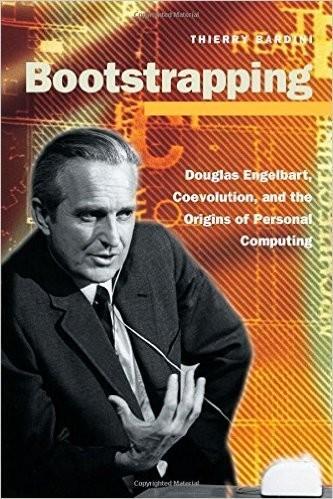
Bootstrapping: Douglas Engelbart, Coevolution, and the Origins of Personal Computing (Writing Science)
by
Thierry Bardini
Published 1 Dec 2000
Engelbart believed that the activity of the knowledge worker actually in- volves "core" processes that for the most part are not themselves highly spe- cialized: "a record of how this person used his time, even if his work was highly specialized, would show that specialized work . . . while vital to his ef- fectiveness, probably occupied a small fraction of his time and effort" (ibid., 10). If so, that meant knowledge workers didn't have to be isolated from each other, segregated by the specific demands of the software necessary to their individual tasks. Instead, they could use a common interface and be connected into a network that would link the user with other users. Envisioning the user as a knowledge worker and conceptualizing the knowledge worker in this par- ticular way allowed Engelbart to begin to see a way in which one central aspect of his crusade could be realized.
…
One way Engelbart sought to exert influence over "the human side" was by developing what he called "the augmented knowledge workshop," "the place in which knowledge workers do their work" (Engelbart, Watson, and Norton 1973, 9). This application of the bootstrapping principle was used between 1965 and 1968 to add another dimension to the ARC lab's conceptualization of the virtual user. Engelbart believed that the activity of the knowledge worker actually in- volves "core" processes that for the most part are not themselves highly spe- cialized: "a record of how this person used his time, even if his work was highly specialized, would show that specialized work . . . while vital to his ef- fectiveness, probably occupied a small fraction of his time and effort" (ibid., 10).
…
If you were will- Ing to put In these ten hours of effort, and also you had to be a little bIt adaptable. You had to be a computer person. (Kay 1992) Thus, the knowledge worker again became a "computer person," but this time it was not the sort of computer person who had undergone the transforma- tions of the bootstrapping enterprise within the community that had evolved within the ARC lab at SRI, but real computer users. What had seemed the most "natural" group of people to start augmenting now became the only group augmented: the knowledge worker became a generic programmer again. The growth of the number of potential users via the ARPANET quickly re- vealed what some considered to be technological flaws in the system: The communIcation, in our lab [ARC at SRI], was very high performance. . . a quarter second response was not at all unusual.

Age of the City: Why Our Future Will Be Won or Lost Together
by
Ian Goldin
and
Tom Lee-Devlin
Published 21 Jun 2023
Inequality has risen in most metropolitan areas in the United States since 1980, but it has risen fastest in large, thriving cities like New York, San Francisco and Chicago, where it is now much higher than the national average.25 Wages for high-skilled knowledge workers in these places have soared, but pay for the low-skilled service workers supporting them has languished, a gulf that is compounded by the rapidly rising cost of living in these cities. As knowledge workers have flocked to gentrifying inner cities in recent decades, these global metropolises have increasingly come to resemble ivory towers, with a highly concentrated core of prosperity served by a sprawling periphery of disadvantage.
…
In one global survey in 2021, a quarter of workers never wanted to go into the office again, while another quarter never wanted to work from home again; the remaining half preferred some kind of middle ground.6 With time we expect that the downsides of remote working – for employee experience and company performance – will lead many companies to increase the share of days that staff are expected to be present in the office. That will place a ceiling on how far away these workers can move. And many knowledge workers with the financial means to do so have chosen to continue living in urban centres despite a shorter commute no longer offering the same advantage. As argued in Chapter 4, the lifestyle of the inner city, with its cultural variety and ease of access to a wide range of services, is a major factor in the appeal of these neighbourhoods. Equally, cities have no cause for complacency. The exodus of knowledge workers from inner cities may well have peaked, but the transition to hybrid arrangements will still have significant implications for offices, public transport systems and municipal finances.
…
The result is that companies in many fast-growing industries want to be located in cities where they feel confident they can access the types of skills they require. This further reinforces the benefit to workers from locating in such areas, in a virtuous cycle of increasing talent density. A second reason for the increasing strength of agglomeration effects is the way in which knowledge workers in particular become more productive when located near to one another. Information may be more available than ever, but the evidence suggests that it still tends to flow largely through in-person networks, spurred on by casual encounters within and outside the workplace. Inventors filing for patents are twice as likely to cite patents from their own city than from other places, even after excluding those generated within the same company.25 The physical proximity of people in cities is particularly important when it comes to drawing inspiration and knowledge from diverse fields.

Insanely Great: The Life and Times of Macintosh, the Computer That Changed Everything
by
Steven Levy
Published 2 Feb 1994
In 1973, enchanted by the ideas of economist Peter Drucker, he coauthored a paper called "The Augmented Knowledge Workshop," which was based on the idea, formulated by Drucker, that information was destined to be the fulcrum of the economy. "By 1960," wrote Engelbart, "the largest single group [of Americans] was professional, managerial, and technical-that is knowledge workers. By 1975-1980 this group will embrace the majority of Americans." It was these knowledge workers who would sit in the cybercockpits of the Engelbart augmentation scheme: as he termed it, "the office of the future." Knowledge workers. The office of the future. These twO catch phrases would later be appropriated by the marketers charged with selling the Macintosh. But Engelbart's bosses at SRI weren't concerned with marketing his product.
…
''A computer for the rest of us." Now, the bulk of people-those who would drive the curve up to the mountain peak, and ring the curve-shaped bell-would be computer customers. These, he would say, echoing Doug Engelbarr's prediction of a decade before, were the knowledge workers-the target market for the Mac. "Our definition of knowledge worker is someone who sits behind a desk and plans to take information and crunch it with ideas," he'd say. Then he would mention the philosophical dream: "The philosophical dream is How can we do something that will improve people's lives?" Murray would pause and confide that, "You don't find that in any other computer company."
…
Poor Barbara Koalkin had to pry me away from the machine in order to give her canned spiel, which was sort of an overture before the opera, introducing themes I would hear developed with great intensity later on in the performance. I don't recall a word of it, really, but my notebook shows that I was dutifully jotting down key phrases, like "designed to be low-cost personal computer," "personal productivity tool for knowledge workers," and "we want everybody in the world using Mac software." Anyway, I was dazzled, a feeling that would only accelerate as the day went on. Each person I met was a young wizard bubbling with enthusiasm-I could almost feel electricity crackling as they told me their stones. Jerry Manock, the industrial designer who had literally molded the Apple II and now the Macintosh.
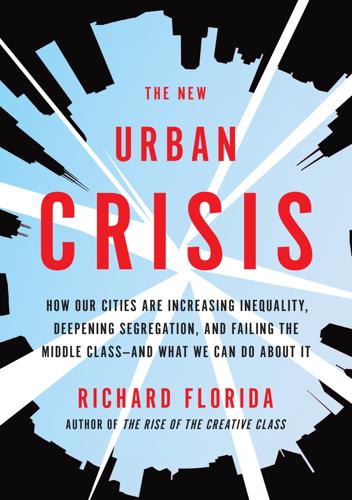
The New Urban Crisis: How Our Cities Are Increasing Inequality, Deepening Segregation, and Failing the Middle Class?and What We Can Do About It
by
Richard Florida
Published 9 May 2016
Boston had not offered Lycos any tax breaks or other bribes; in fact, the costs of doing business in Boston, from rents to salaries, were much higher than in Pittsburgh. Lycos was moving because the talent it needed was already in Boston. The key to urban success, I argued in my 2002 book, The Rise of the Creative Class, was to attract and retain talent, not just to draw in companies. The knowledge workers, techies, and artists and other cultural creatives who made up the creative class were locating in places that had lots of high-paying jobs—or a thick labor market; lots of other people to meet and date—what I called a thick mating market; and a vibrant quality of place, with great restaurants and cafés, a music scene, and lots of other things to do.2 By the turn of the twenty-first century, the ranks of the creative class had grown to some 40 million members, a third of the US workforce.
…
Both the conventional wisdom and economic research tell us that people do better economically in large, dense, knowledge-based cities where they earn higher wages and salaries. But when a colleague and I looked into how the members of each of the three different classes fared after paying for housing, we uncovered a startling and disturbing pattern: The advantaged knowledge workers, professionals, and media and cultural workers who made up the creative class were doing fine; their wages were not only higher in big, dense, high-tech metros, but they made more than enough to cover the costs of more expensive housing in these places. But the members of the two less advantaged classes—blue-collar workers and service workers—were sinking further behind; they actually ended up worse off in large, expensive cities and metro areas after paying for their housing.4 The implications were deeply disturbing to me.
…
In these places, mere gentrification has escalated into what some have called “plutocratization.”6 Some of their most vibrant, innovative urban neighborhoods are turning into deadened trophy districts, where the global super-rich park their money in high-end housing investments as opposed to places in which to live. It’s not just musicians, artists, and creatives who are being pushed out: growing numbers of economically advantaged knowledge workers are seeing their money eaten up by high housing prices in these cities, and they have started to fear that their own children will never be able to afford the price of entry in them. But it is the blue-collar and service workers, along with the poor and disadvantaged, who face the direst economic consequences.

Make Your Own Job: How the Entrepreneurial Work Ethic Exhausted America
by
Erik Baker
Published 13 Jan 2025
Even many entrepreneurship enthusiasts, like Peter Drucker, did not think there was anything wrong with this reality, at least initially: while a “steady supply of enterprising men” was needed atop American firms, Drucker wrote in 1950, there was no reason in theory why “efficient big-business bureaucrats” could not thrive in the ranks beneath them. In fact, most knowledge workers were precisely those efficient big-business bureaucrats who made the firm run beneath the entrepreneurial executive: “administrators” rather than “organization builders,” in the language that University of California president Clark Kerr and his collaborators liked to use in the 1950s. The vocation of the entrepreneurial leader, then, was in a sense to redeem the bureaucratic work experience to which the typical knowledge worker was relegated by the exigencies of modern, large-scale capitalism—to make their work subjectively what it could not be objectively.6 If the complaints of the counterculture and the student movement were any indication, however, this act of transubstantiation was easier said than done.
…
“I wanted GE to run more like . . . a company filled with self-confident entrepreneurs who would face reality every day.”37 As Welch implied, there was certainly room in the entrepreneurial theory of value for “intrapreneurs” as well as CEOs—for subordinate entrepreneurs further down the corporate ladder. But if the Pinchots saw their task as persuading executives in established corporations that they could allow all knowledge workers to experience a simulacrum of entrepreneurship, a decade later the restructurers preached that entrepreneurial knowledge workers formed a special value-creating elite within the firm that ought to be cultivated at the expense of the rest of the company’s workforce. “Those who embody critical core competencies should know that their careers are tracked and guided by corporate human resource professionals,” Prahalad and Hamel urged.
…
Anticipating Jobs by nearly two decades, the commission predicted a “new technology” that would “seek to make work more meaningful rather than merely more productive,” with “machines and automated processes” performing “the routine and mechanical work” so that “human resources” could be “released and available for new activities beyond those that are required for mere subsistence.”38 For other personal computing researchers working in the Valley at roughly the same time as Jobs—such as Douglas Engelbart, the driving force behind Stanford’s Augmentation Research Center (ARC), and Alan Kay, one of the leaders of the effort to develop a personal computer at the Xerox Palo Alto Research Center (PARC)—the muse of their hopes for personal computing was not just Brand but Peter Drucker, who had argued as early as the late 1960s that “the computer is a tool of liberation if used correctly.” Alan Kay would later remark, reportedly, that he envisioned the personal computer as the kind of tool that the entrepreneurial knowledge worker as described by Drucker would need to use.39 The most genuinely countercultural aspect of Jobs’s thinking was his conflation of the PC, as a putatively entrepreneurial product, and Apple, as a putatively entrepreneurial company. Jobs shared with Ralph Nader not only a penchant for hundred-hour work weeks and a dislike of furniture, but also a belief that the external mission and internal culture of an organization were inseparably entwined: the organization was either a force for enlightenment and entrepreneurship or it wasn’t.
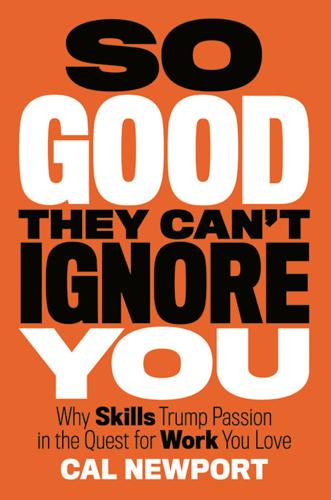
So Good They Can't Ignore You: Why Skills Trump Passion in the Quest for Work You Love
by
Cal Newport
Published 17 Sep 2012
Put another way, if you just show up and work hard, you’ll soon hit a performance plateau beyond which you fail to get any better. This is what happened to me with my guitar playing, to the chess players who stuck to tournament play, and to most knowledge workers who simply put in the hours: We all hit plateaus. When I first encountered the work of Ericsson and Charness, this insight startled me. It told me that in most types of work—that is, work that doesn’t have a clear training philosophy—most people are stuck. This generates an exciting implication. Let’s assume you’re a knowledge worker, which is a field without a clear training philosophy. If you can figure out how to integrate deliberate practice into your own life, you have the possibility of blowing past your peers in your value, as you’ll likely be alone in your dedication to systematically getting better.
…
To help these efforts I introduced the well-studied concept of deliberate practice, an approach to work where you deliberately stretch your abilities beyond where you’re comfortable and then receive ruthless feedback on your performance. Musicians, athletes, and chess players know all about deliberate practice. Knowledge workers, however, do not. This is great news for knowledge workers: If you can introduce this strategy into your working life you can vault past your peers in your acquisition of career capital. RULE #3 Turn Down a Promotion (Or, the Importance of Control) Chapter Eight The Dream-Job Elixir In which I argue that control over what you do, and how you do it, is one of the most powerful traits you can acquire when creating work you love.
…
This insight brought me into the world of performance science, where I encountered the concept of deliberate practice—a method for building skills by ruthlessly stretching yourself beyond where you’re comfortable. As I discovered, musicians, athletes, and chess players, among others, know all about deliberate practice, but knowledge workers do not. Most knowledge workers avoid the uncomfortable strain of deliberate practice like the plague, a reality emphasized by the typical cubicle dweller’s obsessive e-mail–checking habit—for what is this behavior if not an escape from work that’s more mentally demanding? As I researched these ideas, I became increasingly worried about the current state of my academic career.

The Long Boom: A Vision for the Coming Age of Prosperity
by
Peter Schwartz
,
Peter Leyden
and
Joel Hyatt
Published 18 Oct 2000
People have to understand how the way we work is being transformed, where this New Economy is heading, and how it will change our lives and the lives of our families. This is where the politics of the Long Boom conies in, A clear vision needs to be articulated by strong leaders to everyone, humanity at large, not just an elite of financial traders or knowledge workers. Everybody has to have a general understanding of the direction we're heading. That's the way through the anxiety and back onto the Long Boom. As if the anxiety over the turndown in the global economy weren't enough, there's the mounting anxiety over the state of our technology. As the new century approaches, the year 2000, or Y2K, problem looms large.
…
California tends to be the place to study this ideology because the people who embrace it tend to congregate in large numbers there. These people are the technologists and programmers and engineers who are building the new technologies in Silicon Valley. They are creators of new and old media based in Los Angeles. They are the entrepreneurs and knowledge workers of this New Economy. They are the business elite and global finance class chasing after the massive opportunities. They are the young people creating this new digital, wired culture. California attracts a lot of them—from all over the world. The draw of California has created the multicultural mix that has led to some of the key characteristics of the New American Ideology, such as its global mentality.
…
In that hypothetical town, everyone on the network benefits from the addition of every new member, and everyone will benefit most by having everyone wired. The same logic applies to the Internet of today. There's a strong incentive to get everyone into this emerging new network—not just the top quarter of the population, who fit the knowledge worker profile. Getting everyone on the Net is not just some philanthropic urge to be nice to all people. It makes good business sense. You want to sell your products over the Internet? The first step is getting every potential customer into that network to begin with. You want to streamlin costs by doing away with employee paperwork?
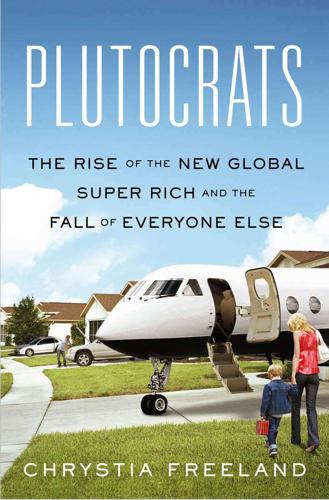
Plutocrats: The Rise of the New Global Super-Rich and the Fall of Everyone Else
by
Chrystia Freeland
Published 11 Oct 2012
But Drucker also, more than half a century ago, predicted the shift to what he dubbed a “knowledge economy” and, with it, the rise of the “knowledge worker.” Drucker made his name in America, but he was a product of the Viennese intellectual tradition—Joseph Schumpeter was a family friend and frequent guest during his boyhood—of looking for the big, underlying social and economic forces and trying to spot the moments when they changed. Accordingly, he saw the emerging knowledge worker as both the product and beneficiary of a profound shift in how capitalism operated. “In the knowledge society the employees—that is, knowledge workers—own the tools of production,” Drucker wrote in a 1994 essay in the Atlantic.
…
But that logic collapses in the knowledge economy: “Increasingly, the true investment in the knowledge society is not in machines and tools but in the knowledge of the knowledge worker. . . . The market researcher needs a computer. But increasingly this is the researcher’s own personal computer, and it goes along where he or she goes. . . . In the knowledge society the most probable assumption for organizations . . . is that they need knowledge workers far more than knowledge workers need them.” Here, then, is another way that some of the highly talented are catapulted into the super-elite: when it becomes possible for them to practice their profession independently.
…
But they still didn’t have the royal jelly: “They don’t have the killer instinct, they don’t want to fight, they won’t go for the jugular.” By way of evidence, he described a subordinate who had cried when he told her she had made a mistake. You can’t do that and win, he said. THREE SUPERSTARS A society in which knowledge workers dominate is under threat from a new class conflict: between the large minority of knowledge workers and the majority of people, who will make their living traditionally, either by manual work, whether skilled or unskilled, or by work in services, whether skilled or unskilled. —Peter Drucker It is probably a misfortune that . . . popular writers . . . have defended free enterprise on the ground that it regularly rewards the deserving, and it bodes ill for the future of the market order that this seems to have become the only defense of it which is understood by the general public. . . .
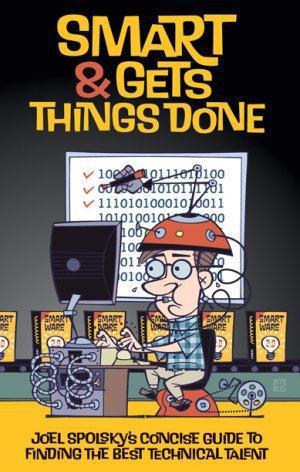
Smart and Gets Things Done: Joel Spolsky's Concise Guide to Finding the Best Technical Talent
by
Joel Spolsky
Published 1 Jun 2007
In either case, you should enforce the simple rule “no code without spec.” The Joel Test 163 8. Do Programmers Have Quiet Working Conditions? There are extensively documented productivity gains provided by giving knowledge workers space, quiet, and privacy. The classic software management book Peopleware3 documents these productivity benefits extensively. Here’s the trouble. We all know that knowledge workers work best by getting into “flow,” also known as being “in the zone,” where they are fully concentrated on their work and fully tuned out of their environment. They lose track of time and produce great stuff through absolute concentration.
…
All because the metrics in place just didn’t have a way to recognize different types of contributors. If it wasn’t bad enough that metrics don’t measure, they also screw up perfectly happy, productive teams. True, Some Developers Just Don’t Pull Their Weight Even though metrics simply don’t work with knowledge workers, it’s still true that there are great developers and decent developers and crappy developers. Interestingly, everybody pretty much knows who is who. You just can’t quite measure it. Fixing Suboptimal Teams 129 You still need to triage the team into three categories: 1. Great developer 2. Needs specific improvements 3.
…
If a coworker asks you a question, causing a oneminute interruption, but this knocks you out of the zone badly enough that it takes you half an hour to get productive again, your overall productivity is in serious trouble. If you’re in a noisy bullpen environment like the type that caffeinated dotcoms love to create, with marketing guys screaming on the phone next to programmers, your productivity will plunge as knowledge workers get interrupted time after time and never get into the zone. With programmers, it’s especially hard. Productivity depends on being able to juggle a lot of little details in short-term memory all at once. Any kind of interruption can cause these details to come crashing down. When you resume work, you can’t remember any of the details (like local variable names you were using, or where you were up to in implementing The Joel Test 165 that search algorithm) and you have to keep looking these things up, which slows you down a lot until you get back up to speed.
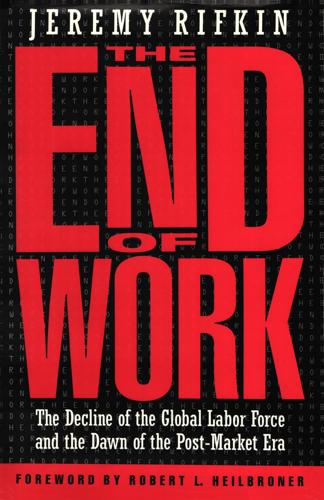
The End of Work
by
Jeremy Rifkin
Published 28 Dec 1994
Their ranks are made up largely of the new professionals, the highly trained symbolic analysts or knowledge workers who manage the new high-tech information economy. This small group, numbering fewer than 3.8 million individuals, earns as much as the entire bottom 51 percent of American wage earners, totaling more than 49.2 million. 40 In addition to the top 4 percent of American income earners who make up the elite of the knowledge sector, another 16 percent of the American workforce also consists mostly of knowledge workers. Altogether, the knowledge class, which represents 20 percent of the workforce, receives $1,755 billion a year in income, more than the other four fifths of the population combined.
…
A fair and equitable distribution of the productivity gains would require a shortening of the workweek around the world and a concerted effort by central governments to provide alternative employment in the third sector-the social economy-for those whose labor is no longer required in the marketplace. If, however, the dramatic productivity gains of the high-tech revolution are not shared, but rather used primarily to enhance corporate profit, to the exclusive benefit of stockholders, top corporate managers, and the emerging elite of high-tech knowledge workers, chances are that the growing gap between the haves and the have-nots will lead to social and political upheaval on a global scale. All around us today, we see the introduction of breathtaking new technologies capable of extraordinary feats. We have been led to believe that the marvels of modem technology would be our salvation.
…
Today, however, as all these sectors fall victim to rapid restructuring and automation, no "significant" new sector has developed to absorb the millions who are being displaced. The only new sector on the horizon is the knowledge sector, an elite group of industries and profeSSional disciplines responsible for ushering in the new high-tech automated economy of the future. The new professionals-the so-called symbolic analysts or knowledge workers-come from the fields of science, engineering, management, consultancy, teaching, marketing, media, and entertainment. While their numbers will continue to grow, they will remain small compared to the number of workers displaced by the new generation of "thinking machines." 36 THE TWO F ACE S 0 F TEe H N 0 LOG Y RETRAINING FOR WHAT?

The Power of Pull: How Small Moves, Smartly Made, Can Set Big Things in Motion
by
John Hagel Iii
and
John Seely Brown
Published 12 Apr 2010
As we will explore in a later chapter, these individuals, too, will have an increasing opportunity to become passionate about their work. Most jobs in Western corporations have been engineered (and we use this word advisedly) to become highly routinized, especially if they are not performed by “knowledge workers.” As we begin to realize that scalable efficiency cannot see us through a shift to near-constant disruption, we will begin to see that performance improvement by everyone counts, not just performance improvement for “knowledge workers.” We will begin to redefine all jobs, especially those performed at the “bottom of the institutional pyramid,” in ways that facilitate problem solving, experimentation, and tinkering.
…
The real opportunity is to rethink all aspects of the institution through the talent lens—what would the strategy, operations, and organization of the firm be like if talent development were the top priority of the firm? We’ve already talked about how institutional leaders have to focus on everyone in their organization—and not just the so-called knowledge workers. But let’s take it one step further, because there are yet more misunderstandings that arise on the topic of talent development, revealing some of the key assumptions that most executives bring to this topic. We have already noted in earlier chapters that Western executives tend to draw a firm line between “knowledge workers” and the rest of the workforce. If we are going to mobilize our entire workforce, we need to abandon this artificial distinction and recognize that everyone brings talent to the job that must be developed.
…
We will begin to redefine all jobs, especially those performed at the “bottom of the institutional pyramid,” in ways that facilitate problem solving, experimentation, and tinkering. This will foster more widespread performance improvement. Everyone, even the most unskilled worker, will be viewed as a critical problem-solver and knowledge-worker contributing to performance improvement. One need only walk through the assembly lines of a Toyota plant to see highly motivated workers who are passionate about their jobs because they can tangibly see how they are making a difference by tackling challenging work problems and contributing to greater value. Others will rightly point out that in recessionary times many people may lose their jobs no matter how passionate they might be.
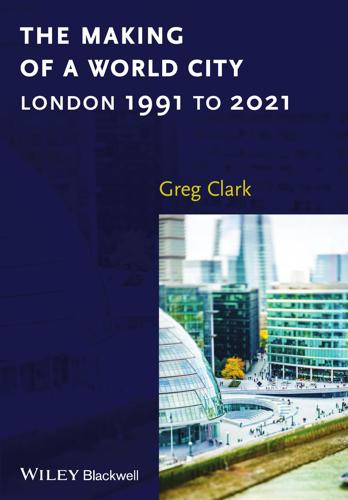
The Making of a World City: London 1991 to 2021
by
Greg Clark
Published 31 Dec 2014
In London: World City, rivals such as Tokyo, New York and Berlin were analysed for their initiatives in the soft economy and their active pursuit of the benefits of agglomeration (LPAC, 1991: 26–27). The report was, it turned out, prescient in identifying inter-urban competition around human capital and quality of life. Subsequently, however, more subtle understandings of the push-and-pull factors for mobile knowledge workers and international firms have prompted more refined and targeted attraction and retention strategies. Innovative solutions have been applied to the intricacy of negotiated and collaborative governance, both between tiers of government and between public and private sectors. London now has a much wider set of practices to learn from other cities, from Singapore to Seattle, from Seoul to São Paulo.
…
Partnerships with institutional investors, sovereign wealth funds, niche fund managers and syndicated investment clubs are under negotiation in cities everywhere. Finally, the new business cycle has brought into clarity the reality of demographic change that is profoundly shaping cities’ revenue capabilities and service delivery demands. As well as increased mobility, especially of younger knowledge workers and aspirational immigrants, cities are confronted with dramatically extended life expectancies often coupled with low birth rates. As a result, urban life is for the most part becoming more and more racially, socially and economically diverse. This produces greater heterogeneity in citizenry aspirations, and the need for world cities to provide distinctive services and representation to different population segments.
…
Key developments in the global system of cities in 2015 The composite of index results has indicated since at least 2011 that Singapore and Hong Kong form part of an expanded ‘big six’ of top-tier world cities. The pair, which possess distinct self-governing capacities, have continued to record exceptional results among executives, knowledge workers and tourists in 2013 and 2014, and have moved ahead of Paris and Tokyo as financial centres. Investment from Europe, North America and the Middle East still flows heavily into these two cities, not least because of their proximity to a rapidly expanding Asian middle class. Singapore is now a world-class research hub, and the only world city consistently positively evaluated for its commuting experience, health and security outcomes.

Peopleware: Productive Projects and Teams
by
Tom Demarco
and
Timothy Lister
Published 2 Jan 1987
Same with user support for another product. To the extent that knowledge workers are required to multitask, their managers need to take account of the flow requirements of the different tasks. Mixing flow and highly interruptive activities is a recipe for nothing but frustration. In particular, it assures that no reasonable telephone ethic (“Leave me alone. I’m working.”) can emerge. More important than any gimmick you introduce is a change in attitude. People must learn that it’s okay sometimes not to answer their phones, and their managers need to understand that as well. That’s the character of knowledge workers’ work: The quality of their time is important, not just its quantity.
…
There is probably no hope of changing the view that Wall Street takes of treating investment in people as an expense. But companies that play this game will suffer in the long run. The converse is also true: Companies that manage their investment sensibly will prosper in the long run. Companies of knowledge workers have to realize that it is their investment in human capital that matters most. The good ones already do. Part IV: Growing Productive Teams Think back over a particularly enjoyable work experience from your career. What was it that made the experience such a pleasure? The simplistic answer is, “Challenge.”
…
As a manager, you may have convinced yourself that you ought to be the principal coach to the team or teams that report to you. That certainly was a common model in the past, when high-tech bosses tended to be proven experts in the technologies their workers needed to master. Today, however, the typical team of knowledge workers has a mix of skills, only some of which the boss has mastered. The boss usually coaches only some of the team members. What of the others? We are increasingly convinced that the team members themselves provide most of the coaching. When you observe a well-knit team in action, you’ll see a basic hygienic act of peer-coaching that is going on all the time.
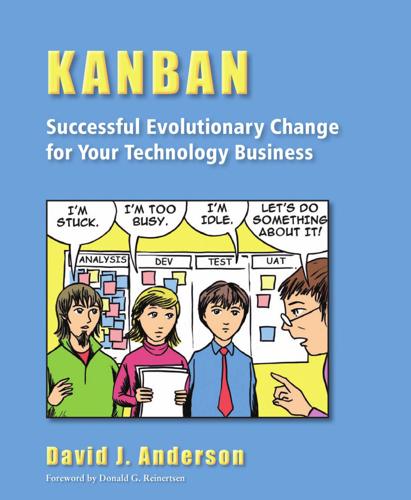
Kanban: Successful Evolutionary Change for Your Technology Business
by
David J. Anderson
Published 6 Apr 2010
Take actions to get to this level of maturity incrementally—follow the Recipe for Success. Attack Sources of Variability to Improve Predictability Both the effects of variability and how to reduce it within a process are advanced topics. Reducing variability in software development requires knowledge workers to change the way they work—to learn new techniques and to change their personal behavior. All of this is hard. It is therefore not for beginners or for immature organizations. Variability results in more work-in-progress and longer lead times. This is explained more fully in chapter 19. Variability creates a greater need for slack in non-bottleneck resources in order to cope with the ebb and flow of work as its effects manifest on the flow of work through the value stream.
…
For example, if we had ten people and anticipated two people per item, the WIP limit might be five plus a few more to smooth the impact of a blockage. Perhaps eight (five plus three) would be the right limit in such circumstances. There has been some research and empirical observation to suggest that two items in progress per knowledge worker is optimal. This result is often quoted to justify multi-tasking. However, I believe that this research tends to reflect the working reality in the organizations observed. There are a lot of impediments and reasons for work to become delayed. The research does not report the organizational maturity of the organizations studied, nor does it correlate the data with any of the external issues (assignable-cause variations, discussed in chapter 19) occurring.
…
Demonstrating the Value of Managers The operations review also shows the staff what managers do and how management can add value in their lives. It also helps to train the workforce to think like managers, and to understand when to make interventions and when to stand back and leave the team to self-organize and resolve its own issues. Operations review helps to develop respect between the individual knowledge workers and their managers and between different layers of management. Growing respect builds trust, encourages collaboration, and develops the social capital of the organization. Organizational Focus Fosters Kaizen While individual project retrospectives are always useful, an organization-wide ops review fosters institutionalization of changes, improvements, and processes.

Tomorrow's Capitalist: My Search for the Soul of Business
by
Alan Murray
Published 15 Dec 2022
It was a stakeholder crisis from the start, and it highlighted a host of stakeholder issues. The pandemic put workers at risk, as they were forced to address the threat of being exposed to the virus in the workplace. And it quickly became clear the pandemic would widen the rifts that had plagued Western society in recent years—between knowledge workers and manual workers, between well-educated and less well-educated, between top-tier cities and the rest. Faced with that new reality, CEOs became even more convinced that it was time for business to step forward and play a greater role in healing society’s divides. As Emmanuel Faber, CEO of Danone, told me, “Everything we have seen during the last several months suggests companies will have even more stakeholders than before, with government stepping in, health authorities stepping in, and so on.
…
But plentiful labor is not the same as plentiful talent, and the pandemic seemed to be leading an increasing number of talent-forward companies to take an “employees first” approach. Indeed, as the economy bounced back from COVID in 2021, it became clear that there was an unprecedented battle for talent, giving knowledge workers even more power in the economic debates to come. > Demands for systemic change also intensified. The pandemic exposed flaws in business’s approach to global markets, deepening the divisions within countries and between them, and threatening supply chains. Geopolitical tension between the US and China also challenged the globalist model.
…
Most of the CEOs I talked to believed that, as in the past, technology would create new jobs even as it eliminated old ones. But they weren’t at all convinced that we had the systems in place to prepare the workforce for these new jobs at a fast enough pace. Then the pandemic hit, dealing its hardest blow to those who weren’t knowledge workers—those who worked in factories, or restaurants and retail stores, or in health care or public service, the very people who were most at risk of being left behind by technology. They didn’t have the option of simply taking their work home. Many were furloughed or lost their jobs altogether. Others dropped out of the workforce to take care of children who were not in school, or elderly parents who were most at risk of contracting the disease.
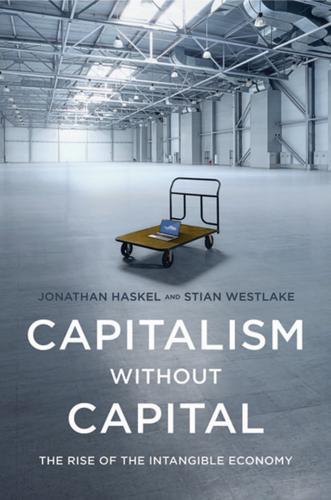
Capitalism Without Capital: The Rise of the Intangible Economy
by
Jonathan Haskel
and
Stian Westlake
Published 7 Nov 2017
Drop into a coffee shop in any of the world’s major cities, and you will see peripatetic knowledge workers of the type that Handy described in the early 1990s. Look at the way people talk about the world’s most admired businesses (“What Would Google Do?”), and you will see praise for the kind of knowledge-intensive, collaborative, networked business innovation that would not have seemed out of place in 1990s California or Japan. But some things have turned out somewhat differently, either because they buck the trend of knowledge-intensive, modular businesses and the nomadic, entrepreneurial knowledge workers, or simply because they were less obvious back in 1999.
…
Modern economists, displaying an admirable flair for taking something exciting and giving it a boring name, called this trend “skills-biased technical change.” Labor market economists, particularly Martin Goos, Alan Manning, and David Autor, have suggested a twist on this story that computers are especially good at replacing routine tasks. The twist is that computers don’t replace high-paid knowledge workers, but they are not necessarily replacing the low-paid either. The reason is that many currently low-paid tasks are distinctly nonroutine: waiting on a table, cleaning a bath, or looking after the elderly. Rather, the routine tasks that computers are good at tend to be middle-income jobs, and so they “hollow out” the labor market by replacing middle-income workers (Goos and Manning 2007; Autor 2013).
…
Charles Handy’s 1994 book The Future of Work forecasted, presciently, a future of portfolio jobs and careers for the well-educated and precarious subcontracting for others. Charles Leadbeater’s Living on Thin Air, published at the height of the dot-com bubble, begins with a portrait of the author as a portfolio knowledge worker and then identifies eight characteristics that successful new economy companies would have: they would be cellular, self-managing, entrepreneurial, and integrative; they would offer their staff ownership stakes; and they would need deep reservoirs of knowledge, public legitimacy, and collaborative leadership.

Most Likely to Succeed: Preparing Our Kids for the Innovation Era
by
Tony Wagner
and
Ted Dintersmith
Published 17 Aug 2015
Midway through the last century, our industrial base began to contract, and low-wage routine jobs moved offshore. As growth in manufacturing jobs stalled, millions of new white-collar jobs for “knowledge workers” (a term coined by Peter Drucker in 1959) were created, fueling the next phase of U.S. economic growth and creating a robust middle class. The economic landscape was dominated by large organizations hungry for mid-level knowledge workers to produce, refine, and manage information. To keep pace with these changes, Americans put increasing priority on education, largely by extending the number of years students spent in school.
…
The number of high school and college graduates soared. With some tweaks (such as including a college prep track in public high schools), the core of the Prussian-American education model—the transfer of basic literacy and numeracy skills and content knowledge from teachers to students—remained effective in preparing students for knowledge-worker jobs. Our education system and economy maintained their productive alliance. As we moved into the 1980s, a handful of people began voicing concerns about the state of education in the United States. They cited data questioning the international competitiveness of our students, reflected in lackluster performance on standardized tests.
…
What matters most in our increasingly innovation-driven economy is not what you know, but what you can do with what you know. The skills needed in our vastly complicated world, whether to earn a decent living or to be an active and informed citizen, are radically different from those required historically. Quite simply, the world has changed, and our schools remain stuck in time. “Knowledge workers” have become obsolete. What the world demands today are “smart creatives,” the term that Eric Schmidt and Jonathan Rosenberg use to describe the kind of people Google needs to hire in their book How Google Works. In our efforts to “fix” education, we’ve taken a course of action that extirpates the creative spirit and confidence from our youth while drilling them on frivolous things, like memorizing the definition of extirpate for the SAT verbal exam.
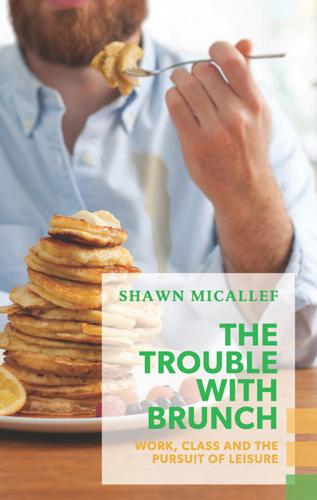
The Trouble With Brunch: Work, Class and the Pursuit of Leisure
by
Shawn Micallef
Published 10 Jun 2014
Many of us work from home, or from actual cafés, freelance vagabonds who move from one rickety table to the next, renting the space with our coffee purchases, getting more wired as the day goes on. In January 2014, the Guardian reported that the first British branch of the Russian chain Ziferblat opened in Islington, a London neighbourhood well-known for its clusters of peripatetic knowledge workers. What makes Ziferblat (clock face in Russian) different is that it charges five pence per minute, and patrons get free snacks and coffee, and can make their own food in the kitchen. It’s essentially like renting an office on a micro, minute-by-minute basis. As permanent employment has slowly evaporated in favour of temporary and contract labour, many of us find ourselves with multiple jobs, sometimes spread over several different fields.
…
The trouble with brunch is that it could be so much more, and a closer look at brunch itself reveals its potential. The brunching class, if it embraced a little Veblen and Florida, and took a critical look at how it spends its time, and how others around it do, a collective identity across heretofore loosely related kinds of knowledge workers could be formed. What’s more, that the brunching class exists in places with radically different economic circumstances demonstrates it’s a class consciousness that could be global in scope. The Transnational Buenos Aires Brunch It was nearly two o’clock on a Sunday afternoon and we were walking the near-deserted streets of Buenos Aires looking for a very particular brunch spot.
…
A related reshaping of the tectonic plates of class are those knowledge- and creative-class workers who don’t identify with the traditional working class, even if their pay and lack of job security is commensurate with older forms of working-class life (Dickens’ famous Bob Cratchit, though a working-class icon of the early industrial revolution, was essentially a knowledge worker on a contract job with no security, no benefits and poor pay). Taste and sensibility get in the way of seeing the commonalities among the creative and working classes. Work is work, but even if a creative earns less money than a unionized worker, class becomes a kind of ideology that limits the perception of different kinds of work, failing to allow for cross-class identity, but also limits the conversation around a development like Walmart.

Futureproof: 9 Rules for Humans in the Age of Automation
by
Kevin Roose
Published 9 Mar 2021
“Nobody can do what we do.” * * * — Part of what’s confusing people about this wave of AI and automation is that the danger zone has expanded. For decades, most automation was focused on repetitive manual tasks, which were concentrated in blue-collar manufacturing jobs, and white-collar knowledge workers largely considered themselves safe. But today, many of the most promising applications of AI and machine learning are in fields like accounting, law, finance, and medicine, which involve lots of tasks like planning, prediction, and process optimization. As it turns out, these are exactly the kinds of things AI does well.
…
Some of the most automation-prone jobs, the study found, were in highly paid occupations in major metropolitan areas like San Jose, Seattle, and Salt Lake City. This is radically different from the way we normally think about AI and automation risk. And it should be a wake-up call to hyper-educated knowledge workers who have historically assumed that automation was someone else’s problem. Wall Street traders learned a hard lesson about their own replaceability many years ago, when high-frequency trading algorithms and computerized stock exchanges wiped out thousands of jobs for human traders on the exchange floors.
…
The industrial economies of the nineteenth and twentieth centuries required workers who could perform repetitive tasks at a high, consistent level, and individuality, in a factory setting, could be a liability. (Henry Ford’s famous supposed lament about his workers—“Why is it every time I ask for a pair of hands, they come with a brain attached?”—echoed the feelings of many old-economy barons.) White-collar knowledge workers performed cognitive labor instead of manual labor, but they, too, often benefited from suppressing their humanity in the quest for peak performance. But as I started reporting more on AI and automation, the message I heard from experts about the modern economy was, essentially, the exact opposite.

Brave New World of Work
by
Ulrich Beck
Published 15 Jan 2000
The leading social groups of the knowledge society will be ‘knowledge workers’ – knowledge executives who know how to allocate knowledge to productive use; knowledge professionals; knowledge employees. Practically all these knowledge people will be employed in organizations. Yet unlike the employees under capitalism they own both the ‘means of production’ and the ‘tools of production’ – the former through their pension funds which are rapidly emerging in all developed countries as the only real owners, the latter because knowledge workers own their knowledge and can take it with them wherever they go.
…
Drucker, Scott Lash/John Urry and Manuel Castells – will fundamentally change not only the world of work but the very concept of work itself. The most prominent feature of this new society will be the centrality of knowledge as an economic resource. Knowledge, not work, will become the source of social wealth; and ‘knowledge workers’ who have the capacity to translate specialized knowledge into profit-producing innovations (products, technological and organizational innovations, etc.) will become the privileged group in society. The basic economic resource – the ‘means of production’ to use the economist's term – is no longer capital, nor natural resources (the economist's ‘land’), nor ‘labour’.
…
Yet unlike the employees under capitalism they own both the ‘means of production’ and the ‘tools of production’ – the former through their pension funds which are rapidly emerging in all developed countries as the only real owners, the latter because knowledge workers own their knowledge and can take it with them wherever they go. The economic challenge of the post-capitalist society will therefore be the productivity of knowledge work and knowledge worker.20 Many have objected that there is nothing new in this line of argument, since knowledge already played a central role in the industry and services era, perhaps in all epochs of work. Three answers can nevertheless be extracted from the different accounts. Science-dependent reflexive productivity. The outstanding feature of knowledge work is the self-application of knowledge to knowledge as the main source of productivity. There is a circle between science-based technological innovations and the application of these technologies to produce new science-based generations of technologies and products, so that the productivity spiral of the knowledge society is not only kept going but accelerated.

Them And Us: Politics, Greed And Inequality - Why We Need A Fair Society
by
Will Hutton
Published 30 Sep 2010
Another reason has been the rise of the knowledge economy and the accompanying decline of the traditional manufacturing and service sectors, which has radically changed the stratification of occupations and attitudes.29 The old class-based politics in which Labour had its roots in the unionised skilled and unskilled working class while the Conservatives had their roots in the professions, middle class and aspirational middle classes is decaying. The Tories cannot rely on knowledge workers to support them automatically. Indeed, it seems that knowledge workers are more liberal on most social issues and are willing to tolerate government action if they feel it might work. Equally, though, Labour cannot rely on the knowledge workers’ support, either. They tend to be more individualistic, suspicious of collectivism in the form of trade unions and resent micro-management by their employers and the state.
…
Another 420,000 have pre-tax incomes of between £100,000 and £350,000. Nearly all of them are male, white and live in the South East.10 There is a growing class of ‘knowledge workers’ who already constitute more than two-fifths of the working population and reflect the fact that the dynamic parts of the knowledge economy – high-tech manufacturing, the creative industries, health, business services, education and ICT – need well-qualified and skilled people. But below them are ten million adults who earn less than £15,000 a year. Few are knowledge workers, and their chance of self-improvement is minimal. Two million children live in low-income working families.
…
In the private sector in particular trade unions have become weaker, partly because of labour market legislation requiring them to ballot workers over strike action and outlawing secondary picketing, but also because of deeper, underlying changes. Knowledge workers in a more knowledge-based economy feel more confident about their capacity to manage their careers proactively and individually. They have skills that employers need, and they have no desire to negotiate their pay and conditions collectively. Consequently, trade union membership in the knowledge-based private sector has plummeted. Equally, knowledge workers are more keenly aware of new workplace realities. Production is less for mass markets and more customised, with much closer relationships with clients and consumers.12 Today’s customers embed their wishes in the production process through service-level agreements, tight contract specifications, default clauses, key performance indicators and so on.

Cataloging the World: Paul Otlet and the Birth of the Information Age
by
Alex Wright
Published 6 Jun 2014
“Our age has turned literature into a trade.”14 Still, Otlet held out hope for what he called the “disinterested task” of the writer, ultimately envisioning something akin to a gift economy of intellectual work (a notion that has attracted considerable currency among contemporary Internet pundits). He hoped— with perhaps a characteristic surfeit of optimism—that enlightened knowledge workers would one day see the benefits of embracing the monographic principle in their own work, using index cards for note taking, and making their finished work more accessible by breaking 231 C ATA L O G I N G T H E WO R L D it into index-able chunks of information that could move more fluidly through the global knowledge network. Still, he recognized that knowledge workers needed to be paid, at least in the here and now. In considering the financial implications of his scheme, Otlet saw a special role for bookstores, given their role as the primary gateways to knowledge for many readers (public libraries were far less common during his era).
…
Highly precise classification, coupled with the ability to “zoom out” on any subject by telescoping back through a series of numbers and expressions, allowed for a level of detail that would, in theory, allow the system to penetrate deep into the granular components of a book or article. In practical terms, Otlet initially envisioned this as a physical volume that would consist of loose-leaf pages, constantly updated by expert authors collecting and extrapolating information from a wide range of primary sources. A federation of knowledge workers around the globe would develop expertise in particular domains and assume responsibility, acting as institutional gatekeepers to knowledge produced within each area. These experts would evaluate each newly published document, assess its content to determine whatever new facts might be contained inside, then transcribe that data onto an index card and assign a code drawn from the Universal Decimal Classification.
…
Drawing on a central repository modeled on the Universal Bibliography, Ostwald and his partners hoped to produce collections of cards that would provide a comprehensive overview of available knowledge on any specific topic. To accomplish that, the Bridge would need to do more than build a large-scale catalog; it would also have to assemble the scholars to work on it. To that end, he envisioned creating a universal directory of scholars, “containing the addresses of all living knowledge workers,” along with pointers to the particular kinds of knowledge those individuals had produced. It would act as a contemporary social network in which both people and documents would serve as nodal points.3 Like Otlet, Ostwald also proposed establishing a transnational organization to coordinate all this.

Humans Are Underrated: What High Achievers Know That Brilliant Machines Never Will
by
Geoff Colvin
Published 3 Aug 2015
The next step: “This de-skilling process, in turn, results in high-skilled workers pushing low-skilled workers even further down the occupational ladder and, to some degree, out of the labor force altogether.” That finding not only makes intuitive sense, it also helps explain America’s unusually low overall employment rate and the stagnation of wages. FROM KNOWLEDGE WORKERS TO RELATIONSHIP WORKERS It sounds as if smart, highly educated people will be scorned in the coming economy—but that is not necessarily the case. To see why not, consider again the situation of lawyers, whose work is increasingly being taken over by infotech. Average lawyers “face a bleak future,” believes Professor McGinnis of Northwestern.
…
As infotech continues its advance into higher skills, value will continue to move elsewhere. Engineers will stay in demand, it’s safe to say, but tomorrow’s most valuable engineers will not be geniuses in cubicles; rather, they’ll be those who can build relationships, brainstorm, collaborate, and lead. Peter Drucker coined the term “knowledge worker” in the late 1950s to describe the most valuable workers as economies became increasingly information based. We can see that the term is no longer quite right. More people than ever will be working with knowledge, but knowledge won’t be the source of their greatest value. We need a new term: The most valuable people are increasingly relationship workers.
…
It made sense that the groups with the best social skills would be most successful because what the “socially intelligent participants in our collective intelligence experiment may have been doing was enabling better idea flow by guiding the group toward briefer presentations of more ideas, encouraging responses, and ensuring that everyone contributed equally.” The operational value of social skills was explained. The mystery of how those skills make groups more effective was solved. The people who made teams most effective may or may not have been the best knowledge workers. They were definitely the best relationship workers. PUTTING THE DISCOVERIES TO WORK Human interaction is so powerful that increasing it just a little improves group performance a lot. For example, Pentland and his lab investigated a huge Bank of America call center where the emphasis was on productivity; reducing the average call handle time at that one call center by just 5 percent would save the company $1 million a year.
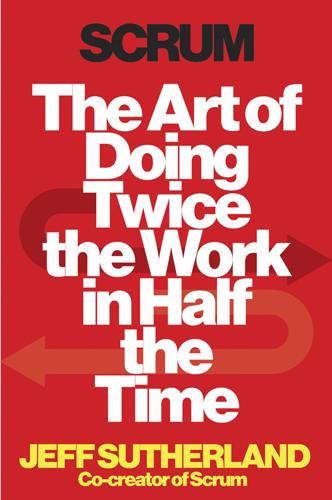
Scrum: The Art of Doing Twice the Work in Half the Time
by
Jeff Sutherland
and
Jj Sutherland
Published 29 Sep 2014
The Foundation focuses on helping lift the world’s poor out of poverty, not by handouts but by harnessing the underappreciated strengths of the impoverished. In Uganda they decided to try to do just that, by giving the poor the ability to share and build knowledge. To do it, they recruited some 1,200 people in poor, rural areas—people they called “Community Knowledge Workers” (CKWs). The Foundation had already developed mobile applications for microfinance and payments, and they decided to give these knowledge workers not just banking information, but information they could use in their daily lives, which, in Uganda’s case, meant it would be applied to farming. The Foundation provided access to the best agricultural practices by giving the workers smartphones and conveying the information that way.
…
Not only will that “good” arrive sooner, it will also be measurable. Scrum gives people the ability to measure progress easily. At the Grameen Foundation they have what they call the “Progress Out of Poverty Index.” It measures just how effective each program is. They can poll and see exactly the impact those Community Knowledge Workers with cell phones in rural villages are having. They can experiment with different ways of doing things. They can help people innovate their way out of poverty. For me, it’s amazing to see Scrum returning to its roots. When I first started Scrum, I was inspired by the Grameen Bank and other microfinance institutions and how they helped teams of poor people work together to leverage themselves out of poverty.
…
Ashram College assholes, 5.1, 5.2, 7.1 Association for Computing Machinery AT&T ATMs (Automatic Teller Machines) autonomy, 2.1, 3.1, 3.2, 3.3, 7.1 avionics Backlog, 2.1, 4.1, 6.1, 8.1, 8.2, 8.3, 8.4, 8.5, app.1 priorities and, 8.1, 8.2, 8.3 and product vision Bailar, John bandwagon effect, 6.1, 6.2, 6.3 Bangladesh banks, financial crisis and, 9.1, 9.2 barriers Barton, Brent, 6.1, 6.2 Baxter robot Bell, Steve Bell Labs, 2.1, 4.1 BellSouth Ben-Shahar, Tal, 7.1, 7.2 Big Picture Bikhchandani, Sushil blame, in teams, 3.1, 3.2 BMW Booz Allen Hamilton, Katzenbach Center at Borland Software Corporation Boston, Mass., 1.1, 3.1, 3.2 Boston Celtics Bowens, Maneka Boyd, John, 8.1, 8.2 brain mapping, multitasking and Brooks, Fred Brooks, Rodney, 2.1, 9.1 Brooks’s Law Brown, Rachel bureaucracy, 9.1, 9.2 Burndown Chart, 8.1, 9.1, 9.2, app.1 cabals Cairo call center, Zappos cell phones, 5.1, 9.1 driving and, 5.1, 5.2 Central Intelligence Agency (CIA), 3.1, 6.1 Challenger disaster, 3.1, 3.2 Change Control Boards, 8.1, 9.1 Change for Free change orders Change or Die Chicago Tribune, churches, Scrum at Cohn, Mike Cold War collaboration, 7.1, 7.2 Colorado, Sunshine laws in Colorado, University of, Medical School communication saturation, 4.1, 4.2, 8.1 Community Knowledge Workers (CKWs) complacency, dangers of complex adaptive systems, 2.1, 2.2 Cone of Uncertainty, 119 “Constant Error in Psychological Ratings, A” (Thorndike) context switching, loss to continuous improvement Happiness Metric and happy bubbles and, 7.1 contracts Change for Free in government Coomer, Greg Copenhagen Coplien, Jim Coram, Robert corporate culture change in cost overruns Cowan, Nelson cross-functionality, 2.1, 3.1, 3.2, 3.3, 3.4, 7.1, 8.1 Crozier, William customer-responsive models customers: external vs. internal wants of cynicism Daily Stand-Ups (Daily Scrum), 3.1, 4.1, 4.2, 4.3, 7.1, 7.2, 8.1, 8.2, app.1 Dalkey, Norman D-day DeAngelo, Michael Decide, 2.1, 2.2, 2.3, 8.1, 185 decision loop decision making Product Owner and self-control and Declaration of Independence Delivering Happiness (Hsieh), Delphi method, 6.1, 6.2 Deming, W.
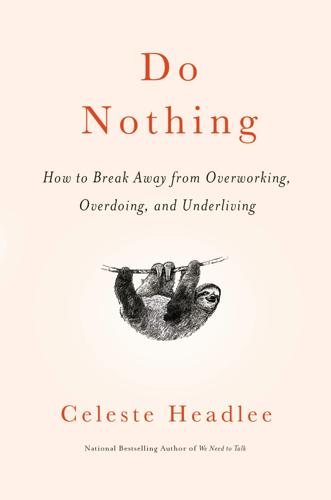
Do Nothing: How to Break Away From Overworking, Overdoing, and Underliving
by
Celeste Headlee
Published 10 Mar 2020
We have data on this going back to the 1800s—at the time when unions forced employers to cut hours, factory owners were surprised to find that productivity increased while accidents decreased. Overwork was counterproductive in the days of the sweatshop, and research shows it still is, even in the age of the knowledge worker. This isn’t just about working hours, of course. It’s no surprise that employers will try to get as many hours as they can from their workers and employees will often put in extra time voluntarily in order to earn promotions or raises. That’s understandable. But we are where we are now because of what happened after the victory over working hours.
…
Northcote Parkinson, for whom the law is named, “is shown in the proverbial phrase ‘It is the busiest man who has time to spare.’ ” Perhaps the reason long hours are unhelpful is that human brains are not designed to put in excessive hours of uninterrupted work. That was true for the employees on Ford’s assembly line and it’s doubly so for the knowledge workers of today. In 1951, two men at the Illinois Institute of Technology kept track of nearly two hundred of their colleagues in the scientific and technical fields. They found that those who put in excessive hours were the least productive of all. After people passed a couple dozen hours in the lab, they saw decreasing returns on their labor.
…
Metrics can be useful and even enlightening, but if they are overused or even employed to measure things that are unmeasurable like innovation, metrics become destructive. Trying to meet numerical goals is also not particularly inspiring to the human mind, and so metrics don’t encourage creative thought. Surveys reveal that 30 percent of knowledge workers claim they do absolutely no thinking while they’re at work and nearly 60 percent say they do less than half an hour of thinking. It’s fair to say that’s an almost complete lack of mental stimulation. Proving your worth by logging an arbitrary number of hours is more than silly—it’s a practice that is killing productivity and, more seriously, endangering your health.

Retrofitting Suburbia, Updated Edition: Urban Design Solutions for Redesigning Suburbs
by
Ellen Dunham-Jones
and
June Williamson
Published 23 Mar 2011
Developers and municipalities are converting outdated suburban office and industrial parks into walkable, mixed-use business districts that reflect both the changing nature of work in today’s postindustrial economy and the habitat preferences of its leading workers, the “creative class.” Instead of physically, functionally, and stylistically separating the place of work from that of the home in strictly defined single-use areas, today’s retrofits are designed to offer the wired, overworked knowledge worker the multitasking convenience of interconnected mixed use as well as its creativity-enhancing spaces for social networking and recreation. The incorporation of relatively dense urban housing, public spaces, and abundant retail and restaurants into suburban areas formerly limited solely to commercial or industrial activity deliberately blurs the physical boundaries between living, working, and playing.
…
In a report on the Metro Plan commissioned by BellSouth, local newspaper editorial board member David Goldberg wrote, “The temptation to go farther north was tempered by two factors: the tenuousness of highway capacity and lack of rail service much beyond I-295, and the knowledge that many of the young, highly-skilled knowledge workers they hoped to attract from around the country preferred an urban environment to suburban living.”14 After considerable NIMBY opposition, including several lawsuits from neighbors over parking and tree removal, the three business centers in Lenox Park, Midtown, and Lindbergh City Center were completed in 2004.
…
Florida argues that the creative class constitutes a distinct segment of society: the one-third of American workers whose jobs require them to creatively solve problems and advance new thinking. In his words, the members of the creative class are paid not to execute a plan, but to tune it. However, given current and projected labor shortages of highly educated, digitally savvy “knowledge workers,” the most sought-after members of this creative class can afford to be choosy about where they want to work. The crux of Florida’s thesis is that the members of this class are increasingly selecting the area in which they want to live before finding a job—reversing the pattern of many of their parents and grandparents.
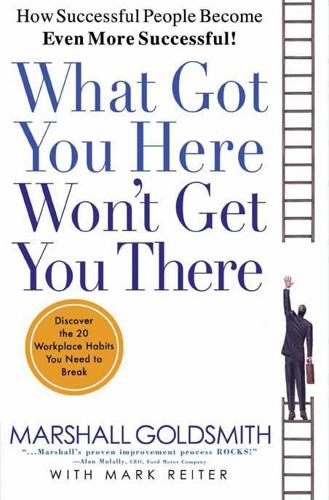
What Got You Here Won't Get You There: How Successful People Become Even More Successful
by
Marshall Goldsmith
and
Mark Reiter
Published 9 Jan 2007
I can always get someone else. In the past, the key to wealth may have been control of land, materials, plants, and tools. In that environment, the worker needed the company more than the company needed the worker. Today the key to wealth is knowledge. As a result, the company needs the knowledge worker far more than the knowledge worker needs them. To make matters worse, the workers know this! They see themselves as fungible assets—no longer at the mercy of company whim—rather than dispensable commodities. The difference is subtle but real: As a fungible asset, the free agent sees himself as always getting a better job somewhere else; if he were merely a commodity, anyone could replace him (which, we know, is not true anymore).
…
Checking what you say doesn’t automatically tell you what other people think of you. You may be overly negative, but your colleagues may be capable of living with it. But seeing how people relate to you provides proof that your flaw is serious, that it matters to people, that it’s a problem. Habit #9 Withholding information In the age of knowledge workers, the cliché that information is power is truer than ever—which makes withholding information even more extreme and irritating. Intentionally withholding information is the opposite of adding value. We are deleting value. Yet it has the same purpose: To gain power. It’s the same old need to win, only more devious.
…
But that doesn’t mean that beating the writer with the stick of a salary deduction would appeal to him either. 2. I know what they know. The days when managers know how to do every job in the company better than anyone else are over. The reason Peter Drucker said that the manager of the future will know how to ask rather than how to tell is because Drucker understood that knowledge workers would know more than any manager does. Well, the future is here with a vengeance. And smart managers need to shed the overconfident bias that they know as much as their employees know in specific areas. It’s a blind spot that diminishes their employees’ abilities and enthusiasm, and ultimately shrinks the boss’s stature. 3.

The Economics of Belonging: A Radical Plan to Win Back the Left Behind and Achieve Prosperity for All
by
Martin Sandbu
Published 15 Jun 2020
The UK think tank the Centre for Cities argues, based on successes in the Netherlands and Germany, that making a region thrive depends on increasing the density of its cities to deepen the available pool of knowledge workers available and “make it easier for people and organisations to share information and come up with new ideas.”33 Fourth, a necessary ingredient for a critical mass of knowledge workers is a critical mass of knowledge-intensive jobs. Governments can (in many places, if not everywhere) provide that critical mass by supporting research environments of a certain size. These could be highly research-intensive private institutions, but more obviously they could be research universities (as opposed to educational institutions focused only on teaching), as the economic blogger Noah Smith has strongly advocated as a means of regional regeneration in the United States.34 The evidence supports such calls: research universities create striking economic benefits for the regions they are situated in by increasing the share of high-skilled workers who increase the productivity of local businesses.35 Fifth, and perhaps counterintuitively, aim to globalise the left-behind places.
…
The second political difficulty is that with divergence in terms of economic success came divergence in the real material interests of groups that were rapidly growing apart. That made traditional electoral coalitions harder to straddle. This has been a particularly acute problem for centre-left parties, which have struggled to stitch together policy programmes that appeal to both the liberal knowledge workers in cities and what remains of the more traditional working class. But in many European countries, the traditional centre-right has also struggled in a party landscape that continues to fragment. One might think that seeing a once-powerful voter coalition fragment would make a party that used to rely on it all the more alert to the underlying problem.
…
See also United Kingdom Bulgaria, 219–20 business extension services, 205 Canada, 185, 223 capital: financial, 200–201; human, 199–200; physical, 200; taxation of, 170, 175–83 capital regions, 189, 191–92 carbon tax, 183–87 carbon taxes, 224 car washes, 96–98, 110 Case, Anne, 194 central bank policies, 63, 66–67, 89, 106, 133–34, 138–39, 143–44, 146, 163–66 Centre for Cities, 206–7 centrist politics: liberal order failed by, 229–33; programme of economics of belonging for, 233–39 China: as alternative to Western social order, 6; economic policies of, 6, 241n1; and globalisation, 72–73, 75; income growth in, 20, 21; manufacturing in, 25, 75; as shock to social market economy, 9, 77–78, 81, 249n8 cities: economic growth in, 29–31; income inequalities involving, 190; knowledge workers in, 29–30; role of, in new economies, 29–31; wealth concentration in, 153–54 climate change, 183–84, 223, 237 Clinton, Bill, 117 Clinton, Hillary, 33, 45 coal mining, 126 Cold War, 6 collective bargaining, 52, 54, 56–58, 61, 101, 103, 110, 121–23 communism, collapse of, 211, 231 community banks, 206, 268n25 comparative advantage, 74 competition, market, 5, 30, 112–13, 127–30 Contract with America, 40 corporate taxes, 178–83, 187, 218–19, 264n18 credit cycle, 160–62 credit financing, 155–60 cross-border supply chains, 74–75 cultural values: conflicts of, 15–16; economic factors vs., as driver of voter behaviour, 15–16, 37–49, 230–31; economic grievance expressed in, 48; economic inequality as influence on, 31; nationalism and, 14–15, 38; political significance of, 15–16, 37, 41–42, 47–49; populism and, 15, 38, 42–43; populist vs. elite, 14–15 deaths of despair, 36, 194 Deaton, Angus, 194 debt deflation, 156 debt financing, 155–60 debt restructuring, 159–60, 166 deindustrialisation, 29, 56–62 DeLong, Bradford, 145 demand management, 106, 132–33, 138–44, 146–47, 151, 216–17 Denmark: economic change as trigger for populism in, 42; education policy in, 108; egalitarianism and prosperity in, 99; employment in, 110; job mobility in, 107–8; job training programmes in, 108 digital revolution, market abuse facilitated by, 30, 113, 128–30 Dustmann, Christian, 47 eastern Europe, 191–92 Eatwell, Roger, 38 eBay, 69 economic change, 17–36; causes of, 18, 21; community-level effects of, 9–10, 29–31, 45–47, 49; cultural values elicited by, 48; cultural values vs., as driver of voter behaviour, 15–16, 37–49; gender as factor in, 33–34; government response to, 9, 11–13, 21, 51, 54–70; grievances about, 8, 18, 35–36, 48; harms suffered by the vulnerable in, 9, 35, 61–62, 68, 135, 137–38, 141; illiberalism linked to, 8, 15, 36, 38–49, 39; manufacturing sector and, 22–26; nationalism linked to, 8; populism linked to, 21, 26, 39–44; role of cognitive skills in, 27–29; structural change and, 55–62; usurpation story about, 18, 21–22, 26; Western income stagnation and, 19–21 economic insecurity: community-level effects of, 9–10; illiberal attitudes mobilised by, 48; income inequality linked to, 58–60; policy decisions exacerbating, 61; precarious employment and, 58–61; social contract undermined by, 58–62; in Sweden, 44.
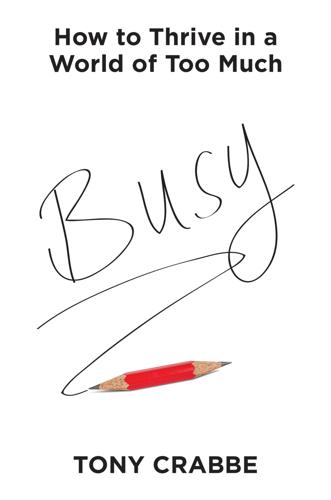
Busy
by
Tony Crabbe
Published 7 Jul 2015
No matter how organized you are, you will not be able to time-manage your way back to control. All that happens through better organization is that you do more stuff. Since you are still failing to do most of the things you could, or even should do, doing more things won’t help you feel in control; you will just be busier. In fact, a study by Basex showed that 30 percent of knowledge workers were trying to do so much, they had no time for thought at all, and 58 percent had only between fifteen and thirty minutes to think a day!1 In addition, the usefulness of time management gets less and less by the day as the quantity of information, communication and expectation continues to increase.
…
This buzz perpetuates our illusion of efficiency; we delude ourselves into mistaking our ability to machine-gun disconnected tasks for working well. In fact, Jonathan B. Spira, an analyst at the business research firm Basex, highlighted the scale of the multitasking illusion. He estimated that the increased inefficiency and ineffectiveness of multitasking was wasting 28 billion hours of knowledge workers time a year in the US alone.14 Break your day into big chunks of activity. The more complex the task, the bigger the chunk of uninterrupted time it needs. Of course, life will intervene at times, the director will tap you on the shoulder and distract you, but your goal should be to maximize chunks of focused time
…
Email: The TV of Work One of the most obvious domains in which rampant productivity is demonstrated is our response to email. One study of two thousand UK workers found that 77 percent of them would consider “a productive day in the office” to be clearing their inbox.2 Jonathan B. Spira found that reading and processing just one hundred emails (who only has one hundred emails!) uses up half of a knowledge worker’s time.3 I think email has become the TV of work. It offers little, but it asks little too. So rather than do the big work that will make a difference, we turn on the email and pass the time (productively of course). Transforming Our Success Strategy We may not want to be busy, but few of us are willing to let our career aspirations die to achieve a calmer existence.

There's Got to Be a Better Way
by
Nelson P. Repenning
and
Donald C. Kieffer
Published 26 Aug 2025
Yale and many other organizations have used this principle to dramatically improve productivity, create a more responsive system, and lower costs. Chapter 7: Visualize the Work. Imagine how hard it would be to play soccer if the field was shrouded in fog, and you only saw the ball when it appeared in front of you. That’s often what it feels like to be a knowledge worker. Fannie Mae, one of the largest financial institutions in the world, experienced this sensation every month as they tried to close their books. This chapter shows how to make the flow of work evident by creating shared dynamic visual representations. This principle allows everyone in the organization to see the state of the knowledge work system, not just their individual to-do list.
…
In the office world, the waste is much harder to see. Asking someone to stop what they are doing and work on something urgent seems normal and to have few consequences. But no one would ever ask a cardiac surgeon to stop an operation midstream because something supposedly more important popped up—we know this is a bad idea—yet we ask knowledge workers to do something similar multiple times a day because the immediate impact doesn’t seem onerous. As we outlined in Chapter 2, left unchecked, fighting fires by working around the system (and not addressing the underlying causes of the fires) quickly becomes the only way things ever get done; it becomes the process.
…
Guessing wrong wasted time and resources. The Close Line gave everybody the cues they needed to see what needed to be done and when. Caroline and her team encountered patterns similar to those Don experienced in his initial foray as a supervisor. Her team was composed of smart professionals, but like most knowledge workers, they had never seen all their tasks and problems at once, nor had they understood how they fit together. The work was managing them rather than they managing it. For example, prior to implementing the Close Line, they had no sense of the sheer volume of data they had to synthesize, including information on mortgage transactions, investments, and contingencies.

Tools for Thought: The History and Future of Mind-Expanding Technology
by
Howard Rheingold
Published 14 May 2000
Sometime in the early 1970s, Engelbart was inspired by a book, just as he had been enthused by magazine articles by Bush and Licklider in years past. This time, it was the theory proposed by business management expert Peter Drucker in the late 1960s. Knowledge, by Drucker's definition, is the systematic organization of information; a knowledge worker is a person who creates and applies knowledge to productive ends. The rapid emergence of an economy based primarily on knowledge, Drucker predicted, would be the most significant social transformation of the last quarter of the twentieth century. Drucker noted something about the future of knowledge in the American economy that seemed to converge, from an unexpected but not unpredictable direction, with the course Engelbart had plotted for the augmentation project at the beginning of its second decade.
…
Acknowledging their debt to Drucker's ideas, the authors pointed out that the special computer systems that had been evolving at ARC were designed to alleviate the problems associated with "the accelerating rate at which knowledge and knowledge work are coming to dominate the working activity of our society': In 1900 the majority and the largest single group of Americans obtained their livelihood from the farm. By 1940 the largest single group was industrial workers, especially semiskilled machine operators. By 1960, the largest single group was professional, managerial, and technical -- that is, knowledge workers. By 1975-80 this group will embrace the majority of Americans. The productivity of knowledge has already become the key to national productivity, competitive strength, and economic achievement, according to Drucker. It is knowledge, not land, raw materials, or capital, that has become the central factor in production.
…
It is impossible to tell if there would have been a PARC if there hadn't been an ARC, and while the miniaturization revolution made personal computers inevitable in a technical sense, there is good reason to question whether the kind of personal computing that exists today would ever have been developed if it had not been for the pathfinding work accomplished by Engelbart and his colleagues. Doug Engelbart and the people who helped him build ARC did not succeed in building a knowledge workers' utopia. Some hackers do seem to be pathologically attached to computers. These facts might have very little to do with the way other people will use the descendants of the tools they created. In fact, if you think about it, some of the wildest and woolliest of the MAC and ARC hackers were following in a long tradition of people who weren't exactly run-of-the-mill citizens -- from Babbage and Lovelace to Turing and von Neumann.
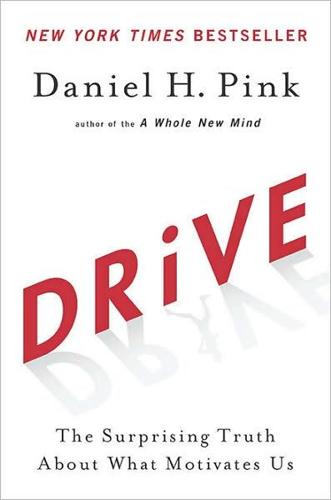
Drive: The Surprising Truth About What Motivates Us
by
Daniel H. Pink
Published 1 Jan 2008
With the rise of individual longevity and the decline of job security, he argued, individuals have to think hard about where their strengths lie, what they can contribute, and how they can improve their own performance. The need to manage oneself, he wrote shortly before he died in 2005, is creating a revolution in human affairs. Type I Insight: Demanding of knowledge workers that they define their own task and its results is necessary because knowledge workers must be autonomous . . . workers should be asked to think through their own work plans and then to submit them. What am I going to focus on? What results can be expected for which I should be held accountable? By what deadline? More Info: Drucker wrote many books, and many have been written about him, but a great starting place is The Daily Drucker, a small gem that provides 366 insights and action points for putting his ideas into practice.
…
Presidential Medal of Freedom, and taught for three decades at the Claremont Graduate University Business School that now bears his name. Big Idea: Self-management. Drucker's primary contribution is not a single idea, Jim Collins once wrote, but rather an entire body of work that has one gigantic advantage: nearly all of it is essentially right. Drucker coined the term knowledge worker, foresaw the rise of the nonprofit sector, and was among the first to stress the primacy of the customer in business strategy. But although he's best known for his thoughts on managing businesses, toward the end of his career Drucker signaled the next frontier: self-management . With the rise of individual longevity and the decline of job security, he argued, individuals have to think hard about where their strengths lie, what they can contribute, and how they can improve their own performance.

Tailspin: The People and Forces Behind America's Fifty-Year Fall--And Those Fighting to Reverse It
by
Steven Brill
Published 28 May 2018
That made those at the top smarter and better equipped to dominate what was becoming a knowledge economy. It was one of the twentieth century’s great breakthroughs for equality. As you will read, I was a beneficiary of the change and also played a role in embedding it in the legal industry. It had the unintended consequence, however, of entrenching a new aristocracy of rich knowledge workers who were much smarter and more driven than the old-boy network of heirs born on third base. From the 1970s on, they upended corporate America and Wall Street with inventions in law and finance that created an economy built on deals that moved corporate assets around instead of building new assets.
…
In that sense, one could call this great unraveling of American exceptionalism a perfect storm, but one that paradoxically featured what appeared to be bright skies all along the way—milestones in innovation in all the arenas that make America great. Although the chapters that follow each focus on one element of the breakdown, the elements were interrelated. For example, the rise of meritocracy that created a newly entrenched aristocracy of knowledge workers powered the transformation of America into a finance-dominated economy. That in turn created still more demand for financial engineers and lawyers, which further entrenched the meritocracy and widened income inequality. Similarly, the emergence of the First Amendment as a tool enabling unlimited money to finance campaign contributions and to pay for lobbyists to dominate Washington allowed business interests to prevail in multiple battles against the middle class, including fights over unionization.
…
They did it not only by following Jensen’s doctrine and making their compensation rise or fall with the stock price, but also by inventing ways to use shareholder democracy to achieve the ultimate in accountability: throwing managers out of their jobs and replacing them with those who would more single-mindedly boost the short-term price of the stock. The result would be the emergence of an economy where the most money was to be made not by building companies but by deploying thousands of the smartest knowledge workers of the new meritocracy to engineer new ways to rearrange who owned them and create new forms of debt and other financial instruments so that shareholders might score a quick win. THE TAKEOVER FIGHTER Joseph Flom was a pioneering soldier of the meritocracy. Long before meritocracy became the norm two decades later, Flom—short, obese, the son of struggling Jewish immigrants—talked his way into the Harvard Law School class of 1948.

Aerotropolis
by
John D. Kasarda
and
Greg Lindsay
Published 2 Jan 2009
Moving in from the residential rings, the next layer was slated for the manicured campuses of those same multinationals—the back offices, R & D labs, and regional headquarters of the Toyotas and Nokias per-suaded to relocate. Here, one would also find hotels, shopping malls, convention centers—anything and everything to sustain the knowledge workers laboring in the shadow of the airport. In the innermost rings, essentially abutting the runway fences, were the free-trade zones, factories, warehouses, and logistics hubs designed for the FedEx/UPS/DHL combine—the just-in-time manufacturers and suppliers for whom time and distance from the belly of a 747 equals, quite literally, cost.
…
But it’s too much for my neighbors in Park Slope, another patch of brownstones down the hill to the east, where the typical approaching plane swoops so low you can clearly read the “Delta” painted on its sides. The brownstoners have lobbied unsuccessfully to have the flight paths moved over some less fortunate neighborhood. They’re much like my neighbors here—lawyers, writers, and financiers. “Knowledge workers” is what they would call them in New Songdo, where the item at the top of Stan Gale’s to-do list is to woo more of them there. A few blocks west are the docks of Red Hook, where a faint few ships unload containers by day and blow foghorns by night. It’s a rumble as startling as jet wash, though several degrees more romantic because their era seems farther removed.
…
Another is on-site employers any mayor (or governor) would kill for, including a film studio and a maker of solar cells that opened a $100 million factory there last year. But taking their cue from Stapleton’s tenants, the Ratners expect that nearly everyone here will work from home. As BusinessWeek put it, Mesa del Sol “will be the first place of its kind built from scratch and targeted at the creative class.” A big marketing push will be made to coastal knowledge workers looking to cash out of their million-dollar split levels, move inland, and work remotely for their companies. Mansionettes will carry price tags of up to $400,000, about the same as the average Manhattan studio. They’ll feature home offices sequestered from family foot traffic and fully wired for transnational connections.

Company: A Short History of a Revolutionary Idea
by
John Micklethwait
and
Adrian Wooldridge
Published 4 Mar 2003
In “the assembly-line mentality,” warned Drucker, workers were valued purely in terms of how closely they resembled machines.15 In fact, the most valuable thing about workers was not their hands, but their brains. The importance of empowering workers became more important when Drucker identified a new class of “knowledge workers” (as he dubbed them in 1959). These were lessons that Japanese managers (who read Drucker’s work assiduously) learned rather more quickly than GM. The carmaker’s attempt at talking to its workers came down to suggesting they write an essay, “My Job and Why I Like It.” CORPORATE IMPERIALISM One sign of the success of managerial capitalism is the way that it co-opted its state equivalent after 1945.
…
It was too slow, too methodical, too hierarchical, too reliant on economies of scale that were withering away. It also proved too cumbersome when it came to husbanding knowledge. Brainpower had always mattered in business. But this truism became far more valid after 1975, as Peter Drucker’s knowledge workers finally began to make their weight felt. By the end of 2001, General Motors boasted net-book assets (tangible things like factories, cars, and even cash) of $52 billion, but its market value of $30 billion was only a fifth of that of Merck, a drug firm that could muster a balance sheet value of $7 billion, but had a far more valuable trove of knowledge.
…
It will be replaced by the “network.” Some economies have long centered on webs of interlocking businesses, such as Japan’s keiretsu and South Korea’s chaebol. But the models most commonly cited are the boundaryless firms of Silicon Valley. In theory, these loose-fitting alliances are the ideal homes for Peter Drucker’s knowledge workers. This sounds attractive. But the networking concept has (appropriately enough) bundled together too many contradictory ideas. The older sort of networks, like the keiretsu, which were largely attempts to shield member companies from the market, are now being pulled apart by it. The networks in Silicon Valley, which rely on their sensitivity to market movements, look far more modern, but they are still built around companies.

Co-Intelligence: Living and Working With AI
by
Ethan Mollick
Published 2 Apr 2024
Mollick, “New Modes of Learning Enabled by AI Chatbots: Three Methods and Assignments” (December 13, 2022). Available at SSRN: https://ssrn.com/abstract=4300783; and F. Dell’Acqua, E. McFowland, E. R. Mollick, H. Lifshitz-Assaf, K. Kellogg, S. Rajendran, L. Krayer, F. Candelon, and K. R. Lakhani, “Navigating the Jagged Technological Frontier: Field Experimental Evidence of the Effects of AI on Knowledge Worker Productivity and Quality,” Harvard Business School Technology & Operations Management Unit Working Paper 24-013, September 2023, https://papers.ssrn.com/sol3/papers.cfm?abstract_id=4573321. GO TO NOTE REFERENCE IN TEXT experimenting with practical uses of AI: “How Can Educators Get Started with ChatGPT?
…
GO TO NOTE REFERENCE IN TEXT Chapter 3: Four Rules for Co-Intelligence I and my coauthors call the Jagged Frontier: F. Dell’Acqua, E. McFowland, E. R. Mollick, H. Lifshitz-Assaf, K. Kellogg, S. Rajendran, L. Krayer, F. Candelon, and K. R. Lakhani, “Navigating the Jagged Technological Frontier: Field Experimental Evidence of the Effects of AI on Knowledge Worker Productivity and Quality,” Harvard Business School Working Paper 24-013, September 2023, https://www.hbs.edu/ris/Publication%20Files/24-013_d9b45b68-9e74-42d6-a1c6-c72fb70c7282.pdf. GO TO NOTE REFERENCE IN TEXT fundamental truth about innovation: N. Franke and C. Lüthje, “User Innovation,” Oxford Research Encyclopedia of Business and Management, January 30, 2020, https://doi.org/10.1093/acrefore/9780190224851.013.37.
…
GO TO NOTE REFERENCE IN TEXT I have been working on doing that, along with a team of researchers: F. Dell’Acqua, E. McFowland, E. R. Mollick, H. Lifshitz-Assaf, K. Kellogg, S. Rajendran, L. Krayer, F. Candelon, and K. R. Lakhani, “Navigating the Jagged Technological Frontier: Field Experimental Evidence of the Effects of AI on Knowledge Worker Productivity and Quality,” Harvard Business School Working Paper 24-013, September 2023, https://www.hbs.edu/ris/Publication%20Files/24-013_d9b45b68-9e74-42d6-a1c6-c72fb70c7282.pdf. GO TO NOTE REFERENCE IN TEXT They missed out on some brilliant applicants: F. Dell’Acqua, “Falling Asleep at the Wheel: Human/AI Collaboration in a Field Experiment on HR Recruiters,” PhD dissertation, Columbia University, 2021.
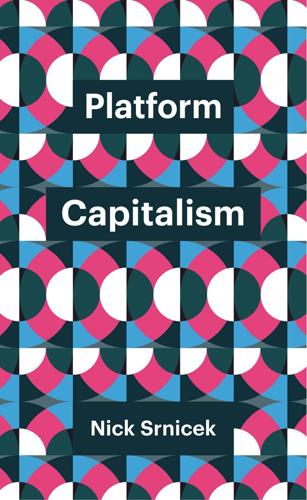
Platform Capitalism
by
Nick Srnicek
Published 22 Dec 2016
In Italian autonomism, this would be a claim about the ‘general intellect’, where collective cooperation and knowledge become a source of value.3 Such an argument also entails that the labour process is increasingly immaterial, oriented towards the use and manipulation of symbols and affects. Likewise, the traditional industrial working class is increasingly replaced by knowledge workers or the ‘cognitariat’. Simultaneously, the generalised deindustrialisation of the high-income economies means that the product of work becomes immaterial: cultural content, knowledge, affects, and services. This includes media content like YouTube and blogs, as well as broader contributions in the form of creating websites, participating in online forums, and producing software.4 A related claim is that material commodities contain an increasing amount of knowledge, which is embodied in them.
…
Microsoft, meanwhile, has built an artificial intelligence platform that gives businesses the software development tools to build their own bots (‘intelligence as a service’, in the contemporary lingo). And International Business Machines (IBM) is moving to make quantum cloud computing a reality.38 Cloud platforms ultimately enable the outsourcing of much of a company’s information technology (IT) department. This process pushes knowledge workers out and often enables the automation of their work as well. Data analysis, storage of customer information, maintenance of a company’s servers – all of this can be pushed to the cloud and provides the capitalist rationale for using these platforms. The logic behind them is akin to how utilities function.
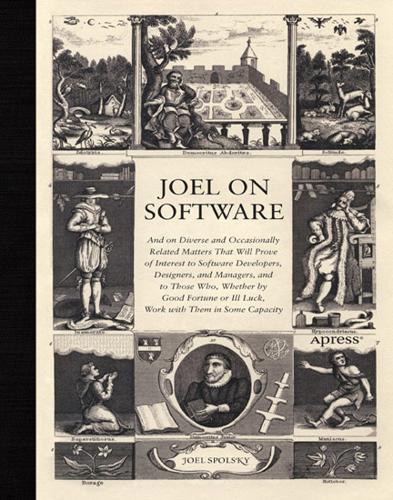
Joel on Software
by
Joel Spolsky
Published 1 Aug 2004
There are extensively documented productivity gains provided by giving knowledge workers space, quiet, and privacy. The classic software management book Peopleware documents these productivity benefits extensively.8 __________ 6. See Chapter 24. 7. For example, the course Daily Themes at Yale University (see www.yale.edu/engl450b/) is famous for requiring students to write an essay every day. 8. Tom DeMarco and Timothy Lister, Peopleware: Productive Projects and Teams, Second Edition (Dorset House Publishing, 1999). Here's how it works. We all know that knowledge workers work best by getting into "flow," also known as being "in the zone," where they are fully concentrated on their work and fully tuned out of their environment.
…
If a coworker asks you a question, causing a one-minute interruption, but this knocks you out of the zone badly enough that it takes you half an hour to get productive again, your overall productivity is in serious trouble. If you're in a noisy bullpen environment like the type that caffeinated dotcoms love to create, with marketing guys screaming on the phone next to programmers, your productivity will plunge as knowledge workers get interrupted time after time and never get into the zone. With programmers, it's especially hard. Productivity depends on being able to juggle a lot of little details in short-term memory all at once. Any kind of interruption can cause these details to come crashing down. When you resume work, you can't remember any of the details (like local variable names you were using, or where you were up to in implementing that search algorithm) and you have to keep looking these things up, which slows you down a lot until you get back up to speed.
…
"Reps who spent more than 13 minutes talking to a customer didn't get their monthly bonuses," writes Katrina Brooker.2 "As a result, workers began doing just about anything to get customers off the phone: pretending the line wasn't working, hanging up, or often—at great expense—sending them new parts or computers. Not surprisingly, Gateway's customer satisfaction rates, once the best in the industry, fell below average." It seems like any time you try to measure the performance of knowledge workers, things rapidly disintegrate, and you get what Robert D. Austin calls measurement dysfunction. His book Measuring and Managing Performance in Organizations3 is an excellent and thorough survey of the subject. Managers like to implement measurement systems, and they like to tie compensation to performance based on these measurement systems.

Capitalism in America: A History
by
Adrian Wooldridge
and
Alan Greenspan
Published 15 Oct 2018
Even when the manufacturing sector boomed it didn’t create as many jobs as it had in the past: from 1983 to 1989, real value added by manufacturing grew by 30 percent, but employment only grew by 5.5 percent. Unforgiving competition from abroad forced manufacturing companies to reduce production costs by closing inefficient plants, adopting new technologies, or moving their operations abroad. Meanwhile, knowledge workers advanced rapidly, particularly knowledge workers in the IT and financial-services sectors. Brain-intensive companies such as Microsoft and Apple took over from Ford and General Motors as the symbols of modern times. Even old-line companies became more brain-intensive: manufacturers focused on producing highly engineered products for precise niches rather than on standardized products for mass markets.
…
And yet this was the manufacturing sector’s swan song: the 1956 census revealed that there were more Americans doing white-collar jobs than blue-collar ones, and the most far-sighted commentators asked whether manual workers would go the way of agricultural workers. Peter Drucker coined the phrase “knowledge worker” to describe the rising class. Daniel Bell spotted a “post-industrial society” emerging in the womb of industrial society. Americans began to regard their prowess in winning Nobel Prizes as a measure of the country’s economic virility—between 1943 and 1969, America won twenty-one Nobel Prizes in Physics, far more than any other country, though eleven of the winners were European refugees.
…
Mitchell would have been a familiar figure to the great entrepreneurs of the late nineteenth century: a man obsessed with using mechanical innovations to wrestle resources out of the unforgiving soil. But this era also saw two momentous developments that would have shocked Rockefeller and company far more than using water to extract oil out of rock: the replacement of blue-collar workers with knowledge workers at the heart of the economy and the advance of women in the workforce. Reagan, Bush, and Clinton didn’t just preside over a technological revolution. They also presided over a social revolution that reached into almost every American home. THE NEW WORKFORCE The America of the golden age had been dominated by men and machines.

Who's Your City?: How the Creative Economy Is Making Where to Live the Most Important Decision of Your Life
by
Richard Florida
Published 28 Jun 2009
She wasn’t looking for job security—at least not yet. Still, I had to imagine that at some point she would want—and need—the assurance that she could continue to do what she loved without risking her financial well-being. In her old life, this woman had been what the late Peter Drucker called a “knowledge worker.” She’d gotten a good education and scored a job in high-level information with a reputable agency of the federal government.2 And she ended up hating it. The key to her professional happiness, she realized, was not in applying the knowledge she had learned in school but in using her innate creative abilities.
…
Chapter 7 1 Dan Pink, Free Agent Nation, Warner Books, 2001. 2 Peter Drucker, Post-Capitalist Society, Harper Business, 1993; Drucker, “Beyond the Information Revolution,” Atlantic Monthly, October 1999, pp. 47-57; Drucker, “The Next Society,” The Economist, November 1, 2001, pp. 1-20. Fritz Machlup is often credited with the term “knowledge worker” from his 1962 book The Production and Distribution of Knowledge in the United States, Princeton University Press, 1962. 3 See Richard Florida, The Rise of the Creative Class, Basic Books, 2002. Data updated by Kevin Stolarick. 4 “The World’s Richest People,” Forbes, March 8, 2007. 5 Richard Florida, Charlotta Mellander, and Kevin Stolarick, “Inside the Black Box of Economic Development: Human Capital, the Creative Class, and Tolerance,” Journal of Economic Geography, 8, 5, 2008. 6 The correlations between occupation and per capita income are as follows: computer and math (.659); business and finance (.549); arts, entertainment, and media (.511); sales (.480); engineering and architecture (.472); science (.393); law (.390); and management (.358). 7 The correlations with regional income are as follows: health care occupations (.052); education occupations (.055). 8 See for example, Alfred Weber, Theory of the Location of Industries, University of Chicago Press, 1929 (1st ed., 1909). 9 Michael Piore and Charles Sabel, The Second Industrial Divide, Basic Books, 1984. 10 Alfred Marshall, Principles of Economics, Cosimo Classics, abridged ed., 2006 (1st ed., 1890). 11 Michael Porter, “Clusters and the New Economics of Competition,” Harvard Business Review, November-December 1998; Porter, “Location, Clusters, and Company Strategy,” in Gordon Clark, Meric Gertler, and Mayrann Feldman, eds., Oxford Handbook of Economic Geography, Oxford University Press, 2000; and Porter, “Location, Competition, and Economic Development: Local Clusters in a Global Economy,” Economic Development Quarterly 14, 1, February 2000, pp. 15-34. 12 Joseph Cortright and Heike Mayer, Signs of Life: The Growth of Biotechnology Centers in the US, Brookings Institution, Center for Metropolitan Policy, 2001. 13 Pui-Wing Tam, “New Hot Spot for High Tech Firms Is the Old One,” Wall Street Journal, October 5, 2006. 14 Ann Markusen and Greg Schrock, “The Distinctive City: Divergent Patterns in Growth, Hierarchy, and Specialization,” Urban Studies 43, 8, July 2006, pp. 1301-1323. 15 Maryann Feldman and Roger Martin, “Jurisdictional Advantage,” National Bureau of Economic Research, October 2004. 16 Dan Fitzpatrick, “Extreme Commuters at PNC Raise Eyebrows,” Pittsburgh Post-Gazette, August 7, 2005. 17 Robert D.
…
See Initial public offering Irrational Exuberance (Shiller) Israel Italy Ithaca, New York Jackson, Scott Jacobs, Jane Jagger, Mick Japan super-megaregions and Jihad Jobs, Steve Johns Hopkins University Jolliffe, Lynn Journal of Economic Literature Jurisdictional advantage Kahneman, Daniel Katsuyama Kefentse, Kwende Kenney, Martin Kingston, Ontario Knight Frank Knowledge workers Kodak Kuala Lumpur Lang, Robert Lansing, Michigan Las Vegas Latin America Leadership place choice and Leamer, Edward Leave It to Beaver (television series) Led Zeppelin Leeds Leonhardt, David Lexington Life decisions stages in Life partners Light-based regional product (LRP) Lisbon(fig.)

Social Life of Information
by
John Seely Brown
and
Paul Duguid
Published 2 Feb 2000
From within organizations come sounds of fighting between the IT (information technology) and HR (human resources) factions over who "owns" knowledge management. 2 Similarly, technology giants have entered a propaganda war over who best understands knowledge.3 Elsewhere, the management consultants are maneuvering for high ground in the knowledge stakes. In the process, knowledge has gained sufficient momentum to push aside not only concepts like reengineering but also information, whose rule had previously looked so secure. To be, in Peter Drucker's term, a "knowledge worker" now seems much more respectable than being a mere "information worker," though for a while the latter seemed very much the thing to be. Similarly, pundits are pushing "information economy" and the venerable ''information age" aside in the name of the more Page 119 voguish "knowledge economy" and "knowledge age."
…
Similarly, the sort of blind downsizing produced by business process reengineering has caused organizations to lose "collective memory."7 It's impossible to assess the value of such layoffs. But the business journalist Thomas Stewart estimated the cost of AT&T's last round as equivalent to an $8 billion capital write-off.8 In all, the job of knowledge management cannot involve just the protection and exploitation of patents. It must include the cultivation of knowledgeable workers. Focusing on information, however, makes this kind of cultivation difficult. Known Problems Curiously, if knowledge will go out of the door in the heads of people who have developed and worked with that knowledge, it seems reluctant to go out (or stay behind) in the heads of people Page 123 who have not been so involved.
…
The maxim "Forget all you know" doesn't show much interest in accrued human capital. 17. Walsh and Bayma, 1995. 18. Orr, 1996. 19. As the workplace sociologist Stephen Barley (1996) of Stanford Page 268 University argues, these reps are in many ways models of the new knowledge worker. They work alone, with sophisticated technology, supported by extensive information resources. 20. Hammer also briefly discusses tech reps, but he gives little sense of how they develop understanding or deal with the unexpected. He primarily affirms that reengineering helps them. Hammer, 1996, pp. 26 28. 21.

Dreaming in Code: Two Dozen Programmers, Three Years, 4,732 Bugs, and One Quest for Transcendent Software
by
Scott Rosenberg
Published 2 Jan 2006
We’re accustomed to thinking of management as the application of business school techniques that carry a scientific sheen: uniform measurements of productivity and metrics of return-on-investment. Drucker’s definition sounds awfully squishy; he could be talking about an orchestra conductor or a stage director. But in emphasizing the art of management over the science, the human realm over the quantitative dimension, Drucker—who first invented the term knowledge worker and then offered invaluable insights into its implications—was trying to remind us that numbers are only a starting point for management, not its ultimate goal. One great irony inherent in the management of software projects is that despite the digital precision of the materials programmers work with, the enterprise of writing software is uniquely resistant to measurement.
…
And, of course, when a project team’s work is unpredictable, the entire project is unpredictable. In short, as long as individual developers do not plan and track their personal work, their projects will be uncontrollable and unmanageable.” On the other hand, here is Peter Drucker, the father of contemporary management studies: “Most discussions of the knowledge worker’s task start with the advice to plan one’s work. This sounds eminently plausible. The only thing wrong with it is that it rarely works. The plans always remain on paper, always remain good intentions. They seldom turn into achievement.” Drucker published those words in 1966. As it happened, that was just about the time that a young Watts Humphrey was taking over the reins of software management at IBM.
…
Chandler sat at an unusual midpoint between these approaches, leaving it without clear signposts to mark the moment of “done” or even to indicate the direction in which completion might lie. But there is another consequence of software development’s halting problem, one that is less pragmatic than existential. David Allen, the Getting Things Done guru, talked about the “gnawing sense of anxiety” suffered by knowledge workers who face mountains of open-ended tasks. Software developers always have more to do; the definition of “done,” even for an interim release or small milestone, is always somewhat arbitrary. In this their work is more like an author’s than a builder’s. “Done” isn’t something that is obvious to an observer.
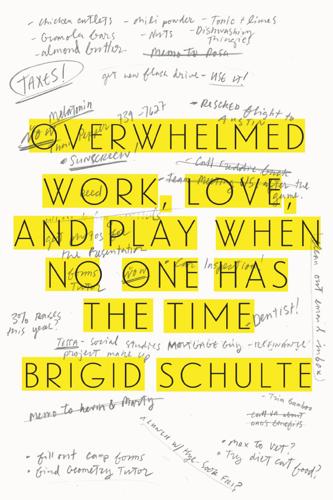
Overwhelmed: Work, Love, and Play When No One Has the Time
by
Brigid Schulte
Published 11 Mar 2014
And the nature of what we do and how we do it has been completely transformed in less than a century: We’ve morphed as a civilization from the hard physical labor of rural agricultural work to the sedentary chair sitting of urban knowledge workers. That’s a far more stressful life. “Think about the farmer,” Akil tells me. “The farmer can’t control and predict very much either. So why is that any better or worse than being on Wall Street? As a farmer, if there was a freeze that destroyed your crops, that might’ve stressed you, but it wasn’t your fault. But as a knowledge worker, you’re expected to be in charge of everything. And when things go wrong, it is your fault. The thinking is, you could have planned more, or you should have anticipated what went wrong.
…
When Ford cut hours, errors went down, efficiency, productivity, and employee satisfaction went up, as did the company’s profits. He shuttered factories on Saturdays in 1926 for the same reason, and the forty-hour workweek, enshrined in federal law since 1938, was born. But times and work have changed. Unlike manual laborers, knowledge workers have about six good hours of hard mental labor a day, futurist Sara Robinson found in a review of research on work and work hours. Work late for too long, she wrote, and “people get dull and stupid … They make mistakes that they’d never make if they were rested; and fixing those mistakes takes longer because they’re fried.”15 A study of medical interns found that those on long shifts made 36 percent more potentially serious errors than those who worked shorter shifts.16 Research by the Business Roundtable in the 1980s found that companies can get short-term gains by pushing employees to work sixty or seventy hours a week, Robinson reports.
…
As a working mother friend of mine said, “If there are on-ramps back into the workplace for disgraced politicians like Eliot Spitzer, then why not for parents?” • Understand the neuroscience of how humans work best: pulsing between periods of intense concentration of typically no more than ninety mintues, and breaks to completely change the channel. • Embrace the restorative power of vacation. Allow knowledge workers to daydream or noodle around with an idea without fear of failure. • Draw on the science of human motivation first by giving workers a fair salary and benefits, then allowing them to have greater autonomy, a sense of purpose, and the ability to become masterful at what they do. • Working in a new way does not mean working less.

Scarcity: The True Cost of Not Having Enough
by
Sendhil Mullainathan
Published 3 Sep 2014
firefighting organizations have several features in common: We owe our understanding of firefighting and several of the examples to Roger E. Bohn and Ramchandran Jaikumar, Firefighting by Knowledge Workers (Information Storage Industry Center, Graduate School of International Relations and Pacific Studies, University of California, 2000). “If you look at our resource allocation on traditional projects”: N. P. Repenning, “Reducing Cycle Time at Ford Electronics, Part II: Improving Product Development,” case study available from the author (1996). 28,000 known bugs: This number is cited in Bohn and Jaikumar, Firefighting by Knowledge Workers. It is actually part of a larger controversy about whether or not Microsoft shipped with 61,000 known bugs.
…
present bias: A nice overview of present bias and other models of time discounting can be found in Shane Frederick and George Loewenstein, “Time Discounting and Time Preference: A Critical Review,” Journal of Economic Literature (2002). Because machine uptime was important: R. E. Bohn and R. Jaikumar, Firefighting by Knowledge Workers (Information Storage Industry Center, Graduate School of International Relations and Pacific Studies, University of California, 2000), retrieved from http://isic.ucsd.edu/pdf/firefighting.pdf. Steven Covey finds it helpful to classify tasks: S. R. Covey, The Seven Habits of Highly Effective People (New York: Free Press, 2004).
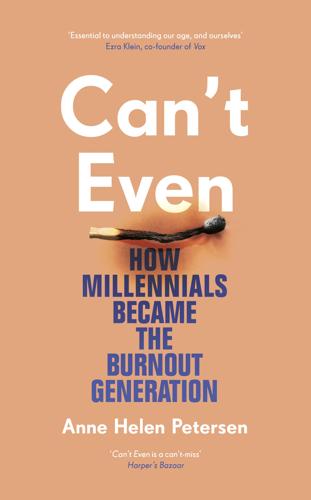
Can't Even: How Millennials Became the Burnout Generation
by
Anne Helen Petersen
Published 14 Jan 2021
The truth of my real, lived life lies somewhere in between what’s pictured and what’s intended. But there’s a reason I sometimes find myself scrolling through my own account as I fight that before-sleep anxiety: When I don’t feel connected to myself or my life, Instagram reminds me of who I’ve decided I am. For knowledge workers, a well-curated Instagram, like a popular Twitter presence, can be a gateway to a job, or #sponcon. The purest example of this concept is the social media influencer, whose entire income source is performing and mediating the self online. Most people’s lives aren’t so explicitly monetizable, but that doesn’t mean they’re not cultivating a brand to project to the larger world.
…
If you can make a hundred widgets in less time, that doesn’t mean everyone should work less—instead, they should work the same number of hours and make more widgets. But part of it, too, had to do with the rise of a different sort of work, “knowledge work,” with a different sort of widget. Knowledge workers have “outcomes” and “products,” but unlike a factory product, they were difficult to measure. As a result, these workers are salaried, as in, paid for the entire year instead of by the hour. During the Great Compression era, most salaried workers still worked a forty-hour week, but without the rigidity of clocking in or out—and, depending on your contract, a legal demand to pay overtime.
…
“On any given night in America, exhausted parents and New Year’s–resolution cooks were unpacking identical cardboard boxes shipped by meal-prep startups, disposing of identical piles of plastic packaging, and sitting down to identical dishes,” she writes. “Homogeneity was a small price to pay for the erasure of decision fatigue. It liberated our minds to pursue other endeavors, like work.”4 One result of this drive for productivity is a new hierarchy of labor: On the top end, there are salaried, hyperproductive knowledge workers. Below, there are the people who perform the “mundane” tasks that make that productivity possible: nannies, TaskRabbits, Uber Eats drivers, house cleaners, personal organizers, Trunk Club stylists, Blue Apron packagers, Amazon warehouse workers and drivers, FreshDirect shoppers. Rich people have always had servants.
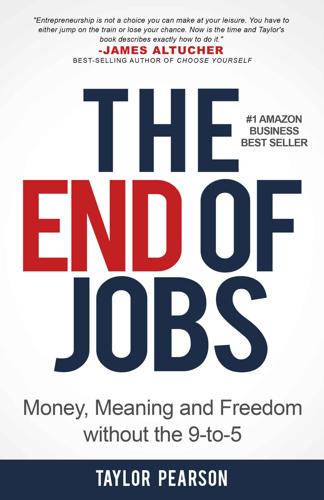
The End of Jobs: Money, Meaning and Freedom Without the 9-To-5
by
Taylor Pearson
Published 27 Jun 2015
While the companies who pay the minimum possible wage and nickel and dime their employees may make a quick buck, they rarely seem to last. In Summary (a.k.a. TL;DR) Improved education standards are taking the implementation of existing best practices and globalizing them. Improved communication technology has made it easy for individuals and companies to find, hire, and manage not just industrial workers, but knowledge workers. The number of individuals looking for jobs, hoping to follow someone else’s orders, are growing exponentially. Could your job theoretically be done over an internet connection and phone line? Yet, your job being outsourced isn’t the only threat at hand. Even as globalization moves knowledge jobs overseas, there’s increasing pressure at home.
…
We think of acquiring knowledge or skills—like product management or sales or marketing—as resources, but we still don’t think of entrepreneurship that way. Right now, there’s no way to measure entrepreneurship. No one would ever write “two years’ experience in entrepreneurship” on their resume. If we imagine a knowledge worker trying to invest in entrepreneurship, there are clear paths to moving from doing knowledge work to doing entrepreneurial work. The chart is admittedly grossly oversimplified and based on a zero sum system indicating the amount each role operates in knowledge work as opposed entrepreneurship.
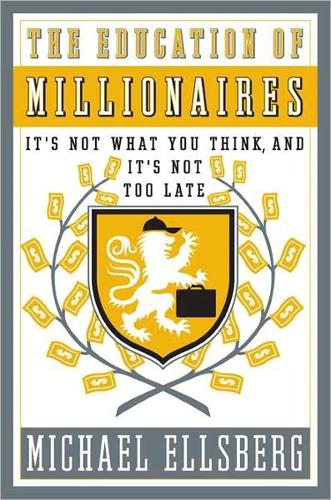
The Education of Millionaires: It's Not What You Think and It's Not Too Late
by
Michael Ellsberg
Published 15 Jan 2011
These people, young and old, read books like The Four-Hour Workweek: Escape 9–5, Live Anywhere, and Join the New Rich by Tim Ferriss, Escape from Cubicle Nation: From Corporate Prisoner to Thriving Entrepreneur by Pamela Slim, and Career Renegade: How to Make a Great Living Doing What You Love by Jonathan Fields. Daniel Pink, in Free Agent Nation: The Future of Working for Yourself, his 2001 book prophesying the current tidal wave of microentrepreneurialism, small business, and self-employment, calls them “self-employed knowledge workers, proprietors of home-based businesses . . . freelancers and e-lancers, independent contractors and independent professionals, micropreneurs and infopreneurs, part-time consultants . . . on-call troubleshooters, and full-time soloists.”9 These new kinds of opportunities, open to anyone who wants to pursue them, without any formal, traditional, or academic qualifications necessary to compete, have arisen largely because of technology.
…
Laborers earned their money by receiving a sliver of the enormous rewards those giant machines produced.”10 Pink argues that in the last decade, in one area of the economy—called “knowledge work”—a shift has occurred as massive and with implications as far-reaching as those during the shift from an agrarian to an industrial society. For knowledge workers in the developed world, the tools of their trade have become so ridiculously cheap that the “means of production” have once again become affordable to individual workers. These workers no longer have to depend on bosses or large organizations to furnish them with the means of production. They can quit the factory-style organizations and become “butchers, bakers, and candlestick makers” once again—that is, digitally connected entrepreneurs and solo-preneurs.
…
See Meaningful work, creating Ilovemarketing.com Institute for Integrative Nutrition Intelligence, practical versus academic Internet marketing guru online presence, building and self-created business and self-education YourName.com, importance of Investments, bootstrapper’s method IQ, and success IronPort Iteration velocity John Paul Mitchell Systems Johnson, Cameron as college non-graduate success, evolution of Jong, Erica Kaufman, Josh Kawasaki, Guy Keillor, Garrison Kennedy, Dan as college non-graduate direct-response marketing Kerkorkian, Kirk Kern, Frank as college non-graduate direct-response marketing on power of selling success, evolution of Kiyosaki, Robert mentor of on power of selling Kleiner Perkins Caufield & Byers Knowledge workers, digital Marxism Komisar, Randy on safety versus risk La Flamme, Jena Cheng sales coaching as college non-graduate Deida relationship training direct-response marketing, use of success, evolution of Lalla, Annie and Eben Pagan Langan, Chris LaPorte, Danielle, success, evolution of Laugh-O-Gram Leadership definitions of and impact on many as new marketing as skill of success Lean Startup Machine Lerer, Ben Levchin, Max Leve, Brett Lifelong learning Linchpin concept Listening, importance of Loucks, Vernon Louis Marx and Company Luck, and success Lupton, Amber Lynda Limited McDermid, Hitch Mailer, Norman Maister, David Making a difference.
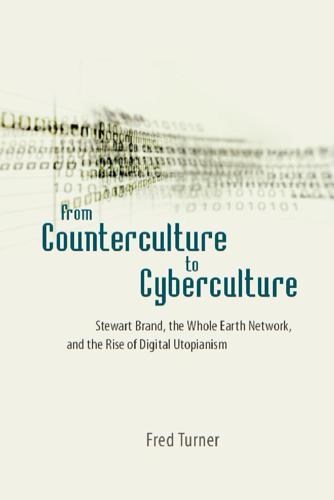
From Counterculture to Cyberculture: Stewart Brand, the Whole Earth Network, and the Rise of Digital Utopianism
by
Fred Turner
Published 31 Aug 2006
But it did occur to me that there was a lot more money in bullshit than there had ever been in bulls and I would get into information. And here I am.69 Barlow’s shift from agricultural work to information work was abrupt, painful, and involuntary. “I did try my personal best to resist conscription as a Knowledge Worker,” he writes, “but I was as culturally doomed as the Tasaday of New Guinea. . . . Yanked from the 19th Century, I found myself . . . tossed unceremoniously onto the doorstep of the 21st.”70 For Barlow, this meant reaching out to his old friends in San Francisco. In 1986, while still in Pinedale, Barlow heard that David Gans, a Bay area disc jockey and connoisseur of the Grateful Dead, and hundreds of other Dead V i r t u a l i t y an d C o m m u n i t y o n t h e W E L L [ 167 ] Heads, were conversing on the WELL.
…
It’s the ultimate goal of building companies around networked computers, mobile communications, and self-managed teams: to marry the competitive demands of business with the desire for personal satisfaction and democratic participation; to achieve productive coordination without top-down control.” In the pages of Out of Control, the Long Hunter of the Whole Earth Catalog had become an entrepreneur. Journalists picked up on the point too. “The renegade competitor,” wrote the Harvard Business Review, “the lone knowledge worker equipped with a laptop, a modem, and an inspired idea—these are our heroes, the change agents who are reinventing industries, reshaping the economy, creating vast wealth.”63 Almost thirty years earlier, thousands of young, highly educated Americans had tromped off into the wilderness seeking to build an egalitarian, fun-loving world.
…
In Control Revolution, Beniger traced to the late nineteenth century the increasing importance of information to economic life. James W. Cortada, in Making of the Information Society, has recently argued that information has been a key feature of Western and particularly American culture for N o t e s t o Pa g e s 2 4 1 _ 2 5 3 [ 289 ] hundreds of years. For similar arguments on the knowledge worker, see Chandler and Cortada, Nation Transformed by Information. Scholars of a Marxist orientation have been particularly aggressive in challenging the notion that the postindustrial, postmodern, or network society models actually represent a new era in capitalism. For critiques in this vein, see Slack and Fejes, Ideology of the Information Age; Lyon, Information Society; and Garnham, “Information Society Theory as Ideology.”
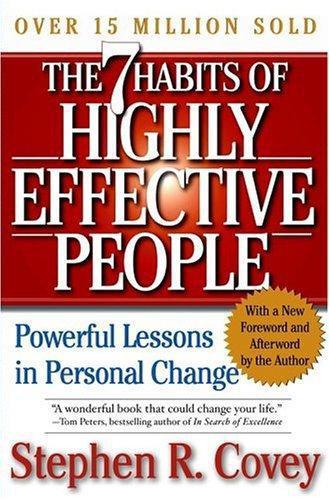
The 7 Habits of Highly Effective People: Powerful Lessons in Personal Change
by
Stephen R. Covey
Published 9 Nov 2004
--and to Kay Swim and her son, Gaylord, for their much appreciated vision which contributed to our organization's rapid growth. FOREWORD The world has changed dramatically since The 7 Habits of Highly Effective People was first published. Life is more complex, more stressful, more demanding. We have transitioned from the Industrial Age into the Information Knowledge Worker Age - with all of its profound consequences. We face challenges and problems in our personal lives, our families, and our organizations unimagined even one and two decades ago. These challenges are not only of a new order of magnitude, they are altogether different in kind. These sweeping changes in society and rumbling shifts in the digitized global marketplace give rise to a very important question - one I'm asked fairly often: "Are The 7 Habits of Highly Effective People still relevant today?"
…
Of course we try to appear generous and cheer for others' successes, but inwardly, privately, so many of us are eating our hearts out when others achieve. Many of the great things in the history of our civilization have been achieved by the independent will of a determined soul. But the greatest opportunities and boundless accomplishments of the Knowledge Worker Age are reserved for those who master the art of "we." True greatness will be achieved through the abundant mind that works selflessly - with mutual respect,for mutual benefit. The hunger to be understood. Few needs of the human heart are greater than the need to be understood - to have a voice that is heard, respected, and valued - to have influence.
…
Tapping into the higher reaches of human genius and motivation--what we could call voice--requires a new mindset, a new skill-set, a new tool-set ... a new habit. The 8th Habit, then, is not about adding one more habit to the 7th--one that somehow got forgotten. It's about seeing and harnessing the power of a third dimension to the 7 Habits that meets the central challenge of the new Knowledge Worker Age. How does notoriety affect you? It affects me in different ways. From an ego standpoint, it's flattering. From a teaching standpoint it is humbling, but I must strongly acknowledge that I am not the author of any of these principles and deserve absolutely no recognition. I am not saying this because of a desire to be modest and humble.

Rise of the Robots: Technology and the Threat of a Jobless Future
by
Martin Ford
Published 4 May 2015
The predictions that can be extracted from data will increasingly be used to substitute for human qualities such as experience and judgment. As top managers increasingly employ data-driven decision making powered by automated tools, there will be an ever-shrinking need for an extensive human analytic and management infrastructure. Whereas today there is a team of knowledge workers who collect information and present analysis to multiple levels of management, eventually there may be a single manager and a powerful algorithm. Organizations are likely to flatten. Layers of middle management will evaporate, and many of the jobs now performed by both clerical workers and skilled analysts will simply disappear.
…
Watson—as well as the competing systems that are certain to eventually appear—have the potential to revolutionize the way questions are asked and answered, as well as the way information analysis is approached, both internal to organizations and in engagements with customers. There is no escaping the reality, however, that a great deal of the analysis performed by systems of this type would otherwise have been done by human knowledge workers. Building Blocks in the Cloud In November 2013, IBM announced that its Watson system would move from the specialized computers that hosted the system for the Jeopardy! matches to the cloud. In other words, Watson would now reside in massive collections of servers connected to the Internet.
…
Even within these top-tier households, income is concentrated to a staggering degree; the number of genuinely wealthy households—those that can survive and continue spending entirely on the basis of their accumulated wealth—is far smaller. During the first year of recovery from the Great Recession, 95 percent of income growth went to just the top 1 percent.20 The top 5 percent is largely made up of professionals and knowledge workers with at least a college degree. As we saw in Chapter 4, however, many of these skilled occupations are squarely in the crosshairs as technology advances. Software automation may eliminate some jobs entirely. In other cases, the jobs may end up being deskilled, so that wages are driven down. Offshoring and the transition to big data–driven management approaches that often require fewer analysts and middle managers loom as other potential threats for many of these workers.
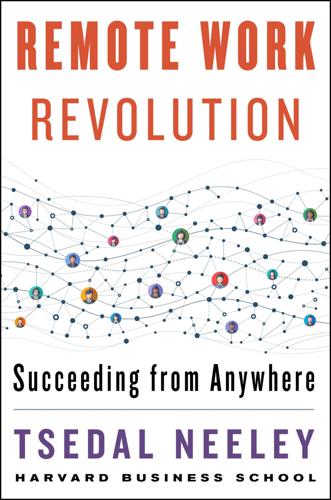
Remote Work Revolution: Succeeding From Anywhere
by
Tsedal Neeley
Published 14 Oct 2021
Another study designed to capture the lived experience and consequences of working from home compared to the office found that employees did better on creative problem-solving tasks when working from home. If we leave out the high-touch jobs such as hair salons or tattoo parlors, many jobs thrive in a remote format—especially those that require deep problem-solving and undistracted concentration. Software engineers, graphic designers, editors, writers, or other knowledge workers who can do most of their work at a computer fit this category. Success from Anywhere: Be Productive Virtually Focus on process and not outcome when assessing productivity. Equip your teams with the tools and resources they need and assume that they will have the insights into how best to achieve their work goals.
…
See face-to-face interactions instant messaging systems communication and, 65, 77, 105 cultural differences and, 79 emails replaced by, 62 social dynamics influenced by, 64 as synchronous media, 71 instructing, mutual teaching, 126–27 interaction norms of agile remote teams, 100–101, 105, 108 of collocated teams, 13, 85, 99–100 inclusive conversations in global team meetings, 121–24 information interactions, 144–45 isolation and, 14–15 planning ongoing communication, 11–13 psychological safety, 13–14 as teamwork element, 5, 9–15, 17 interdependence across teams, 7 internal social media tools agile remote teams and, 100–101 digital tools and, 65, 79–83, 84 emails replaced by, 62 leaders and, 82–83 nonwork exchanges and, 81–83, 84 permanence of, 63 trust and, 19–20, 22, 32, 33, 79–80, 82 intimacy digital tools for, 65 social presence problem and, 68–69, 84 isolation interaction norms and, 14–15 leaders’ role in, 14–15, 142 of remote work format, xiv, 42 team cohesion and, 56–57 Jobs, Steve, 6 JPMorgan Chase, xii–xiii Judge, Mike, 85 Khan, Tariq, 111–14, 116, 119–20, 139–40 knowledge direct knowledge, 29, 30, 32, 38 internal social media tools and, 80, 82 mutual knowledge problem, 64, 65–67, 84 reflected knowledge, 30, 31–32, 38 trust promoted by, 29–32, 38 knowledge workers, 58 Krinsky, Dave, 85 Larson, Barbara, 49 launch sessions. See also relaunch sessions action exercises, 174–76 for agile remote teams, 107–8 alignment as goal of, 5 contributions and constraints, 7–8 as dialogue, 6–7 interaction norms and, 5, 9–15, 17 leadership commitment, 15–17 length of, 4 planning and, 3–4 resources and, 5, 8–9 shared goals and, 4, 6–7, 17 leaders and leadership action exercises, 186–87 behaviors and best practices for, xvi class divide challenge, 134, 136–38, 148 common purpose and, 148 communication of, 62, 142–43 country-of-origin effect and, 159–60 creating structure, 149 cross-cultural mutual adaptation, 120, 121, 124–28 defining remote work leadership, 133–35 digital tools and, 83, 142 early warning signs and, 131, 135, 162 employee motivation and, xiv engagement challenge, 134, 144–48, 149 framing the situation, 153, 156, 160–63, 164, 172 generating solutions with diverse minds, 163–67, 168, 169 Global Leadership Aptitude, 156 group-level identity and, 148 inclusive conversations in global team meetings, 121–24 individual contributions and constraints, 7–8 interaction norms and, 14–15 internal social media tools and, 82–83 location challenge, 134, 135–36, 201n panoramic awareness, 156–58, 161, 172 performance feedback challenge, 134, 143, 149 predictability challenge, 134, 142–43, 149 presence and, 131, 133–34, 142, 147 productive conflict and, 144, 146–47, 149 responses to global crises, xv, 152, 156, 167–72 role of, 132 surveillance for productivity and, 43 team goals and, 58–59 teamwork elements, 15–17 “us versus them” challenge, 134, 138–42 LEGO, 90 Leonardi, Paul, 81, 95 Liang, James, 48 linguistic differences code-switching, 123, 129 English as lingua franca, 118–19 everyone balances for inclusion, 123–24, 129 faultlines and, 138, 140 fluent speakers dial down dominance, 121–22, 128 global teams and, 110, 111, 113, 114, 117–24, 128–29 inclusive conversations in meetings, 121–24 language fluency confused with competency, 119 less fluent speakers dial up engagement, 122–23, 128–29 psychological distance and, 116, 117, 118, 123 rules of engagement, 119, 124 location challenge, in leadership, 134, 135–36, 201n loneliness, 56–57.
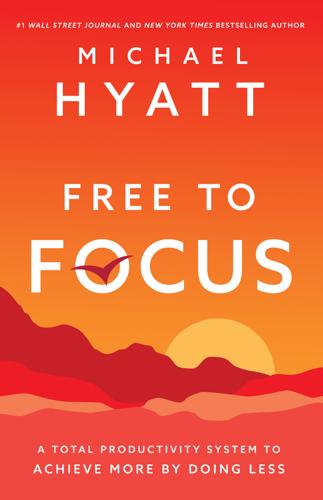
Free to Focus: A Total Productivity System to Achieve More by Doing Less
by
Michael Hyatt
Published 8 Apr 2019
By limiting employee discretion and freedom, Taylor effectively turned them into manufacturing robots. Taylor died more than a hundred years ago, but we’re still trying to follow the same basic efficiency model: working a lot of hours and doing as many tasks as possible as quickly as we can. The problem is most of us aren’t factory workers; we’re knowledge workers. We’re hired more for our mental output than our physical labor. As such, we often have tremendous discretion over our time and a great deal of autonomy as we go about our daily tasks. While twentieth-century factory workers did the same set of tasks all day every day throughout the week, we are constantly surprised by new challenges, opportunities, and problems.
…
See smartphone Center for Creative Leadership, 15 Centers for Disease Control and Prevention (CDC), 74 Chesterfield, Lord, 162, 180 Churchill, Winston, 71, 81–82 circumstances, 61 clarifying one’s objectives, 225 Clayton, Russell, 75–76 clearing the decks, 224–25 Cloud, Henry, 77 clutter, 218–19 commitments, 96–99 elimination of, 108–10 to free time, 111 confusion, 193 connect, 195 connections, 77–79 Consolidate, 21, 161–81 contribution, 48 control, taking vs. surrendering, 196 coordination, 168–69 Costolo, Dick, 81 counterproductive productivity, 17–18 Covey, Stephen, 191 coworkers, 78 “cozy rut,” 99 creativity and changing environment, 72 through disengagement, 37 freeing up, 117 and play, 79 Currey, Mason, 117 Cut, 19–21, 89–158, 227 Daily Big 3, 196–202, 204, 220, 226 Daily Rituals Worksheet, 135 decluttering workspace, 218–19 deep work, 33, 52, 164, 197, 210, 215, 218 deferring, 190 delayed communication, 208–9 Delegate, 21, 137–57, 168 levels of, 148, 149–56 and mentoring, 153 process, 145–49 as smart and organizationally sound, 140 Delegation Hierarchy, 141–46 Designate, 21, 183–204 Desire Zone, 49, 51–53, 55–59, 97, 98, 101, 140, 144–45, 146, 199–201 developing potential, 61 development, 168, 169–70 Developmental Zone, 53–55 digital technology, 14–16 Dillard, Annie, 161 disappointing people, 107–8 discipline, 59–60 Disinterest Zone, 49–50, 55, 100, 116, 143–44, 146 disruptions, minimizing of, 221 Distraction Economy, 13–14, 185, 206, 227 distractions, 35, 212–15, 226 Distraction Zone, 50–51, 55, 99, 100, 144, 146 doing nothing from time to time, 36–37 Doland, Erin, 218 dopamine, 209, 215 downhill tasks, 213–15 drink, 73 Drudgery Zone, 48–49, 50, 55, 58, 100, 109, 116, 142–43, 144 eating, 72–74, 195 Edison, Thomas, 71 efficiency, 27–30 Eisenhower, Dwight, 81 Eisenhower Priority Matrix, 191–94, 199 Eisner, Michael, 69 Eliminate, 21, 91–113, 168, 190 email, 13, 15–16, 29, 85, 120, 163, 179 filtering software, 130–31 signature feature, 124 templates, 123–24 energy, 74, 86–87 energy drinks, 73 energy flexing, 68, 87, 101 energy management, 78 energy producers and drains, 78 environment, taking charge of, 218 Ericsson, Anders, 54 Evaluate, 19, 43–64, 87 evening ritual, 119 Evernote, 127 exercise, 74–77 exhaustion, 66–67 Fabritius, Friederike, 208, 220 Facebook, 71, 78, 213 factory workers, 28, 38 fake work, 14, 99, 214 family and friends, time with, 35–36, 41, 170 fear of missing out, 193 feedback, 149 focus, 33–35, 180, 206 Focus@Will, 217 Focus Defense Worksheet, 221 focus tactics, 215–20 food, 72 Ford, Henry and Edsel, 38 Ford Motors, 38–40 Formulate, 19, 25–42, 87 freedom, 41 Freedom (app), 215–16 Freedom Compass, 45, 55–58, 64, 96–97, 195, 226 freedom (productivity objective), 33–37 freedom to be present, 35–36 freedom to be spontaneous, 36 freedom to do nothing, 36–37 freedom to focus, 33–35 free time, commitment to, 111 frenetic schedules, 84 Fried, Jason, 164 friendships, time for, 79 Front Stage, 166, 167–68, 171, 173, 176, 178–79, 197 frustration tolerance, 219–20 gardening, 97 Gates, Bill, 81 Gazzaley, Adam, 213 Gernsback, Hugo, 205, 212 Google Voice number, 210 Grant, Ulysses S., 81 guilt, 193 Hagemann, Hans, 208, 220 Hallowell, Edward, 215 Hansen, Morten T., 67 Hardy, Benjamin, 218 Hastings, Reed, 71 health, 228 Heinemeier, David, 164 hobbies, 41, 79, 228 Holland, Barbara, 71 Ideal Week, 119, 162, 172–81, 226 Ideal Week template, 182 I Love Lucy (TV program), 25–26 impairment, 70 Information Economy, 13 innovation, and changing environment, 72 instant communication, 207–11 instant-gratification culture, 84 interruptions, 207–11, 226 Isolator, 205–6, 212 Jobs, Steve, 111 Johnson, Paul, 81–82 Jones, Charlie “Tremendous”, 50 journaling, 220 karoshi (death by overwork), 32 Kennedy, John F., 71 King, Stephen, 223 knowledge workers, 28 Koch, Jim, 200, 202 Lewis, Penelope A., 70 liberating truths, 59–63 lifestyle objectives, 38 limiting beliefs, 59–63 “loss of separation,” 184 lunch, 72 MacArthur, Douglas, 71 McCartney, Paul, 99 McKeown, Greg, 183 macro-processing software, 131–32 maintenance, 168, 169 margin, 33, 36, 52, 111, 157, 224, 225, 226 meals, and building relationships, 74 meetings, 197 MegaBatching, 162, 163–66, 172, 180–81 mental health, 83 mentoring, 153 Michel, Alexandra, 65–66 Michelangelo, 21, 100 micro-breaks, 82–83 micromanagers, 149 Miller, Megan Hyatt, 54 mindset, 54 Minor, Dylan, 78 morning ritual, 119 Mortimer, Ian, 223 movement (exercise), 74–77, 195 multitasking, 161–62, 212 music, 217 musicians, 46 Musk, Elon, 67–68 Naish, John, 161, 212 naps, 71 Nashville, 46 natural foods, 73 nature, 82–83 necessary routines, 147–48 Netflix, 71 Newport, Cal, 161–62, 164 Not-to-Do List, 93, 99–100, 113 Nozbe, 202 nutrition, 73 nutritional supplement protocol, 73 offloading tasks, 138, 225–26 Off Stage, 166, 170, 173, 176, 195 OneNote, 127 Opipari, Ben, 75 outdoors, 82–83 overgrowth.

The Bed of Procrustes: Philosophical and Practical Aphorisms
by
Nassim Nicholas Taleb
Published 30 Nov 2010
– Mathematics is to knowledge what an artificial hand is to the real one; some amputate to replace. – Modernity inflicts a sucker narrative on activities; now we “walk for exercise,” not “walk” with no justification; for hidden reasons. – Social media are severely antisocial, health foods are empirically unhealthy, knowledge workers are very ignorant, and social sciences aren’t scientific at all. – For so many, instead of looking for “cause of death” when they expire, we should be looking for “cause of life” when they are still around. – It is those who use others who are the most upset when someone uses them. – If someone gives you more than one reason why he wants the job, don’t hire him

Exponential: How Accelerating Technology Is Leaving Us Behind and What to Do About It
by
Azeem Azhar
Published 6 Sep 2021
On the one hand, highly paid scientists with doctorates; on the other, lower-paid support staff – and little demand for mid-pay workers between these two extremes.80 All this points to the changing topology of employment in the Exponential Age. This is an economy where intangible assets – the kind produced by well-educated knowledge-workers – are all-important. Those with high levels of education are compensated handsomely. At the same time, there remains a group of less well-rewarded, less highly skilled workers, who may not even be acknowledged as employees. In aggregate, the result is a reduced share of income that goes to employees.
…
As we progress through the Exponential Age, cities will become more important, not less. The key cause is, once again, the rise of the intangible economy – and the effect it has on labour markets. Value in this intangible economy is created through highly complex products. Today, highly skilled knowledge workers are more in demand than ever. And these types of workers have never been evenly spread across a country. They cluster around physical institutions, namely universities, and the labs and resources they provide. And around those universities grow companies that employ the most-skilled individuals.
…
And these firms have capabilities that even governments need to rely on. Such companies increasingly dominate aspects of society we have never thought of as the province of firms. But it is not just companies that are becoming more powerful. Unaccountable influence goes to the individuals and places – high-tech knowledge-workers, cyber criminals, malevolent states – that first understood the power of exponential technology. The notion of the exponential gap is one attempt to synthesise each of these forces. All of them hint at a world changing faster than our systems and assumptions can handle. And any of these forces might lead us to dystopia.
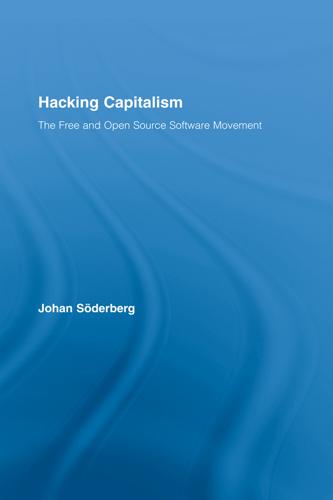
Hacking Capitalism
by
Söderberg, Johan; Söderberg, Johan;
When more and more people are assigned to conceptualise rather than execute work processes, capital must economise this labour force too. The same tight regime is imposed on engineers and programmers as has previously been, with their help, forced upon blue-collar workers.72 At this point, however, Taylorism runs into its own limits. There is no easy way to deprive ‘knowledge workers’ of knowledge and still have them working. One unexpected outcome from the mechanisation of the office is that the opportunities for hacking and sabotage abounds. A high-profile case of employee hacking occurred in 1996 when Timothy Lloyed discovered that he was going to be fired from Omega Engineering.
…
. […] If it had a new technology available at the processor level that would allow computer users to do new things, it had to wait until the operating system supplier decided it was willing to build support for these features into the system.” (Young, 6). 53. Martin Kenney “Value Creation in the Late Twentieth Century: The Rise of the Knowledge Worker” in ed. Jim Davis, Thomas Hirschl and Michael Stack, Cutting Edge: Technology, Information Capitalism and Social Revolution (London: Verso, 1997), 91; hereafter cited in text. 54. Rebecca Eisenberg, “Genes Patents and Product Development”, Science 14 (August 1992). 55. Manuel Castells, The Rise of the Network Society, (Oxford: Blackwell Publishers, 2000), 50; hereafter cited in text. 56.
…
Mariarosa Dalla Costa & Selma James, The Power of Women and the Subversion of the Community (Bristol: The Falling Wall Press, 1973). Harriet Fraad, Stephen Resnick & Richard Wolff, Bringing it all Back Home—Class, Gender and Power in the Modern Household (London: Pluto Press, 1994). 43. Martin Kenney “Value Creation in the Late Twentieth Century: The Rise of the Knowledge Worker” in (Davis, Hirschl & Stack 94). 44. Eric von Hippel, professor in economics at MIT, studies how end users contribute to innovation. He is positive about the trend and stresses that users can design equipment closer to their needs than if they depend on the guesses of a manufacturer. Eric von Hippel acknowledges that the reluctance among many companies towards enrolling user-centred innovation schemes owes to the perceived threat to the social division of labour.

Paper Machines: About Cards & Catalogs, 1548-1929
by
Markus Krajewski
and
Peter Krapp
Published 18 Aug 2011
(From Bührer and Saager 1912, p. 4.) May 1911 sees the publication of The Organization of Mental Labor by “The Bridge,” by Karl Wilhelm Bührer and Adolf Saager. The authors’ aim is unequivocal. “The principal purpose of our book was to win Ostwald for our cause”—namely, as a promising financier and mediator for knowledge workers.48 Encouraged by having read Wilhelm Ostwald’s book Energetic Bases of Cultural Studies, the journalist Saager succeeds in translating Bührer’s ideas, despite communicative difficulties, into a joint text, and to establish contact with Ostwald.49 In spring 1911, Saager sends printer’s proofs to Ostwald’s country house in Groß-Bothen.50 Ostwald responds Transatlantic Technology Transfer 117 immediately; they meet and found The Bridge as an International Institute for the Organization of Mental Labor.
…
Its organizational innovation movement pursues two strategic purposes: (1) An “archive that will introduce a comprehensive illustrated world encyclopedia on single sheets of uniform format.” At first, world knowledge is to be put down by professionals on standardized slips of paper and kept in standard boxes in a world format.60 (2) A “collection of addresses, containing the addresses of all living knowledge workers.”61 Furthermore, they aim to gather pointers to knowledge, which by virtue of their own addressing logic lead to new information. Maybe the ads for Library Bureau and the organizational achievements they promise encourage a belief that with the help of a suitable apparatus and thanks to the considerable time savings that ensue, everything can be stored.62 Operating an index card box tempts people to develop a euphoria of totality—and not only the The Bridge members.
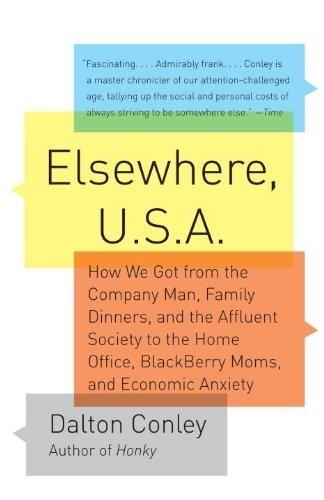
Elsewhere, U.S.A: How We Got From the Company Man, Family Dinners, and the Affluent Society to the Home Office, BlackBerry Moms,and Economic Anxiety
by
Dalton Conley
Published 27 Dec 2008
Yes, there was always pressure to keep up the speed and keep down the error rate, but contrast that with today’s knowledge worker, who needs to be able to multitask, constantly learn new computer programs, and generally adapt to a fluid work flow of highly variable tasks. It’s not that our jobs have necessarily gotten harder, but the increase in variance in our everyday tasks and the fact that they require more mental concentration and cognitive skills may be quite stress-inducing. There is always a new surprise just around the corner for the knowledge worker. The boring jobs that can be delegated to computers have been. Others that can’t have been outsourced to low-wage labor markets (the famous Indian call centers), thanks to telecommunications technologies.

The Productive Programmer
by
Neal Ford
Published 8 Dec 2008
Here you will learn how to enhance your focus with specific tools and approaches to interacting with your computer, as well as ways to make your coworkers leave you alone so that you can quit banging rocks together and get some work done. The goal is to get you back to that dazed but happy state of just having scaled a virtual mountain. Kill Distractions You are a knowledge worker, meaning you are paid for the creative and innovative ideas you produce. Dealing with constant distractions, both at your desk and on your desktop, can threaten your best contributions to your projects. Developers crave a state known as flow, discussed in lots of places (it even has an entire book devoted to it, written by Csikszentmihalyi).
…
These two areas don’t support a large number of items, but using them for just a few project consolidator folders makes sense. Multiply Your Monitors Monitors have gotten cheap, and developers can use the extra real estate. It is penny-wise and dollar foolish not to supply developers with ultra-fast computers and dual monitors. Every moment that a knowledge worker stares at an hourglass is pure wasted productivity. Having to work to manage all the overlapping windows on a cramped monitor also wastes time. Multiple monitors allow you to write code on one and debug on the other. Or keep documentation alongside your coding. Having multiple monitors is just the first step, though, because you can also segregate your dual workspaces into a bunch of specialized views using virtual desktops.

How PowerPoint Makes You Stupid
by
Franck Frommer
Published 6 Oct 2010
There is an underlying shift from ‘rational legal’ authority, based on the attribution of roles through rules, toward an authority of experts over other experts defined by their actions in the production process: one is judged not on status but by what one does. . . . The place and number of “knowledge workers” or “professional managers” . . . who are defined by their own work, not by supervising the work of others, is growing at the expense of middle management who seem to be the unproductive personnel in the organization of knowledge.22 Thus the sharing of information—still a major question of power for the hierarchy in some companies—in ordinary work meetings has been completely changed by the contribution of new tools fostering collective creation, exchange, collaboration, and debate.
…
See landscape format; slides: format How to Win Friends and Influence People (Carnegie), 23 human capital, 191, 212 human relations, 140 human resources, 175–80, 186, 188 Hussein, Saddam, 154 IBM, 9 illustration, 92–99 animation, 98 distracts students, 203 clip art, 97 polysemy, 93–95 teachers, 214–15 See also diagrams and graphs An Inconvenient Truth (Gore), 73, 118–24 Apple Macintosh, 120 awards and ticket sales, 119 biographical details, 121 information distraction, 226–27 processing, 10–12, 29 society, 126, 217, 227 Internet Gore, 120 military imagery, 157 Powell’s PowerPoint, 155 schools, 217 search engines, 65 security, 20 teachers and templates, 214–15 use in higher education, 199 iPad, iPhone, and iPod, 116–17, 226 Iran, 158, 161 Iraq, 154–55, 161–64 Israel, 161 Jaffe, Greg, 162 Jeanneret, Yves, 107 Jobs, Steve, 112–18, 227 Macworld Conference Expo, 113–17 Gates videoconference, 115–16 iPod and iPhone, 116–17 The Presentation Secrets of Steve Jobs, 117 jobs. See economization; education: employment Kawasaki, Guy, 85–86 Knoblauch, Herbert, 108, 126 knowledge society, 126–27, 227 transmission, 108–9, 126–27, 192, 205, 219 knowledge workers. See information processing Kodak, 25 landscape format, 6, 49, 78–79 See also slides: format language, 50–56, 66–75 advertising, 66–72 asyndeton, 69 ellipsis, 68 epideictic, 67 euphemism, 69–70 Anglo-influenced, 51–53 English, 53, 208 decontextualization, 55 impoverishment, 50–51, 223 indefinite article, 54 infinitive verb, 54–55, 59 Newspeak, 50–52, 70, 175, 188 nominalization, 52–53 propaganda, 66, 156, 161 quotation, 72–75 Laval, Christian, 210 layoffs.

The Captured Economy: How the Powerful Enrich Themselves, Slow Down Growth, and Increase Inequality
by
Brink Lindsey
Published 12 Oct 2017
Consider the wide range of factors implicated in the growing economic divide between the highly skilled (or, roughly speaking, the college educated) and everybody else. Skill-biased technological change, for instance, means that information technology serves as a valuable complement for skilled “knowledge workers” while substituting for less-skilled manual and clerical workers. The slowdown in the growth of workers’ average years of schooling completed means that the relative supply of skilled workers lags behind relative demand. Mass immigration expands the ranks of low-skill workers even as demand for them has flagged.
…
In the rapidly growing information technology sector, the presence of strong network effects in information technology guarantees that some industries will feature “winner take all” markets with high levels of concentration. Lobbyists for strong copyright and patent protection for software have further amplified this dynamic by fortifying the winners’ market power with additional barriers to entry. Meanwhile, network effects have also led to geographic concentration, as highly skilled knowledge workers are increasingly congregating together in “human capital hubs.” As a result, a few big coastal cities have come to account for an outsized share of the nation’s productive capacity, as well as its opportunities for upward mobility. Homeowners in those cities would have profited handsomely in any event, but they have multiplied their winnings by pulling up the drawbridge with increasingly restrictive land-use regulations, The opportunistic parasitism of regressive rent-seeking has hit the twenty-first-century American economy at its most vulnerable points—namely, its twin susceptibilities to slowing growth and rising inequality.
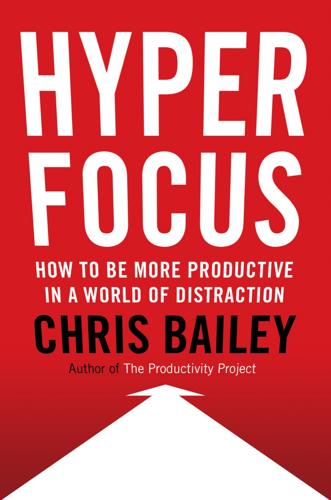
Hyperfocus: How to Be More Productive in a World of Distraction
by
Chris Bailey
Published 31 Jul 2018
Check for new messages only if you have the time, attention, and energy to deal with whatever might have come in. This is a simple trigger that lets you make sure you can actually deal with new messages, instead of getting stressed by the new stuff to which you have to respond. Keep a tally of how often you check for messages. The average knowledge worker checks his email eleven times per hour—eighty-eight times over the span of a day. It’s hard to get any real work done with so many interruptions. The same study found that employees spend an average of just around thirty-five minutes on email per day—which means that email consumes much more attention than it does actual time.
…
While it would be impossible to get rid of email completely, try the tactics above and experiment with what works best for you. Meetings After email, meetings are one of the biggest distractions we face throughout the day. They also consume an inordinate amount of time. A recent study found that, on average, knowledge workers spend 37 percent of their time in meetings—which means that if you work an eight-hour day, you typically spend three hours daily in meetings. Meetings are remarkably costly—gather even a small group of people in a conference room for an hour, and you can easily lose an entire day’s worth of work.

Machines of Loving Grace: The Quest for Common Ground Between Humans and Robots
by
John Markoff
Published 24 Aug 2015
At the same time, on the other side of campus, Douglas Engelbart, who was a dreamer intent on using his expertise to improve the world, believed that computers should be used to “augment” or extend human capabilities, rather than to mimic or replace them. He set out to create a system to permit small groups of knowledge workers to quickly amplify their intellectual powers and work collaboratively. One researcher attempted to replace human beings with intelligent machines, while the other aimed to extend human capabilities. Of course, together, their work defined both a dichotomy and a paradox. The paradox is that the same technologies that extend the intellectual power of humans can displace them as well.
…
White-collar employment had been the engine of growth for the U.S. economy since the end of World War II, but now cracks began to appear. What were once solid white-collar jobs began disappearing. Routinized white-collar work was now clearly at risk as the economy began to recover in 2009 in the form of what was described as a “jobless recovery.” Indications were that knowledge workers’ jobs higher up in the economic pyramid were for the first time vulnerable. Economists such as MIT’s David Autor began to pick apart the specifics of the changing labor force and put forward the idea that the U.S. economy was being “hollowed out.” It might continue to grow at the bottom and the top, but middle-class jobs, essential to a modern democracy, were evaporating, he argued.
…
It had been at the heart of Doug Engelbart’s original NLS system, but as the personal computer had emerged, much of Engelbart’s broader vision had been sidelined as first Xerox PARC and then Apple and Microsoft had cherry-picked his ideas, like the mouse and hypertext, while ignoring his broader mission for an intelligence augmentation system that would facilitate small groups of knowledge workers. Gruber created a software program that automatically generated a living document of the work done by a group of people. Over a couple of weeks he sat down and built a program named Hypermail that would “live” on the same computer that was running a mail server and would generate a threaded copy of an email conversation that could be retrieved from the Web.
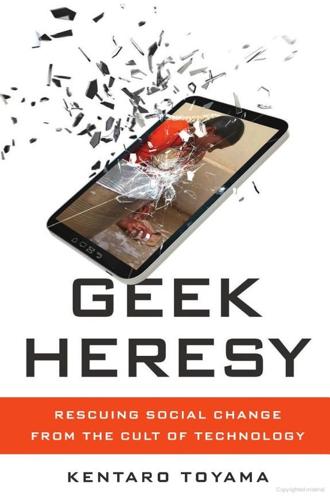
Geek Heresy: Rescuing Social Change From the Cult of Technology
by
Kentaro Toyama
Published 25 May 2015
Anyone committed to supporting these communities must undo the damage of earlier efforts first, before being able to meaningfully engage. 15.In a study with its partner, Voluntary Association for Rural Reconstruction & Appropriate Technology, Digital Green was found to increase annual income by 68 percent, on average, from $144 a year to $242. Some households saw their incomes double. 16.It’s also possible for technology projects to build the institutional capacity required from scratch. Grameen Foundation (2014), a nonprofit I advise that seeks technological innovations for global poverty, did exactly that in its Community Knowledge Worker (CKW) project in Uganda. It identified, recruited, trained, and empowered local villagers to serve as CKWs in their communities. 17.Ramkumar (2008) includes a case study on social audits, including challenges of implementation, as written by a former MKSS member. 18.Veeraraghavan (2013). 19.
…
New York Times, Sept. 11, 1990, www.nytimes.com/1990/09/11/science/probing-school-success-of-asian-americans.html. ———. (1995). Emotional Intelligence. Bantam Books. GOP Doctors Caucus. (n.d.). Health information technology, http://doctorscaucus.gingrey.house.gov/issues/issue/?IssueID=9947. Grameen Foundation. (2014). Lessons learned, 2009–2014: Community Knowledge Worker Uganda Program. Oct. 2014, http://grameenfoundation.org/sites/grameenfoundation.org/files/resources/Grameen-Foundation_CKW-Lessons-Learned-%282009-2014%29_Executive-Summary_0.pdf. Green, Elizabeth. (2014). Why do Americans stink at math? New York Times Magazine, July 23, 2014, www.nytimes.com/2014/07/27/magazine/why-do-americans-stink-at-math.html.
…
See also Self-help groups Collectivism, individualism and, 93 Colombia: One Laptop Per Child, 8 Communications Arab Spring suppression of, 33–34 cyberbalkanization, 47 history of technologies, 7–8 latent desires driving habits, 40–41 management, 44–46 personal and political interaction, 46–47 telecenters, 105 texting, 25, 56, 69, 235(n33) unintended consequences, 56 See also Mobile phones; Social media Community efforts. See Collective action; Mentorship Community Knowledge Worker (CKW) project, 247(n16) Compartamos Banco (Mexico), 58–60, 66–67, 236(n7) Compassionate class, 188–191, 270(n48). See also Self-transcendence Computer literacy, 9, 17–20, 27–28, 105, 122–124 Computer programming classes, 114–115, 120–121, 125–127, 248(n25) Computers and society. See Technology and society Confucianism, 96, 214, 266(n7) Consequentialist virtue ethics, 213–214, 274–275(n4) Consumer culture, 96–97, 177–178 Consumption capacity, 82–84 Consumption smoothing, 59.

What to Think About Machines That Think: Today's Leading Thinkers on the Age of Machine Intelligence
by
John Brockman
Published 5 Oct 2015
Both distract from the fact that at the heart of the debate is a very real John Henry moment. In the folktale of the late nineteenth century, the mythical steel-driving man John Henry dies beating a steam-powered hammer during a competition to drill blast holes into a West Virginia mountainside. White-collar and knowledge workers now face a race against being outperformed by machines driven by artificial intelligence. In this case, AI is mainly a synonym for new levels of mainly digital productivity. Which is of course not quite as exciting as either waiting for the moment of Singularity or the advent of doom. At the same time, the reality of AI is not quite as comforting as the realization that machines, if properly handled, will always serve their masters.
…
Just like the steam hammer in John Henry’s tale, most digital tools will outperform humans at highly specialized tasks. So of course there will still be a demand for high skills and outstanding talent. No computer will ever replace a scientist, an artist, an innovator. It’s the midlevel white-collar or knowledge worker who will fall behind. As AIs’ efficiencies and skill sets increase, they also become tools of power. Surveillance, warfare, and torture are done much better by an entity not prone to emotions, conflicted values, or fatigue. Still, the danger that hostile or even lethal machines will develop an evil consciousness and turn against humankind is nil.
…
It won’t take the advent of a superior intelligence to turn abstract debates about AI into very real questions of power, values, and societal changes. Technology can initiate and advance historical shifts; it will never be the shift itself. The John Henry moment of the twenty-first century will be neither heroic nor entertaining. There are no grand gestures with which white-collar and knowledge workers can go down fighting. There will be no folk heroes dying in the office park. Today’s John Henry will merely fade into a sad statistic. Undoubtedly calculated by a skillfully thinking machine. MACHINES AREN’T INTO RELATIONSHIPS N. J. ENFIELD Senior staff scientist, Max Planck Institute for Psycholinguistics, Nijmegen, the Netherlands; professor of linguistics, University of Sydney; author, The Utility of Meaning When we think of machines that think, we usually think of thinking in the pocket-calculator sense of the word.
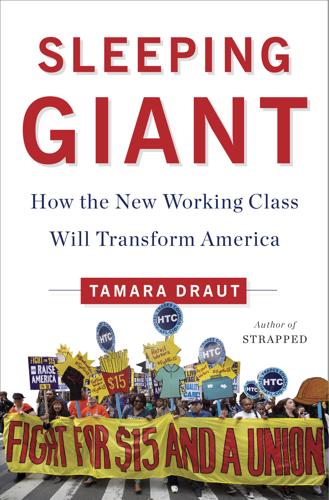
Sleeping Giant: How the New Working Class Will Transform America
by
Tamara Draut
Published 4 Apr 2016
The rest of America’s largest occupations are retail salespeople, cashiers, food service and prep workers, and janitors.10 Contrary to popular opinion, most of these jobs are not filled by teenagers but by adults who are trying to support themselves and their families with this work. Despite the elite’s fixation on entrepreneurship and knowledge workers, America is powered by wage-earners who punch the clock, wear uniforms, and don’t remotely have any power to “lean in” to climb the corporate ladder. For decades now we’ve been sold the idea that a growing army of knowledge workers, innovating and ideating in amenity-rich office parks, hold the key to our nation’s prosperity. Column after column written by the likes of Thomas Friedman and David Brooks argue that the future success of our economy rests on cultivating skills such as creative problem-solving and critical thinking, with a special affinity for fields in science, technology, and engineering.

Raw Data Is an Oxymoron
by
Lisa Gitelman
Published 25 Jan 2013
The best description of the dataverse from within precipitates nicely from the wonderful observation from Benjamin that Krajewski cites in chapter 6 (this volume): “And even today, as the current scientific method teaches us, the book is an archaic intermediate between two different card index systems. For everything substantial is found in the slip box of the researcher who wrote it and the scholar who studies in it, assimilated into its own card index.” We typically conceive of knowledge as passing from knowledge worker to knowledge worker via the intermediary of the datum. However, as Marx displayed so brilliantly with his M-C-M (money-commodity-money) cycle, we can achieve analytic purchase by looking at C-M-C (which in our era, felicitously, may refer to computer-mediated communication). We can start perhaps by refining the terms of the cycle.
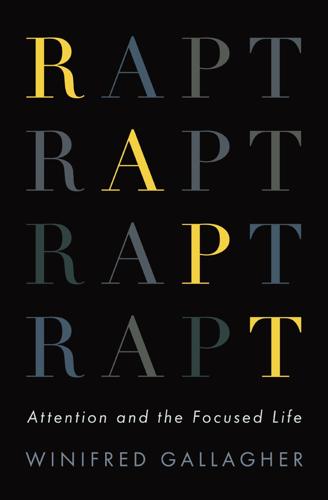
Rapt: Attention and the Focused Life
by
Winifred Gallagher
Published 9 Mar 2009
When discussing his favorite targets, Brown also describes the two expressions of the quintessential personality trait—often called “extraversion”—and the different attentional styles that tend to complement them. At one end of this continuum lies the introverted disposition and inward concentration typical of many “knowledge workers” drawn to the big cities where surveillance cameras abound. As Brown says, “Most of them are not really in the world. They’re just hooked into themselves, paying attention to their own thoughts and fears, as well as their cell phones, iPods, and BlackBerries. They walk very, very quickly with their eyes down diagonally, towards people’s shoes.
…
James, Henry James, William on attentional styles cognitive therapy and on improving attention Langer compared with on length of focus on rapt attention on wisdom Japan, Japanese Jefferson, Thomas Jha, Amishi Johns Hopkins Hospital Johnson, Samuel joy Jung, Carl justice Kabat-Zinn, Jon Kahneman, Daniel bounded rationality and effects of adaptation and fortune cookie maxim and Nobel Prize of personality tests and Kaiping Peng Kant, Immanuel Kaplan, Rachel Kaplan, Stephen Karney, Benjamin kindness Kine, Starlee King, Martin Luther Kismet (robot) knowledge, previous, integration of new information with knowledge workers Kohut, Heinz Langer, Ellen language Lazarus, Richard learning explicit vs. implicit of language leisure decision-making and Leonard, Elmore leverage points Levertov, Denise life, as creation of what is focused on see also meaning; quality of life Limb, Charles Listening to Prozac (Kramer) Locke, John longevity “look for the silver lining” loss risk vs.
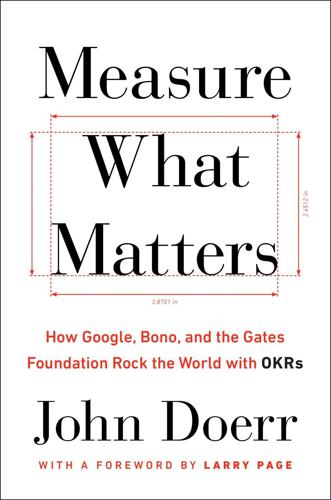
Measure What Matters: How Google, Bono, and the Gates Foundation Rock the World With OKRs
by
John Doerr
Published 23 Apr 2018
He sought to “create an environment that values and emphasizes output” and to avoid what Drucker termed the “activity trap”: “[S]tressing output is the key to increasing productivity, while looking to increase activity can result in just the opposite.” On an assembly line, it’s easy enough to distinguish output from activity. It gets trickier when employees are paid to think. Grove wrestled with two riddles: How can we define and measure output by knowledge workers? And what can be done to increase it? Grove was a scientific manager. He read everything in the budding fields of behavioral science and cognitive psychology. While the latest theories offered “a nicer way to get people to work” than in Henry Ford’s heyday, controlled university experiments “simply would not show that one style of leadership was better than another.
…
OKRs MBOs Intel OKRs “What” “What” and “How” Annual Quarterly or Monthly Private and Siloed Public and Transparent Top-down Bottom-up or Sideways (~50%) Tied to Compensation Mostly Divorced from Compensation Risk Averse Aggressive and Aspirational By 1975, when I arrived at Intel, Grove’s OKR system was in full swing. Every knowledge worker in the company formulated monthly individual objectives and key results. Within days of the iOPEC seminar, my supervisor directed me to do the same. I’d been put to work writing benchmarks for the 8080, Intel’s latest entry in the 8-bit microprocessor marketplace, where it reigned supreme. My goal was to show how our chip was faster and generally beat the competition.

Reinventing Capitalism in the Age of Big Data
by
Viktor Mayer-Schönberger
and
Thomas Ramge
Published 27 Feb 2018
Daimler CEO Dieter Zetsche announced a radical restructuring of his company, a symbol of German corporate conservatism, and its traditional top-down management culture. His goal was to have 60,000 employees—around 20 percent of Daimler’s global workforce—operate outside their former reporting lines and corporate silos within one year. Knowledge workers at Mercedes-Benz’s parent company weren’t laid off; they were asked to become part of a reshaped organization with flexible teams and less hierarchy. Zetsche is a tall, slim man with a background in electrical engineering. He is easy to recognize, thanks to his bushy mustache and his sense of humor.
…
Fukoku concedes that experienced employees will still have to check and approve the decisions the new system will suggest, but Fukoku is already looking into installing another machine learning system to do this double-checking. For decades, tech pundits have claimed that artificial intelligence will replace human knowledge workers. It always seemed possible, but it has rarely happened. Even routine clerical decisions at insurance companies weren’t standardized and simple enough to automate with artificial intelligence systems based on fixed rules. But artificial intelligence has evolved—from systems based on general rules to learning ones—trained on massive amounts of data.
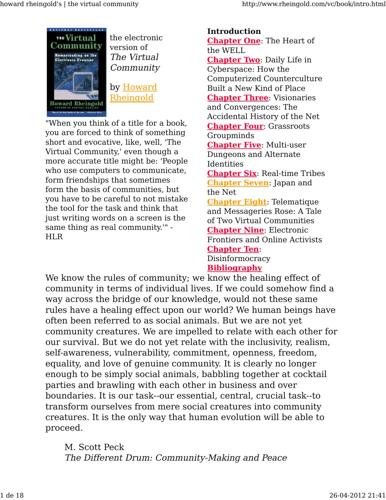
Howard Rheingold
by
The Virtual Community Homesteading on the Electronic Frontier-Perseus Books (1993)
Published 26 Apr 2012
Studio speakers are on either side, focused on the one chair in the middle of all the equipment. A television is mounted at eye level, above the audio monitor. A telephone is at his right hand. And directly in front of him is the computer and modem. David Gans marinates himself in media for a living. Not exactly what Peter Drucker envisioned when he coined the term knowledge worker, I'd bet. David Gans, like a lot of others these days, is multitasking. The WELL is just part of the information flow. Then there is Mandel , who appears at first glance to better fit the image of the information-age specialist. He brought some kind 26-04-2012 21:42 howard rheingold's | the virtual community 15 de 27 http://www.rheingold.com/vc/book/2.html of intellectual respectability to the high-tech bull session.
…
For some time now, these early adopters have been joined by the first ranks of the mainstream CMC users. Increasingly, many people who paint houses or build boats or work in an office or hospital or sell real estate, but who are curious about new cultural phenomena and not afraid of using a computer keyboard to express themselves, are mixing it up with the knowledge workers. People who work for themselves, whether it is with their hands or their symbols, have been plugging into the Net for the kind of tactical and emotional support others get at the office or factory. Since so many members of virtual communities are workers whose professional standing is based on what they know, virtual communities can be practical instruments.
…
If you need specific information or an expert opinion or a pointer to a resource, a virtual community is like a living encyclopedia. Virtual communities can help their members, whether or not they are information-related workers, to cope with information overload. The problem with the information age, especially for students and knowledge workers who spend their time immersed in the info flow, is that there is too much information available and few effective filters for sifting the key data that are useful and interesting to us as individuals. Programmers are trying to design better and better software agents that can seek and sift, filter and find, and save us from the awful feeling one gets when it turns out that the specific knowledge one needs is buried in fifteen thousand pages of related information.
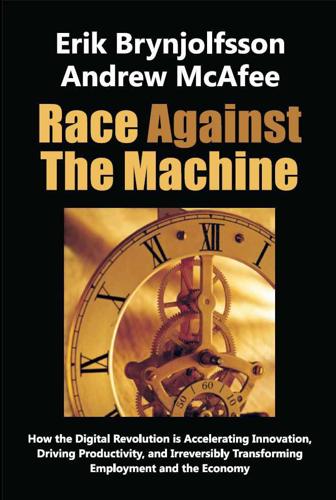
Race Against the Machine: How the Digital Revolution Is Accelerating Innovation, Driving Productivity, and Irreversibly Transforming Employment and the Economy
by
Erik Brynjolfsson
Published 23 Jan 2012
And these changes build and feed on each other so that the possibilities offered really are constantly expanding. This has been the case for as long as businesses have been using computers, even when we were still in the front half of the chessboard. The personal computer, for example, democratized computing in the early 1980s, putting processing power in the hands of more and more knowledge workers. In the mid-1990s two major innovations appeared: the World Wide Web and large-scale commercial business software like enterprise resource planning (ERP) and customer relationship management (CRM) systems. The former gave companies the ability to tap new markets and sales channels, and also made available more of the world’s knowledge than had ever before been possible; the latter let firms redesign their processes, monitor and control far-flung operations, and gather and analyze vast amounts of data.
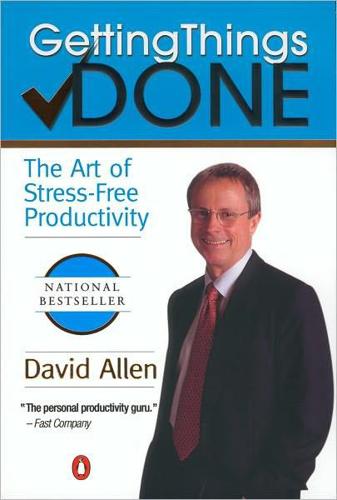
Getting Things Done: The Art of Stress-Free Productivity
by
David Allen
Published 31 Dec 2002
The Real Work of Knowledge Work Welcome to the real-life experience of “knowledge work,” and a profound operational principle: You have to think about your stuff more than you realize but not as much as you’re afraid you might. As Peter Drucker has written, “In knowledge work . . . the task is not given; it has to be determined. ‘What are the expected results from this work?’ is . . . the key question in making knowledge workers productive. And it is a question that demands risky decisions. There is usually no right answer; there are choices instead. And results have to be clearly specified, if productivity is to be achieved.” The ancestor of every action is a thought. —Ralph Waldo Emerson Most people have a resistance to initiating the burst of energy that it will take to clarify the real meaning, for them, of something they have let into their world, and to decide what they need to do about it.
…
We need to transform all the “stuff” we’re trying to organize into actionable stuff we need to do. “Stuff” is not inherently a bad thing. Things that command our attention, by their very nature, usually show up as “stuff.” But once “stuff” comes into our lives and work, we have an inherent commitment to ourselves to define and clarify its meaning. That’s our responsibility as knowledge workers; if “stuff” were already transformed and clear, our value, other than physical labor, would probably not be required. At the conclusion of one of my seminars, a senior manager of a major biotech firm looked back at the to-do lists she had come in with and said, “Boy, that was an amorphous blob of undoability!”

The Glass Cage: Automation and Us
by
Nicholas Carr
Published 28 Sep 2014
In the workplace, automation’s focus on enhancing speed and efficiency—a focus determined by the profit motive rather than by any particular concern for people’s well-being—often has the effect of removing complexity from jobs, diminishing the challenge they present and hence the engagement they promote. Automation can narrow people’s responsibilities to the point that their jobs consist largely of monitoring a computer screen or entering data into prescribed fields. Even highly trained analysts and other so-called knowledge workers are seeing their work circumscribed by decision-support systems that turn the making of judgments into a data-processing routine. The apps and other programs we use in our private lives have similar effects. By taking over difficult or time-consuming tasks, or simply rendering those tasks less onerous, the software makes it even less likely that we’ll engage in efforts that test our skills and give us a sense of accomplishment and satisfaction.
…
(quiz show), 118–19, 121 Jobless Future, The (Aronowitz and DiFazio), 27–28 jobs, 14–17, 27–33, 85, 193 automation’s altering of, 67, 112–20 blue-collar, 28, 109 creating, 31, 32, 33 growth of, 28, 30, 32 loss of, 20, 21, 25, 27, 28, 30, 31, 40, 59, 115–18, 227 middle class, 27, 31, 32, 33n white-collar, 28, 30, 32, 40, 109 Jobs, Steve, 194 Jones, Michael, 132, 136–37, 151 Kasparov, Garry, 12 Katsuyama, Brad, 171 Kay, Rory, 58 Kelly, Kevin, 153, 225, 226 Kennedy, John, 27, 33 Kessler, Andy, 153 Keynes, John Maynard, 26–27, 66, 224, 227 Khosla, Vinod, 153–54 killing, robots and, 184, 185, 187–93 “Kitty Hawk” (Frost), 215 Klein, Gary, 123 Knight Capital Group, 156 know-how, 74, 76, 115, 122–23 knowledge, 74, 76, 77, 79, 80–81, 84, 85, 111, 121, 123, 131, 148, 153, 206, 214, 215 design, 144 explicit (declarative), 9, 10–11, 83 geographic, 128 medicine and, 100, 113, 123 tacit (procedural), 9–11, 83, 105, 113, 144 knowledge workers, 17, 148 Kool, Richard, 228–29 Korzybski, Alfred, 220 Kroft, Steve, 29 Krueger, Alan, 30–31 Krugman, Paul, 32–33 Kurzweil, Ray, 181, 200 labor, 227 abridging of, 23–25, 28–31, 37, 96 costs of, 18, 20, 31, 175 deskilling of, 106–12 division of, 106–7, 165 intellectualization of, 118 in “Mowing,” 211–14 strife, 37, 175 see also jobs; work Labor and Monopoly Capital (Braverman), 109–10 Labor Department, U.S., 66 labor unions, 25, 37, 59 Langewiesche, William, 50–51, 170 language, 82, 121, 150 Latour, Bruno, 204, 208 lawn mowers, robotic, 185 lawyers, law, 12, 116–17, 120, 123, 166 learning, 72–73, 77, 82, 84, 88–90, 175 animal studies and, 88–89 medical, 100–102 Lee, John, 163–64, 166, 169 LeFevre, Judith, 14, 15, 18 leisure, 16, 25, 27, 227 work vs., 14–16, 18 lethal autonomous robots (LARs), 188–93 Levasseur, Émile, 24–25 Leveson, Nancy, 155–56 Levesque, Hector, 121 Levinson, Stephen, 101 Levy, Frank, 9, 10 Lewandowsky, Stephan, 74 Lex Machina, 116–17 Licklider, J.

Listen, Liberal: Or, What Ever Happened to the Party of the People?
by
Thomas Frank
Published 15 Mar 2016
This is why we still find advertising by lawyers and doctors somewhat off-putting, and why Americans were once shocked to learn that radio personalities took money to play records they didn’t genuinely like: because professionals are supposed to answer to a spirit more noble than personal gain.7 With the rise of the postindustrial economy in the last few decades, the range of professionals has exploded. To use the voguish term, these are “knowledge workers,” and many of them don’t fit easily into the old framework. They are often employees rather than independent practitioners, taking orders from some corporate manager instead of spending their lives in private practice. These modern professionals aren’t workers per se, and they aren’t capitalists either, strictly speaking.
…
The Boston area has all the ancillary advantages to show for it: a highly educated population, an unusually large number of patents, and more Nobel laureates than any other city in the country.7 Harvard University, the country’s oldest institution of higher learning, is actually mentioned in Massachusetts’s 1780 constitution, a document which quaintly declares the commonwealth’s interest in promoting “the republic of Letters.” These days, all Americans are interested in higher ed, but not because we want better poets and theologians. We love our universities because we believe they carry a straight-up payoff in dollars. Here, too, Massachusetts is the model. The Boston area has prospered fabulously as knowledge workers have become the country’s dominant cohort. In every sort of lab-coat and starched-shirt pursuit the city is well-represented: it has R&D; it has law firms; it has investment banks; it has management consulting; it has a remarkable concentration of life-science businesses. The coming of post-industrial society* has treated this most ancient of American cities extremely well.
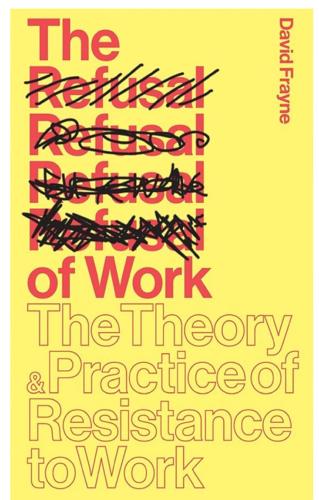
The Refusal of Work: The Theory and Practice of Resistance to Work
by
David Frayne
Published 15 Nov 2015
Futurologists forecasted the advent of a new ‘knowledge economy’, which would see a shift away from the standardised manual work of old, towards a higher concentration of smart jobs in the service and computer-based industries (Bell, 1973). Now a political orthodoxy, the notion of a new ‘knowledge economy’ was first celebrated by economists and sociologists in the 1960s, when it was generally believed that the future prosperity of nations would depend on their ability to produce intelligent, knowledgeable workers for a new era of work. Post-industrial forms of employment would help reintroduce the ‘human factor’ into work, and jobs would no longer simply be about efficiency and obeying orders; they would draw on the more distinctively human qualities such as social competence, cognitive ability, practical experience, or consciousness of responsibility, offering workers new opportunities to feel morally invested in their work (Offe, 1985: 137–8).
…
P. (1967) ‘Time, Work-Discipline and Industrial Capitalism’, Past & Present, 38, 1, pp 56–97. http://dx.doi.org/10.1093/past/38.1.56 Thompson, E. P. (1976) ‘Romanticism, Moralism and Utopianism: The Case of William Morris’, New Left Review, 99, pp 83–111. Thompson, P., C. Warhurst and G. Callaghan (2001) ‘Ignorant Theory and Knowledgeable Workers: Interrogating the Connections Between Knowledge, Skills and Services’, Journal of Management Studies, 38, 7, pp 923–942. http://dx.doi.org/10.1111/1467-6486.00266 Thoreau, H. (1962) ‘Life Without Principle’, in H. Thoreau, Walden and Other Writings, edited by J. Krutch, New York: Bantam Books.
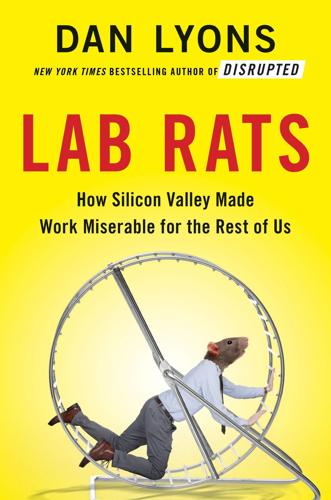
Lab Rats: How Silicon Valley Made Work Miserable for the Rest of Us
by
Dan Lyons
Published 22 Oct 2018
After Frederick Taylor came Peter Drucker, an Austrian-born intellectual whose thirty-nine books, including Concept of the Corporation (1946) and The Practice of Management (1954), established him as “the father of modern management.” Drucker was a trained economist and respected academic who coined the term knowledge worker. He loved Taylor and ranked him above all other business thinkers. He shared Taylor’s love of quantification and data gathering. “If you can’t measure it, you can’t improve it” is perhaps Drucker’s most famous quote. Later came Michael Porter, a Harvard business professor who claimed to have developed a methodology that would enable companies to create sustainable advantages using his Five Forces Framework.
…
Management Science Meets the Information Age Twentieth-century Taylorite methodologies like Six Sigma, Lean Manufacturing, and the Toyota Production System were developed for manufacturing physical things—cars, airplanes, lawn furniture, whatever. But now we’re in the Information Age, and most of us work with our brains, not our hands. Of course, with the rise of the Internet, clever management consultants started wondering if you could create a system that would optimize the productivity of knowledge workers and impose rigor and discipline on tasks like writing software code. And hey, if you could develop a scientific system for writing software, why not apply that to every aspect of running a company? Two new forms of Taylorism attempt to do that. The biggest is Agile, a management fad that has swept the corporate world and morphed into what some call a movement but is more like widespread mental illness.
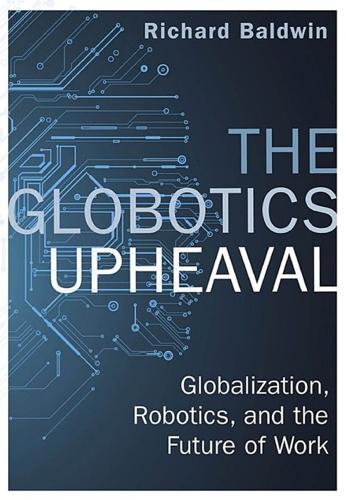
The Globotics Upheaval: Globalisation, Robotics and the Future of Work
by
Richard Baldwin
Published 10 Jan 2019
Here AI shouldn’t be viewed as a straight-out job destroyer since, indeed, the only alternative to employing AI would be to ignore the data (as is often the case even today). “People who worry about job losses to automation tend to overlook the unprecedented data explosion businesses are experiencing, now accelerating out of knowledge workers’ control and demanding automation to deal with it,” write London School of Economics professors Leslie Willcocks and Mary Lacity.13 Many of the firms that the professors studied have already adopted RPA solutions, and yet they have promised their workers that the robots would not lead to any layoffs—even if the RPAs meant that there would be no new hires in the department.
…
World Economic Forum, “The Future of Jobs Employment, Skills and Workforce Strategy for the Fourth Industrial Revolution,” January 2016. 11. Masayuki Morikawa, “Who Are Afraid of Losing Their Jobs to Artificial Intelligence and Robots? Evidence from a Survey,” RIETI Discussion Paper 17-E-069, 2017. 12. Pew Research Center, “AI, Robotics, and the Future of Jobs,” August 2014. 13. Mary C. Lacity and Leslie Willcocks, “What Knowledge Workers Stand to Gain from Automation,” Harvard Business Review, June 19, 2015. 14. Rita Brunk, “The ABC of RPA, Part 5: What Is the Cost of Automation and How Do I Justify It to the Leadership Team?” Genfour.com, July 21, 2016. 15. Patrick Clark and Kim Bhasin, “Amazon’s Robot War Is Spreading,” Bloomberg, April 5, 2017. 16.

Road to Nowhere: What Silicon Valley Gets Wrong About the Future of Transportation
by
Paris Marx
Published 4 Jul 2022
In 2015, journalist Lauren Smiley described the growing on-demand, app-based economy as the shut-in economy, where “you’re either pampered, isolated royalty—or you’re a 21st century servant.”10 Smiley observed that San Francisco was increasingly divided into two groups. On one side were the tech workers and a broader group of “knowledge” workers who earned high salaries, worked long hours, and used the gig apps to get everything from food delivery and laundry services to house cleaning, dog walking, and childcare. On the other was the contract labor force that delivered those services with few protections, no benefits, and precariously low pay.
…
As the tech economy was entering a new stage after the dot-com bubble had burst, cities tried to attract a particular class of worker in the hope that industries wanting to employ them would follow. The “creative class” theory, as outlined by urbanist and consultant Richard Florida, asserted that governments needed to create urban amenities and pass laws that would specifically appeal to this segment of high-demand “knowledge” workers with above-average incomes, further sidelining the residents who had already been hit by the shift to urban entrepreneurialism. In the process of importing affluent workers, cities embraced further gentrification, causing house prices to soar and urban inequality to deepen. In line with Florida’s model, sociologist Sharon Zukin explained that before the 2008 recession, cities assumed that “providing green space, bicycle paths, and cultural facilities, all much cheaper than affordable housing and more politically palatable than business subsidies, would help them to be winners in the global economy.”15 But with the post-recession growth of the tech industry, cities were positioned as “the social and cultural locus of technological innovation that makes businesses and countries winners in the global economy.”16 Guided by that strategy, there was a greater focus on providing public support to grow the sector and to ensure universities were producing both the talent and the intellectual property to form start-ups and attract industry giants.

Rule of the Robots: How Artificial Intelligence Will Transform Everything
by
Martin Ford
Published 13 Sep 2021
THE COMING WAVE OF WHITE COLLAR AUTOMATION… AND WHY TEACHING EVERYONE TO CODE IS NOT A SOLUTION The specter of job automation typically conjures up images of industrial robots toiling in factories or warehouses. The conventional wisdom suggests that, while lower-wage, less-educated, blue collar workers face a dire threat from technology, knowledge workers educated with at least a bachelor’s degree—or in other words, anyone whose occupation consists of tasks that are primarily of an intellectual, rather than a manual, nature—remain on relatively safe ground. The reality, however, is that white collar jobs, and in particular those that center on relatively routine analysis, manipulation, extraction or communication of information, are going to be squarely in the sights as artificial intelligence advances and is deployed ever more widely.
…
As technology begins to encroach on even these more educated and highly paid workers, inequality is likely to become ever more top heavy, with a tiny elite that owns vast amounts of capital pulling away from everyone else. As better-paid workers are increasingly impacted, this will further undermine consumer spending and the potential for robust economic growth. One possible upside, however, is that better-paid knowledge workers wield far more political power than their counterparts who work in factories or low-wage service occupations. As a result, the impact on white collar jobs may actually help to galvanize support for a policy response to technological disruption of the job market. WHICH JOBS ARE SAFEST? Over the past few years, I’ve traveled to nearly every continent and given dozens of presentations on the potential impact of artificial intelligence and robotics on job markets.

The Zero Marginal Cost Society: The Internet of Things, the Collaborative Commons, and the Eclipse of Capitalism
by
Jeremy Rifkin
Published 31 Mar 2014
Perlow says that while brick-and-mortar retail will not disappear, in “ten years hence [the] retail footprint will be a shadow of its former self and heavy competition from online will allow only the strongest brick-and-mortar businesses to survive.”32 As in other industries where automation is quickly reducing human labor, virtual retailing is following suit. At best we can say that the future does not look good for the 4.3 million workers in brick-and-mortar retail as we move closer to near zero marginal labor costs and a near workerless world.33 Even Knowledge Workers are Expendable By 2005, the anecdotal evidence of automation replacing workers in the manufacturing and service industries was no longer an object of curiosity. Automation had become pervasive. Everywhere we turned, it seemed, workers had disappeared and we found ourselves surrounded by intelligent-machine surrogates talking to us, listening to us, directing us, advising us, doing business with us, entertaining us, and watching over us.
…
Using eDiscovery software, Herr found only 60 percent accuracy when attorneys were doing the research, leading him to gripe: “Think about how much money had been spent to be slightly better than a coin toss.”35 Very few professional skills are being spared the long arm of IT and Big Data–crunching by algorithms. Knowledge workers of every stripe and variety—radiologists, accountants, middle managers, graphic designers, and even marketers—are already feeling the heat as pattern-recognition software begins to penetrate every professional field. Mike McCready is the head of a startup company called Music Xray, a firm that uses Big Data and algorithms to identify potential musical hits.
…
Behrokh, 96–97 Kickstarter, 256 Ki-moon, Ban 285 Koenig, Friedrich, 44 Konrath, Sarah, 280 Kuhn, Thomas, 9 Kümmel, Reiner, 71 Kurzweil, Ray, 84 Lamberth, Laurie, 74–75 Lange, Oskar, 5–7 last worker standing, 121–133 and the end of work, 121–128 even knowledge workers are expendable, 128–133 Latif, Majib, 288 laws of thermodynamics, govern all economic activity, 10–11 Layard, Richard, 277 Leontief, Wassily, 5, 105 Lessig, Lawrence, 175, 177–180, 185, 188 Lewis, James W., 281 Linux, 170, 175–176, 199, 309 live healthier lives, how to, 275 local exchange trading systems (LETS), 259–262 Locke, John, 60–62 Loescher, Peter, 14 The London Independent, 188 Lovelock, James, 184 L3C laws, 265 Luther, Martin, 58–59 Lymphangioleiomyomatosis (LAM), 241–242 Lynch, Mike, 129 Lynn, Mary Scott, 147 Makerbot Industries, 94 Makers Movement, 93–94, 99, 103 manufacture vs. infofacture, 90 marginal cost economy. see near zero marginal cost society Margulis, Lynn, 184 market economy, 4, 61 rise of the 32–38 Martin, Dean, 144 Marx, Karl, 33, 41, 105 massive open online courses (MOOCs), 4, 109–119, 247, 309–310 and the decline of the brick and mortar classroom, 113–119 negatives of, 117–118 the one-room schoolhouse with two billion students, 109–113 and peer-to-peer grading, 115–116 and service learning, 111–113, 264 and teachers as facilitators, 110 see also Coursera; edX; Udacity materialism/materialist(s), 276–279 mercantilist policies, 37 Mestrallet, Gérard, 141 microcurrencies, 259–262 microgrid(s), 103–104, 107, 294–295 microplot(s), 239 micropower plant(s), 69, 101, 102, 146, 267, 294–295 Millennial Generation, 19, 226, 230, 252, 264, 280–283 Mill, John Stuart, 63 Moglen, Eben, 175–176 monopoly or oligopoly, 6–8, 23, 198, 202, 307 and AT&T, 49–51 and effect on capitalism, 3 “natural monopoly,” 8, 50–51, 136–138, 203–204 temporary, 8 Montreuil, Benoit, 219–220 Moore, Gordon, 79–82 Moore’s Law, 79–80, 82, 147, 169 More, Sir Thomas, 31 Morgan Stanley, 54, 292 Mosaic, 146, 256–257 Moss, Frank, 242 music sharing, 232 Music Xray, 130 Myspace, 201 Napster, 170, 232 National Human Genome Research Institute, 169 Resources Defense Council (NRDC), 147 Science Foundation, 96 Telecommunications and Information Administration (NTIA), 149 near zero marginal cost society, 68–151 ascent of the prosumer and the build-out of the smart economy, extreme productivity, the Internet of Things, and free energy, 69–87 getting closer to, 84–87 the last worker standing, 121–133 and marginal cost controversy, 135–138 MOOCs, 109–119 reluctance to come to grips with, 5 3D printing, 89–108 see also paradigm shift from market capitalism to Collaborative Commons network neutrality, 197–198, 203 The New Capitalist Manifesto (Haque), 253 Networked Commons, 119, 151, 173, 190, 194, 202, 212, 221, 222, 229–233, 237–241, 309 Newmark, Craig, 249 The New York Times, 5, 129, 251, 281 Noam, Eli, 151, 194 Northern Renaissance, 36, 300 Noubel, Jean-Francois, 262 Obama, President Barack, 71–72, 128 Occupy Movement, 57 oil cost of, 87, 137–138, 233 crude oil reserves are dwindling, 86–87 and infrastructure, 72 mass production of automobiles, effect on, 52–53 and the Second Industrial Revolution, 47–54 spills, 165, 290 Standard Oil Company, 48–49, 51 see also fossil fuel(s); Hall, Andy online higher education. see massive open online courses (MOOCs) Open Source Initiative (OSI), 176 “optimum general welfare,” 3 Organization for Economic Co-operation and Development (OECD), 21, 277 The Origin of Species (Darwin), 64 Ostrom, Elinor, 158–162, 175, 190 Paine, Thomas, 65 paradigm shift from market capitalism to Collaborative Commons, 1–25 and changing the economic paradigm, 9–11 and the Internet of Things, 11–16 and the rise of the Collaborative Commons, 16–25 Parkifi, 145–146 Patagonia, 263 patent(s), 138, 165–167, 170, 174–177, 180–181, 202 patient-driven research (PDR), 19, 240–247 peer-to-peer social lending, 255–257 Perens, Bruce, 176 Perlow, Jason, 128 Perry, Mark J., 122–123 Personal Genome Project, 180 The Philosophy of Money (Simmel), 259 phone, importance of, 49–51 population, key to stabilization of, 285 poverty, 21, 107–112, 209, 264, 275–278, 283–286 print, and the impact it had on the way we do business, 35–36, 178–179 printing press(es), 33–37, 44–45 privacy, age of, 75–77 property relations, notion of, 30–32 prosumer(s) ascent of the, 135–151 beyond governments and markets, 150–151 and the clean web, 144–147 definition of, 4, 90 and free wi-fi for everyone, 147–149 and power to the people, 138–144 protests to reclaim the public Commons, 187–188 QR code, 127 Quigg, Donald J., 166 rallying around free software, 174–177 Raspberry Pi, 80 Raymond, Eric S., 176–177 RelayRides, 228 rental(s)/renting. see social capital and the sharing economy reputation rankings on the web, 257–259 reviews, consumer-generated, 248–249 Rifkin, Milton, 305–306, 309 rise in collaborative innovation, 21 Rochdale Society of Equitable Pioneers, 212–213 Rockefeller, John D., 48–49 Rose, Carol, 157–158 Rowe, Jonathan 190 Royal Dutch Shell, 49, 54, 142 Ruben, Andy, 237–238 Rural Electric Administration (REA), 209–210 Say, Jean-Baptiste, 3 Say’s Law, 3 scarcity. see abundance Schelgel, Heather, 262 Scherzer, Norman, 243 Schlatter, Richard, 30, 62 Schor, Juliet, 280 Schumacher, E.
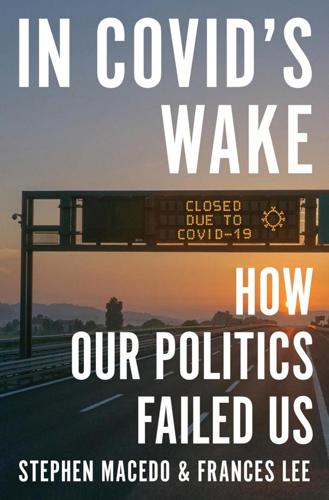
In Covid's Wake: How Our Politics Failed Us
by
Stephen Macedo
and
Frances Lee
Published 10 Mar 2025
Despite the vast scale of the Covid response, no policies were enacted to protect 14 chapter 1 essential workers at elevated risk from Covid.31 While white-collar workers quarantined at home at full pay and laid-off nonessential workers of all health statuses received generous unemployment benefits, essential workers—often poorly paid and receiving no fringe benefits—were required to continue on the job regardless of their personal risk. Such workers rarely even received hazard pay. As one might expect, they and their family members were substantially more likely to get infected.32 It was striking how little attention or discussion these inequities received during the pandemic. Members of the “laptop class”—adult knowledge workers and others able to work remotely—typically coped adequately with or even thrived amid pandemic restrictions. The wealthy saw their bank accounts, home values, and investment accounts grow. The poor experienced economic and educational setbacks during the pandemic and then had to endure protracted high inflation downstream of pandemic policies.
…
The premature moralization of disagreement along partisan lines undermined basic norms of democracy (accountability requires an opposition party), liberalism (openness to criticism as the best test of truth, per John Stuart Mill), and science (a community of scientists open to a diversity of viewpoints, contestation, and refutation, per Karl Popper and Oreskes). Elite conventional wisdom needed to be checked by discussion among a broader range of experts, and—perhaps even more important—it needed to be balanced by a broader discussion extending beyond knowledge workers and professionals to include citizens more generally. Chapter 5. Laboratories of Democracy? This chapter explains the range of policies adopted by the fifty states. Although nearly all closed schools and businesses initially in March and early April 2020, Red states reopened faster. Blue states kept lockdowns in place longer and reimposed restrictions more frequently.
…
What had once been thought impossible was now shown to be possible. What had long been treated as an ineffective and ruinously costly strategy was now lauded as the only way to avoid catastrophe. B ecause a g reat deal of commerce and videoconferencing had migrated online, society-w ide lockdown now seemed possible to many—especially to the elite knowledge workers who could work remotely and who wielded the greatest influence over public policy. The contributions of the millions of less affluent “essential workers” to the feasibility and the comfort of lockdown were taken for granted by anxious members of the laptop class. There was no alternative. This view was, as we s hall see, asserted emphatically by influential figures in the WHO, in public health and academic advisory groups, and in the mainstream media.7 Prominent voices on the left and right argued that t here was no choice but to accept limits on personal freedom and massive social surveillance, and to a surprising extent, most Americans regardless of party initially accepted this grim prescription.
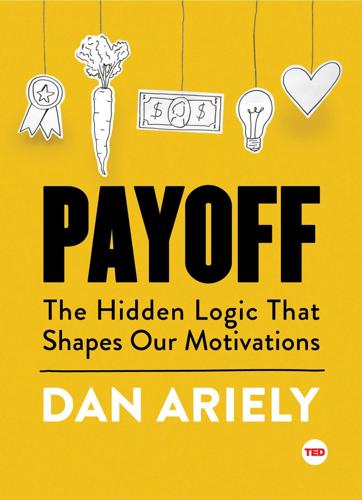
Payoff: The Hidden Logic That Shapes Our Motivations
by
Dan Ariely
Published 15 Nov 2016
Sometimes I might be highly motivated to find a particular answer to a question, but the concept I am working on is not the right one. Sometimes I might not be terribly motivated, but I stumble on a good research topic. The challenges with measuring my productivity are not unique to professors; in fact, they are common to most knowledge workers. Your productivity is likely to be as complex, if not more so, than mine to measure. To test the effectiveness of different motivations, we needed to study a work environment in which employee output could be easily and accurately measured and where the tasks were more or less constant. I lucked out when Guy Hochman, then a Duke postdoctoral fellow, introduced me to Liad Bareket, who worked in the HR department at Intel in Israel.
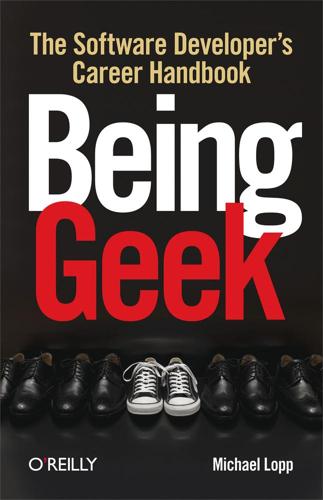
Being Geek: The Software Developer's Career Handbook
by
Michael Lopp
Published 20 Jul 2010
On Experience In order to appreciate this chapter, you need to make a leap—you need to believe that your boss's experience is valuable. You need to believe and accept that the fact he's been doing this 10 years longer than you means his opinion is more informed. His decisions are based on something more than gut feel and delusions of grandeur. We're knowledge workers, which is an awkwardly lame way of stating that we don't actually build physical things with our hands. We build nonphysical things with our minds. We create interesting arrangements of ones and zeros in the confines of our caves, coalescing our ideas into things that are, hopefully, useful enough that someone else is willing to pay for them.
…
judgment, as source of the Nerves, The Nerves K keyboard support, My Tools Are Designed to Remove Repetitive Motion Keynote software, The Unforgivable Mistake knowledge, Delivery, The Gaps, The Gaps Alpha Knowledge team members, The Gaps as fundamental unit of growth, Delivery knowledge workers, On Experience L language, Apprenticeship, You Will Be a Multilingual Translator, You Will Be a Multilingual Translator in company groups, You Will Be a Multilingual Translator industry, Apprenticeship lawyers, calls from, The Itch leadership, People Lie, Some Are Evil, Others Just Want to Screw You, Circle of Comfort, Context Switcher, Context Switcher, Knowledge and Ability: "Alpha Knowledge" as composure under stress, Context Switcher evolution of roles, People Lie, Some Are Evil, Others Just Want to Screw You Maestro team members, Knowledge and Ability: "Alpha Knowledge" role of, Circle of Comfort listening, Bridge, Bridge, You Go to a Lot of Meetings detecting company culture, Bridge management responsibility for, You Go to a Lot of Meetings lists, The Taste of the Day, The Taste of the Day, The Trickle List taste of the day, The Taste of the Day Trickle List, The Trickle List lying, as skill, People Lie, Some Are Evil, Others Just Want to Screw You lynchpin departure, Why are they letting them go?

No Ordinary Disruption: The Four Global Forces Breaking All the Trends
by
Richard Dobbs
and
James Manyika
Published 12 May 2015
Between 1980 and 2010, 1.1 billion adults entered the twenty- to sixty-four-year-old age bracket and joined the world’s labor force.25 But due to a host of demographic factors, global labor force growth will fall by nearly one-third by 2030.26 At the same time, technology is roiling labor markets as never before. Computers, which historically replaced manual and clerical workers, such as stenographers and bank tellers, are now beginning to replace knowledge and skilled workers, like journalists and stock analysts. By 2025, in fact, computers could do the work of 140 million knowledge workers, and robots could do the work of another 75 million people.27 And yet there will still be high demand for skilled positions in engineering, software development, and health care. Four out of ten respondents in a McKinsey survey reported that they currently couldn’t find the talent they need.
…
For example, as part of a financial inclusion program, introduction of technology allowed twenty thousand less-skilled workers in southern India to work as rural banking agents, processing payments with smart cards, cell phones, and kiosks. Using technology to improve the productivity of professional and managerial work has traditionally not received as much attention as it has for more labor-intensive occupations. Research, however, is showing that organizations could realize improvements in knowledge-worker productivity by about 20 percent.19 Using social platforms as a primary way to communicate and collaborate would vastly reduce the time it takes to write and answer e-mails, eliminate lengthy searches for internal knowledge and expertise, and reduce other tasks that consume the equivalent of a day’s work per week.
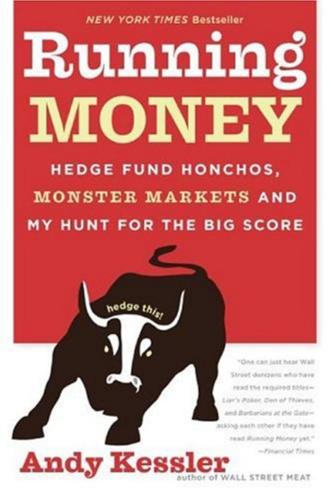
Running Money
by
Andy Kessler
Published 4 Jun 2007
“But what do you mean by scale? What did you see back then?” “Two things. I did a scaling study in the ’50s that convinced me that components would keep getting cheaper and there was going to be all the bandwidth you could ever use—” Doug answered. “That was before the integrated circuit,” I interrupted. “So that every knowledge worker was going to be equipped.” Doug Engelbart rightly ignored me and kept talking. “The other scale was human scale—” “You mean, computers easy to use,” I interrupted again. “Well, that’s part of it. Yes, certainly there is scale from getting people to use complex systems, from hiding the complexity from them, so the hurdle is lowered.” 122 Running Money “That’s the human scale.”
…
See intellectual property IPOs, 3, 60, 97, 212–16, 248, 293 iron industry, 52–53, 55–57, 59, 125 IRR (internal rate of return), 170–71 Island, 207, 288 Janus, 229 Japan, 134, 175, 204, 257, 259–60, 261 consumer economy and, 68 economic output of, 234 U.S. debt and, 257 yen crisis, 162–65, 168, 292 Japanese Fair Trade Commission, 160 Java (programming language), 151 J-curve, 264–66 JetBlue, 292 job market, 241–45, 246, 261 305 Jobs, Steve, 118, 119, 121, 128 Johns-Manville, 236 Johnson & Johnson, 236 joint-stock companies, 92–93 Jones, Alfred Winslow, 10 JP Morgan, 11, 49, 144, 209 junk bonds, 11 Kapor, Mitch, 121 Karlgaard, Rich, 195 Kay, John, 64 Kaye, William, 9–13, 48, 153 Kessler, Kurt, 245 Kessler, Nancy, 117–18, 193, 194–95, 288 Kilby, Jack, 101 Kittler, Fred, 1–4, 6, 14–17, 29–31, 33–36, 47, 49, 60–62, 73–76, 81–82, 91, 96, 97, 104, 106–7, 138–43, 164, 167, 169, 172, 175, 203, 205, 206, 209–16, 219, 223–26, 246, 288, 295, 296 hedge fund partnership, 144, 151–52 Kleiner Perkins, 195, 197 Kleinrock, Leonard, 183, 184–86, 191 knowledge workers, 121–23 Korea, 1, 3, 134, 208, 234, 259–60 Kotick, Bobby, 50 Kramlich, Dick, 144, 194, 195, 197 labor costs. See outsourcing LANs. See local area networks laptops, 155, 259, 277 Lardner, Dionysius, 93 Larscom, 97 Larson, Bill, 18, 19 laser diode drivers, 81, 84 layer 4–7 switching, 140 306 LCDs, 2, 3, 155, 156–57 Lehman Brothers, 44 Lerner, Sandy, 191 Lewis, Michael, 25 Liar’s Poker (Lewis), 25 Liberate, 176, 177 limited liability corporations, 57 Lincoln Lab (MIT), 187 Linux operating system, 247 liquid crystal displays, 155, 156–57 literacy, 122 local area networks, 187, 188, 189–91, 197, 199 locomotives, 92–93 Logitech, 259 London Metal Exchange, 94 Long Term Capital Management, 11, 163, 166–69 looms, 64–65, 66 Lotus, 200 Lotus 1–2–3 spreadsheet, 66 Lotus Notes, 200 Lovitz, Jon, 262 LSI Logic, 130, 141 Lucent, 290 Lusitania (ocean liner), 95 Lynch, Peter, 27–28 Macromedia, 97 Malaysia, 1, 132, 175, 199, 252, 270, 281 management, 106–7 manufacturing capital investment in, 90–91 design vs., 99–100, 234, 268 intellectual property separated from, 128, 130–35, 136, 234–35, 238, 251, 271 inventions and, 55–56, 58, 89, 125–26, 272 Index job market and, 241–45, 246, 261 outsourced low costs of, 133–35, 175, 251, 258–59 second derivatives, 26–28, 72, 77, 226 See also industrial economy; Industrial Revolution margin surplus, 234, 259, 260, 262–63, 266, 270, 295 importance of, 275, 277, 279, 280–83 PC’s effect on, 258 MAR/Hedge, 169 market demand, 78 components of, 57–59 Marks, Art, 144 Matsushita, 134 Mauretania (ocean liner), 95 Mayfield, 194 MCI, 61, 62, 72 Mead, Carver, 183 Meeker, Mary, 228 memory chips, 124, 126, 127, 154–55, 156 Metcalfe, Bob, 183, 188–91, 202, 290 Metcalfe’s Law, 190, 226 Mexican debt crisis, 164 Michelson, Albert, 190 microchips, 11, 46–47, 102–3, 129–35, 154–55 company sales, 208 development of, 124–28 outsourced manufacture of, 130–35, 199, 252–55, 259 production costs, 141 See also microprocessors Microma, 127–28 Micron Technology, 19–21, 154 Index microprocessors, 101, 123–28 demand for faster, 66 significance of, 125, 183 Microsoft, 61, 69, 97, 128, 142, 194, 207, 260, 270 browser, 199–201 company value, 274 innovative process of, 278 tie-ins by, 197 as top market cap company, 111 See also Windows Microstrategy, 177 Microsystems, 44 Milken, Michael, 11 Miller, George, 223 mining industry, 53, 57–59 MIT, 184, 185, 187 MMC (chip company), 208 momentum funds, 207 Mondale, Walter, 187 Monetary Conference, 264–65 monster markets, 45, 46, 67, 248, 279, 295 Montgomery Securities Hedge Fund conference, 29–33 Moore, Gordon, 103, 124, 128 Moore, Nick, 18–21, 72, 162, 175–81, 188, 208, 217–19, 228–29, 293, 296 Moore’s Law, 103, 124 Morgan Stanley, 11, 24–25, 39–40, 45, 131, 153, 160, 224, 251 Morgan Stanley Tech Conference (2001), 228–29 Morgan Stanley Tokyo, 154 Morley, Edward, 190 Morse Chain, 110 Mosaic Communications, 193, 195, 196–97 Mostek, 127 Motorola, 11, 127 307 mouse inventor of, 118, 119 outsourced manufacture of, 259 MP3.com, 212–16, 226, 248, 293 MP3 files, 206 Mueller, Glenn, 194, 195, 197–98 Mueller, Nancy, 198 music downloading, 202, 205–8, 247 copyright violation, 293 domain rights, 212–16, 226, 248 piracy, 206–7, 263 See also Napster music software, 146–49 mutual funds, 290 nanotechnology, 296 Napoleonic Wars, 25, 271 Napster, 190, 202, 203, 205–7, 213, 248, 263 NASA, 101, 184 NASA/Ames, 187 NASDAQ, 223, 224, 225, 288 Nash, Jack, 14–17, 24, 29, 105, 278 National Center for Supercomputing Applications, 197 NCP, 185 Nelson, Ted, 118 NetApp.

The Second Machine Age: Work, Progress, and Prosperity in a Time of Brilliant Technologies
by
Erik Brynjolfsson
and
Andrew McAfee
Published 20 Jan 2014
Responding correctly to clues like these requires mastery of pattern matching and complex communication. And winning at Jeopardy! requires doing both things repeatedly, accurately, and almost instantaneously. During the 2011 shows, Watson competed against Ken Jennings and Brad Rutter, two of the best knowledge workers in this esoteric industry. Jennings won Jeopardy! a record seventy-four times in a row in 2004, taking home more than $3,170,000 in prize money and becoming something of a folk hero along the way.17 In fact, Jennings is sometimes given credit for the existence of Watson.18 According to one story circulating within IBM, Charles Lickel, a research manager at the company interested in pushing the frontiers of artificial intelligence, was having dinner in a steakhouse in Fishkill, New York, one night in the fall of 2004.
…
He was a Montessori kid for the earliest years of his schooling, and agrees completely with Larry Page that “part of that training [was] not following rules and orders, and being self-motivated, questioning what’s going on in the world, doing things a little bit differently.”12 Our recommendations about how people can remain valuable knowledge workers in the new machine age are straightforward: work to improve the skills of ideation, large-frame pattern recognition, and complex communication instead of just the three Rs. And whenever possible, take advantage of self-organizing learning environments, which have a track record of developing these skills in people.

Making It All Work: Winning at the Game of Work and the Business of Life
by
David Allen
Published 30 Dec 2008
Companies have consequently tried to institute such policies as “no-e-mail Fridays” and “quiet hours” not only to curb the inefficiencies that result from the psychic noise, but also to give sufficient breathing room for the reflective, creative process that some are savvy enough to recognize as strategically important for their knowledge workers. Most of the studies of these issues and proposed remedies center on the external environment—too much e-mail, too many interruptions, too much or too little communication, too much change too fast, and so on. Solutions that focus only on decreasing the volume or speed of input will be temporary at best and artificially constricting and numbing at worst.
…
If so, you are in an ideal position to take advantage of the models I will be sharing with you here. Making It All Work will give you a road map for life. Or for throwing your kid a birthday party. Or for arranging your home office. Or for hiring a VP of marketing. It will provide whatever you might need to get more in control or more appropriately focused. Feeling lost is a consistent knowledge-worker phenomenon. When you have to think and constantly rethink precisely to know what to do, given the slippery changing nature of work today, it is incredibly easy to lose your way. Ever find yourself wrapped around an unexpected e-mail for forty-five minutes and then wonder what happened, and what the heck to do now about all the other stuff you thought you needed to tackle, whose status has now changed, but you’re not sure exactly how to go about doing so?
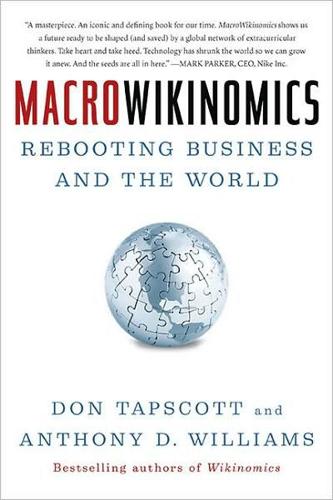
MacroWikinomics: Rebooting Business and the World
by
Don Tapscott
and
Anthony D. Williams
Published 28 Sep 2010
Billions of people can play active roles in their workplaces, communities, national democracies, and in global forums and institutions, too. At the same time, the new world of wikinomics gives organizations an opportunity to tap into new sources of insight and value. Closed, hierarchical corporations that once innovated in secret can now tap, and contribute to, a much larger global talent pool—one that opens up the world of knowledge workers to every organization seeking a uniquely qualified mind to solve their problem. Scientists can accelerate research by open sourcing their data and methods to offer every budding and experienced researcher in the world an opportunity to participate in the discovery process. Doctors can collaborate with self-organizing patient communities where people with similar medical conditions share insights, provide mutual support, and contribute to medical research.
…
But what counts more is your capacity to learn lifelong, to think, research, find information, analyze, synthesize, contextualize, and critically evaluate; to apply research to solving problems; to collaborate and communicate. This is particularly important for students and employers who compete in a global economy. Labor markets are now global and given networked business models, knowledge workers face competition in real time. Workers and managers must learn, adapt, and perform like never before. The answer for educational establishments is not simply to expand distance learning offerings—though this would help. Nor is it about students being able to access lectures by some of the world’s leading professors from free online sites like Academic Earth—though this practice has proven popular and useful with both professors and students.
…
Next-generation faculty will create a context whereby students from around the world can participate in online discussions, forums, and wikis to discover, learn, and produce knowledge as a community of learners who are engaged directly in addressing some of the world’s most pressing problems. Of course, such open platforms could provide a means to address the needs of all learners, not just twenty-somethings. For today’s knowledge workers, remaining truly competitive in fast-moving fields of research and innovation means constant retraining and retooling to begin and/or continue their working lives in a modern, dynamic, and technology-focused environment. The cost of building new continuing education programs from scratch could be prohibitively high, but new models of collaborative education can help bring greater efficiency and creativity to the efforts to help graduating students and aging employees update their skills.23 Indeed, why not allow companies and governments to participate in this global network for higher learning too?

The Aristocracy of Talent: How Meritocracy Made the Modern World
by
Adrian Wooldridge
Published 2 Jun 2021
Hereditary rule was based on bloodlines and military prowess at a time when the world demanded scientific knowledge and technical skills. The new society would flourish if people were given jobs based on their natural abilities, which varied enormously, and professional qualifications, which were acquired by prolonged study. Instead of idealizing philosophers, like earlier intellectuals, Saint-Simon worshipped ‘knowledge workers’, the new class of scientists, managers and bankers who were driving commercial society. Though there is a Marxian element to this, particularly when it comes to the tension between class structure and productive forces, Saint-Simon saw more deeply than Marx. He realized that modern society would continue to be hierarchical but would be hierarchical in a different way from feudal society.
…
The political parties are ceasing to be mass-membership organizations and instead becoming professional bodies dominated by graduates (the Labour Party increased its membership to 500,000 under Corbyn, but this is still a fraction of what it was in the 1950s). Most NGOs are now run by professionals rather than by volunteers. Graduates are more likely than non-graduates to engage in political activities such as signing petitions or calling for boycotts. Even the bastions of the working class, the trade unions, are being colonized by knowledge workers: in Britain, the average trade unionist is a woman in her sixties with a higher qualification. This has important consequences for the political agenda: the 70 per cent who didn’t go to university have different priorities from the 30 per cent who did. They are much more preoccupied by questions such as crime (which deserves stiff punishment), immigration (which needs to be curbed) and welfare scrounging (which must be stopped), and much less by the travails of refugees.15 The populist revolution is, at its simplest, an appeal for attention: poorer people are grabbing the meritocrats by the lapels and saying, ‘Listen to me: I’ve got something to say as well.’16 A second problem is condescension.
…
P. 235 Taylor, Harriet 21, 264 Taylor, John 30 tech industry, meritocracy in 2, 3 technology, new rich and 307 TED (technology, entertainment, design) conferences 13, 307 telegraph 271–2 temperance movement 267 Temple, Frederick 158 Terman, Frederick 223 Terman, Lewis 213, 280 Genetic Studies of Genius 221, 222–3 identification of geniuses 221–3 intelligence tests 209, 213, 214, 220–23 tests standardized 372, 377–8, 381–2 see also examinations; IQ testing Der Teutsche Merkur 123 Thackeray, William Makepeace, Vanity Fair 149, 260 Thatcher, Margaret (Roberts) 1, 174 education and career 256–7 Theobald of Bec, Archbishop of Canterbury 102 Thiel, Peter 308 Thomas, J. H. 340 Thomson, Godfrey 217 Thornton, Tex 253–4 Thurstone, L. L. 217 Titmuss, Richard 281 Tobin, James 226 Tocqueville, Alexis de 11, 19, 179, 191 Democracy in America 193 Tolstoy, Leo, War and Peace 50 Townsend Harris School 198 trade union movement and knowledge workers 341 and selective education 288–9 Transparency International 368 Tredegar’s Workmen’s Institute library 172, 173 Trevelyan family 152 Trevelyan, Sir Charles 155 Trevelyan, Sir George 160 Trevor-Roper, Hugh 235 Tri-Lateral Commission 320 tribal societies, kinship groups 48 Trinity College, Dublin, women graduates 268 Trollope, Anthony 149, 392 The Duke’s Children 151 The Prime Minister (1875) 31 The Three Clerks 157, 160–61 Trotsky, Leon 228 Truman, Harry S. 239 Trump, Donald 3, 316, 374 anti-intellectual appeal 332 election of 329, 330, 384 and nationalism 344–5 nepotism 48, 318, 319, 374 and press 334–5 support for 22, 342, 346 Trump, Ivanka 316, 319, 374 Turgot, Anne Robert Jacques 124 Turkey, imperial court 40 Turner, Frederick Jackson Turner 196 Turow, Scott 12 typewriters 271 tyranny, Plato on 64 UNCTAD 321 Unitarians 152 United Nations, declaration of human rights 26 United States 175–202 anti-federalism 188 and anti-meritocratic movement 283–92 Army General Classification Test (AGCT) 239 ‘captains of learning’ 223–7 civil disobedience (1960s) 301 civil rights 239 Civil Rights Bill (1964) 274 constitutions 177–8 and contempt for masses 342 Declaration of Independence 178–9, 238, 262, 301 East Coast elite (WASP) 194, 224, 232–3, 240 economy 186–7, 190–91, 193–4, 368–9 and educational egalitarianism 300–305 educational elites 4, 7, 194–5, 241–2 Educational Policies Commission 239–40 elite dynasties 318–19 enthusiasm for IQ tests 214–15 Equal Rights Amendment (ERA) 273 and equality of opportunity 19 Founding Fathers 178–9, 383 hierarchies in 202, 232–3 inequality in 225, 313, 325–6, 346–7 and Iraq War 336–7 Jews in 93, 202 and legacy of Plato 70 meritocracy in universities 2, 9–10 meritocratic administration 201–2 National Defense Education Act 274 National Merit Scholarship Corporation 240 political corruption 188, 190, 195–6, 200–202 political parties 188, 202, 331–2 post-war 238–42, 273 racial inequality 283, 302–5, 346–7 robber barons 17, 193, 196–7 Sarbanes–Oxley reforms (2002) 338 SAT (Scholastic Aptitude Test) (US) 6, 224–5, 239 and second chances in education 284, 382–3 and self-invention 175–6 self-made men 189, 191 self-reliance 176–7 and slavery 179, 192–3 and social mobility 323–4 Southern states Jim Crow laws 193 Supreme Court 16, 300, 303, 383 vocational education 393, 394 women in post-war years 273 women’s colleges 268 see also Black Americans universities and academic research 249–51 admissions policies 2, 316–18 black studies 298 children of academics 317–18 China 363 competition for places 308 corrupt admissions 315–16 expansion of 248 gender studies 298 German 140 limits on Jewish students in America 226, 233 and open competition 158–9 polytechnic colleges as 394 and professional management training 197 proposal for scholarships tied to public service 379 Protestant 112 Prussia 127 removal of religious restrictions 158, 159–60 restrictions on poor students 32–3, 317 and school examinations 161 and sponsored mobility 102–3 see also Cambridge; Ivy League universities; Oxford University Grants Committee 236 US Army, use of IQ testing 213–14, 215 Utilitarianism 146, 152 Vallance, Patrick 345 Van Buren, Martin 188, 189 Van Reenen, John 368 Vance, J.

The Technology Trap: Capital, Labor, and Power in the Age of Automation
by
Carl Benedikt Frey
Published 17 Jun 2019
When Robert Reich surveyed the transformation of the labor market in his classic 1991 book, The Work of Nations, he found that work could be divided into three broad categories. A new class of what he called “symbolic analysts” had emerged, who were reaping the benefits of the new economy.21 Among these analysts, we find managers, engineers, attorneys, scientists, journalists, consultants, and other knowledge workers. In the age of computers, they had all become more productive analysts. Besides symbol-analytic services, Reich reckoned, there are also routine jobs and in-person services. As noted above, routine jobs have gradually been taken over by computers. But in-person service jobs have become more plentiful.
…
Lin, 2011, “Technological Adaptation, Cities, and New Work,” Review of Economics and Statistics 93 (2): 554–74. Note: These figures show the percentage share of each city’s workers that were employed in jobs that did not exist by the beginning of each respective decade against the initial share of “knowledge workers” in occupations that involve abstract tasks across 321 American cities. The location decisions of technology companies, which are at the forefront of digital technology, provide the best evidence of the value of in-person communication: “The fact that Silicon Valley is now the quintessential example of industrial agglomeration suggests that the most cutting-edge technology encourages, rather than eliminates, the need for geographic proximity.”34 The past two decades have supported that view, as geographic clusters like Silicon Valley remain strong, despite the abundance of long-range electronic communication tools.
…
See also Industrial Revolution Bronx, 182 Bronx-Whitestone Bridge, 167 Bronze Age, 35 Brown, Sherrod, 291 Brynjolfsson, Erik, 303, 326, 329, 339 bubonic plague (1348) (Black Death), 67, 75 Bureau of Labor Statistics (BLS), 191 Bush, George W., 357 Bythell, Duncan, 121 California Civil Code of 1872, 359 Čapek, Karel, 74 capitalism: perceived threat to, 210; beginnings of, 70; criticism of, 342; impact of clocks on evolution of, 47; rise of, 218; Jeffersonian ideal under, 212; normal state of, 210 capitalist achievement, 294 Capitoline Hill, 40 Captain Swing riots, 130, 285 caravel construction, 50–51 Cardwell, Donald, 47, 59, 97 Carlyle, Thomas, 117 Carnegie, Andrew, 208 Cartwright, Edmund, 105, 127 Case, Anne, 255–56 Cave, Edward, 102 Celestine III, Pope, 44 cement masonry, discovery of, 37 Chadwick, Edwin, 114–15 Charles I of England, King, 54–55, 82, 86 Chartism, 137 cheap labor, slower mechanization and, 75 Cherlin, Andrew, 276, 279 Chetty, Raj, 253, 361 child labor, 103, 123, 134; as opportunity cost to education, 214; robots of Industrial Revolution, 8–9 chimney aristocracy, 89 China: admission to World Trade Organization, 281, 286; ascent of, 289; delayed industrialization in, 88; trade war with, 331 Christensen, Clayton, 354 Chrysler Building, 182 civil rights: lagging, 20; legislation, 280 Civil War (American), 75 Civil War (English), 81 Clark, Gregory, 29, 48, 60 classical civilizations, 37 clientelism, 271 Clinton, Hillary, 285 clocks, 47 Coalbrookdale Iron Company, 108 cognitive divide, 238–43 Colbert, Jean-Baptiste, 84 collective action problem, 19–20 collective bargaining, 192 college-educated citizens: activities of, 352; detachment of, 256; among Great Divergence, 258, 358; hours per day worked, 338; perceived untrustworthiness of, 278; promotion of, 350; qualified as middle class, 239 Colt, Samuel, 149–50 Columbus, Christopher, 51, 67 Communist Manifesto, 7, 63, 70, 119 competition: among nation-states, 19, 57, 89; cascading, 289 computer-aided design software, 13 computer-controlled machines, jobs eliminated by, 228 computer publishing, 247 computers: age of, 228–38; analysts in, 235; automation anxiety concerning, 183; jobs created in, 16; ranks of the affluent in, 224; revolution, 249; those who thrived in, 16; trend beginning with, 258 connectivity, 362–63 consumer products: cheapening of, 294; new, Americans’ growing appetite for, 203 containerization, 171–72 Corbyn, Jeremy, 281 Corn Laws, 267 corporate giants, 208 corporate paternalism, 200 corporate profits, 132, 244 cotton cloth guild, 88 cotton industry, 100 cotton production, mechanization of, 7 Cowie, Jefferson, 200 craft guilds, 55–57, 87 Crafts, Nicholas, 107, 329 crime, joblessness and, 253 Crimean War, 150 Crompton, Samuel, 94, 102 Crouzet, François, 70 Crystal Palace Exhibition of 1851, 147, 149 cultural phenomenon, working class as, 278 culture of growth, 77 Dactyl, 313 Da Gama, Vasco, 51, 67 Dahl, Robert, 273, 352 Daimler, Gottlieb, 166 Darby, Abraham, 108 Dark Ages, light in, 41–51 data, as the new oil, 304 David, Paul, 153, 326 Davis, James J., 175 “deaths of despair,” 256 Deaton, Angus, 8, 255 Declaration of Rights of 1689 (Bill of Rights), 79 Decree Tractor Company, 215 Deep Blue, 303 deep learning, 304 Deep Mind, 301 Defense Advanced Research Projects Agency (DARPA), 307 Defoe, Daniel, 68–69, 71, 84 democracy: legitimacy of, undermining of, 274; liberal, components of, 267; middle class and, 265–69; rise of, 265 Descartes, René, 94 Detroit, Michigan, 151, 257, 359 Devine, Warren, Jr., 153 Diamond, Jared, 64 Dickens, Charles, 117 digital communication, 360 digital industries, clustering of, 260 Diocletian, Roman Emperor, 65 disappearance of jobs, 250–52 “disciplined self” identity, 279 Disraeli, Benjamin, 112, 268 Dittmar, Jeremiah, 48 Domesday Book of 1086, 44 domestic system of production, 61, 71; downfall of, 8 Douglas, Paul H., 178–79 Drebbel, Cornelis, 52 drones, 342 Drucker, Peter F., 227 drudgery, end of, 193–98 Dust Bowl (1930s), 193, 204 Dutch Revolt, 81 Earned Income Tax Credit (EITC), 357 earnings gap, 230 economic incentive, lack of, 40 economic inequality, 22, 274, 277 economic parasites, 79 economic segregation, 356 economies of scale, factories taking advantage of, 110 Eden, Frederick, 116, 344 Edison, Thomas, 2, 52, 148, 189 education and technology, race between, 216 Eilmer of Malmesbury, 78 Eisenhower, Dwight, 307 electricity, early days of, 151 electrification, rural, 157 Electronic Numerical Integrator and Calculator (ENIAC), 230 elevator: arrival of, 14; automatic, 182 Elevator Industry Association, 182 elevator operators, vanishing of, 181, 227 Elizabeth I of England, Queen, 10, 54, 105 Empire State Building, 182 enabling technologies, 13, 227, 228 Engels, Friedrich, 70, 112, 249, 364 Engels’ pause, 131–37, 219; ending of, 287; polarization and, 266; return of, 243–48, 331; time of, 337 English craft guilds, fading power of, 87 entrepreneurial risk, 77 Facebook, 285 factory system, 8, 97, 126; annus mirabilis of 1769, 97; artisans, 98; child labor, 103, 104; coke smelting, 109; control over factory workforce, 104; cotton industry, 100; domestic industry, output growth in, 98; earlier modes of production, 97–98; economies of scale, factories taking advantage of, 110; electrification, 190, 195; Industrial Revolution, 97, 100–101; international trade, rise of, 99; inventions, 102; iron, railroads, and steam, 105–11; mechanical clock as enabling technology for, 47; railroad, arrival of, 108; rise of machines, 99–105; silk industry, beginnings of, 99; social savings of steam engine, 107; steam engine, economic virtuosity of, 107; working class, 98 Fairchild Semiconductor, 359 Fair Labor Standards Act of 1938, 200 farming: disappearance of jobs, 197, 203; mechanization of, 324; revolution, 168–69 feudal oligarchies, replacement of, 58 feudal order: political participation in, 265; rise of, 41, 62 Field, Alexander, 163, 170 Finley, Moses, 36 First Opium War, 88 Fisher, Alva J., 27 Fisher, Irving, 210 Ford, Henry, 141, 148, 167, 195, 365 Ford assembly lines, 18, 365 Ford Motor Company, 148, 199, 240 France, industrial development in, 84 Francis I, Holy Roman Emperor, 85 French Revolution, 90 Friedman, Milton, 355 Friedman, Thomas, 257 Fukuyama, Francis, 141, 264–65, 273, 343 Furman, Jason, 322 Galileo, 39, 52, 54, 94 Galor, Oded, 133 Gans, Joshua, 308 Garden of Eden, 191 Gaskell, Elizabeth, 117 Gaskell, Peter, 117–119, 135, 229, 249 Gates, Bill, 10 Gates paradox, 10, 11, 21 General Electric, 155, 157, 215, 289 General Motors assembly lines, 18 geography of new jobs, 256–63 George Washington Bridge, 167 Giffen, Robert, 132–33 gig mill, 10, 76, 86, 128 Gilded Age, 208 Gille, Bertrand, 39–40 Gini coefficient, 209, 245 Gladstone, William Ewart, 133 Glaeser, Edward, 257, 261, 263 globalization: automation, and populism, 277–85; backlash against, 365; clamping down on, 290; costs of, 366; facilitator of, 282; first wave of, 171; losers to, 21, 26; vanishing jobs and, 11 Glorious Revolution of 1688–89, 79, 82–83, 86 Golden Gate, 167 golden postwar years, 239 Goldfarb, Avi, 308 Goldin, Claudia, 213, 349 Goldin, Ian, 357 Gompers, Samuel, 279 Goodyear Tire, 199 Google, 305 Google Translate, 304 Goolsbee, Austan, 340 Gordon, Robert, 198, 202, 220, 272, 342 government regulations, 49, 137 Great Depression, 13, 143, 170, 211, 272 Great Divergence, 24; absence of economic revolution, 95; beginnings of industrialization, 94; factory system, evolution of (see factory system); Industrial Revolution (see Industrial Revolution); per capita income growth, 94; rise of the machines, 93; textile industry, Industrial Revolution begun in, 95 Great Escape, 8 “great exception” in American political history, 200 Great Migration, 205 Great Recession, 244, 284, 339, 343 Green, William, 174 Greif, Avner, 88, 92, 344 growth, culture of, 77 Gutenberg, Johannes, 47 Habsburg Empire, 85 Hammer, Michael, 326 Hansen, Alvin, 179, 342 Hargreaves, James, 102–3 Harlem, 1 Harper, Kyle, 37 Hawking, Stephen, 36 hazardous jobs, end of, 195, 198 health conditions, during Industrial Revolution, 114–15 Heaton, Herbert, 37 Heckman, James, 351 Heilbroner, Robert, 335 Hellenism, technological creativity of, 39 Henderson, Rebecca, 305, 331 Hero of Alexandria, 39 high school graduates, employment opportunities for, 237 high school movement (1910–40), 214 Himmelfarb, Gertrude, 268 Hindenburg disaster, 110 hinterland, cheap labor and housing of, 261 history deniers, 23 Hitler, Adolf, 12 Hobbes, Thomas, 8, 46 Hobsbawm, Eric, 7 Hoover, Herbert, 211 horseless age, 164 horse technology, 43, 163 Hounshell, David, 148, 150 household revolution, 155–56 housing, zoning and, 361–62 housing bubble, 282 human capital accumulation, indicators of, 133–34 Humphries, Jane, 103, 121 Hurst, Erik, 338 Huskisson, William, 109–10 Hyperloop, 363 IBM, 231 Ibsen, Henrik, 17 Ice Age, 64, 76 identity politics, 278 “idiocy of rural life,” 62–64 income(s): disparities of, 61; reshuffling of, 287 income tax (Britain), introduction of, 133 incubators, nursery cities serving as, 261 industrial bourgeoisie, 267 industrial capitalism, rise of, 218 industrial centers, rise of, 115 industrial espionage, 6 industrialization, first episode of, 16 industrial organization, fundamental principle of, 229 Industrial Revolution, 68, 70; alcoholism, 123; in Britain, 329; Britain’s edge during, 19; British income tax, introduction of, 133; capital share of income, 131–32; child labor, 123, 134; children as robots of, 8–9; classic years of, 113; closing decades of, 138, 266; conditions of England question, 116–25; consumer revolution preceding, 68; cotton yarn manufacturing at dawn of, 100–101; divergence between output and wages, 131; domestic system, description of, 118; economic consequences of, 17; Engels’ pause, 131–37; engine of, 73; Englishmen left off worse by, 364; factories existing before, 94; gig mills, 128; golden age of industry, 118; government regulation, 137; hand-loom weaver, as tragic hero of Industrial Revolution, 121; health conditions, 114–15; human capital accumulation, indicators of, 133–34; labor income share captured, 114; industrial centers, rise of, 115; jobs created by, 16; key drivers of, 342; labor unions, bargaining power of, 137; Lancashire riots, 125, 127; leading figures of, 70; literacy rates, 134; Luddites, 125–31; machinery question, concerns over, 116; machinery riots, 127, 130; macroeconomic impact of, 94; material living conditions, decline of, 114, 120–21; mobility of workers, 122; obsolescence of worker skills, 124; origins of, 6, 80–91; political situation of workers, 129; reason for beginnings in Britain, 75; recipients of the gains of, 113; standard of living issue, 121; steam power, impact of on aggregate growth, 136; symbolic beginning of, 97; tax revenue, 133; technical change during closing decades, 139; technological progress, attitudes toward, 112; trajectory of inequality in Britain during, 217; true beginnings of, 100; unemployment, 113, 117, 125; victims of, 9; Victorian Age, machinery critics of, 119; wave of gadgets, 330; working poor, 113 inequality: age of, beginnings of, 62; Neolithic rise in, 63 inflation, 294 information technology, first revolution in, 47 inner-city ghettos, problems in, 258 innovation, 257; nurseries for, 261 innovation gap, 352 in-person service jobs, 235 inspiration without perspiration, 51–59 installment credit, 159, 167 institutional divergence (colonial Europe), 81 Intel, 359 interchangeable parts: concept of, 149; pioneering of, 74 International Labour Organization (ILO), 181 International Monetary Fund (IMF), 245 international trade, rise of, 67, 69, 99 Internet of things, 22 internet traffic: spread of, 328; worldwide, 303 inventions: agriculture, 54, 62; assembly line, 141, 365; barometer, 52, 59; bicycle, 165; camel saddle, 77; carding machine, 102; of classical times, 39; coke smelting, 108; electric starter, 166; iron, 36; light bulb, 2; mariner’s compass, 50; movable-type printing press, 47; nailed horseshoe, 43; navigable submarine, 52; personal computer (PC), 231; power loom, 105; spinning jenny, 102; steam digester, 55; steam engine, 52, 76; stirrup, 43; stocking-frame knitting machine, 54, 76; submarine, 73; telescope, 59; transistor, 231; typewriter, 161–62; washing machine, 27; water frame, 102; waterwheel, 38; wheel, 35 Iron Age, 35 iron laws of economics, 206 James I of England, King, 52 Japan, ascent of, 289 JD. com, 313 Jeffersonian individualism, 200 Jenkinson, Robert, 2nd Earl of Liverpool, 130, 289 Jerome, Harry, 13, 154, 198, 328 job demand, creation of, 262 Johnson, Lyndon, 184 Joyce, James, 16 Kaldor, Nicholas, 5, 205 Kasparov, Garry, 301 Katz, Lawrence, 135, 213, 245, 349 Kay-Shuttleworth, James, 117, 229 Kennedy, John F., 183 Kettering, Charles, 166 Keynes, John Maynard, 332, 334 King, Gregory, 68 knowledge work, 235, 259 Komlos, John, 115 Korea, ascent of, 289 Korean War, 180 Krugman, Paul, 12 Kuznets, Simon, 5, 206–7 Kuznets curve, 207, 212 labor, division of, 228 labor multiplier, 347 Labor Party, rise of, 268 labor productivity, gap between worker compensation and, 244 labor unions, 212; bargaining power of, 201, 277; legalization in Britain, 190 laissez-faire regime, 25, 267 lamplighters, 1–2 Lancashire riots of 1779, 90 landed aristocracy, 83 Landes, David, 9, 112, 118, 134, 343 Land-Grant College Act of 1862, 364 Latin Church, oppression of science by, 79 laundress, vanishing of, 27, 160 Lee, William, 10, 54 Lefebvre des Noëttes, Richard, 43 Leonardo da Vinci, 38, 51, 73 Leontief, Wassily, 20, 338, 343 Levy, Frank, 237, 302, 323 liberal democracy, components of, 267 Lindert, Peter, 61, 68, 114, 207, 211, 269, 271 literacy, demand for, 76 Liverpool-Manchester Railway, 109 lobbying, corporate spending on, 275 Locke, John, 83 Lombe, John, 52, 99–100 Lombe, Thomas, 6, 100 London Steam Carriage, 109 longshoremen, vanishing of, 172 Louis XIV of France, King, 84 Luddites, 9, 18, 125–31, 341; imprisoned, 20; new, 286–92; riots, 89, 92; uprisings, 265 machinery question, 116, 174–88; adjustment problems, 177; automation, employment effects of, 180; computers, automation anxiety concerning, 183; elevator operators, 181–82; musicians, displaced, 177–78 machinery riots, 9, 265, 289; absence of (America), 190; Britain, 90 Maddison, Angus, 66 Magellan, Ferdinand, 51, 67 majority-rule voting system, 270 Malthus, Thomas Robert, 4, 64, 73, 316, 345 Malthusian logic, 345 Malthusian trap, escape of, 65 Manhattan Project, 74 Manpower Training and Development Act (MDTA), 353 Mantoux, Paul, 97, 101, 126 Manufacture des Gobelins, 84 Manufacture Royale de Glaces de Miroirs, 84 manufacturing: blue-collar jobs, disappearance of, 251, 254; American system of manufacturing, pioneers of, 149; factory electrification, 151–55; interchangeable parts, concept of, 149 Margo, Robert, 135, 145 markets, integration of, 86 Marx, Karl, 26, 47, 98, 239, 364 Massey, Douglas, 256 Massive Open Online Courses (MOOCs), 354 mass production, 147–73; American system of manufacturing, pioneers of, 149; containerization, 171–72; direct drive, 153; factory electrification, 151–55; horseless age, 164; household revolution, 156; industries, 18; installment credit, 159, 167; interchangeable parts, concept of, 149; Model T, 167; unit drive, 153 Maurice of Nassau, Prince of Orange, 59 Maybach, Wilhelm, 166 McAfee, Andrew, 303, 339 McCloskey, Deirdre, 70 McCormick, Cyrus, 149, 168 McLean, Malcom, 171 mechanics, Galileo’s theory of, 53 mechanization, age of automation vs. age of, 227 median voter theories, 270 medieval Christianity, 78 mercantilism, flawed doctrine of, 83 Mesopotamia, 35 metals, discovery and exploitation of, 35 Michigan Antitrust Reform Act of 1985, 359 Microsoft, 306 Middle Ages: agricultural technology in, 42; feudal order of, 57; onset of, 41; technical advances of, 50; traditional crafts of, 68 middle class, descent of, 223–25; artificial intelligence, 228; automation, adverse consequences of, 240; cognitive divide, 238–43; computer-controlled machines, jobs eliminated by, 228; computers, 228–38; corporate profits, 244; division of labor between human and machine, 228; earnings gap, 230; Engels’ pause, return of, 243–48; golden postwar years, 239; Great Recession, 244; high school graduates, employment opportunities for, 237; industrial organization, fundamental principle of, 229; in-person service jobs, 235; knowledge workers, 235; labor productivity, gap between worker compensation and, 244; mechanization, age of automation vs. age of, 227; multipurpose robots, 242; rule-based logic, 228; Second Industrial Revolution, elimination of jobs created for machine operators during, 228; “symbolic analysts,” 235 middle class, triumph of, 218–222; agriculture, mechanization of, 189; automotive industry, 202; baby boom, 221; blue-collar Americans, unprecedented wages of, 220; child labor, as opportunity cost to education, 214; collective bargaining, 192; corporate giants, 208; corporate paternalism, 200; education and technology, race between, 216; end of drudgery, 193–98; Engels’ pause, 219; factory electrification, 190, 195; farming jobs, decline of, 197, 203; Great Depression, 211; “great exception” in American political history, 200; Great Migration, 205; hazardous jobs, end of, 195, 198; high school movement (1910–40), 214; Jeffersonian individualism, 200; Kuznets curve, 207, 212; labor unions, 201, 212; leveling of American wages, 211; machinery riots, absence of, 190; middle class, emergence of, 192, 292; national minimum wage, introduction of, 211; new consumer goods, Americans’ growing appetite for, 203; New Deal, 200, 212; public schooling, 214; Second Industrial Revolution, 209, 217; skill-biased technological change, 213; tractor use, expansion of, 196; urban-rural wage gap, 209; Wall Street, depression suffered by, 211; welfare capitalism, 198, 200; welfare state, rise of, 221; white-collar employment, 197, 218 Middle East, 77 Milanovic, Branko, 217, 245 mining, 194, 197 Minoan civilization, 34 mobile robotics, 342 mobility, demands for, 348 mobility vouchers, 360 Model T, 167 modern medicine, rise of, 22 Mokyr, Joel, 19, 52, 76–77, 79 Moore’s Law, 107, 301, 304 Moravec’s paradox, 236 Moretti, Enrico, 258, 262–63, 360 Morgan, J.
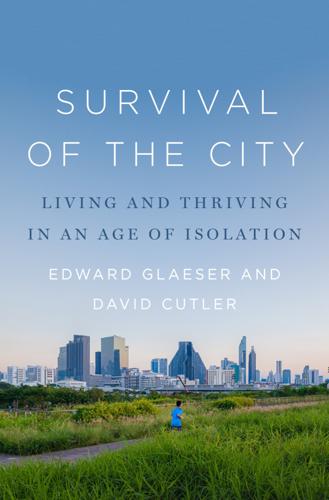
The Survival of the City: Human Flourishing in an Age of Isolation
by
Edward Glaeser
and
David Cutler
Published 14 Sep 2021
Both the Bureau of Labor Statistics and the Gallup figures, but not the census figure, suggest that over one fifth of Americans worked from home pre-COVID, but that did not turn commercial skyscrapers into “ghostly warehouses” or alter “our entire economy, our cities, our ecology, our family structure, our values and even our politics beyond our recognition,” as Toffler forecast. Why didn’t information technology do to urban knowledge workers what container ships did to urban seamstresses? And why did the telecommuting that did occur alter society so much less than Toffler predicted? The answer to the second question is a failure to account for the continuing growth in the size of the labor force. Between 1980 and February 2020, the total number of employed Americans increased by 68 percent, from 90 million to 152 million.
…
Presumably, neophytes are more likely to learn how to handle these difficult situations if they sit near experienced coworkers who are talking an irate client through a complaint. These factors shouldn’t prevent more part-time working from home. Indeed, we are quite confident that many of the world’s knowledge workers will do more Zooming in the future. However, unlike Toffler, we see such changes as more marginal than revolutionary, and unlikely either to solve our traffic problems or lead to empty office towers. To examine the heterogeneous impact of remote working across industries, one of us (Glaeser) was part of a team that analyzed two surveys taken at the height of the pandemic.
…
As parents, we were grateful that our children still seemed to be learning. But the joy was gone. The fun of just running into friends and laughing had largely disappeared. As the world becomes wealthier, work will continue to become more about enjoyment and less about a paycheck. Already, the lucky knowledge workers who were capable of working remotely are rarely engaged in drudgery. Before COVID-19 struck, firms were competing to attract talent by building workplaces that were pleasant as well as productive. They will do so again, even if the technology exists to just dial it in. Urban Futures in the Balance The urban edge in enabling interaction seems to ensure the future of urban office space, but it provides no such guarantee for any individual city.
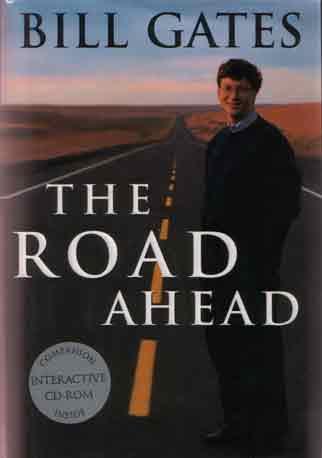
The Road Ahead
by
Bill Gates
,
Nathan Myhrvold
and
Peter Rinearson
Published 15 Nov 1995
If the population of a city were reduced by even 10 percent, the result would be a major difference in property values and wear and tear on transportation and other urban systems. If the average office worker in any major city stayed home one or two days a week, the decreases in gasoline consumption, air pollution, and traffic congestion would be significant. The net effect, however, is hard to foresee. If those who moved out of cities were mostly the affluent knowledge workers, the urban tax base would be reduced. This would aggravate the inner city's woes and encourage other affluent people to leave. But at the same time, the urban infrastructure might be less heavily loaded. Rents would fall, creating opportunities for a better standard of living for some of those remaining in the cities.
…
The highway will spread information and opportunity across borders to developing nations, too. Cheap global communications can bring people anywhere into the mainstream of the world economy. An English-speaking Ph.D. in China will be able to bid against colleagues in London for consulting work. Knowledge workers in industrialized countries will, in a sense, face new competition—just as some manufacturing workers in industrialized countries have experienced competition from developing nations over the past decade. This will make the information highway a powerful force for international trade in intellectual goods and services, just as the availability of relatively inexpensive air cargo and containerized shipping helped propel international trade in physical goods.

Economists and the Powerful
by
Norbert Haring
,
Norbert H. Ring
and
Niall Douglas
Published 30 Sep 2012
Otherwise the THE POWER OF THE CORPORATE ELITE 129 stock price of the company in question would jump on the granting of the award. Instead, stock prices only gain over time as the better company performance becomes obvious in the bottom line (Edmans 2011). This is particularly unexpected given the ample theoretical and empirical evidence that very high-skilled and knowledgeable workers – exactly those most sensitive to workplace conditions and those most able and willing to relocate if they feel their employer is anything less than committed to them – are driving ever-increasing amounts of long-term company value as technology marches forward (Grant, 1996; Deeds and Decarolis 1999).
…
The six restaurants made offers of starting wages to new employees that ranged from US$5.15 to US$6 per hour, a range of 16 percent. Getting a pay rise of 16 percent is a big deal for most employees, especially those close to minimum wage (Bhaskar, Manning and To 2002). Even for highly compensated, highly skilled and highly mobile knowledge workers such as top end IT workers earning well over US$100,000 a year, there is significant monopsonistic power employed to hold down compensation and work against the interests of employees: In 2010 the US Department of Justice ruled against Adobe, Apple, Google, Intel, Intuit and Pixar for entering into secret agreements not to solicit one another’s high-skilled employees, and a class action civil suit is due to be heard in the courts during 2012 (Forbes 23 January 2012).

Singularity Rising: Surviving and Thriving in a Smarter, Richer, and More Dangerous World
by
James D. Miller
Published 14 Jun 2012
Only a minuscule number of people have the ability to do science at the level of Einstein or von Neumann, and these men’s accomplishments were undoubtedly limited by having to collaborate with lesser minds. By removing this genius bottleneck, emulations would create an explosion of innovation and scientific knowledge. Workers in rich countries have much higher salaries today than they did a century ago primarily because of better production technology. By improving production technology even further, the high-priced emulations would allow each worker to do more than he could before, and so would allow workers to command still higher salaries.
…
Overall, however, cognition enhancers would almost certainly raise the average worker’s wage because they would allow society as a whole to produce more. Even workers in professions where being smarter didn’t raise their wages would receive higher salaries because of the drugs. By increasing the wages of knowledge workers, these drugs would boost the amount these laborers paid for services performed by relatively unskilled laborers. They would spend more in restaurants, hire additional domestic servants, and consequently raise the salaries of the unskilled. Cognition enhancers would also allow some low-skilled workers who hadn’t been smart enough to become highly skilled professionals to find better jobs, which would benefit both them and those who remained in low-skill occupations (who would then face less competition).
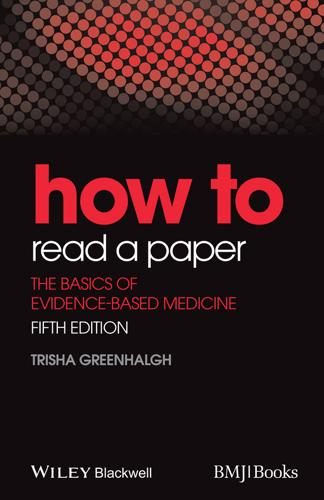
How to Read a Paper: The Basics of Evidence-Based Medicine
by
Trisha Greenhalgh
Published 18 Nov 2010
The role of the knowledge manager is to blow this sort of nonsense away and ensure that (in the case of EBM) everyone who needs to practice it has links to the relevant knowledge base, protected time to access it and appropriate training. 2. Knowledge workers: These individuals have it on their job description to help the rest of us find and apply knowledge. The person on the computer helpdesk is a kind of knowledge worker, as is a librarian or a research assistant. To use some contemporary jargon, the tools of EBM should be offered as an ‘augmented product’ with designated members of staff hired to provide flexible support to individuals as and when they ask for it. 3.
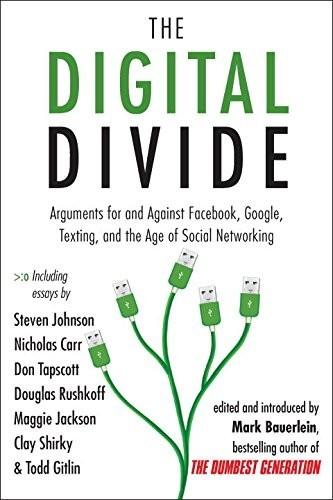
The Digital Divide: Arguments for and Against Facebook, Google, Texting, and the Age of Social Netwo Rking
by
Mark Bauerlein
Published 7 Sep 2011
“Our software tools were essentially designed to compete with one another for our attention, like needy toddlers.”33 Even brief interruptions can be as disruptive as lengthy ones, if they involve tasks that are either complex in nature or similar to the original work (thus muddying recall of the main work), Donald Broadbent has found.34 In total, interruptions take up 2.1 hours of an average knowledge worker’s day and cost the U.S. economy $588 billion a year, one research firm estimated.35 Workers find the constant hunt for the lost thread “very detrimental,” Mark reports dryly. . . . Mary Czerwinski, an energetic Microsoft researcher designs a kind of high-tech “wallpaper” to better our age. Czerwinski is the manager of the Visualization and Interaction Research Group in the company’s thought ghetto, Microsoft Research Labs.
…
Also interview with Gloria Mark, July 2006. 32 Ibid. 33 Thompson, “Meet the Life Hackers,” p. 42. 34 Tony Gillie and Donald Broadbent, “What Makes Interruptions Disruptive? A Study of Length, Similarity and Complexity,” Psychological Research 50 (1989), pp. 243–50. 35 Jonathan Spira and Joshua Feintuch, The Cost of Not Paying Attention: How Interruptions Impact Knowledge Worker Productivity (Basex, 2005), pp. 2 and 10. 36 Suzanne Ross, “Two Screens Are Better Than One,” Microsoft Research News and Highlights, http://research.microsoft.com/displayArticle.aspx?id=433&0sr=a. Also Tara Matthews et al., “Clipping Lists and Change Borders: Improving Multitasking Efficiency with Peripheral Information Design,” Proceedings of the Conference on Human Factors in Computer Systems (April 2006), pp. 989–98. 37 Scott Brown and Fergus I.

100 Years of Identity Crisis: Culture War Over Socialisation
by
Frank Furedi
Published 6 Sep 2021
He suggested that a veritable class had formed around adversary culture, one that ‘seeks to aggrandize and perpetuate itself’.711 Like Turner, Trilling was not clear about whether or not it would acquire hegemony, since at the time of his commentary it had not yet succeeded in dominating the middle class. By the late 1970s the influential status of adversary culture, particularly in the university, was indisputable. This development was ably analysed in Gouldner’s study, The Future of Intellectuals and the Rise of the New Class (1979). Gouldner argued that a new class of intellectual and knowledge workers was successfully pursuing the culture war in society and especially inside the university. Gouldner explicitly connected this development to the re-engineering of socialisation which had damaged society’s capacity to transmit its cultural legacy to the younger generations. The most significant dimension of Gouldner’s analysis was his insights regarding the relation between disrupted socialisation and the intensification of cultural conflict.
…
The emergence of identity politics, new social and cultural movements, and new speech codes all bear the imprint of campus culture. Almost six decades after Hall’s call for a new church of science, the universities succeeded in assuming a pivotal role in the socialisation of young people. Gouldner highlighted the role played by what he called a ‘new class of intellectual and knowledge workers’ in distancing the younger generations from the value system of their elders.758 Contrary to Hall’s expectations, the university did not quite become a new church. Though it lacked a coherent dogma, it was sufficiently powerful to undermine long-standing norms and values and identities, and motivate generations of young people to interpret the world through therapeutic and counter-cultural terms.

The Big Nine: How the Tech Titans and Their Thinking Machines Could Warp Humanity
by
Amy Webb
Published 5 Mar 2019
We kept assuming that robots would take over all the blue-collar jobs, but it turns out that building physical robots capable of doing all that physical labor was a far more difficult task than we’d ever imagined, while cognitive tasks were easier to program and replicate. Ironically, it is the knowledge workers who are no longer needed. As a result, America and its allies have an immediate and critical need for the all the blue-collar jobs we said would be gone. We simply don’t have enough highly skilled plumbers, electricians, and carpenters. Robots can’t provide the human touch we desire, so we also have an immediate need for massage therapists, nail technicians, estheticians, and barbers.
…
With the American workforce in crisis, students are divided into two categories during their kindergarten entrance exams: vocational or executive. Vocational students are trained for agility across disciplines, while executive students are trained in critical thinking and management. There is no need for the kinds of skills possessed by middle managers, since most middle managers and entry-level knowledge workers are now AIs. With unemployment in unexpected sectors; crime is up—but not for the reasons you think. AI-powered policing software didn’t work as promised, so our crime statistics don’t accurately represent the real world. The algorithms built by AI’s tribes and trained on a limited set of data never learned how to correctly identify and classify a gender-nonconforming person—someone who identifies neither as female nor male and might look completely androgynous, or who might have both a beard and eyelash extensions.
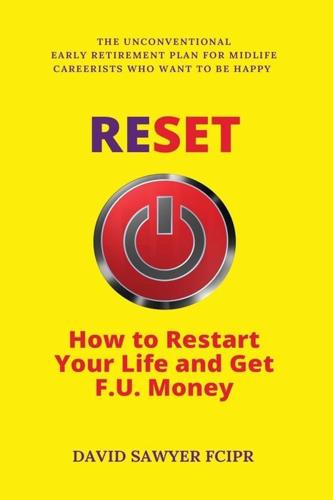
Reset: How to Restart Your Life and Get F.U. Money: The Unconventional Early Retirement Plan for Midlife Careerists Who Want to Be Happy
by
David Sawyer
Published 17 Aug 2018
And the post-war boom in consumerism and a world run by advertising has sealed the pact, creating a society where we define ourselves by the job we do, not who we are. Our aim? Instant, easy gratification by earning more money to use more resources. Although by no means as bad as the 1900s, long working days are not unusual with managers and knowledge workers worst affected. A recent survey found that 80% of white-collar employees work more than 40 hours a week with a third clocking more than 50[29]. All this toil leads to what British writer Oliver James calls: “The Affluenza Virus…a set of values which increase our vulnerability to emotional distress.”
…
Although it is commonplace to hire locally now, by the end of the twenties it will be different. According to a 2018 report by management consulting firm McKinsey[37], artificial intelligence, automation and robotics[38] will have made many unskilled jobs redundant, and there’ll be a bigger pool of knowledge workers for employers to choose from. Whether you’re a PR consultant, accountant, or lawyer it won’t matter if you’re in Glasgow, Gothenburg or Ganzhou. All that will matter, in the words of Deep Work author Cal Newport, is: “Your ability to quickly master hard things.” “The ability to produce at an elite level, in terms of both quality and speed[39].”

Artificial Whiteness
by
Yarden Katz
Edward Feigenbaum, naturally invested in the U.S. expert systems industry, teamed up with the writer Pamela McCorduck to formulate a counterplan to Japan’s project. In their book The Fifth Generation (1983), they portrayed Japan’s plan as a grave threat to U.S. hegemony: “The American computer industry has been innovative, vital, and successful. It is, in a way, the ideal industry. It creates value by transforming the brainpower of the knowledge workers, with little consumption of energy and raw materials. Today we dominate the world’s ideas and markets in this most important of all modern technologies. But what about tomorrow?”52 In weaving their own imperialist narrative, Feigenbaum and McCorduck paint Japan as the one with imperial aspirations: “The Japanese have seen gold on distant hills and have begun to move out.”
…
There has not been a clear and consistent transition from the command-and-control mindset to one in which war is embodied. Imperial projects need not be cohesive in that way; the “old” metaphors live on. Contemporary books in the genre of military information management refer to the soldier as “knowledge worker.”70 This phrase can be casually tossed thanks in part to the work of “symbolic” AI practitioners, whose epistemic narratives play alongside embodied conceptions. The war industry has already served as a site for blending these epistemologies and practices, as we will see in the next section.

MegaThreats: Ten Dangerous Trends That Imperil Our Future, and How to Survive Them
by
Nouriel Roubini
Published 17 Oct 2022
They anticipate jobs no one has yet thought of thanks to staggering technological progress.38 Who foresaw jobs in electronics, data processing, or telecommunications when agricultural and manufacturing jobs began to disappear? It’s a fair question, but replacing brainpower is different from replacing muscle power. Good jobs that emerged from the decline of manufacturing and rise of services required brains, not brawn. “Knowledge worker” was the category that everyone wanted to join. But now we have lost our monopoly on knowledge. Artificial intelligence can handle desirable jobs better and faster than human brains can handle them. There will be jobs for people, but who will want them? “The problem is not the number of jobs but the quality and accessibility of those jobs,” says MIT economist David Autor, a prominent expert on the future of work.
…
All this is why the AI revolution may be the first one that destroys overall jobs and wages. Complacency this time—the assumption that once again, the Luddites will be wrong—looks like a fatal mistake. AI encroaches on more jobs than in prior revolutions. It affects jobs across many industries, and it affects knowledge workers just as much as blue-collar workers. Machine learning has accomplished one of the long-term hurdles holding back AI: natural-language processing. By allowing machines to scan vast corpuses of texts and do their own pattern analyses, AIs have learned how to translate between languages with remarkable success, and how to generate new texts with remarkable authenticity.
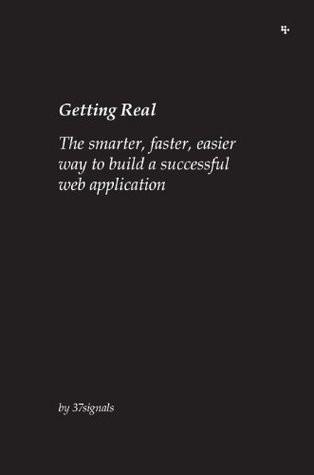
Getting Real
by
Jason Fried
,
David Heinemeier Hansson
,
Matthew Linderman
and
37 Signals
Published 1 Jan 2006
Just make sure this period is contiguous in order to avoid productivity-killing interruptions. A successful alone time period means letting go of communication addiction. During alone time, give up instant messenging, phone calls, and meetings. Avoid any email thread that's going to require an immediate response. Just shut up and get to work. Get Into the Groove We all know that knowledge workers work best by getting into "flow", also known as being "in the zone", where they are fully concentrated on their work and fully tuned out of their environment. They lose track of time and produce great stuff through absolute concentration...trouble is that it's so easy to get knocked out of the zone.

The Industries of the Future
by
Alec Ross
Published 2 Feb 2016
They have transformed from countries where famines killed tens of millions of people during the 20th century to two of the largest and most vibrant economies in the world. Their futures will see transformative change every bit as exceptional as the past three decades have. For decades, China demonstrated that a somewhat open economy and a closed political system can achieve growth by being home to knowledge workers and manufacturing centers. But it is now seeking to prove that it can provide the conditions for innovation of its own. To this end, the core question for China’s future is whether its model of relative economic openness but tight political control can foster real innovation. Thus far, it seems that its knowledge economy has been hampered.
…
A homeless person may have the right to not be moved from the little place he sleeps on the street. It can take years, then, to move stuff forward. This is why infrastructure is superdeveloped in China and is underdeveloped in India.” What India lacks in central planning for manufacturing it has made up for in producing knowledge workers. India trains around 1.5 million engineers every year, which is more than the United States and China combined. India’s first prime minister, Jawaharlal Nehru, focused significant resources on IT and higher education. His government oversaw the establishment of the All India Institute of Medical Sciences, the Indian Institutes of Technology, and the Indian Institutes of Management, which are among the best professional training centers in any emerging market—indeed, in any market at all.

How Not to Network a Nation: The Uneasy History of the Soviet Internet (Information Policy)
by
Benjamin Peters
Published 2 Jun 2016
In its initial proposals, the OGAS Project estimated that it would take over thirty years to be fully online, that it would need a labor transfer of some 300,000 personnel, that costs would be upward of 20 billion rubles for the first fifteen years, and that tens of thousands of computing center and interactive access points would be distributed across the Soviet population. All this would prove net efficient, promised Glushkov. The 300,000 knowledge workers would constitute an enormous labor transfer, as well as a net reduction in the ever-rising number of people who were employed in economic planning. The 20 billion rubles would be distributed over three five-year plans, with the first requiring a seemingly modest 5 billion rubles. Acutely aware of the advantages of the well-regulated financial management that was enjoyed by the successful military nuclear and space programs, Glushkov insisted to Prime Minister Kosygin that, if the OGAS were to be developed, this civilian program would require a similarly well-managed funding stream, even though it would prove more complicated and expensive than both military programs combined.
…
The OGAS, for Glushkov, was to be a national communication network, countless local paperless offices, and a dynamic management system that connected them—a global-local network. A proper economic reform, in his mind, must benefit the factory worker, the general secretary, and the whole populace. The OGAS sought to pole-vault socialism toward communism at the Hegelian level of historical progress and to usher in a better work life for the knowledge worker: in the command economy, everyone needed to work knowledgably with economic plans. The OGAS would grant both at once, automatically storing relevant digital files on every local actor while granting remote access anywhere else in the country. The origins of the ideas behind the OGAS computing network also point to a preexisting academic network, including the circulation of a 1955 Academy of Sciences proposal by Nemchinov to erect large but unconnected state computer centers in Moscow, Kiev, Novosibirsk, Riga, Kharkov, and other major cities.
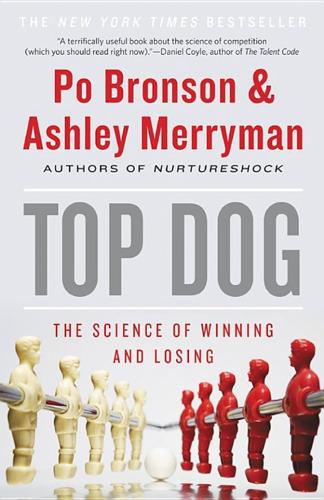
Top Dog: The Science of Winning and Losing
by
Po Bronson
and
Ashley Merryman
Published 19 Feb 2013
It eats up a lot of time to coordinate a team’s efforts—making sure everyone has replaced the April 10, 5:00 P.M., draft with the April 10, 6:00 P.M—no, wait—6:15 draft. Magic is supposed to happen when a group of people are united in their dedication to a singular purpose. But modern, corporate teams aren’t remotely like that: estimates are that up to 90% of knowledge workers are on multiple teams, each team fighting for its members’ time and attention. No project gets singular devotion. And with the rise of technology-assisted “virtual teams,” where coworkers are spread around the country or world, people may have no real relationship with teammates; often, they don’t even meet.
…
One economic incongruity the researchers had observed: most highly educated East Germans did not pursue new careers in engineering or technology, despite being qualified to do so. Instead, they took low-paying jobs in the construction industry, as laborers. This perpetuated the productivity gap between East and West, because so many college grads in the East took jobs beneath their intellectual capabilities. They had the education of a modern knowledge worker, but not the mindset. Over time, researchers started to see a pattern. Those who succeeded—those who became competitive and innovative—were higher in agency. Agency is the capacity to act independently, to make one’s own free choices, and to make decisions quickly. Agency is the core inside self-starters, the trait that grows into personal initiative.
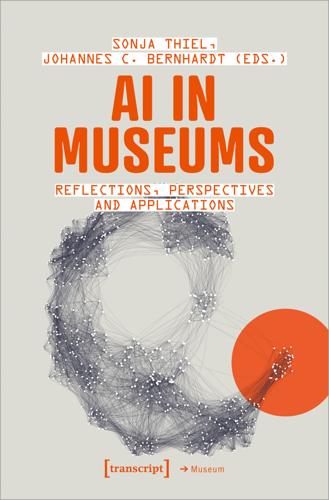
AI in Museums: Reflections, Perspectives and Applications
by
Sonja Thiel
and
Johannes C. Bernhardt
Published 31 Dec 2023
These workers are often overlooked in discussions of AI, an aspect that is associated with many of the problems addressed in the discourse on AI. This dead corner is especially relevant for museums, as places that strongly differentiate between their inside and outside, internal expertise and authority, knowledge workers and other staff and their audiences as external visitors. What do we actually do when we have an AI rewrite museum data? AI is mostly based on the use of lots of data, the training of a model, and then applying the model to other data and producing more data. In the case of classification, for example, it is often about whether motifs can be recognized automatically.
…
Clemens Neudecker: Digital Curation and AI QURATOR: Automated Curation Technologies for Digitized Cultural Heritage The SBB was first able to explore the capabilities of various AI and/or deep learning methods for digitized collections in the QURATOR project.3 QURATOR—Curation Technologies (Rehm/Bourgonje/Hegele et al. 2020) was a research project funded by the German Federal Ministry of Research and Education (BMBF) from 2018 to 2021, based in the Berlin/Brandenburg metropolitan region. The consortium of ten project partners from research and industry pooled their expertise in areas such as language technologies, knowledge technologies, artificial intelligence, and machine learning. The project’s main goal was developing a sustainable technology platform that supports knowledge workers in various industries. The platform is intended to simplify the curation of digital content and accelerate it dramatically. AI technologies are integrated into curation technologies and curation workflows in the form of industry solutions covering the entire lifecycle of content curation. The solutions developed focus on curation services for the sectors of culture, media, health care, and industry.
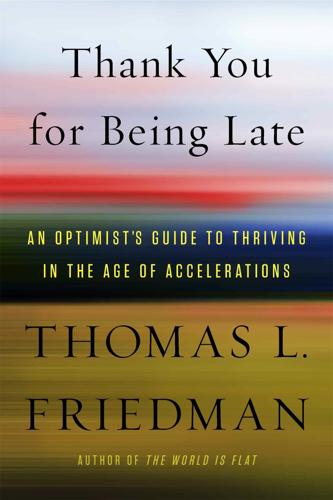
Thank You for Being Late: An Optimist's Guide to Thriving in the Age of Accelerations
by
Thomas L. Friedman
Published 22 Nov 2016
We need to control low-skilled immigration so our own low-skilled workers are not priced out of jobs, while removing all limits on H-1B visas for foreign high-skilled knowledge workers. We should also double the research funding for all of our national labs and institutes of health to drive basic research. Nothing would spin off more new good jobs and industries than that combination of more basic research and more knowledge workers. 7. To ensure that next-generation Internet services are developed in America, she would put in place new accelerated tax incentives and eliminate regulatory barriers to rapidly scale up the deployment of superfast bandwidth—for both wire line and wireless networks.
…
They are also portable tools that can turn AI into IA in remarkable new ways so that so many more people, no matter how educated or dexterous, can live above the average adaptability line—and even thrive there. Consider what it is to be a janitor today at the Qualcomm campus in San Diego. Hint: thanks to intelligent assistants, it’s become a knowledge worker job. Ashok Tipirneni, director of product management for Qualcomm’s Smart Cities project, explained to me why: Qualcomm has created a business in showing companies how they can retrofit wireless sensors to every part of their buildings in order to generate a real-time, nonstop sort of EKG or MRI of what is going on deep inside every one of their buildings’ systems.
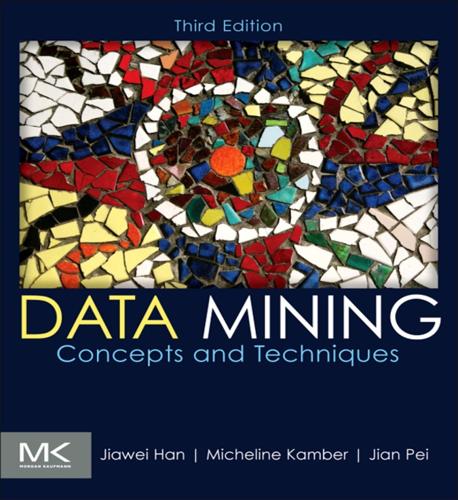
Data Mining: Concepts and Techniques: Concepts and Techniques
by
Jiawei Han
,
Micheline Kamber
and
Jian Pei
Published 21 Jun 2011
Based on this information, we view data warehousing as the process of constructing and using data warehouses. The construction of a data warehouse requires data cleaning, data integration, and data consolidation. The utilization of a data warehouse often necessitates a collection of decision support technologies. This allows “knowledge workers” (e.g., managers, analysts, and executives) to use the warehouse to quickly and conveniently obtain an overview of the data, and to make sound decisions based on information in the warehouse. Some authors use the term data warehousing to refer only to the process of data warehouse construction, while the term warehouse DBMS is used to refer to the management and utilization of data warehouses.
…
The major task of online operational database systems is to perform online transaction and query processing. These systems are called online transaction processing (OLTP) systems. They cover most of the day-to-day operations of an organization such as purchasing, inventory, manufacturing, banking, payroll, registration, and accounting. Data warehouse systems, on the other hand, serve users or knowledge workers in the role of data analysis and decision making. Such systems can organize and present data in various formats in order to accommodate the diverse needs of different users. These systems are known as online analytical processing (OLAP) systems. The major distinguishing features of OLTP and OLAP are summarized as follows:■ Users and system orientation: An OLTP system is customer-oriented and is used for transaction and query processing by clerks, clients, and information technology professionals.
…
The major distinguishing features of OLTP and OLAP are summarized as follows:■ Users and system orientation: An OLTP system is customer-oriented and is used for transaction and query processing by clerks, clients, and information technology professionals. An OLAP system is market-oriented and is used for data analysis by knowledge workers, including managers, executives, and analysts. ■ Data contents: An OLTP system manages current data that, typically, are too detailed to be easily used for decision making. An OLAP system manages large amounts of historic data, provides facilities for summarization and aggregation, and stores and manages information at different levels of granularity.

Fortunes of Change: The Rise of the Liberal Rich and the Remaking of America
by
David Callahan
Published 9 Aug 2010
In North Carolina, Obama won only among high school dropouts and voters with postgraduate degrees—which was enough to take the state. A year later, as Republicans swept gubernatorial races in Virginia and New Jersey in 2009, voters with postgraduate degrees stuck with Democrats in both elections.14 Beyond the pragmatic reasons for knowledge workers to be liberal, the educated usually trend left for other reasons. In their 2002 book The Emerging Democratic Majority, John Judis and Ruy Teixeira describe how professionals have long been the strongest supporters of “civil rights and feminist causes.” And there is a reason for this: the more educated you are, the more likely you are to question rigid hierarchy, be tolerant of cultural differences, and reject traditional values.
…
Instead of trying to shame companies and executives, the president should take advantage of our success by using our outsized earnings to pay for the needs of our nation.”12 This suggestion was not surprising, coming from Hastings, who epitomizes today’s rich progressives. Like many, he is a second-generation knowledge worker—his father was a big-time lawyer—who grew up in deep-blue America, around Boston. He went to private school in Cambridge; attended Bowdoin, an elite liberal arts college in Maine; spent two years in the Peace Corps; and then got a master’s degree in computer science from Stanford. After making a fortune in software during the 1990s, Hastings decided that he wanted to do something important.
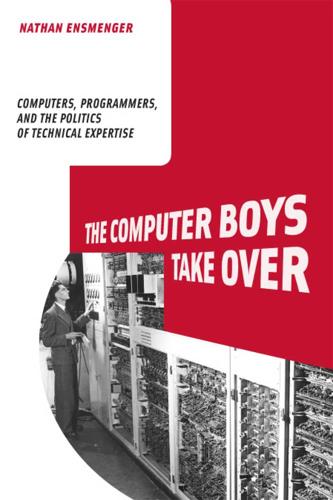
The Computer Boys Take Over: Computers, Programmers, and the Politics of Technical Expertise
by
Nathan L. Ensmenger
Published 31 Jul 2010
By this point the rhetoric of crisis had become so commonplace in the computer industry literature that for many young programmers the software crisis was “less a turning point than a way of life.”16 This comes back to some of the central questions of this book: How can we explain the continued existence of a seemingly perpetual crisis in what is generally considered to be one of the most successful and profitable industries of all time? How can we understand the role of computer specialists—in many respects the paradigmatic “knowledge workers” of post-industrial society—within this troubled framework of crisis, conflict, and contested identity? If, as Shoshona Zuboff has suggested, computer-based technologies are not simply neutral artifacts, but rather “embody essential characteristics that are bound to alter the nature of work within factories and offices, and among workers, professionals, and managers,” then what are the “essential characteristics” of software and software development that shape our understanding of work, identity, and power in the information technology industry (and the many industries that rely on information technology)?
…
Greenbaum followed Kraft’s conclusions and methodology closely in her book In the Name of Efficiency: Management Theory and Shopfloor Practice in Data-Processing Work in 1979. More recently, she has defended their application of the Braverman deskilling hypothesis: “If we strip away the spin words used today like ‘knowledge’ worker, ‘flexible’ work, and ‘high tech’ work, and if we insert the word ‘information system’ for ‘machinery,’ we are still talking about management attempts to control and coordinate labor processes.”30 There is validity to both interpretations of the changing attitude of managers toward programmers that occurred in the late 1960s.
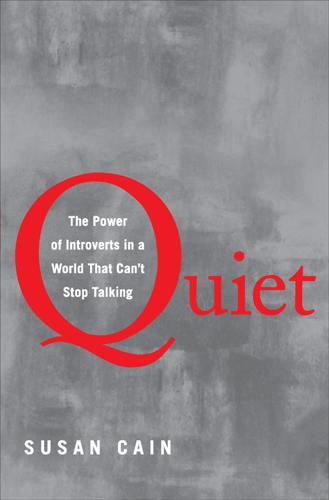
Quiet: The Power of Introverts in a World That Can't Stop Talking
by
Susan Cain
Published 24 Jan 2012
They’re often subject to loud and uncontrollable noise, which raises heart rates; releases cortisol, the body’s fight-or-flight “stress” hormone; and makes people socially distant, quick to anger, aggressive, and slow to help others. Indeed, excessive stimulation seems to impede learning: a recent study found that people learn better after a quiet stroll through the woods than after a noisy walk down a city street. Another study, of 38,000 knowledge workers across different sectors, found that the simple act of being interrupted is one of the biggest barriers to productivity. Even multitasking, that prized feat of modern-day office warriors, turns out to be a myth. Scientists now know that the brain is incapable of paying attention to two things at the same time.
…
Berman et al., “The Cognitive Benefits of Interacting with Nature,” Psychological Science 19, no. 12 (2008): 1207–12. See also Stephen Kaplan and Marc Berman, “Directed Attention as a Common Resource for Executive Functioning and Self-Regulation,” Perspectives on Psychological Science 5, no. 1 (2010): 43–57. 39. Another study, of 38,000 knowledge workers: Davis et al., “The Physical Environment of the Office.” 40. Even multitasking … a myth: John Medina, Brain Rules (Seattle, WA: Pear Press, 2008), 87. 41. Backbone Entertainment: Mike Mika, interview with the author, July 12, 2006. 42. Reebok International: Kimberly Blanton, “Design It Yourself: Pleasing Offices Laid Out by the Workers Who Use Them Can Be a Big Advantage When Companies Compete for Talent,” Boston Globe, March 1, 2005. 43.
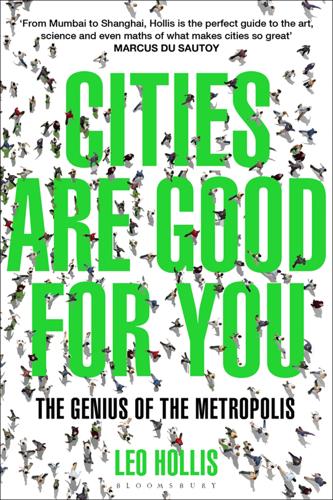
Cities Are Good for You: The Genius of the Metropolis
by
Leo Hollis
Published 31 Mar 2013
They were still building the road between the city and the airport. The fabric of the city was failing to keep up with the demands of the burgeoning creative economy it has spawned. The economist Enrico Moretti has been charting the new geography of jobs in America and his research reveals that the new knowledge workers have a multiplier effect wherever they work. Creative jobs often attract other creative workers; in addition they increase employment and salaries for those who are providing local services: ‘for each new high-tech job in a city, five additional jobs are ultimately created outside of the high-tech sector in that city’.10 The creative economy has a powerful impact on its host city, but not all cities are equal.
…
This brand new, hypermobile vision of the future comes with a warning: things are not as fluid, open and fresh as the economists would have us believe. Richard Florida was the first to coin ‘the creative class’ as a new, dynamic social and economic group who were having a profound impact on urban regeneration. The new human economy, he proposes, will be split between those who are mobile and those who are stuck. Knowledge workers will move around the world in search of places of excellence: ‘The mobile possess the means, resources and inclination to seek out and move to locations where they can leverage their talents.’12 It was this creative class that David Cameron had in mind when he launched Tech City in 2010. It is these burgeoning ‘hi-tech nomads’ that are causing congestion in gridlocked Bangalore.
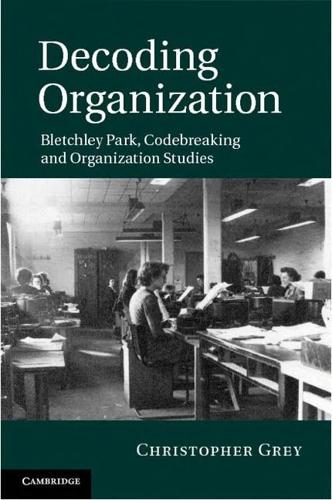
Decoding Organization: Bletchley Park, Codebreaking and Organization Studies
by
Christopher Grey
Published 22 Mar 2012
This in a way is a variant on the theme of showing how BP entailed more than the received image of the ‘genius codebreaker’, being instead a much more varied and interdependent set of activities. One reason why this was obvious at BP was that it existed at the cusp of computerization and so many work processes which are nowadays largely invisible could be discerned. For example, the modern-day ‘knowledge worker’ might be imagined tapping away at a laptop computer, but the tasks being performed might be understood as no more than the mundane filing and clerical work which at BP was performed by human labour (cf. Lilley, Lightfoot and Amaral, 2004: 141). Not just this last point but all of the insights summarised in this section are aided by the fact that this is an historical study.
…
Another instance would be the parallels between the ‘instinctive’ ability of an intelligence analyst or cryptanalyst to spot tiny hints – as discussed in Chapter 6 – and Weick and Roberts’ (1993) observation of the way that flight crews need to be alert to small things which might have large consequences. Or, to give a final example, Stuart Milner-Barry’s stress on ‘listening’ as central to his management of Hut 6, again described in Chapter 5, is echoed in contemporary practices of the management of knowledge workers as outlined by Alvesson and Svengisson (2003). No doubt many such parallels could be enumerated. They require careful handling, of course, because they carry the danger of anachronism. Equally, there are many aspects of BP which are highly unusual and will have very limited resonance, if any at all.

The Little Book That Builds Wealth: The Knockout Formula for Finding Great Investments
by
Pat Dorsey
Published 1 Mar 2008
Word and Excel are similar. Even if a competitor showed up on the scene next week with a word processor or spreadsheet that was five times easier to use and half the price, it would have a hard time gaining traction in the market because Excel and Word have become (like it or not) the common language of knowledge workers around the world. In fact, there has been an Office competitor called “OpenOffice” on the market for several years, selling for a lot less than Excel and Word—it’s actually free, which is a tough price to beat. The word-processing and spreadsheet programs look and feel a lot like Word and Excel, and the files are (largely) compatible with their Microsoft analogs.
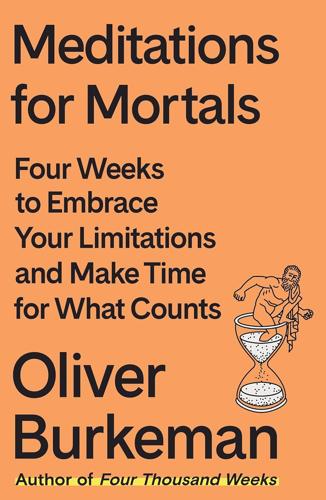
Meditations for Mortals: Four Weeks to Embrace Your Limitations and Make Time for What Counts
by
Oliver Burkeman
Published 8 Oct 2024
’ – LEONARD WOOLF If rules should serve life, rather than the other way around, it follows that you shouldn’t expect there to be many one-size-fits-all rules for making the most of your time. Everybody’s life is different, after all, and no individual life remains the same for very long. Still, there’s one rule that comes close. If you’re a ‘knowledge worker’ – that is, if you spend your days doing things with computers and words and ideas, as opposed to, say, building houses out of bricks – then you’ll make the most progress, and cover the most ground, if you limit yourself to about three or four hours of intense mental focus each day. It’s a little unnerving, to be honest, how frequently this specific range of hours crops up in historical accounts of the daily routines of artists, authors, scientists, composers, and others.

Warnings
by
Richard A. Clarke
Published 10 Apr 2017
A 2013 Oxford University study claimed that 47 percent of all U.S. jobs are at high risk of being automated within twenty years.24 In addition to blue-collar jobs, the study suggests that an increasing number of knowledge workers will also be at risk. Ever-improving weak AI married with large bodies of data will obviate the need for stockbrokers, medical diagnosticians, information technology support staff, and travel agents. It suggests that even lawyers, doctors, and investment managers will soon find themselves competing and losing to weak-AI software that can more rapidly assess the relevant data and make decisions with “deep, specialized, and often tacit knowledge.”25 A 2013 McKinsey Global Institute study predicts that weak AI will depose 140 million full-time knowledge workers worldwide.26 The idea is certainly not new.
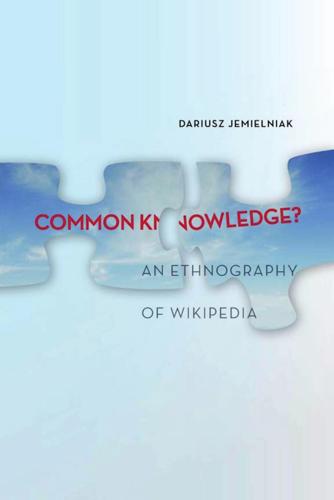
Common Knowledge?: An Ethnography of Wikipedia
by
Dariusz Jemielniak
Published 13 May 2014
Everybody on Wikipedia knows that this measure is flawed (in Wikipedia jargon, obsession with edit count is called “editcountitis”; see [[WP:Editcountitis]]), but in the absence of other quantified indicators, it is used nevertheless. Many editors routinely check the volume of edits of other editors (O’Neil, 2010). The situation resembles the amount of time spent at work as a measure of effectiveness of programmers and other knowledge workers: even though everybody agrees that it does not signify anything, many managers of software companies use it anyway since there is no better alternative (D. Jemielniak, 2009). Similarly, it creates pathologies, as organizational actors understand how the system works and act accordingly (for example, by working late to create a better impression).
…
Tamara Journal for Critical Organization Inquiry, 7(1), 20–36. Jemielniak, D. (2009). Time as symbolic currency in knowledge work. Information and Organization, 19, 277–293. Jemielniak, D. (2010). W obronie biurokracji. Master of Business Administration, 2(103), 72–79. Jemielniak, D. (2012). The new knowledge workers. Cheltenham, England: Edward Elgar. Jemielniak, D. (2013a). Netnografia, czyli etnografia wirtualna: Nowa forma badań etnograficznych. Prakseologia, 153, 97–115. Jemielniak, D. (2013b). Życie wirtualnych dzikich. Warsaw, Poland: Poltext. Jemielniak, D., & Gorbatai, A. (2012). Power and status on Wikipedia.
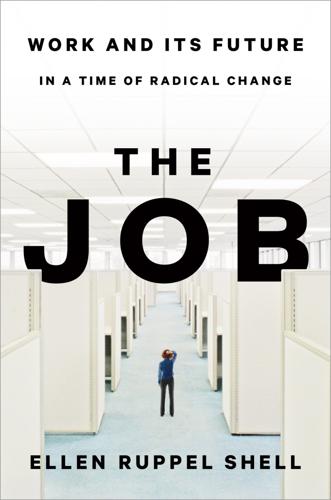
The Job: The Future of Work in the Modern Era
by
Ellen Ruppel Shell
Published 22 Oct 2018
As we’ve seen, this “Do now, think later” strategy is not exclusive to IT, but has become pervasive even in fields like journalism and medicine, where increasingly workers are judged not by the depth of their thinking and the weight of their judgment, but by their productivity, as measured by “content” in the case of journalists, and by “caseload” in the case of medical professionals. Many of these “knowledge workers” are left to wonder what real value they offer beyond corralling customers in service to their employers. Some organizations try to maximize productivity and encourage “disruptive” innovation by gathering workers in teams. But among the Finnish group’s most striking conclusions is that our faith in the power of teamwork may be misplaced.
…
Manufacturing is the largest contributor to spending on research and development in the United States, and the largest employer of engineers. And the manufacturing process is critical to the successful commercialization of scientific discoveries and technological innovation. The production process is—in its own right—a driver of innovation, and production workers are—in their own right—knowledge workers. In other words, invention and production are complementary processes, and sending production abroad risks cramping innovation at home. As economist Paul Samuelson once wryly observed: “Invention abroad that gives to [other countries] some of the comparative advantage that had belonged to the United States can induce for the United States permanent lost per capita real income.”

The 1% Rule: How to Fall in Love With the Process and Achieve Your Wildest Dreams
by
Tommy Baker
Published 18 Feb 2018
When we feel we’re moving the needle forward in life, even a seemingly insignificant amount, we stay motivated. Progress keeps us inspired and on track. In 2011, Harvard Business Review (Amabile and Kramer, 2011) performed an extensive study on motivation in the workforce and what truly makes people tick. Researchers concluded: “Through exhaustive analysis of diaries kept by knowledge workers, we discovered the progress principle: Of all the things that can boost emotions, motivation, and perceptions during a workday, the single most important is making progress in meaningful work. And the more frequently people experience that sense of progress, the more likely they are to be creatively productive in the long run.

Googled: The End of the World as We Know It
by
Ken Auletta
Published 1 Jan 2009
And that data eventually becomes a crutch for every decision, paralyzing the company and preventing it from making any daring design decisions.” Google honors its engineers as creators, treating them the way the legendary management consultant Peter Drucker suggested a half century ago that companies should treat “knowledge workers,” said Hal R. Varian, Google’s chief economist. But an engineering-dominated culture has drawbacks. “In some ways, they have not done enough to communicate what they are doing internally or externally,” said Paul Buchheit, Google’s twenty-third employee, the one who coined their “Don’t be evil” motto and who left with three other Googlers to launch a social network, FriendFeed, in 2006.
…
Fortune, May 26, 2008, and confirmed by Google. 18 conveys a sense of freedom: author interview with Krishna Bharat, September 12, 2007. 18 Burning Man’s ten stated principles: Burning Man Web site. 18 “Google is a cross”: author interview with Peter Norvig, August 21, 2007. 18 She described the culture as “flat”: author interview with Stacy Savides Sullivan, August 21, 2007. 19 the best U.S. company to work for: Fortune, January 2008. 19 salaries are modest: SEC 14-A filing, March 24, 2009. 19 stock option grants: Google 10-K filed with the SEC for the fiscal year ending December 31, 2008. 19 more applicants are accepted by Harvard... packet about each: author interviews with Lazslo Bock, August 22, 2007, Leesa Gidaro, September 12, 2007, and David Drummond, March 25, 2008, and Google orientation for new employees, October 8, 2007, attended by author. 20 consisted of 130 people: author interview with David Krane, August 22, 2007. 20 a total of eight hours of his time: author interview with a senior executive at Google. 20 a blog explaining why he left: “Why Designer Doug Bowman Quit Google,” Google Blogoscope, March 21, 2009. 20 “knowledge workers”: author interview with Hal Varian, March 28, 2008. 20 “In some ways”: author interview with Paul Buchheit, June 9, 2008. 21 user experience matters most: author interview with Matt Cutts, August 20, 2007. 21 “church/state wall”: author interview with Larry Page, March 25, 2008. 21 four thousand dollars a day: Jason Calacanis blog from AdSense, July 28, 2008. 21 one thousand employees have received this subsidy: supplied to the author by Google. 22 “moral force”: author interview with Eric Schmidt, June 11, 2008. 22 “great values”: author interview with Al Gore, June 10, 2008. 23 “How can you”: author interview with Eric Schmidt, September 12, 2007. 23 Winograd . . . recounted a discussion at a TGIF: author interview with Dr.

Smart Cities: Big Data, Civic Hackers, and the Quest for a New Utopia
by
Anthony M. Townsend
Published 29 Sep 2013
Starting with an analysis of risk factors, a piece of software could prioritize each day’s inspections instead of just working through a sequential list of addresses on some rigid calendar. Then, during the actual inspection, another analysis would point out the most likely trouble spots that needed scrutiny by the inspector’s expert eye. Goldsmith wanted to turn city workers from automatons into knowledge workers. The stated goal of this approach was an increase in productivity and effectiveness. But as with his privatization efforts in Indianapolis, it was also a Trojan horse for an assault on the city’s powerful labor unions. Fully implemented, Goldsmith’s reforms would make redundant an entire swath of middle managers, the supervisors and dispatchers who jockeyed line workers through their daily procedural paces.
…
He understood that it is nothing more than a diagnostic tool: “A single data point that does not tell you that a house is going to fall into blight but [the index could signal] that there is a higher than normal probability that it will be in disrepair.”33 The data could then be used as an input when allocating revitalization funds or directing social workers to trouble spots. It was a strategy cut from the same cloth as Goldsmith’s vision for transforming bureaucrats and civil servants into knowledge workers, but without the union busting. As a triage tool for stretching scarce city resources, it’s hard to argue against this kind of data-driven management. But as data becomes more central to how we measure government performance, it can create perverse incentives. One of the largest and longest-running data-driven management systems of any American city is the New York City Police Department’s CompStat program.
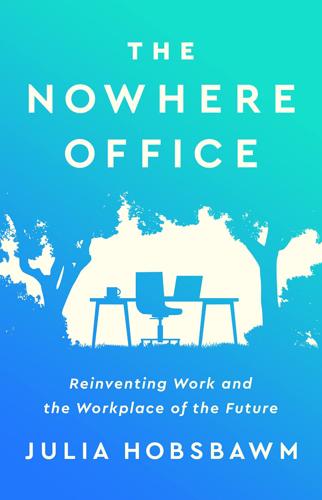
The Nowhere Office: Reinventing Work and the Workplace of the Future
by
Julia Hobsbawm
Published 11 Apr 2022
Dave Eisenberg, the property analyst, says that the benefits of not commuting and remote working may be outweighed by the unique asset of a non-home environment from which to work: In relative terms of the cost of people, especially highly paid, talented people, the cost of real estate is so small that I would rather actually spend more money on the office environment to make it more of an amenity, where we have great food that’s provided or we have great exercise facilities, or even great air and we have certainly the collegial components of getting people together. We’re just going to make the office better than it was. Elsbeth Johnson, one of the key thinkers on organisational behaviour at MIT and the author of Step Up, Step Back, told me: During the pandemic a lot of my knowledge-worker clients wanted to go back to the office and be together. Why? Simple: they missed being with each other and doing the work that really can only be done face to face. There were a number of drivers behind this. First and foremost, these people really like the work they do and the firm they work for.

The Second Intelligent Species: How Humans Will Become as Irrelevant as Cockroaches
by
Marshall Brain
Published 6 Apr 2015
All of the shops selling paper maps lose that source of revenue and lay off hundreds of workers. The demand for paper, ink, printing presses and fork lifts goes down, so jobs are lost there too. And there is far less shipping involved. Yes, a jobs do get created at tiny iPad app companies. These are the knowledge worker jobs, primarily for computer programmers. None of the people who used to run presses, forklifts, cutters, trucks or shops will ever be writing code for apps, and the compression rate is 10 to 1 or more. In other words, something like 10 jobs are lost for every new job created. That same kind of job compression is happening through so many sectors right now - newspapers, magazines, books, etc.

Intertwingled: The Work and Influence of Ted Nelson (History of Computing)
by
Douglas R. Dechow
Published 2 Jul 2015
Thus, mechanisms for finding and transcluding material need to be efficient, as generally speaking whatever is inefficient is done much less often and therefore is not as valuable in practice as it sounds in theory. A recommendation: the more developers might collaborate to create common models of transclusion, as opposed to the endless one-upmanship now practiced—the more transclusion can come out of the closet, and be seen as a core capability that helps all knowledge workers lift their game across all their work, creating greater value for their organizations and clients. Open Access This chapter is distributed under the terms of the Creative Commons Attribution Noncommercial License, which permits any noncommercial use, distribution, and reproduction in any medium, provided the original author(s) and source are credited.

The Psychology of Money: Timeless Lessons on Wealth, Greed, and Happiness
by
Morgan Housel
Published 7 Sep 2020
But it feels like you’re working 24/7. Derek Thompson of The Atlantic once described it like this: If the operating equipment of the 21st century is a portable device, this means the modern factory is not a place at all. It is the day itself. The computer age has liberated the tools of productivity from the office. Most knowledge workers, whose laptops and smartphones are portable all-purpose media-making machines, can theoretically be as productive at 2 p.m. in the main office as at 2 a.m. in a Tokyo WeWork or at midnight on the couch.²⁹ Compared to generations prior, control over your time has diminished. And since controlling your time is such a key happiness influencer, we shouldn’t be surprised that people don’t feel much happier even though we are, on average, richer than ever.
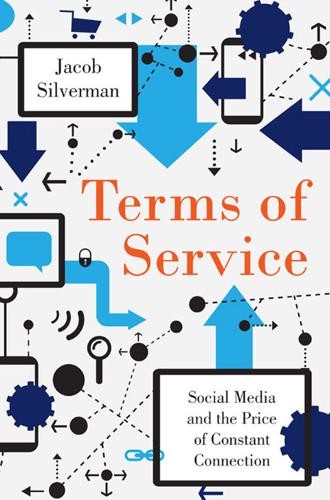
Terms of Service: Social Media and the Price of Constant Connection
by
Jacob Silverman
Published 17 Mar 2015
He was respected as a climate change expert and had 37,000 Twitter followers, and he loved being able to turn to them for conversation, to answer questions, or just idle chatter: “It was like this really erudite, diverse cocktail party that was always going on and that I could always wander into and just get into a chat.” But still the routine, the never-ending labor of the contemporary knowledge worker, got to him. After almost ten years of this, he wasn’t sure how much more he could handle. Part of that was the onslaught of information with which he had to deal. “There’s so much coming in all the time,” he said. “By the time I got to my computer, there’s this mass of stuff waiting.” He’d dispatch that in time, but this kind of informational busywork—e-mail, social media, keeping up with mailing lists and news sources, talking with his colleagues—would crop up constantly throughout the day.
…
My situation differs from Roberts’s in a few particulars, but as a freelance journalist, one who theoretically could always be working, finding new assignments, searching for stories, tracking invoices, or simply building up social capital and connections on social media, it can seem as if there is no distinction between work and not-work. There is always more information to consume, more work to be done, more pitches to write, or colleagues’ work to catch up on. Especially when one’s income is variable and contingent, it seems that the knowledge worker’s job is never done. More challenging is the sense of guilt and nagging anxiety that can come with putting the devices away and trying to carve out time to be alone or with friends. Like Roberts’s wife, my partner works mostly conventional hours at an office. When she comes home, we want to see each other, compare notes on the day, clean up, cook, read together, watch The X-Files—all those shared tasks and felicities that constitute domestic life.

The New Division of Labor: How Computers Are Creating the Next Job Market
by
Frank Levy
and
Richard J. Murnane
Published 11 Apr 2004
Peter Drucker, the management theorist, has been an enthusiastic member of the first school. In Drucker’s mind, computerization subsumes routine work, and so the real danger is a shortage of trained managers to direct what computers should do. Writer Jeremy Rifkin is a member of the second school. In The End of Work, Rifkin argues that the economy’s requirements for high-level knowledge workers can never compensate for the number of jobs computers will eliminate. The result will be a large concentration of workers in low-level dead-end jobs. Apparent support for this prediction comes from the U.S. Bureau of Labor Statistics, which projects that food preparation and serving workers—a low-paying occupation requiring little training—will gain more jobs in the decade from 2000 to 2010 than any other occupation.8 In his 1960 essay Herbert Simon made a set of predictions about the job mix in a typical corporation in 1985.
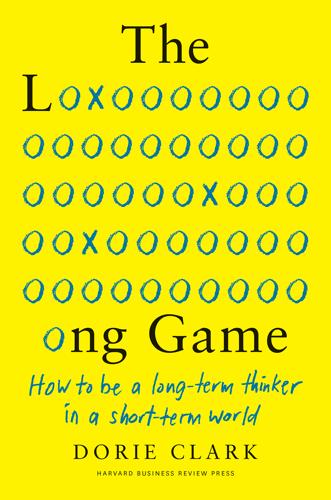
Long Game: How Long-Term Thinker Shorthb
by
Dorie Clark
Published 14 Oct 2021
In fact, in a study of senior leaders by the Management Research Group,1 97% identified strategic thinking—the ability to focus deliberately on long-term priorities—as key to their organization’s success. But something’s getting in the way. In a separate study,2 almost the exact same percentage of respondents—96%—claimed they don’t have enough time to do long-term strategic thinking. Really? There’s no question that professionals today are busy. A McKinsey study shows knowledge workers spend a full 28% of their time processing email,3 and a separate study by the Atlassian Group says that professionals attend an average of sixty-two meetings per month4—which sounds like a shocking number, until you realize it breaks down to about two or three meetings per workday. That’s not unusual; that’s just Tuesday.
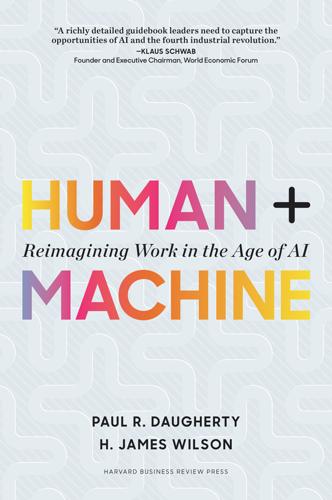
Human + Machine: Reimagining Work in the Age of AI
by
Paul R. Daugherty
and
H. James Wilson
Published 15 Jan 2018
Shivon Zilis, investor at Bloomberg Beta writes in a 2016 article: “Agents will make this possible, using a blend of learning algorithms and distributed labor to perform an ever-widening range of tasks at low cost. With help from these agents, we’ll be able to look as smart as those CEOs do today.” Zilis continues: “We’ll also become more productive. Most knowledge workers spend less than half their time doing things they’re really good at (i.e., what they’ve been hired to do). The rest is spent doing research, arranging meetings, coordinating with other people, and performing other minutia of office life. These tasks could easily be done just as well by a machine or intelligent service.”14 Myriad bots are available to help people become better at their work.

Blockchain Chicken Farm: And Other Stories of Tech in China's Countryside
by
Xiaowei Wang
Published 12 Oct 2020
The sociopolitical upheaval in China after the Great Leap Forward and the wild uncertainty of the current U.S. political climate both stand as lessons to China’s current lawmakers: agrarian transition is enormously tricky and the consequences are huge, especially in an era of global agricultural trade. Although China harbors dreams of becoming an AI superpower, the question of the countryside will have to be resolved in order for China to garner enough knowledge workers. China has one of the largest rates of income inequality in the world, due to the rural-urban income gap. Rural migrants work for little pay in cities but are unable to actually stay in urban areas. Yet hukou system reform is beginning, although there are new signs that rural hukou holders are less enthusiastic about switching to urban hukous.5 China’s land reform has continued by allowing farmers to lease out their land or transfer land rights to another, enabling an extra source of income.

WTF?: What's the Future and Why It's Up to Us
by
Tim O'Reilly
Published 9 Oct 2017
It is fundamentally an open-ended network in which filtering and curation (known in other contexts as “management”) happens largely after the fact. But that’s not all. While large physical retailers cut costs by eliminating knowledgeable workers, using lower prices and greater selection to hedge against worse customer service (compare an old-time hardware store with a chain like Home Depot or Lowe’s), online retailers did not make these same trade-offs. Instead of just eliminating knowledgeable workers, they replaced and augmented them with software. Even though there are several orders of magnitude more products on Amazon than in physical stores, you don’t need a salesperson to help you find the right product—a search engine helps you find it.
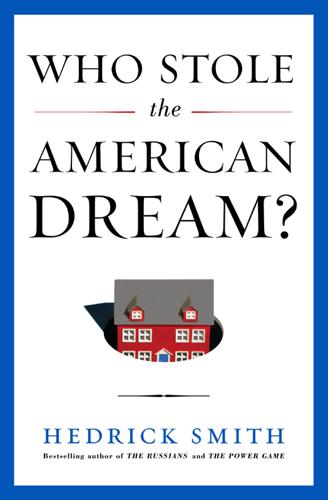
Who Stole the American Dream?
by
Hedrick Smith
Published 10 Sep 2012
Free trade economist Jagdish Bhagwati forecast that “in the end, Americans’ increasing dependence on an ever-widening array of technology will create a flood of high-paying jobs….” The older generation coached Generation X to stake its future on becoming engineers, computer programmers, and systems architects—an irreplaceable army of “knowledge workers”—because knowledge economy expertise would protect them from low-cost Asian competitors. The dawning of the digital era, its enthusiasts asserted, was altering the global balance of economic power back in our favor. “You could think of it as brain power vs. muscle power,” said Harvard economist Richard B.
…
In 2009, the industry lobbying group TechAmerica reported that while the industry cut 245,600 U.S. jobs, it added more than 100,000 H-1B visa workers. Syntel: Grad Student to Billionaire Once again, the driving force behind the wave of imported IT workers on H-1B visas was the aggressive coterie of Indian offshoring firms, Infosys, Wipro, Satyam, and Tata. They have recruited tens of thousands of Indian knowledge workers at home and sent them into America. Other so-called body shops or multinational temp agencies, some owned by Americans, have copied the Indian strategy. But the four Indian firms have dominated the field. During the recession, from 2007 to 2009, four of the five largest users of H-1B visas were Indian firms—Tata, Infosys, Wipro, and Satyam—each receiving several times more visas than American giants such as Microsoft and Cisco, according to Ron Hira of Rochester Institute of Technology, who has frequently testified to Congress on offshoring issues.
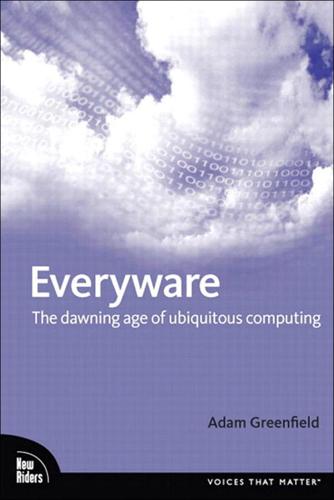
Everyware: The Dawning Age of Ubiquitous Computing
by
Adam Greenfield
Published 14 Sep 2006
And while the intent wasn't to spy on such workers, it was readily apparent how the system could be abused, especially when the device responsible was so humble and so easy to forget about. Original sin came early to ubicomp. Want went on to join Mark Weiser's team at PARC (Palo Alto Research Center), where he contributed to foundational work on a range of networked devices called "tabs," "pads," and "boards." As with Active Badge, these were digital tools for freely roaming knowledge workers, built on a vocabulary of form universally familiar to anyone who's ever worked in an office: name tags, pads of paper, and erasable whiteboards, respectively.* * These form factors had been looming in the mass unconscious for a long time. PARC's "pad," in particular, seemed to owe a lot to the slablike media/communication devices used by astronauts Frank Poole and Dave Bowman in Stanley Kubrick's 1968 classic 2001: A Space Odyssey.

Utopia for Realists: The Case for a Universal Basic Income, Open Borders, and a 15-Hour Workweek
by
Rutger Bregman
Published 13 Sep 2014
Imagine there was a single measure that could wipe out all poverty everywhere, raising everybody in Africa above our Western poverty line, and in the process put a few extra months’ salary in our pockets too. Just imagine. Would we take that measure? No. Of course not. After all, this measure has been around for years. It’s the best plan that never happened. I’m talking about open borders. Not just for bananas, derivatives, and iPhones, but for one and all – for knowledge workers, for refugees, and for ordinary people in search of greener pastures. Of course, we’ve all learned the hard way by now that economists are no fortune tellers (the economist John Kenneth Galbraith once quipped that the only purpose of economic forecasts is to give astrology a better image), but on this point their views are remarkably consistent.

Hit Refresh: The Quest to Rediscover Microsoft's Soul and Imagine a Better Future for Everyone
by
Satya Nadella
,
Greg Shaw
and
Jill Tracie Nichols
Published 25 Sep 2017
In the face of these many coming shifts, there must be a new social contract that helps to achieve economic surplus and opportunity on a more equitable basis. To get there, what will the new labor movement look like? There has been talk of a Universal Basic Income. How will we re-skill and retrain workers—not just high-end knowledge workers, but also low-skill and mid-skill labor? Can the service sector and people-on-people jobs be the source of new employment for many displaced from traditional manufacturing or agricultural sectors? Finally, as leaders, what is our role? At the end of the day, leaders of any company are evaluated based on their ability to grow the business, to clear the way for innovations that inspire customers.

Robots Will Steal Your Job, But That's OK: How to Survive the Economic Collapse and Be Happy
by
Pistono, Federico
Published 14 Oct 2012
In 1995 he published The End of Work: The Decline of the Global Labor Force and the Dawn of the Post-Market Era8, where he predicted that worldwide unemployment would increase as information technology eliminates tens of millions of jobs in the manufacturing, agricultural, and service sectors. He traced the devastating impact of automation on blue-collar, retail and wholesale employees: “While a small elite of corporate managers and knowledge workers reap the benefits of the high-tech world economy, the American middle class continues to shrink and the workplace becomes ever more stressful”9. While he may have gotten some of the details wrong, the general outline is so spot-on that it seems almost prophetic. Over the past twenty years we have witnessed the gradual disappearance of the American middle class, with rising costs and lower income1011, while the wealthiest Americans have accumulated more wealth than ever before in history.

What About Me?: The Struggle for Identity in a Market-Based Society
by
Paul Verhaeghe
Published 26 Mar 2014
None of this must come as a revelation; yet, for 20 years now, neo-liberal ideology has been drummed into schoolchildren in the name of a ‘value-free’, competency-based education system. The jargon used is a good indicator. Policy documents are larded with terms such as ‘educational consumers’, ‘output-based financing’, ‘performance funding’, ‘accreditation’, ‘accountability’, ‘benchmarks’, ‘stakeholders’, ‘human capital’, and ‘knowledge workers’. The annual Dutch budget memorandum is a case in point. In the section devoted to education, the emphasis is on issues such as ‘excelling’, uncovering talent, and performance bonuses(!) for outstanding teachers. Teachers’ organisations have responded angrily, attacking the lack of a central vision of education and the narrow economic focus, and expressing fears that weak pupils will fall by the wayside.
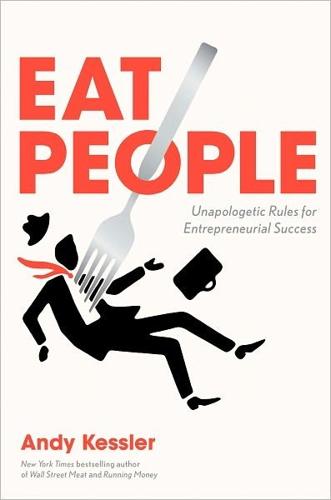
Eat People: And Other Unapologetic Rules for Game-Changing Entrepreneurs
by
Andy Kessler
Published 1 Feb 2011
Companies spent millions on factory gurus, Six-Sigma-smoking consultants from the 1950s all the way through the 1970s to help them squeeze gains out of workers. That’s what drove the stock market and wealth creation for several decades. That’s all fine in an Industrial Age when you can actually measure worker output in the form of widgets per day, cars off the line per hour, and the like. But in a service economy filled with knowledge workers flitting around trying to produce more, uh, banking or more insurance or more satisfaction at McDonald’s, the productivity game isn’t so easy. It’s hard to find ways to make workers more productive. Give’em a BlackBerry or something. Is that the way to create wealth? I doubt it. The trick is to look under the covers to find the new type of technology-bred capital stock—and figure out what all this technology is replacing.
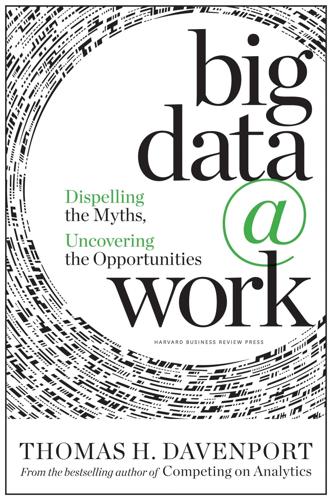
Big Data at Work: Dispelling the Myths, Uncovering the Opportunities
by
Thomas H. Davenport
Published 4 Feb 2014
Many vendors are moving to so-called “SQL on Hadoop” approaches, simply because SQL has been used in business for a couple of decades, and many people (and higher-level languages) know how to create SQL queries. This business view ensures that big data is more consumable by the tools and the knowledge workers that already exist in an organization. Chapter_05.indd 123 03/12/13 1:04 PM 124 big data @ work Applications In this layer, the results of big data processing are analyzed and displayed either by business users or by other systems using them to make automated decisions. As I noted earlier in this chapter, the analysis of big data is not so different from traditional data a nalysis, except that it is more likely to be done with machine learning (automated model fitting tools), faster processing tools like in-memory and high-performance analytics environments, and visual analytics.
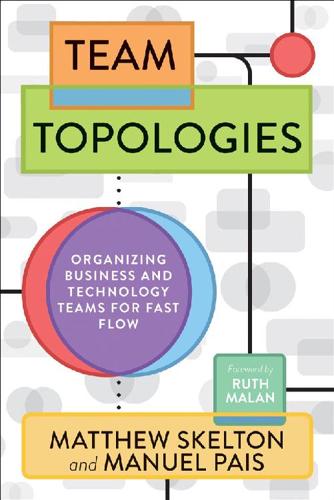
Team Topologies: Organizing Business and Technology Teams for Fast Flow
by
Matthew Skelton
and
Manuel Pais
Published 16 Sep 2019
A stream-aligned team proactively and regularly reaches out to the supporting fundamental-topologies teams (complicated subsystem, enabling, and platform). Members of a stream-aligned team feel they have achieved or are in the path to achieving “autonomy, mastery, and purpose,” the three key components of engaged knowledge workers, according to Daniel Pink.7 (We will provide a more detailed view of how stream-aligned teams relate to the platform in Chapter 8.) Enabling Teams In the book Accelerate, Forsgren, Humble, and Kim tell us that high-performing teams are continuously improving their capabilities in order to stay ahead.

Designing Your Life: How to Build a Well-Lived, Joyful Life
by
Bill Burnett
and
Dave Evans
Published 12 Sep 2016
Human beings, like all living things, need energy to live and to thrive. Men and women used to spend most of their daily energy on physical tasks. For most of human history, men and women were working at hunting and gathering, raising children, and raising crops, most of their time consumed with energy-intensive physical labor. Nowadays, many of us are knowledge workers, and we use our brains to do the heavy lifting. The brain is a very energy-hungry organ. Of the roughly two thousand calories we consume a day, five hundred go to running our brains. That’s astonishing: the brain represents only about 2 percent of our body weight, and yet it takes up 25 percent of the energy we consume every day.
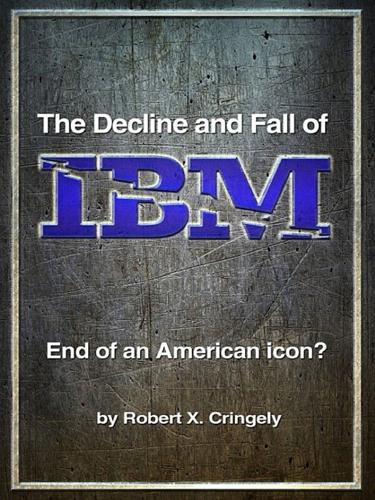
The Decline and Fall of IBM: End of an American Icon?
by
Robert X. Cringely
Published 1 Jun 2014
They are completely disconnected from the day-to-day work of their people or the people themselves (they are often remote or sit in a different building), rarely seeing their people. Managers are just paper-pushers who implement the (often bad and short-sighted) policies that come down from above. Despite this, the company is *full* of extremely talented and knowledgeable workers (for the most part). So all hope is not lost, but their salvation would have to start with a radical change in management at all levels. And who would have to decide this? Management. Richard Steven Hack | May 05, 2007 | 5:32PM Lack of communication ‘deadly’ Richard Hack has almost hit the nail on the head.
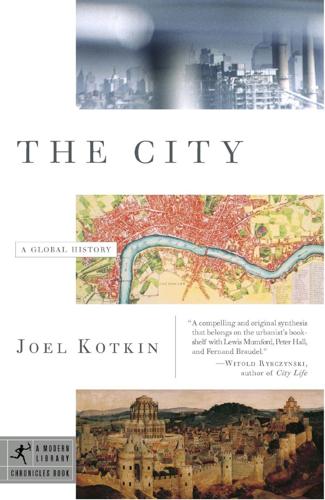
The City: A Global History
by
Joel Kotkin
Published 1 Jan 2005
The rise of “telecities” around the world suggests the emergence of new high-end industrial pockets, including in the less urbanized sections of France, Belgium, and Korea. The increased application of home commuting threatens to reduce even further the roles once played exclusively by urban regions. The evolution of a home-centered economy, in its infancy today, promises elite knowledge workers an unprecedented latitude in choosing where they live and work.23 THE RISE OF THE EPHEMERAL CITY Under these circumstances, even the best-positioned urban areas face severe demographic and economic challenges. Many of the young people lured to these cities in their twenties often depart when they start families and businesses.

The Filter Bubble: What the Internet Is Hiding From You
by
Eli Pariser
Published 11 May 2011
• You should be able to prevent information collected about you for one purpose from being used for others. • You should be able to correct inaccurate information about you. • Your data should be secure. Nearly forty years later, the principles are still basically right, and we’re still waiting for them to be enforced. We can’t wait much longer: In a society with an increasing number of knowledge workers, our personal data and “personal brand” are worth more than they ever have been. Especially if you’re a blogger or a writer, if you make funny videos or music, or if you coach or consult for a living, your online data trail is one of your most valuable assets. But while it’s illegal to use Brad Pitt’s image to sell a watch without his permission, Facebook is free to use your name to sell one to your friends.
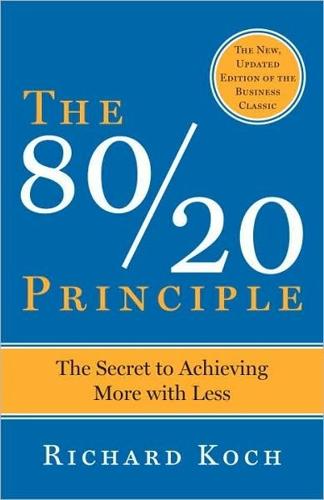
The 80/20 Principle: The Secret of Achieving More With Less
by
Richard Koch
Published 15 Dec 1999
Given the piecemeal use and gradual spread of the 80/20 Principle, it remains underexploited, even by those who recognize the idea. It is extremely versatile. It can be profitably applied to any industry and any organization, any function within an organization and any individual job. The 80/20 Principle can help the chief executive, line managers, functional specialists, and any knowledge worker, down to the lowest level or the newest trainee. And although its uses are manifold, there is an underlying, unifying logic that explains why the 80/20 Principle works and is so valuable. WHY THE 80/20 PRINCIPLE WORKS IN BUSINESS The 80/20 Principle applied to business has one key theme—to generate the most money with the least expenditure of assets and effort.

Do More Faster: TechStars Lessons to Accelerate Your Startup
by
Brad Feld
and
David Cohen
Published 18 Oct 2010
At Return Path, we have sometimes left critical jobs open for months as we cycle through candidates looking for “the one.” As painful as it has been for us to limp along with the position open, taking our time and hiring the absolutely right person has always been the right decision. It is said that with knowledge workers, the best employee is 10 times more productive and impactful than the average employee. Why settle for anything less than the absolute best? Temptation 2: Firing too slowly. Everyone's heard the analogy about a bad employee being like a cancer in an organization—his poor performance or attitude spread and he needs to be cut out to preserve the rest of the organization.

The Economic Singularity: Artificial Intelligence and the Death of Capitalism
by
Calum Chace
Published 17 Jul 2016
Search We are strangely nostalgic about the future, and we are often disappointed that the present is not more like the future that was foretold when we were younger. 2015 was the 30th anniversary of the 1985 movie “Back to the Future”, and it was also the year to which the hero travels at the end of the story. Journalists and commentators complained about the failure of hoverboards and flying cars to arrive, as predicted in the film. We didn't get hoverboards, but we did get something even more significant. As recently as the late 20th century, knowledge workers could spend hours each day looking for information. Today, less than twenty years after Google was incorporated in 1998, we have something close to omniscience. At the press of a button or two, you can access pretty much any knowledge that humans have ever recorded. To our great-grandparents, this would surely have been more astonishing than flying cars.

Cogs and Monsters: What Economics Is, and What It Should Be
by
Diane Coyle
Published 11 Oct 2021
Regions already part of the rust belt have become even more disadvantaged because new, knowledge-based technologies require certain kinds of skills that come with a long formal education (known in economics jargon as skill-biased technical change) and also significant exchange of informal know-how (tacit, rather than codified, knowledge in the jargon). These features have led to a geographical sorting between different kinds of people. The highly-educated knowledge workers have increasingly congregated in specific large urban centres such as San Francisco and Silicon Valley, or capitals like Berlin, London, and Paris. The unevenness of economic geography has been evident since Alfred Marshall (2013) first identified what are known as ‘agglomeration economies’ in 1890, in other words the economic benefits of jobs and production clustering close together.

Uncanny Valley: A Memoir
by
Anna Wiener
Published 14 Jan 2020
They had probably been in San Francisco to meet with their investors, wind things down. The company had been purchased by the search-engine giant, in what was rumored to be an eight-figure acquihire. * * * Back in San Francisco, I felt acutely aware of the city’s beauty, and of the inbound aesthetic shift. Half the knowledge workers I encountered had the same thin cashmere sweaters I did, and the same lightweight eyeglasses. Some of us had the same skin tints, from the same foundation. We complained of the same back problems, induced by the same memory-foam mattresses. In apartments decorated with the same furniture and painted the same shades of security-deposit white, we placed the same ceramic planters holding the same low-maintenance plants.
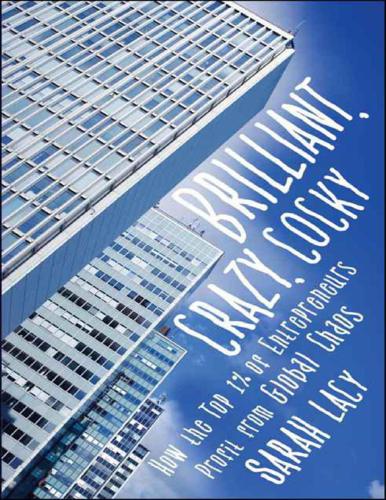
Brilliant, Crazy, Cocky: How the Top 1% of Entrepreneurs Profit From Global Chaos
by
Sarah Lacy
Published 6 Jan 2011
Perhaps it goes back to colonial days, but whatever it is, confusion through effusive politeness is an Indian skil that long predates cal center scripts. There was a lot of bragging in the mid-2000s that India had cleverly skipped the manual part of modernization and joined the United States as a services economy of knowledge workers—in the same way that India as a nation had skipped the authoritarian dictatorships that plagued much of the developing world after colonization and gone straight to democracy. The services business is the one thing India has that the rest of the emerging world envies. Second-tier cities in China are trying to replicate it, as are smal er nations in Latin America and Africa.
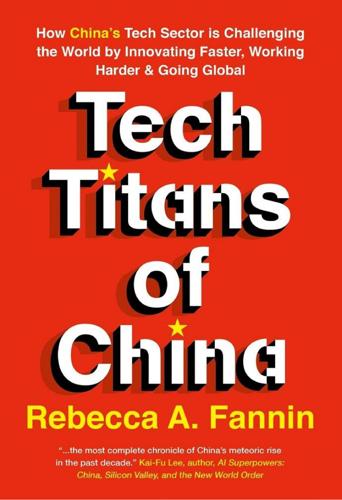
Tech Titans of China: How China's Tech Sector Is Challenging the World by Innovating Faster, Working Harder, and Going Global
by
Rebecca Fannin
Published 2 Sep 2019
By focusing on professional networking, LinkedIn remains open, and you can click on it in China to share posts, messages, and content, which I’ve done without being blocked. LinkedIn was attracted to China by the rapid development of the Chinese economy and growth of professionals to more than 140 million who represent roughly one in five of the world’s knowledge workers. “The expansion of our offering in China marks a significant step forward in our mission to connect the world’s professionals to make them more productive and successful,” wrote LinkedIn’s CEO Jeff Weiner in launching a simplified Chinese website in 2014.7 “Our goal is to connect these Chinese professionals with each other and with the rest of LinkedIn’s 277 million members in over 200 countries and territories.”

Open: The Progressive Case for Free Trade, Immigration, and Global Capital
by
Kimberly Clausing
Published 4 Mar 2019
International business may also be a driver of migration flows. Multinational firms often post workers outside of their home countries; in fact, several prominent global companies employ half their workforces outside of their countries of origin. Skilled workers are particularly likely to be sent abroad, and innovation often involves global teams of knowledge workers.39 Immigration flows strengthen ties between the United States and other countries. When immigrants leave their origin countries to seek new lives in the United States, they continue to communicate with their home countries, talking to friends and family, sending money home, and sometimes visiting in person.

Pivot: The Only Move That Matters Is Your Next One
by
Jenny Blake
Published 14 Jul 2016
As Geoff Colvin writes in Humans Are Underrated: What High Achievers Know That Brilliant Machines Never Will, it is futile to ask what computers will never be able to do, since the answer is most likely nothing. Instead, we should focus on the unique value people can provide as we shift from our role as knowledge workers into relationship workers. Colvin suggests that the guiding question then becomes, “What are the activities that we humans, driven by our deepest nature or by the realities of daily life, will simply insist be performed by other humans, regardless of what computers can do?” He adds, “To look into someone’s eyes—that turns out to be, metaphorically and quite often literally, the key to high-value work in the coming economy.” ______ This part of scanning is about asking expansive questions, observing what arises, discovering holes in the market, and pinpointing potential skills to develop.
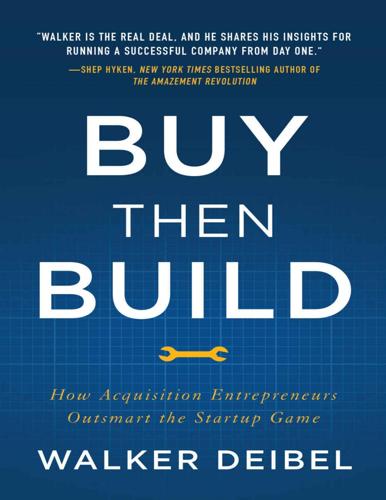
Buy Then Build: How Acquisition Entrepreneurs Outsmart the Startup Game
by
Walker Deibel
Published 19 Oct 2018
Land was the limiter that gave birth to the Agricultural period; access to capital was the limiter that drove the Industrial period; and education was the limiter that produced the Knowledge period. But since 2000, with land easily accessible, capital in abundance, and the saturation of advanced education unable to produce higher pay rates, a new limiter has emerged. “Right now,” says Davison, “becoming an entrepreneur is like becoming a knowledge worker in 1900. That is, it is possible but hard enough that few people do it.” Entrepreneurship is the next limiter to be conquered. As the economy shifts, entrepreneurial skills will, like never before, define the forefront of economic development. Said another way, entrepreneurship is the key to success in the current economy.
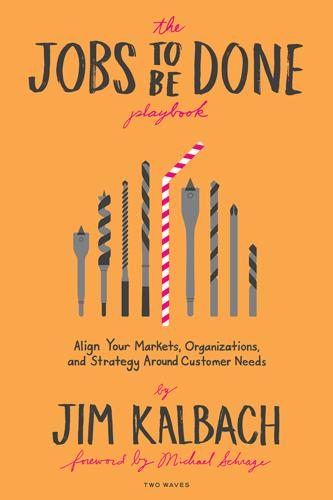
The Jobs to Be Done Playbook: Align Your Markets, Organization, and Strategy Around Customer Needs
by
Jim Kalbach
Published 6 Apr 2020
I select several plays to illustrate how JTBD can be applied within each mode of thinking. The last chapter brings plays together in methods or “recipes” you can use in different situations. Who This Book Is For Most distinctions between strategy and execution are meaningless. Judgment calls happen at all levels of an organization in a cascade of decision-making. In modern knowledge-worker-based companies, strategy isn’t confined to the upper echelons only—it happens throughout the enterprise. Managers and individual contributors alike need to be aligned to the same perspective, and everyone contributes to providing solutions that customers will value. JTBD provides a North Star to follow.

Open for Business Harnessing the Power of Platform Ecosystems
by
Lauren Turner Claire
,
Laure Claire Reillier
and
Benoit Reillier
Published 14 Oct 2017
This means that many ‘low-level’ tasks can now be efficiently and flexibly outsourced to a platform, and that therefore ‘high-cost’ workers are increasingly unlikely to be able to compete for these activities. You don’t need to have offices everywhere to arbitrage labour market rates anymore. Knowledge workers are now a click away, and this is understandably one aspect of globalization that is increasingly worrying employees and governments. The future of management Platform companies will change the way we work, and leading these new organizations successfully will require very different management skills.
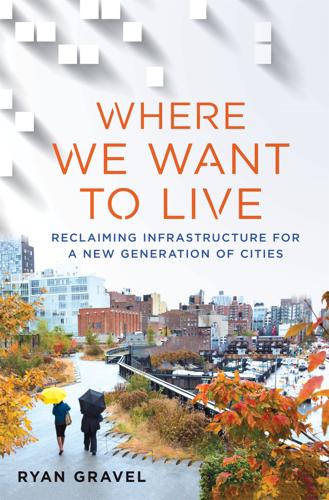
Where We Want to Live
by
Ryan Gravel
Published 2 Feb 2016
And as this broad context continues to develop and drive physical, cultural, and political change, the most competitive communities—as always—will be those that invest in the people who are driving their economy. For many cities, this target population is composed of what urban thinker Richard Florida calls the “creative class,” a broad group “spanning science and technology, arts, media, and culture, traditional knowledge workers, and the professions.”4 Other places may need to define their targets differently. Some cities, for example, might more successfully steer their efforts toward students, seniors, or immigrants if that is their best opportunity for growth. Interestingly, and in any case, there seems to be increasing consensus among these groups for more urban and car-free lifestyles.

The Complacent Class: The Self-Defeating Quest for the American Dream
by
Tyler Cowen
Published 27 Feb 2017
Quite frankly, those are the parts of America where people feel very good about themselves.4 If we look at all metropolitan areas, rather than just the large ones, Durham–Chapel Hill, Bloomington, and Ann Arbor—all college towns—climb into the top five for segregation of the working class away from the non–working class. That is again the somewhat incestuous self-clustering of the complacent class rearing its head. Due to their major universities, those towns all have lots of knowledge workers, people proficient in IT or biotech, lots of skilled labor, lots of creativity, and people working hard to get ahead—all features that, it turns out, correlate with residential segregation by education and social class.5 Along related lines, Florida and Mellander also find that racial segregation is positively correlated with areas that have a lot of high-tech industry, with those that have a preponderance of people in the so-called creative class, who hold jobs requiring creative skills, and with those heavily populated by college graduates.
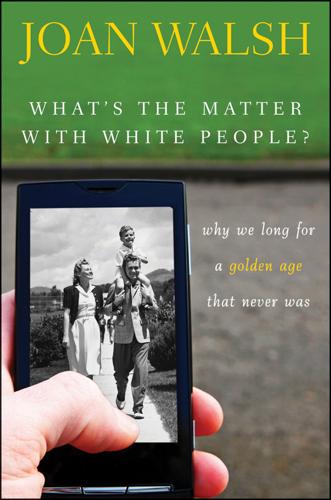
What's the Matter with White People
by
Joan Walsh
Published 19 Jul 2012
Much of the student left took for granted the affluent society that stifled their dreams and made them mere cogs of capitalism but that also made their protest possible. They weren’t alone. McGovern strategist Fred Dutton, who worked for Johnson and both John and Robert F. Kennedy, began talking about a “New Politics” uniting students, feminists, minorities, and elite knowledge workers, leaving big union leaders on the sidelines. In the affluent, postmaterial age of “individual purpose” that Dutton and other “New Politics” Democrats believed had finally arrived, union members didn’t deserve a special place at the Democrats’ table anymore. In short, prosperity undermined the New Deal coalition, giving white workers the freedom to believe their enemy was black protesters and white hippies, while providing the New Left with the dream it could create a progressive majority coalition without big labor.

We-Think: Mass Innovation, Not Mass Production
by
Charles Leadbeater
Published 9 Dec 2010
In March 2002 the pilot was extended to 20,000 engineers, who now self-schedule. After three years, the average engineer was earning more money and working two hours less per week. Productivity was up by 5 per cent and quality up by 8 per cent. BT is adopting elements of the open approach to work because that is the best way to motivate and co-ordinate knowledge workers at low cost. The collaborative values of We-Think are also reshaping how places of work are designed. Modern organisations revolve around offices that are often designed to help managers to stay in charge. Offices are good for politics, flirting and gossip. They are dreadful places for intellectual curiosity.
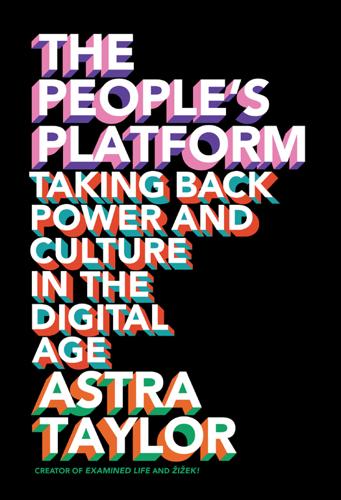
The People's Platform: Taking Back Power and Culture in the Digital Age
by
Astra Taylor
Published 4 Mar 2014
By the ’80s, any job requiring that the same steps be performed repeatedly was disappearing—going over there or into software.25 At the same time the ideal of a “postindustrial society” offered the alluring promise of work in a world in which goods were less important than services. Over time, phrases like “information economy,” “immaterial labor,” “knowledge workers,” and “creative class” slipped into everyday speech. Mental labor would replace the menial; stifling corporate conventions would give way to diversity and free expression; flexible employment would allow them to shape their own lives. These prognostications, too, were not to be. Instead the increase of shareholder influence in the corporate sector accelerated the demand for ever-higher returns on investment and shorter turnaround.

Exponential Organizations: Why New Organizations Are Ten Times Better, Faster, and Cheaper Than Yours (And What to Do About It)
by
Salim Ismail
and
Yuri van Geest
Published 17 Oct 2014
Implications: Infinite computation (as Moore’s Law continues) and infinite storage, both essentially free; the Quantified Employee; AaaS (Analytics as a Service); hardware as the new software via developments such as Arduino; new business models based on connected products. AI, data science and analytics Description: Ubiquitous usage of Machine Learning and Deep Learning algorithms to process vast caches of information. Implications: Algorithms driving more and more business decisions; AIs replacing a large percentage of knowledge workers; AIs looking for patterns in organizational data; algorithms embedded into products. Virtual/augmented reality Description: Avatar-quality VR available on desktop in 2-3 years. Oculus Rift, High Fidelity and Google Glass drive new applications. Implications: Remote viewing; centrally located experts serving more areas; new practice areas; remote medicine.
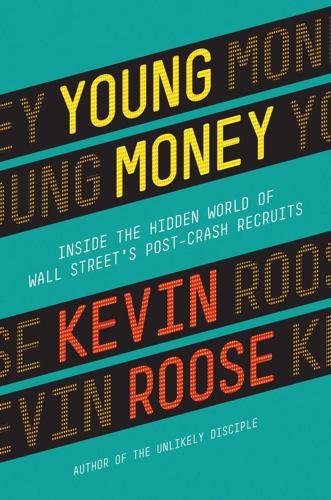
Young Money: Inside the Hidden World of Wall Street's Post-Crash Recruits
by
Kevin Roose
Published 18 Feb 2014
“Most large investment banks block…social media services in their offices”: William Alden, “On Wall St., Keeping a Tight Rein on Twitter,” New York Times (DealBook), March 21, 2012. “A recent academic study of young bankers”: Alexandra Michel, “Transcending Socialization: A Nine-Year Ethnography of the Body’s Role in Organizational Control and Knowledge Workers’ Transformation,” Administrative Science Quarterly, September 2011, vol. 56, no. 3. Chapter Eight “A few minutes earlier, Soo-jin had finished hearing Deutsche Bank’s male investment bank chief”: Kevin Roose, “The Continuing Trials of Wall Street’s Women,” New York Times (DealBook), October 26, 2010.
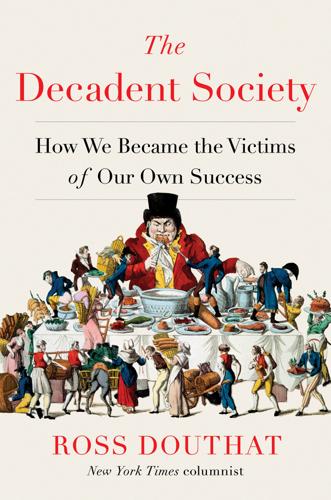
The Decadent Society: How We Became the Victims of Our Own Success
by
Ross Douthat
Published 25 Feb 2020
The most politically appealing theories—the ones animating our populist and socialist insurgencies—tend to blame neoliberalism itself, claiming that the medicine for 1970s stagflation has proven to be poison in large doses. The push for ever-freer trade has hollowed out Western economies, the argument goes, offshoring productive industries and killing decent jobs, making financiers and “knowledge workers” rich while the middle class shrinks steadily. Meanwhile, low tax rates, intended to spur investment, have enabled the rich to keep more of their gains while starving the programs required to protect the poor and boost the working class. Antitrust policy has become so fixated on the supposed benefits of consolidation—lower prices for consumers—that it has ignored all the ways that market-dominant corporations can warp policies and strangle innovation.

Empty Planet: The Shock of Global Population Decline
by
Darrell Bricker
and
John Ibbitson
Published 5 Feb 2019
Automation, artificial intelligence, and other spurs to productivity could take care of the problem of labor shortages, though robots thus far have proved to be pretty useless at purchasing refrigerators and other staples of the consumer economy. And the affluence gap between corporate executives and sought-after knowledge workers, on the one hand, and regular folk, on the other, simply has to narrow. That’s not left wing. That’s just safety valve. Some analysts predict smaller families will make society richer by allowing parents to work longer hours, thus increasing their skill at the work they do and making it possible to lavish more attention and money on their only child when they finally get home.455 We’re not so sure.
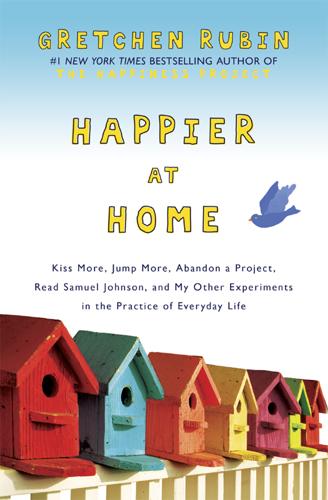
Happier at Home: Kiss More, Jump More, Abandon Self-Control, and My Other Experiments in Everyday Life
by
Gretchen Rubin
Published 3 Sep 2012
I’d always made recommendations, but now I looked for more opportunities to suggest the work of people I respected, and, if appropriate, immediately to send a follow-up email with contact information. For instance, whenever I could, I touted the work of Manhattan Home Networks’s Charles Stanton, the computer specialist to whom I am eternally grateful for his unfailing ability to resolve the IT difficulties to which a self-employed tech-impaired knowledge-worker like myself falls prey. Along the same lines, because I feel a special sympathy for writers, I used my work online to shine a spotlight on great writing. I linked to someone else’s blog every day from my blog, and I recommended outstanding books as often as I could. These weren’t major acts of kindness; they were the minor, nonrandom equivalent of paying a stranger’s toll or putting money in a parking meter.
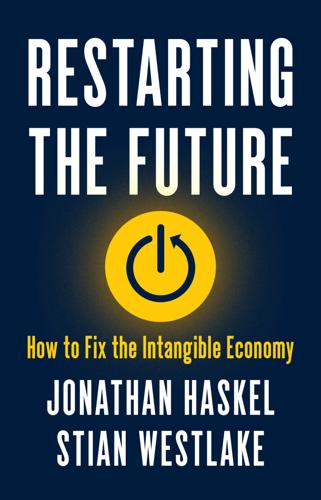
Restarting the Future: How to Fix the Intangible Economy
by
Jonathan Haskel
and
Stian Westlake
Published 4 Apr 2022
But our planning systems make it painfully hard to build new office space and new housing in and around the most dynamic cities, like San Francisco and London. COVID-19, which enforced remote working for many people, temporarily removed some of these planning issues, but it introduced its own problems, depriving knowledge workers of the face-to-face contact that at least some of them feel is important for their work. Both congested cities and a haphazard shift to remote working make it harder to invest in intangibles, likely slowing down long-term investment relative to what it might have been. We examine this issue, and potential solutions to it, in chapter 6.

Hands-On RESTful API Design Patterns and Best Practices
by
Harihara Subramanian
Published 31 Jan 2019
Smarter environments, such as smarter hotels, homes, hospitals, manufacturing floors, and cloud-enabled data centers (CeDCs), are going to be empowered when they get seamlessly integrated with nearby or faraway transactional and analytical systems. Knowledge visualization applications The ensuing era is definitely knowledge-centric. Knowledge discovery and dissemination are going to be the prime activity for knowledge workers. Software services, personal as well as professional devices, IT systems, and business applications have to be supplied with real-time and real-world knowledge in order to be adaptive terms of in their actions and reactions. There are 360-degree dashboards, visualization platforms, and report generation tools available in order to graphically and illustratively display and convey the results.

The Sharing Economy: The End of Employment and the Rise of Crowd-Based Capitalism
by
Arun Sundararajan
Published 12 May 2016
Spare5 takes that “spare” 5 minutes (or more) one currently spends playing video games or browsing social media and turns them into money-making moments. The tasks, which range from photo tagging to completing surveys, are simple tasks (and at times boring), but nevertheless necessary in a technology-centric society. In theory, companies benefit by tapping into the time of skilled and knowledgeable workers and workers benefit by recuperating lost time (e.g., the time they are currently wasting as they commute to and from work, or sit in the waiting room of a doctor’s office or in the lobby of a community center where their child is taking swimming lessons). In a nutshell, labor efficiency is increased not by extracting more out of existing employees but rather by foraging for lost moments of time that can be turned into work.

The Impulse Society: America in the Age of Instant Gratification
by
Paul Roberts
Published 1 Sep 2014
“You’d have your senior managers telling everyone, ‘We’ve got to be lean and mean and this means offshoring,’ even when it was manifestly distressing your company, destroying the morale of everyone,” the former IT executive told me. “And this after they’d spent the previous ten years talking about, ‘Oh, our people are our best resource,’ which, in a knowledge-worker industry, is completely true. And yet now you’re prepared to gut this organism in pursuit of cost savings and quarterly bonuses?” One could argue that this, too, is simply a correction for the excesses of a labor movement that, at its height in the 1960s, showed little sympathy for the challenges management faced in a newly globalizing economy.
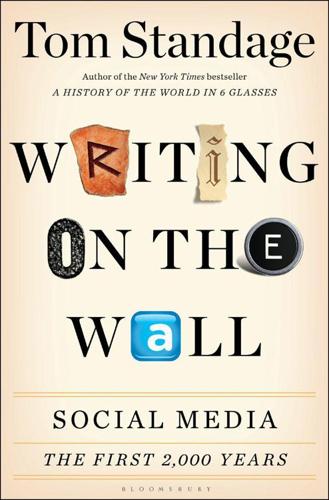
Writing on the Wall: Social Media - the First 2,000 Years
by
Tom Standage
Published 14 Oct 2013
This sort of approach seems to have several benefits: its similarity to Facebook means little or no training is required; sharing documents and communicating via discussion threads is more efficient than using e-mail; it is easier to discover employees’ hidden knowledge and talents; and it makes it easier for far-flung teams to collaborate. A study by McKinsey and Company, a management consulting firm, found that the use of social networking within companies could increase the productivity of skilled knowledge workers by 20 to 25 percent and that the adoption of the technology in four industries (consumer goods, financial services, professional services, and advanced manufacturing) could create economic benefits worth between $900 billion and $1.3 trillion a year. Such predictions should always be taken with a very large dose of salt, but McKinsey found that 70 percent of companies were already using social technologies to some extent, and more than 90 percent said they were already benefitting as a result.

The Entrepreneurial State: Debunking Public vs. Private Sector Myths
by
Mariana Mazzucato
Published 1 Jan 2011
For example, the UK specializes in financial services, construction and creative industries (such as music) – all with relatively low needs for basic R&D. And there are many industries, especially in the service sector, that do no R&D at all. Yet these industries often employ large numbers of knowledge workers to generate, absorb and analyse information. If, all other things equal, these industries represented a smaller proportion of GDP, it would be easier for an economy to reach the 3 per cent target for R&D/GDP (which characterized both the European Commission’s Lisbon Agenda and the current EC 2020 agenda).
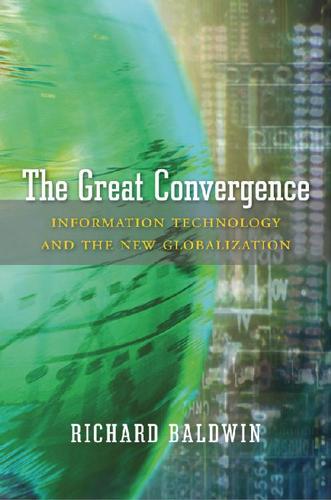
The Great Convergence: Information Technology and the New Globalization
by
Richard Baldwin
Published 14 Nov 2016
In the first, the low costs of moving goods sparked innovation in the North which stayed in the North due to the high cost of moving ideas. When it became cheap to move ideas internationally, the vast imbalances in know-how per worker led to offshoring that can be thought of as a form of arbitrage between the high knowledge-worker ratio in the North and the low ratio in the South. The Great Convergence is the fruit of this arbitrage. Today, Dyson is what Dartmouth economist Andrew Bernard calls a “factoryless goods producer.”2 None of its workers are involved in fabrication. They are engaged in the full range of services necessary to produce the goods, but they don’t actually make the goods.

The Upside of Irrationality: The Unexpected Benefits of Defying Logic at Work and at Home
by
Dan Ariely
Published 31 May 2010
In so doing, companies run the risk of taking away employees’ sense of the big picture, purpose, and sense of completion. Highly divisible labor might be efficient if people were automatons, but, given the importance of internal motivation and meaning to our drive and productivity, this approach might backfire. In the absence of meaning, knowledge workers may feel like Charlie Chaplin’s character in Modern Times, pulled through the gears and cogs of a machine in a factory, and as a consequence they have little desire to put their heart and soul into their labor. In Search of Meaning If we look at the labor market through this lens, it is easy to see the multiple ways in which companies, however unintentionally, choke the motivation out of their employees.

Rethinking the Economics of Land and Housing
by
Josh Ryan-Collins
,
Toby Lloyd
and
Laurie Macfarlane
Published 28 Feb 2017
In the economics jargon, land has a ‘high income-elasticity of demand’ – people will stretch their incomes to consume it. This is why the rise of communications technology has not meant ‘the end of distance’ as some predicted, but has in fact driven the economic pre-eminence of a few cities that are best connected to the global economy and offer the best amenities for the knowledge workers and entrepreneurs of the digital economy (Florida, 2004; Thrift, 1996). The scarcity of these locations has fed a long boom in the value of land in those cities (De Groot et al., 2015). The technological transformations of recent decades may not have abolished the significance of land in the economy, but they have accelerated a shift in the relative economic importance of different land uses, which was already underway.

The Age of Stagnation: Why Perpetual Growth Is Unattainable and the Global Economy Is in Peril
by
Satyajit Das
Published 9 Feb 2016
English economic geographer John Lovering called it the “transition fantasy of intellectuals and policy makers.”6 Many “demised” or “involuntarily separated” employees (the Kafkaesque terms for losing your job) are unlikely to find new employment. It's doubtful that textile or assembly-line workers will reinvent themselves as knowledge workers, technologists, bioengineers, financiers, or other professionals. Mobility of labor is restricted by skills and immigration opportunities, as well as family, social, and financial commitments, such as home ownership. Where transition is feasible, it requires adequately funded retraining facilities.

Hothouse Kids: The Dilemma of the Gifted Child
by
Alissa Quart
Published 16 Aug 2006
Sumpter’s ambition for his son seemed driven by the same professional and social class anxiety that afflicts parents I have met who are secular, and who are training their kids to compete at spelling, tennis, and debate. He, too, frets about his son’s career prospects in a job market teeming with knowledge workers. “Nowadays, far more is offered to make us more competent pastors,” Sumpter explains. “I took a psychology class, I took two extended education counseling classes. “I am forty-one now,” Sumpter continues, “but when I was young, so many people could do religion. They would meet under a tree.

AI Superpowers: China, Silicon Valley, and the New World Order
by
Kai-Fu Lee
Published 14 Sep 2018
While the two other GPTs ramped up productivity by deskilling the production of goods, ICT is instead often—though not always—skill biased in favor of high-skilled workers. Digital communications tools allow top performers to efficiently manage much larger organizations and reach much larger audiences. By breaking down the barriers to disseminating information, ICT empowers the world’s top knowledge workers and undercuts the economic role of many in the middle. Debates over how large a role ICT has played in job and wage stagnation in the United States are complex. Globalization, the decline of labor unions, and outsourcing are all factors here, providing economists with fodder for endless academic arguments.
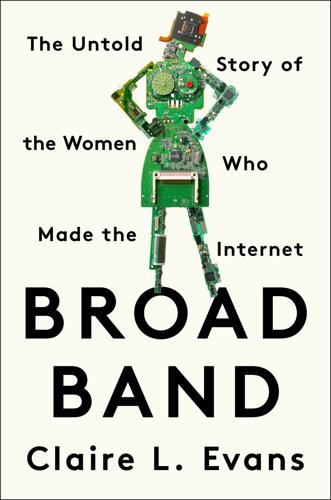
Broad Band: The Untold Story of the Women Who Made the Internet
by
Claire L. Evans
Published 6 Mar 2018
“difficult to articulate within the bounds”: Catherine C. Marshall, Frank M. Shipman III, James H. Coombs, “VIKI: Spatial Hypertext Supporting Emergent Structure,” ECHT ’94, Proceedings of the 1994 ACM European Conference on Hypermedia technology, 13–23. “spatial holding patterns”: Alison Kidd, “The Marks Are on the Knowledge Worker,” CHI ’94, Proceedings of the SIGCHI Conference on Human Factors in Computing Systems, 186–91. The conference floor, a hotel reception: “List of Demonstrators: Hypertext ’91,” World Wide Web Consortium, www.w3.org/Conferences/HT91/Denoers.html. ten-thousand-dollar jet-black NeXT cube: Interestingly, a female student on a one-year work placement at CERN, Nicola Pellow, had written a no-frills, text-based Web browser that could run on any computer—the Line Mode browser—but it was utilitarian, and none too flashy.

Climate Change
by
Joseph Romm
Published 3 Dec 2015
Harvard researchers were interested in the impacts of longer exposures to CO2 (a full work day) for adult office workers, and combined effects of CO2, ventilation and volatile organic compounds. Despite any study design differences, the Harvard researchers report that “effects were consistent [with LBNL] a) in both study populations, [showing] that knowledge workers and students are equally impacted by CO2 and b) at different exposure durations, indicating that even short elevated exposures can have effects on cognitive function.” The LBNL study, the follow up, the Danish study, the Harvard study, and the original Hungarian study are not definitive answers to the important question of the impact of higher carbon dioxide levels on human decision-making.
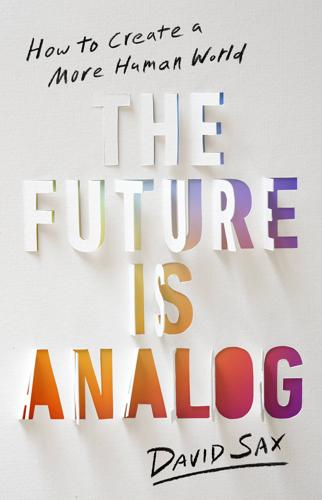
The Future Is Analog: How to Create a More Human World
by
David Sax
Published 15 Jan 2022
The professionals who were able to work easily from home were those who did “knowledge work,” a sweeping category of economic activity that kind of pulled in anyone who already did most of their work with their minds, on computers, rather than by manipulating physical objects (boxes, machines, food, hammers). While certain categories of knowledge workers benefitted from highly focused, solitary work (book writers and software programmers, for example), most knowledge work required constant interactions with a diverse group of colleagues. Marketing, sales, strategy, management, and any of the other innumerable economic activities that happen inside an office are more fluid, less individualized and direct, and inherently conversational.
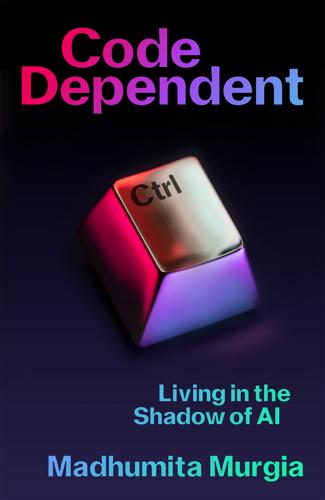
Code Dependent: Living in the Shadow of AI
by
Madhumita Murgia
Published 20 Mar 2024
It’s been a period of exponential change and extreme uncertainty, involving mind-bending questions such as: who owns the rights to all of humanity’s creative outputs and can they be recreated and re-sold by AI software? Will white-collar jobs continue to exist as they are? And will so-called knowledge workers, such as lawyers, journalists, consultants and creative professionals, still have work in a few years’ time, when their jobs could be completed by generative AI to a good enough standard? There’s the knock-on question of how a society can be sustained without work, and whether we will need to devise a new form of universal income for everybody while AI does all the jobs.
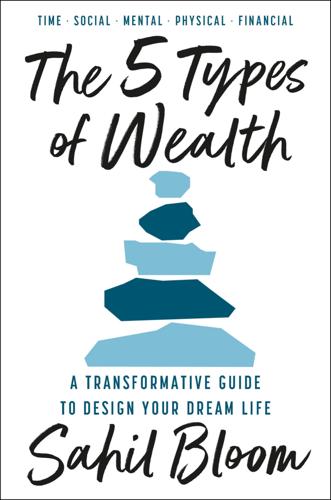
The 5 Types of Wealth: A Transformative Guide to Design Your Dream Life
by
Sahil Bloom
Published 4 Feb 2025
They exercise less, eat fattier food, and have a higher incidence of cardiovascular disease.” In a 2009 survey, 75 percent of British parents said they were too busy to read bedtime stories to their children.[7] According to a 2021 report from the email platform Superhuman, 82 percent of knowledge workers check their email within the first thirty minutes of waking up, and 39 percent check within the first five minutes.[8] Eighty-four percent of U.S. executives have canceled a vacation to work.[9] An astounding 80 percent of professionals say they simply don’t have time to do everything they want to do.[10] Where children of prior generations were encouraged to explore their curiosity, children of the current generation are told to fill their résumés with every possible after-school activity and hour of faux community service, all in the hope of running just a tiny bit faster than the others sprinting toward the same end.
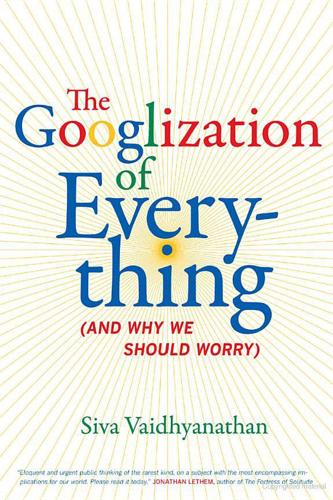
The Googlization of Everything:
by
Siva Vaidhyanathan
Published 1 Jan 2010
It has always been the sort of place where those devoted to solving some of the biggest challenges in logic, mathematics, and linguistics can find a supportive yet challenging environment.41 It’s the paradigm of the sort of practice that has emerged quickly over the past twenty years and that now dominates the scientific agenda in many fields: entrepreneurial science—the intersection of academic “pure” science and industrial technoscience.42 This technocratic mode of organization is anything but new. In The Engineers and the Price System, a book published in 1921 that fell into 68 G O OG LE’S WAYS AND MEA NS immediate obscurity, the iconoclastic economist Thorstein Veblen identified a new class of what we now call knowledge workers. In the late years of the American Industrial Revolution, Veblen saw that the increase in efficiency of the production and distribution of goods was creating tremendous wealth for the class that owned the means of production yet who were unable to do the mathematics necessary to understand the systems that enriched them.
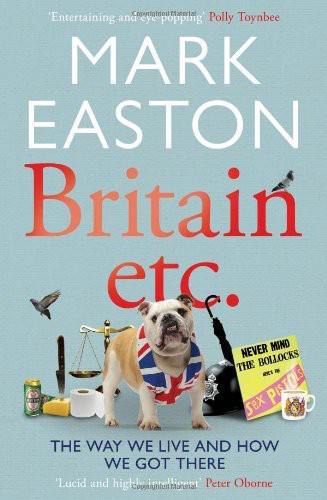
Britain Etc
by
Mark Easton
Published 1 Mar 2012
The most recent figures published by the OECD show that while 34 per cent of British students end up graduating, it is over 40 per cent in Australia, Norway, Japan, Netherlands, New Zealand, Finland, and Denmark, and over 50 per cent in Poland, Russia and Iceland. Since the mid-1990s, many European countries have seen their graduation rates overtake the UK. Just processing lots of people through often meaningless degrees is not enough, of course. If Britain is going to do well in the twenty-first century, it needs to produce the right kind of knowledge workers, to recognise the skills and abilities that will be most sought after by the global economy. ‘Knowledge’ is a misunderstood word, perhaps. Being able to learn and recall bits of information is important but there is no shortage of people who can do that. And in our Google age, knowing facts may become less critical.
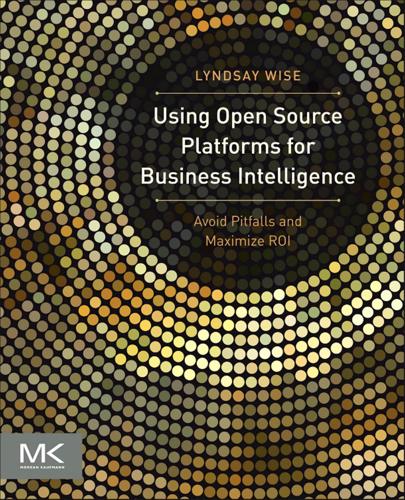
Using Open Source Platforms for Business Intelligence: Avoid Pitfalls and Maximize Roi
by
Lyndsay Wise
Published 16 Sep 2012
A good example is reporting, whereby many organizations needed to create their own way of integrating multiple data types to try to get the most out of information, hence the importance placed on Excel. As time went on, as price points started to come down, and as businesses started expanding in relation to the use of personal computers, it was assumed that most knowledge workers did not require access to the source code behind the applications being used. This enabled broader use across the organization and ensured that only developers or those with in-depth knowledge could play around with the solution. Couple this with the fact that many organizations wanted to create and control their own methods and processes and proprietary software was born.

Groundswell: Winning in a World Transformed by Social Technologies
by
Charlene Li
and
Josh Bernoff
Published 23 May 2011
Fourth, policies and training. As more employees begin to participate, it’s crucial to have rules and guidelines, not just to prevent mistakes of the “Oops, I mistakenly revealed the product plan” variety, but to spread best practices learned from earlier applications. In a January 2010, survey of knowledge workers using social media, Forrester discovered that 43 percent say there is no social media policy at their workplace. This is a prescription for trouble! Finally, maturing measurement. Companies in the coordinating stage tie the value of social applications to metrics like sales, conversion rate, cost avoidance, or awareness that are mainline indicators of business health.

Trick Mirror: Reflections on Self-Delusion
by
Jia Tolentino
Published 5 Aug 2019
The first, best chronicler of the chopped-salad economy’s accelerationist nightmare was Matt Buchanan, who wrote at The Awl in 2015: The chopped salad is engineered…to free one’s hand and eyes from the task of consuming nutrients, so that precious attention can be directed toward a small screen, where it is more urgently needed, so it can consume data: work email or Amazon’s nearly infinite catalog or Facebook’s actually infinite News Feed, where, as one shops for diapers or engages with the native advertising sprinkled between the not-hoaxes and baby photos, one is being productive by generating revenue for a large internet company, which is obviously good for the economy, or at least it is certainly better than spending lunch reading a book from the library, because who is making money from that? In a later Awl piece, Buchanan described the chopped salad as “the perfect mid-day nutritional replenishment for the mid-level modern knowledge worker” with “neither the time nor the inclination to eat a lunch…which would require more attention than the little needed for the automatic elliptical motion of the arm from bowl to face, jaw swinging open and then clamping shut over and over until the fork comes up empty and the vessel can be deposited in the garbage can under the desk.”

Lessons-Learned-in-Software-Testing-A-Context-Driven-Approach
by
Anson-QA
If you declare there shall be no heroes in your company, you won't get any.[1] [1] For more on what we mean by heroes, read Sims and Manz (1996) and Lebow (1990). 176 Lesson 211: Treat your staff as executives Peter Drucker is often credited as the founder of modern management theory. In one of his excellent books, The Effective Executive, he teaches that an executive is anyone who manages the value of her own time and affects the ability of the organization to perform. Most knowledge workers are executives. Drucker points out that executives are always given more to do than they can possibly achieve. Effective ones pick a subset of tasks that they will do well and skip many other tasks entirely. Ineffective executives try to do everything, don't succeed, and don't do particularly well at much of what they did attempt.

A New History of the Future in 100 Objects: A Fiction
by
Adrian Hon
Published 5 Oct 2020
Taylor explains: If you look at the sociological literature of early twenty-first-century rich countries, you’ll see a spike for “precarity,” which meant a state of life without security or predictability. A life that had no stable work or leisure routines because people had no option but to work whenever work was available—whether late at night or on weekends or, sometimes, not at all. But the breakdown in routine wasn’t only happening for the precariat; it was also happening for so-called knowledge workers. They had the opportunity and the pressure to work from anywhere at any time for anyone, which understandably ruined their notion of the “nine-to-five” as well. And church and religion had long ceased to hold sway over most people’s time. It wasn’t until the ’30s and ’40s that structure began reappearing in lives.
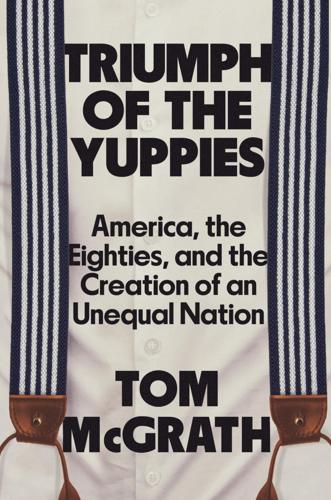
Triumph of the Yuppies: America, the Eighties, and the Creation of an Unequal Nation
by
Tom McGrath
Published 3 Jun 2024
If the industrial Midwest was seeing tremendous economic pain, it wasn’t the only place. Farm foreclosures had reached levels not seen since the 1930s, devastating the center of the country. And in large cities across America, in neighborhoods that weren’t being gentrified by college-educated knowledge workers, the pain was equally acute. Chicago, for instance, despite the presence of Yuppies in the Loop and other prospering neighborhoods, was in the midst of a twenty-year economic downturn. Factories that had once provided jobs to many Black workers had closed, the positions shipped to the suburbs, the South, or overseas.
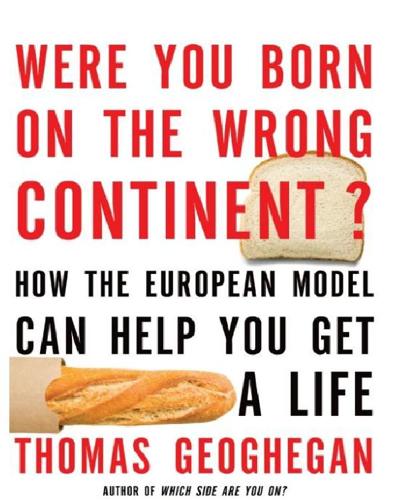
Were You Born on the Wrong Continent?
by
Thomas Geoghegan
Published 20 Sep 2011
And as the kids learn a skill, they work and get paid in an employer-union setting; they receive not just a skill but a political education, too. That is, as they receive a skill that they can later use to get a higher wage, they are “taught,” or at least “made aware” of, how not to use it, i.e., to collectively withhold it to get a better deal. Otherwise, they are merely generic “knowledge workers” who can use a computer but have no real specialized skills to withhold. That’s why, to our astonishment, the German unionization rate is higher in the manufacturing or “export” sector (80 percent) than it is in the public or civil-servant sector (40 percent). In the U.S. or the UK, it’s quite the reverse.
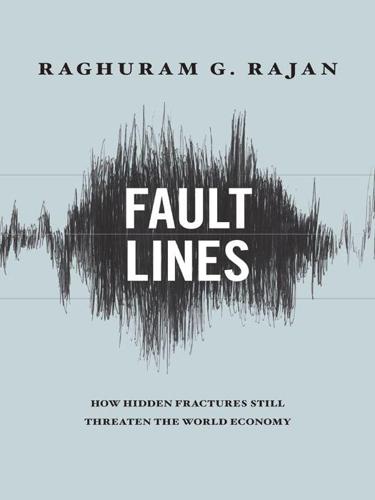
Fault Lines: How Hidden Fractures Still Threaten the World Economy
by
Raghuram Rajan
Published 24 May 2010
And once individuals complete their formal education, employers play an important role in training them further and encouraging them to continue building their human capital on the job. Such on-the-job development will become more important as the length of our working life increases: the typical knowledge worker may now work for nearly half a century after formal education ends. In what follows, I describe some of the important ways the quality of human capital can be improved in the United States.3 Disadvantages Begin Early The foundation for success in life is laid early. We cannot do anything about the genes a child is endowed with, but nutrition during pregnancy and in early childhood makes an enormous difference to a child’s intelligence and health later in life.
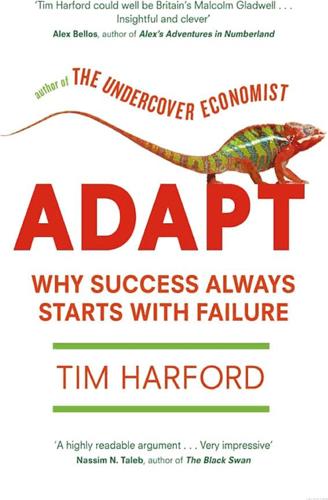
Adapt: Why Success Always Starts With Failure
by
Tim Harford
Published 1 Jun 2011
Over the past few decades, the number of people employed in research and development in the world’s leading economies has been rising dramatically, but productivity growth has been flat. Yes, there are more patents filed – but the number of patents produced per researcher, or per research dollar, has been falling. We may have booming universities and armies of knowledge workers, but when it comes to producing new ideas, we are running to stand still. This is particularly worrying because we are hoping that new technology will solve so many of our problems. Consider climate change: Bjorn Lomborg, famous as ‘the sceptical environmentalist’ who thinks we worry too much about climate change and not enough about clean water or malaria, argues that we should be spending fifty times more on research and development into clean energy and geoengineering.
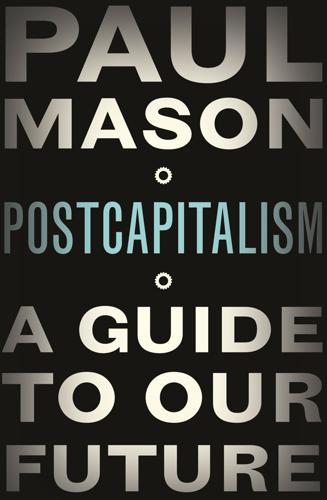
Postcapitalism: A Guide to Our Future
by
Paul Mason
Published 29 Jul 2015
Drucker guessed that the solution must be to connect, creatively, the different knowledge disciplines: ‘The capacity to connect may be inborn and part of that mystery we call genius. But to a large extent to connect and thus raise the yield of existing knowledge, whether for an individual, for a team or for an entire organisation, is learnable.’8 The challenge was to train knowledge workers to make the kind of connections that the brain of an Einstein would make spontaneously. Drucker’s solution was straight out of the playbook of management theory: a methodology, a project plan, better training. Humanity came up with a better solution: the network. This was not the result of any centralized plan or management group, but the spontaneous interaction of people using information pathways and forms of organization that did not exist until twenty-five years ago.
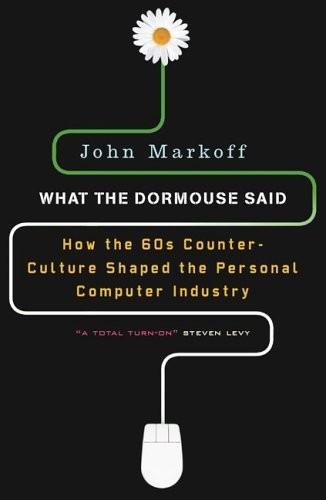
What the Dormouse Said: How the Sixties Counterculture Shaped the Personal Computer Industry
by
John Markoff
Published 1 Jan 2005
Often, the operator wouldn’t even know that the Utah computer was networked, and Andrews would have to tell him: “Go over to the far corner of the room where that box is sitting and flip switches three and five and press the button.”9 Now that the network finally existed, it should have been the crowning glory of Engelbart’s system for augmenting the human intellect. NLS should have become the original killer app. It wasn’t. The limited bandwidth of the new network, coupled with the intricacies of using NLS, conspired against Engelbart’s vision of spreading his system to knowledge workers around the world. For all its power, the NLS system’s lack of a welcoming audience beyond SRI was ultimately Engelbart’s greatest failure. For those who mastered its complexities, NLS offered editing, retrieval, and communications capabilities that in many ways have not been matched today. But the system was not easy to learn, it required training and a significant personal commitment, and its availability via the ARPAnet did not draw a flood of users.

The 4-Hour Workweek: Escape 9-5, Live Anywhere, and Join the New Rich
by
Timothy Ferriss
Published 1 Jan 2007
[Note from Tim: Learn more about the incredible world of medical tourism and geoarbitrage at http://en.wikipedia.org/wiki/Medical_tourism. Even large insurers like AETNA often cover overseas treatments and surgeries.] —ANONYMOUS 12. This habit alone can change your life. It seems small but has an enormous effect. 13. Jonathan B. Spira and Joshua B. Feintuch, The Cost of Not Paying Attention: How Interruptions Impact Knowledge Worker Productivity (Basex, 2005). Step III: A is for Automation SCOTTY: She’s all yours, sir. All systems automated and ready. A chimpanzee and two trainees could run her! CAPTAIN KIRK: Thank you, Mr. Scott. I’ll try not to take that personally. —STAR TREK Outsourcing Life OFF-LOADING THE REST AND A TASTE OF GEOARBITRAGE14 A man is rich in proportion to the number of things he can afford to let alone.
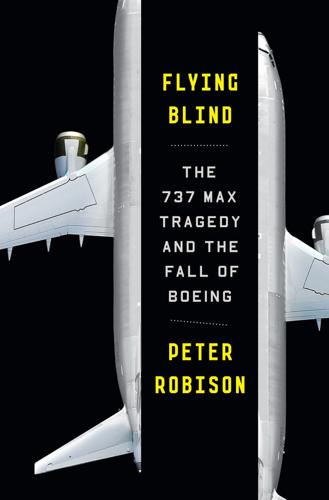
Flying Blind: The 737 MAX Tragedy and the Fall of Boeing
by
Peter Robison
Published 29 Nov 2021
The Teal Group analyst Richard Aboulafia wrote a 2015 article in Forbes arguing that building a commercial jet wasn’t the kind of manufacturing that responded to the usual corporate playbook, those strategies that Boeing leaders since Harry Stonecipher had executed, with investors reaping the greatest benefit. It depended instead on knowledgeable workers and continuous learning. In just a few years, his headline would read as prophecy: “Boeing Will Pay High Price for McNerney’s Mistake of Treating Aviation Like It Was Any Other Industry.” * * * — Mondays at 6:30 a.m., if he wasn’t traveling, Dennis Muilenburg joined a handful of colleagues for Bible study.

The Raging 2020s: Companies, Countries, People - and the Fight for Our Future
by
Alec Ross
Published 13 Sep 2021
This will have starved governments of the resources needed to rebuild infrastructure or strengthen safety nets. In order for Australia and the European countries to maintain the high level of social benefits they had at the beginning of the 2020s, they will have closed immigration to all but high-end knowledge workers. The US, by contrast, will have accelerated the individualization of its social contract and safety net, simultaneously surrendering to the logic of market forces and borrowing from China’s tech-enabled social scoring system. People will compete for health care, training, and unemployment coverage, with benefits apportioned to those who have put in the most hours of work and received the best reviews from employers on the app that manages their work.
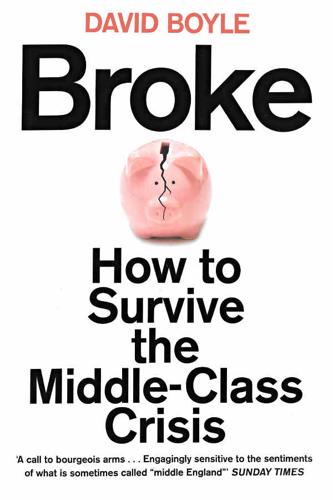
Broke: How to Survive the Middle Class Crisis
by
David Boyle
Published 15 Jan 2014
Fast-forward nearly three decades, and there was Sebastian Cresswell-Turner writing sadly in The Times about the discovery that he could no longer afford the life his parents had. ‘The poor aren’t the only ones who are getting poorer,’ he wrote, describing the effects of twenty-seven years of accelerating house prices. ‘Whole swathes of the professional classes are too’: An unmarried and badly paid knowledge worker, I live in a rented room in Hammersmith and have no hope of ever buying a home anywhere. Indeed, when I return to the agreeable parts of central London that I know so well from earlier periods of my life, I realise that I am looking at the attractive stucco houses in just the same way that a tramp looks through the restaurant window at a group of people enjoying a carefree meal.

Superminds: The Surprising Power of People and Computers Thinking Together
by
Thomas W. Malone
Published 14 May 2018
Organization theorists have studied questions about how this process works under the heading of “transactive memory.” See, for example, Daniel M. Wegner, “Transactive Memory: A Contemporary Analysis of the Group Mind,” in Theories of Group Behavior, ed. Brian Mullen and George R. Goethals (New York: Springer Verlag, 1987), 185–208; Kyle Lewis, “Knowledge and Performance in Knowledge-Worker Teams: A Longitudinal Study of Transactive Memory Systems,” Management Science 50 (2004): 1,519–33, doi:10.1287/mnsc.1040.0257; Kyle Lewis and Benjamin Herndon, “The Relevance of Transactive Memory Systems for Complex, Dynamic Group Tasks,” Organization Science 22, no. 5 (2011): 1,254–65, doi:10.1287/orsc.1110.0647; Linda Argote and Yuqing Ren, “Transactive Memory Systems: A Microfoundation of Dynamic Capabilities,” Journal of Management Studies 49, no. 8 (2012): 1,375–82, doi:10.1111/j.1467-6486.2012.01077.x; Andrea B.

Drunk: How We Sipped, Danced, and Stumbled Our Way to Civilization
by
Edward Slingerland
Published 31 May 2021
LSD was instrumental in the creative design process that gave rise to circuit chips, and Apple founder Steve Jobs claimed that his experiments with LSD ranked as some of his most important life experiences.23 The synergy between San Francisco drug-based hippy culture and Silicon Valley innovation has been replayed in other places around the globe, from Berlin to Beijing, where intoxicant-heavy underground or bohemian cultures have rubbed shoulders with new industries dependent on creative insight rather than manufacturing muscle.24 A modern twist in hallucinogen use—a trend pioneered, as one might expect, in Silicon Valley—is making psychedelics easier to integrate into everyday life through the practice of “microdosing.”25 Microdosing involves taking frequent but small amounts of purified LSD or psilocybin, on the order of one-tenth of the normal dose, to induce mild, but sustainable, highs. The journalist Emma Hogan has documented widespread microdosing among knowledge workers in the San Francisco Bay Area.26 One interviewee, “Nathan,” credits microdosed LSD with increasing his productivity, giving him a creative edge, and magnifying his impact at investor-pitch meetings. “I view it as my little treat. My secret vitamin,” he told her. “It’s like taking spinach and you’re Popeye.”

You've Been Played: How Corporations, Governments, and Schools Use Games to Control Us All
by
Adrian Hon
Published 14 Sep 2022
Michael Shulman, “Perfectionism Among Young People Significantly Increased Since 1980s, Study Finds,” American Psychological Association, January 2, 2018, www.apa.org/news/press/releases/2018/01/perfectionism-young-people. 41. “Sharpen Your Brain, Soothe Your Mind: App Store Story,” App Store Preview, Apple, accessed November 26, 2021, https://apps.apple.com/gb/story/id1490260198. 42. Josh Zumbrun, “The Rise of Knowledge Workers Is Accelerating Despite the Threat of Automation,” Economics Blog, Wall Street Journal, May 4, 2016, www.wsj.com/articles/BL-REB-35617. 43. “Dementia,” World Health Organization, updated September 2, 2021, www.who.int/news-room/fact-sheets/detail/dementia. 44. Felix Atkin, “Dr Kawashima’s Body and Brain Exercises for Kinect—Review,” Guardian, February 5, 2011, www.theguardian.com/technology/2011/feb/06/dr-kawashima-brain-training-xbox. 45.

The Measure of Progress: Counting What Really Matters
by
Diane Coyle
Published 15 Apr 2025
Intangible assets and value capture in global value chains: The smartphone industry (Vol. 41). WIPO. Dell’Acqua, F., Rajendran, S., McFowland, E., III, Krayer, L., Mollick, E., Candelon, F., Lifshitz- Assaf, H., Lakhani, K. R., and Kellogg, K. C. (2024). Navigating the jagged technological frontier: Field experimental evidence of the effects of AI on knowledge worker productivity and quality (HBS Working Paper 24-013). Harvard Business School. https://www.iab.cl/w p -content/uploads/2023/11/SSRN-id4573321.pdf DellaVigna, S., and La Ferrara, E. (2015). Economic and social impacts of the media. In Handbook of media economics (Vol. 1, pp. 723–768).
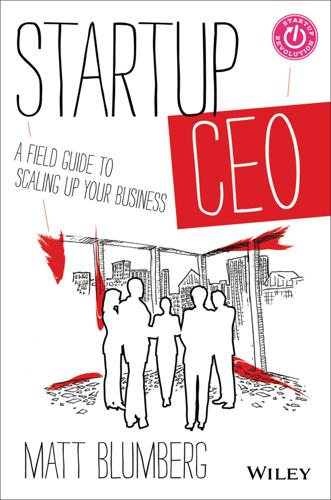
Startup CEO: A Field Guide to Scaling Up Your Business, + Website
by
Matt Blumberg
Published 13 Aug 2013
Even being well paid as a first-year analyst out of college, the hourly rate was dreadful. Thinking about that 121 gives me the shivers today—and it certainly puts those 40, 50, 60, even 70-hour work weeks in perspective. All of those still let you have a life. An average week of 40 hours probably doesn’t make sense for a high-growth company of relatively well-paid knowledge workers. At 121, you barely get to shower and sleep. While you may get a lot done working like a dog, you don’t get a lot more done hour for hour relative to productive people do in a 50-hour-per-week environment. Certainly not twice as much. People who say they thrive on that kind of pressure are simply lying—or, to be fair, not lying but rationalizing the amount of time they spend at work.

Seventeen Contradictions and the End of Capitalism
by
David Harvey
Published 3 Apr 2014
The idea that the new technologies will create jobs at a pace to compensate for these losses ‘is pure fantasy’. Furthermore, the idea that it will only be the low-paying routine jobs that will be eliminated and not high-paying skilled jobs (radiologists, doctors, university professors, airline pilots and the like) is misguided. ‘In the future, automation will fall heavily on knowledge workers and in particular on highly paid workers.’ Ford concludes: ‘Allowing these jobs to be eliminated by the millions, without any concrete plan to handle the issues that will result, is a clear recipe for disaster.’ 10 But what sort of disaster are we looking at? Larger and larger segments of the world’s population will be considered redundant and disposable as productive workers from the standpoint of capital and will have a hard time surviving both materially and psychologically.
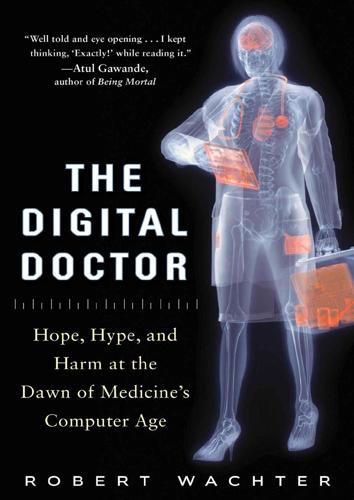
The Digital Doctor: Hope, Hype, and Harm at the Dawn of Medicine’s Computer Age
by
Robert Wachter
Published 7 Apr 2015
Studies of technology’s impact in other industries have clearly shown that those organizations with the management processes and culture to take advantage of the new tools are the ones that thrive. In 1988, management guru Peter Drucker, he of “culture-eats-strategy-for-lunch” fame, presciently described how the then-fledgling field of information technology would allow organizations to flatten hierarchies and elevate the roles of “knowledge-workers.” In the future, Drucker wrote, “the typical business will be knowledge-based, an organization composed largely of specialists who direct and discipline their own performance through organized feedback from colleagues, customers, and headquarters.” It was the availability of information—“data endowed with relevance and purpose”—that would catalyze this shift.
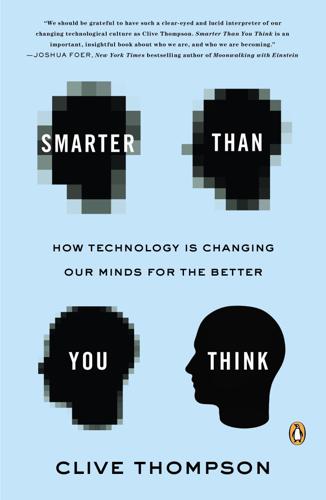
Smarter Than You Think: How Technology Is Changing Our Minds for the Better
by
Clive Thompson
Published 11 Sep 2013
As I watched it deftly intuit puns, juggle millennia’s worth of information, and tear through human opponents like some sort of bionic brain-shark, a technological dystopia unfolded in my grim imagination. This is it! We’re finally doomed. I could imagine Watson-like AI slowly colonizing our world. Knowledge workers would be tossed out of their jobs. Shows like Jeopardy!—indeed, all feats of human intellectual legerdemain—would become irrelevant. And as we all started walking around with copies of Watson in our wearable computers, we’d get mentally lazier, relying on it to transactively retrieve every piece of knowledge, internalizing nothing, our minds echoing like empty hallways.
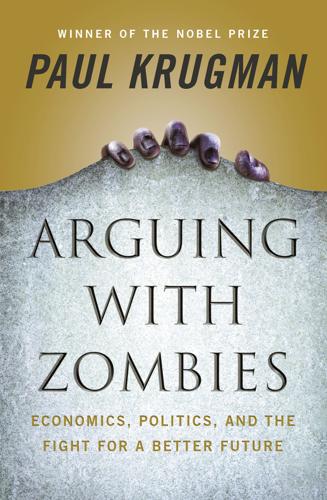
Arguing With Zombies: Economics, Politics, and the Fight for a Better Future
by
Paul Krugman
Published 28 Jan 2020
Responding to a question from Representative Barney Frank about income inequality, he declared that “the most important factor” in rising inequality “is the rising skill premium, the increased return to education.” That’s a fundamental misreading of what’s happening to American society. What we’re seeing isn’t the rise of a fairly broad class of knowledge workers. Instead, we’re seeing the rise of a narrow oligarchy: income and wealth are becoming increasingly concentrated in the hands of a small, privileged elite. I think of Mr. Bernanke’s position, which one hears all the time, as the 80–20 fallacy. It’s the notion that the winners in our increasingly unequal society are a fairly large group—that the 20 percent or so of American workers who have the skills to take advantage of new technology and globalization are pulling away from the 80 percent who don’t have these skills.
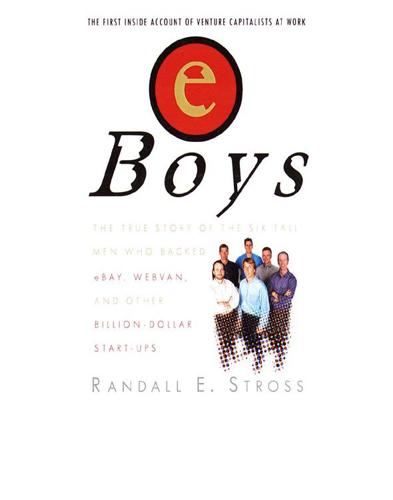
eBoys
by
Randall E. Stross
Published 30 Oct 2008
After all, it was the phrase used by others when the venture guys were the objects of vilification, so the taboo was a tacit acknowledgment of the less-than-high regard in which they were held in those quarters that were even aware of their existence. The compensation practices in the venture business originated in traditions whose original functional justification no one today can recall. Venture capitalists, theoretically, could draw compensation like other categories of knowledge workers, charging entrepreneurs on an hourly basis for access to their expertise. And the suppliers of the capital, their limited partners, theoretically could hire the venture guys as staff members to do the investing in-house, on a straightforward salary. Many corporations over the past four decades have dabbled in venture investing attempting to do just that, and all have foundered, not necessarily because a salary per se is inherently flawed but because it is comparatively unattractive.

Human Frontiers: The Future of Big Ideas in an Age of Small Thinking
by
Michael Bhaskar
Published 2 Nov 2021
It can be easily forgotten quite what a demographic impact China alone could have on ideas. In terms of population, China is bigger than the US and Canada, the entirety of Europe, the rest of East Asia (Japan, South Korea, Taiwan) and Australia combined. To get a more granular sense of the change, look at software developers, a central category of knowledge worker today. Their numbers are forecast to almost double over the next decade, from around 23 million to 45 million; East Asia will experience the quickest growth, followed by Latin America, while India will replace the US as the country with the most.53 Forty-plus years of human capital development will effectively be compressed into the next ten.

Philanthrocapitalism
by
Matthew Bishop
,
Michael Green
and
Bill Clinton
Published 29 Sep 2008
He also deserves to be remembered as the original guru of philanthrocapitalism. Drucker wrote thirty-nine books, among them The Concept of the Corporation, The Practice of Management, The Future of Industrial Man, and Post-Capitalist Society. An advocate of “scientific management” and “management by objective,” he made famous the term “knowledge worker,” reflecting his fascination with the growing importance in the modern “knowledge economy” of people who work with their minds, rather than their hands. In his later years, the Austrian-born Drucker became increasingly focused on the nonprofit sector, which he saw as having a crucial role in building community and gluing society together, yet needing better management.
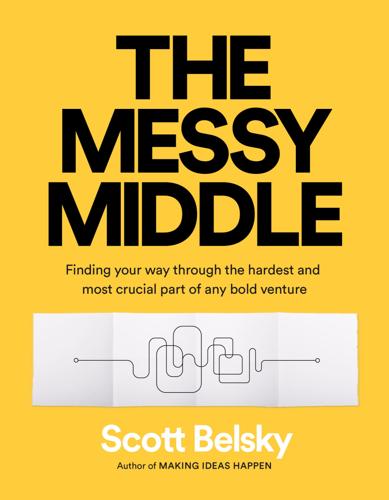
The Messy Middle: Finding Your Way Through the Hardest and Most Crucial Part of Any Bold Venture
by
Scott Belsky
Published 1 Oct 2018
You would build a network and gain respect based on your performance rather than where you received a degree or who you knew. This era of apprenticeship is now a relic of history. Somewhere along the line we decided to economize and scale education. Given the time-intensive and intimate nature of apprenticeships, and the rise of the knowledge worker, we sought to train more people at once with a streamlined curriculum. Even technical and craft-based educations have become less one-on-one and more institutionalized. As we scaled learning by bringing it into the classroom, we compromised the intense learning that happened in the field. We traded experiential learning for a more standardized but less hands-on approach to education.
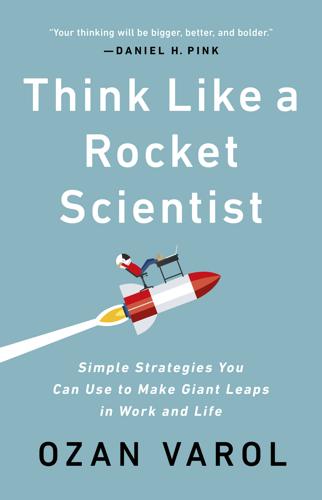
Think Like a Rocket Scientist: Simple Strategies You Can Use to Make Giant Leaps in Work and Life
by
Ozan Varol
Published 13 Apr 2020
Inscribed on the statue is a spectacularly banal quote from the fictitious Faber: Knowledge is good. The quote is an obvious parody of real-life college founders, who all felt compelled to have an inspiring motto attached to their name. Setting the mockery aside, Faber is undoubtedly correct, and at least in my case, he’s preaching to the choir: I make a living as a knowledge worker. But the same qualities that make knowledge a virtue can also turn it into a vice. Knowledge shapes. Knowledge informs. It creates frameworks, labels, categories, and lenses through which we view the world. It acts as a haze, an Instagram filter, and a poetic structure under which we live our lives.

Pegasus: How a Spy in Your Pocket Threatens the End of Privacy, Dignity, and Democracy
by
Laurent Richard
and
Sandrine Rigaud
Published 17 Jan 2023
His pitches to international audiences of government defense experts, cybersecurity specialists, and salivating private investors also gave Netanyahu plenty of chances to take credit as the lead architect of his country’s biggest growth sector. The Netanyahu government had invested “vast sums of money in our military intelligence, which goes to the army, the Mossad, Shin Bet, to other arms as well,” the then prime minister told one cyber gathering in Tel Aviv. “So we create an enormous number of knowledge workers.… People who can deal with the internet. Can deal with the ramifications of this revolution. Both as workers and as entrepreneurs. And this is what we did in Israel. We took the sunk costs and created a business environment.” The Netanyahu government was executing a list of dos and don’ts to create this environment, consistent with its long drive to convert Israel’s controlled economy (“not quite socialist but semi-socialist”) into an oasis of free market capitalism (“Because markets know better than politicians,” Netanyahu would say, “even prime ministers.”).
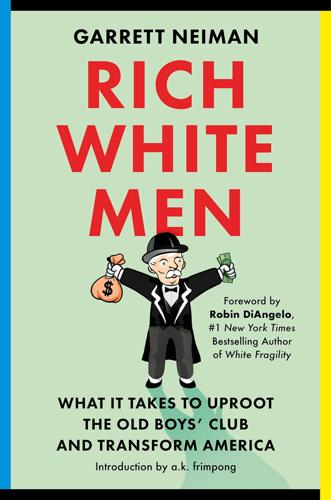
Rich White Men: What It Takes to Uproot the Old Boys' Club and Transform America
by
Garrett Neiman
Published 19 Jun 2023
And if America made direct transfers to individuals, many of the convoluted poverty reduction programs—and the massive bureaucracies that administer them—could be phased out. And investing in our citizens would fuel innovation and shared prosperity: if such investments yielded millions of additional knowledge workers and even a few more innovations—like three-light traffic signals, refrigerated trucks, automatic elevator doors, electret microphones, carbon light bulb filaments, IBM PC monitors, and Gigahertz chips, all invented by Black Americans—how much would this country gain? Most of the rich white men I know act as if poverty is a necessary, insurmountable evil.
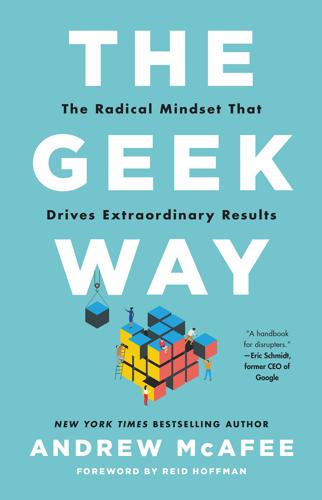
The Geek Way: The Radical Mindset That Drives Extraordinary Results
by
Andrew McAfee
Published 14 Nov 2023
Bringing more people along with you in the decision is not going to change the outcome.” And I’ve got to tell you, calling the developer and saying, “Okay, push the button,” was probably one of the hardest things I’ve done in my career personally, because it was just so contrary to how I had grown up. Like most knowledge workers, Williams had grown up professionally in environments full of established ways of doing things. A change as important as a modification to the website in order to comply with federal regulation would go before a management review committee. There would be a process for proposing changes, submitting required documentation and justifications, and so on.

The Invisible Web: Uncovering Information Sources Search Engines Can't See
by
Gary Price
,
Chris Sherman
and
Danny Sullivan
Published 2 Jan 2003
Unlike most of the other current awareness services described here, Calishain often writes in-depth reviews and analyses of new resources, pointing out both useful features and flaws in design or implementation. Free Pint http://www.freepint.co.uk/ Free Pint is an e-mail newsletter dedicated to helping you find reliable Web sites and search the Web more effectively. It’s written by and for knowledge workers who can’t afford to spend valuable time sifting through junk on the Web in search of a few valuable nuggets of e-gold. Each issue of Free Pint has several regular sections. William Hann, Managing Editor, leads off with an overview of the issue and general news announcements, followed by a “Tips and Techniques” section, where professionals share their best searching tips and describe their favorite Web sites.
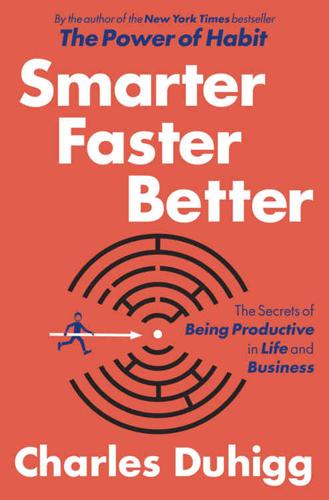
Smarter Faster Better: The Secrets of Being Productive in Life and Business
by
Charles Duhigg
Published 8 Mar 2016
Eppler and Jeanne Mengis, “The Concept of Information Overload: A Review of Literature from Organization Science, Accounting, Marketing, MIS, and Related Disciplines,” The Information Society 20, no. 5 (2004): 325–44; Pamela Karr-Wisniewski and Ying Lu, “When More Is Too Much: Operationalizing Technology Overload and Exploring Its Impact on Knowledge Worker Productivity,” Computers in Human Behavior 26, no. 5 (2010): 1061–72; Joseph M. Kayany, “Information Overload and Information Myths,” Itera, n.d., http://www.itera.org/wordpress/wp-content/uploads/2012/09/ITERA12_Paper15.pdf; Marta Sinclair and Neal M. Ashkanasy, “Intuition Myth or a Decision-Making Tool?”
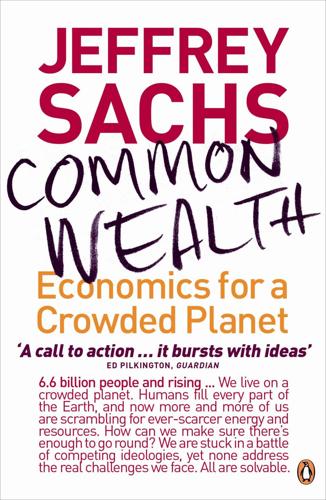
Common Wealth: Economics for a Crowded Planet
by
Jeffrey Sachs
Published 1 Jan 2008
It is dominated by ideology rather than fact. I hope to remedy that deficiency here. Interestingly, the debate has flared in the wake of globalization. As globalization has proceeded, the working class in the high-income world has suffered a relative decline in income compared with more highly educated knowledge workers, and two sharply contrasting lines of thought have emerged. Free-market ideologues warn that competition in the international system has become even more intense. The perceived threat to a country’s prosperity from overseas competitors means that all attention must be refocused on economic competitiveness and growth.
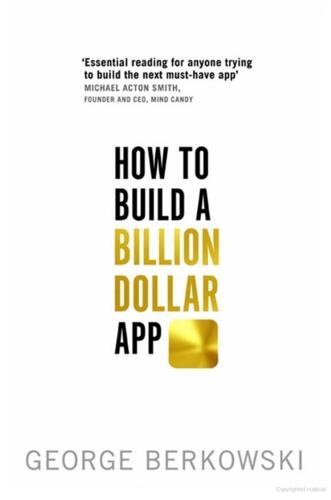
How to Build a Billion Dollar App: Discover the Secrets of the Most Successful Entrepreneurs of Our Time
by
George Berkowski
Published 3 Sep 2014
What is interesting, on the other hand, is improving something tenfold.10 Achieving that kind of result is true cerebral gymnastics. Delivering 1,000 per cent improvement requires rethinking problems from first principles; it requires that people go out and explore the frontiers of research and development; it means a lot of challenges, and fun in the process. When you think about it, this is nirvana for knowledge workers. Engineers, developers and product managers are all problem solvers. By telling them that their company is a playground – a really well-kitted-out playground designed for them to go and solve gargantuan, meaningful problems – well, that is the ultimate retention tool. And my point from earlier is that Google’s revenue – and profit – per employee allows it to pursue this strategy.

The Black Box Society: The Secret Algorithms That Control Money and Information
by
Frank Pasquale
Published 17 Nov 2014
(Yes, Congress didn’t appropriate enough money for the train, and parking in Manhattan could cost even more than the Amtrak.)142 The complexity of financial fraud ensures that agencies like the SEC will continue to play “catch up.” Beleaguered by the complex schemes cooked up by black box finance’s well-paid accountants, lawyers, traders, and managers, fi nance regulators triage matters by entering into settlements. Many knowledge workers feel “behind the curve” when their computers are three years out of date, but the chair of the SEC admitted in 2010 that her agency’s “technology for collecting data and surveilling our markets is often as much as two 178 THE BLACK BOX SOCIETY decades behind the technology currently used by those we regulate.”143 U.S. financial regulators’ resources are dwarfed by the assets of the firms (and sometimes even the individuals) they police.144 Overmatched and overwhelmed, finance regulators are ill-disposed to seek costly trials.

Work Won't Love You Back: How Devotion to Our Jobs Keeps Us Exploited, Exhausted, and Alone
by
Sarah Jaffe
Published 26 Jan 2021
Further, she wrote, “Its only ‘capital’ is knowledge and skill, or at least the credentials imputing skill and knowledge. And unlike real capital, these cannot be hoarded against hard times.” A PhD might have been a symbol of so-called human capital, but its value could not be guaranteed. 20 Just as the vaunted “knowledge economy” was making headlines, in other words, the labor of knowledge workers was being devalued and deskilled. Doctors became more likely to work for large institutions, lawyers in massive firms or to work in-house at corporations. We started to hear more about “stress” and mental health on the job than physical injury. Until the aftermath of World War II, the term “stress” was rarely used to describe something that happened to humans; researchers, though, began to apply the term to the wear and tear on the human body caused by, among other things, psychological strain on the job.
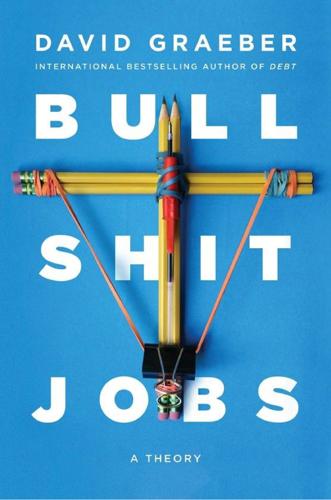
Bullshit Jobs: A Theory
by
David Graeber
Published 14 May 2018
I think this is important to emphasize because despite the lack of statistics, there has been a great deal of discussion since the 1990s about the rise of information-oriented jobs and their larger effect on society. Some, like former US Labor Secretary Robert Reich, spoke of the rise of a new tech-savvy middle class of “symbolic analysts” who threatened to gain all the benefits of growth and leave the old-fashioned laboring classes languishing in poverty; others spoke of “knowledge workers” and “information society”; some Marxists even became convinced that new forms of what they called “immaterial labor”—founded in marketing, entertainment, and the digital economy but spilling outside as well into our increasingly brand-saturated, iPhone-happy daily lives—had become the new locus of value creation—leading to prophecies of the eventual rebellion of the digital proletariat.2 Almost everyone assumed that the rise of such jobs had something to do with the rise of finance capital—even if there was no consensus as to how.
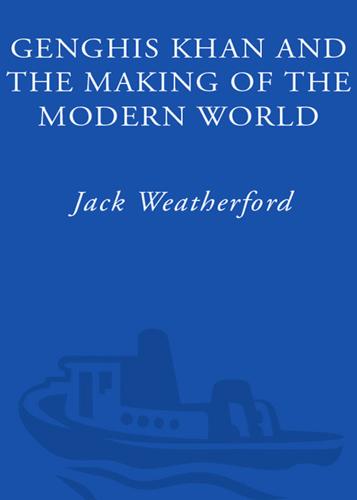
Genghis Khan and the Making of the Modern World
by
Jack Weatherford
Published 21 Mar 2005
Skilled at moving large numbers of people and utilizing new technology for purposes of war, the Mongols continued the same practices during the Mongol Peace and applied itinerant principles of the nomadic society to very conservative areas of life and culture. The Mongol armies rounded up translators, scribes, doctors, astronomers, and mathematicians to be parceled out among the families in the same shares that they parceled out musicians, cooks, goldsmiths, acrobats, and painters. The authorities divided these knowledge workers, together with all the other craftsmen, the animals, and other goods for transportation via a long caravan trek or sea journey to the various parts of the family. Traditional empires accumulated wealth in a single city. All routes led to the capital city, and the best of everything ended up there.

Women Leaders at Work: Untold Tales of Women Achieving Their Ambitions
by
Elizabeth Ghaffari
Published 5 Dec 2011
Sometimes that takes courage because it requires me to be unconventional—to think unconventionally. In addition, I need to make investment decisions for the future in order to back that vision and execute against it. That also takes courage. Finally, I think a good leader, at least one in consulting who hires knowledge workers, operates a sort of upside-down pyramid. I need to be there to support others—give them the tools, processes, and environment they need to realize their potential on behalf of our clients. It also requires me to have compassion so that I can be attuned to their needs. Ghaffari: Has your family been behind you?

Blockchain Revolution: How the Technology Behind Bitcoin Is Changing Money, Business, and the World
by
Don Tapscott
and
Alex Tapscott
Published 9 May 2016
Our view is that the starting point for corporate boundary decisions is to understand your industry, competitors, and opportunities for profitable growth—and use this knowledge as the basis for developing a business strategy. From there, the blockchain opens up new opportunities for networking that every manager and knowledge worker needs to consider at all times. Boundary choices are not simply for senior executives, they are for anyone who cares about marshaling the best capability for innovation and high performance. We should add—and this is no small point—that you can’t outsource your corporate culture. Enter the Matrix Taking into account how blockchain technology can enable access to unique capabilities outside corporate boundaries, firms can now define those business activities or functions that are fundamental to competitiveness—that are both mission critical and also unique enough to ensure differentiated value.
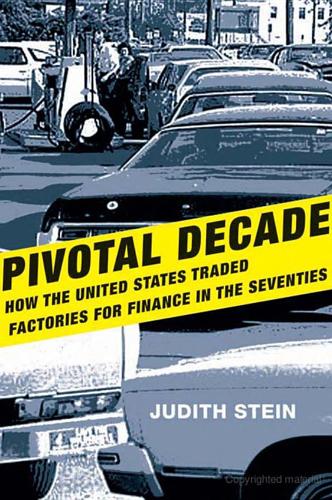
Pivotal Decade: How the United States Traded Factories for Finance in the Seventies
by
Judith Stein
Published 30 Apr 2010
From 1950 to 1971, the percentage of workers in goods related industries fell from 49.8 to 38 percent of the workforce; workers in service, including government, jobs increased from 50.2 percent to 62 percent.60 Liberals believed that this meant new possibilities for “non-productive” or social tasks to help the needy and improve the quality of life. These ideas were deeply rooted in the university, which sanctioned reflection, criticism, and social responsibility. Many of the students and knowledge workers lived in the growing suburbs and college towns outside of cities. The modern student movement began in 1960 at one of those huge public institutions, the University of Michigan, in suburban Ann Arbor, thirty-five miles west of Detroit. A small group of students created the Students for a Democratic Society (SDS).

Whole Earth: The Many Lives of Stewart Brand
by
John Markoff
Published 22 Mar 2022
Both Albrecht and Engelbart were feverish folk dancers (Albrecht hosted combo Greek dancing/computer classes at his home in San Francisco), and they soon became friends. This drew the computer researcher into the Portola Institute community as an informal adviser, and it opened a window into his computing research for both the Brands and the Nixons. Engelbart had a grand vision of a “bootstrapping community”—small teams of knowledge workers supplemented by powerful computers—which he believed would accelerate human progress. Called the oNLine System, or NLS, while it ran on an early mainframe computer that connected workers at terminals using a suite of custom programs for collaboration and productivity, it was the forerunner of the Apple Macintosh, Microsoft Office, and the World Wide Web, several decades ahead of its time.

The Future Is Asian
by
Parag Khanna
Published 5 Feb 2019
When I travel to countries such as Oman, Georgia, the UAE, Kazakhstan, or dozens of other aspiring Asian nations, I am always presented with a sleek binder whose cover features some variation on “Vision” or “Strategy” for 2020, 2025, 2030, or beyond. The pages are full of bold language and the imagery of glass towers, driverless cars, vertical farms, and knowledge workers. In other words, they are all copied and pasted from Singapore’s master plan. After decades of importing intellectual capital, Singapore’s model has become its own best export, raking in billions of dollars annually from contracts to build dozens of Singapore-style industrial parks in China, Vietnam, India, and now the Arab countries and Africa, followed by corporate services to manage facilities and build local skills.
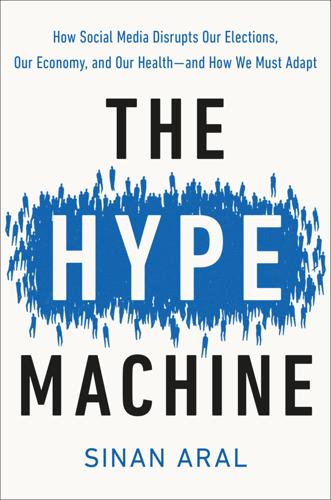
The Hype Machine: How Social Media Disrupts Our Elections, Our Economy, and Our Health--And How We Must Adapt
by
Sinan Aral
Published 14 Sep 2020
Online social networks (e.g., Facebook), microblogging (e.g., Twitter), instant messaging (e.g., WhatsApp), and collaborative knowledge production and news aggregation technologies (e.g., Wikipedia and Reddit) have fundamentally altered the way information is produced, shared, consumed, utilized, and valued. Such changes have profound implications for many of our social, political, and economic organizations, from the productivity of knowledge workers to consumer demand patterns, and from election campaigns to public health programs and mass protests. New technologies and new modes of communication not only change the production and dissemination of information but also simultaneously record information about human interaction with incredible precision and detail.
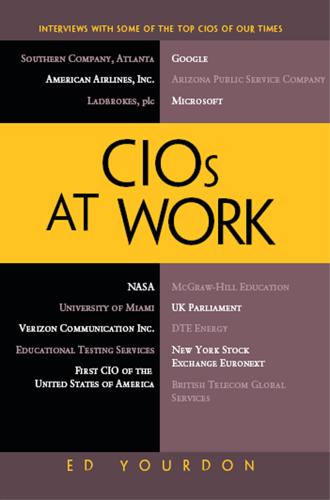
CIOs at Work
by
Ed Yourdon
Published 19 Jul 2011
Prior to joining Google, he spent more than 13 years in Morgan Stanley’s technology department, where he rose to the level of Managing Director. During his time there, he led teams responsible for software development technology, web and electronic commerce technologies and operations, and technologies for knowledge workers. Ben received his degree in Computer Science from Columbia University. Ed Yourdon: Let’s start by asking about any role models or any early heroes or mentors that may have influenced you to get where you are now. Benjamin Fried: I think there have been a lot. I’ve only had maybe four major employers in my career, three or four employers, but a lot of role models.

Class Acts: Service and Inequality in Luxury Hotels
by
Rachel Sherman
Published 18 Dec 2006
See also back of house work; compensation; demographics; front of house work; hotel division of labor; interactive service work; invisible work; noninteractive service work; relationship; semivisible workers; visible labor judgment by workers, 17, 22; of guests, 17, 22, 155, 162–76, 178, 180, 182–83, 185, 194, 198–99, 247; guests’ fear of, 48, 244, 245, 246, 247. See also comparison by workers; criticism; superiority of workers; transgressions, guest Kaplan, Bruce Eric, 242 Kasikci, Ali, 32 knowledge, workers’, 157; in comparison with guests, 163, 165, 178–79, 181; in comparison with managers and coworkers, 149, 155; concierge associations and, 121; condescension based on, 166, 178–79; of coworkers’ competence, 141; guests failing to respect, 195; guests recognizing, 187, 194; insecure guests drawing on, 164–65, 243, 256; managers failing to respect, 142; and professionalism, 216.

The Rational Optimist: How Prosperity Evolves
by
Matt Ridley
Published 17 May 2010
p. 276 ‘It was Paul Romer’s great achievement in the 1990s to rescue the discipline of economics from the century-long cul-de-sac into which it had driven by failing to incorporate innovation.’ Warsh, D. 2006. Knowledge and the Wealth of Nations. W.W. Norton. p. 276 ‘As Paul Romer puts it’. Romer, P. 1995. Beyond the Knowledge Worker. Wordlink. Chapter 9 p. 279 ‘I have observed that not the man who hopes when others despair’. Speech by John Stuart Mill to the London Debating Society on ‘perfectibility’, 2 May 1828. p. 279 US air pollutant emissions graph. US Environmental Protection Agency. p. 280 ‘the economist Julian Simon tried it in the 1990s’.
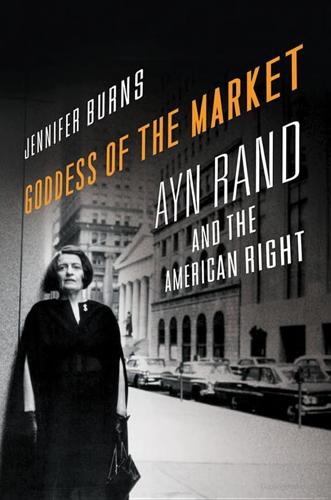
Goddess of the Market: Ayn Rand and the American Right
by
Jennifer Burns
Published 18 Oct 2009
In a time when leading intellectuals assumed that large corporations would continue to dominate economic life, shaping their employees into soulless organization men, Rand clung to the vision of the independent entrepreneur. Though it seemed anachronistic at first, her vision has resonated with the knowledge workers of the new economy, who see themselves as strategic operators in a constantly changing economic landscape. Rand has earned the unending devotion of capitalists large and small by treating business as an honorable calling that can engage the deepest capacities of the human spirit. At the same time, Rand advanced a deeply negative portrait of government action.

Behemoth: A History of the Factory and the Making of the Modern World
by
Joshua B. Freeman
Published 27 Feb 2018
While in 1972 there were 13.5 million manufacturing production workers in the United States (more than two million of them working in facilities with 2,500 or more workers), one-time socialist Daniel Bell, a leading sociologist, announced in a book the next year, The Coming of Post-Industrial Society. For Bell and many others, “knowledge workers” or “symbolic analysts” had elbowed aside blue-collar workers to constitute the key economic group. In the late 1960s and early 1970s, there was a brief flurry of political and cultural interest in the discontent of industrial workers—the so-called “blue-collar blues”—but an economic downturn quickly put an end to that.

Model Thinker: What You Need to Know to Make Data Work for You
by
Scott E. Page
Published 27 Nov 2018
Twenty-five years ago, a book of models would have been intended for professors and graduate students studying business, policy, and the social sciences along with financial analysts, actuaries, and members of the intelligence community. These were the people who applied models and, not coincidentally, they were also the people most engaged with large data sets. Today, a book of models has a much larger audience: the vast universe of knowledge workers, who, owing to the rise of big data, now find working with models a part of their daily lives. Organizing and interpreting data with models has become a core competency for business strategists, urban planners, economists, medical professionals, engineers, actuaries, and environmental scientists among others.

Evil Geniuses: The Unmaking of America: A Recent History
by
Kurt Andersen
Published 14 Sep 2020
As western leaders learnt in the Great Depression, and after the second world war, to demand collective sacrifice you must offer a social contract that benefits everyone. Today’s crisis is laying bare how far many rich societies fall short of this ideal….We are not really all in this together….Better paid knowledge workers often face only the nuisance of working from home….Radical reforms—reversing the prevailing policy direction of the last four decades—will need to be put on the table….Redistribution will again be on the agenda….Policies until recently considered eccentric, such as basic income and wealth taxes, will have to be in the mix.

Superintelligence: Paths, Dangers, Strategies
by
Nick Bostrom
Published 3 Jun 2014
However, setting aside the question of how modernity’s shortcomings stack up against the not-so-inconsiderable failings of earlier epochs, nothing in our definition of collective superintelligence implies that a society with greater collective intelligence is necessarily better off. The definition does not even imply that the more collectively intelligent society is wiser. We can think of wisdom as the ability to get the important things approximately right. It is then possible to imagine an organization composed of a very large cadre of very efficiently coordinated knowledge workers, who collectively can solve intellectual problems across many very general domains. This organization, let us suppose, can operate most kinds of businesses, invent most kinds of technologies, and optimize most kinds of processes. Even so, it might get a few key big-picture issues entirely wrong—for instance, it may fail to take proper precautions against existential risks—and as a result pursue a short explosive growth spurt that ends ingloriously in total collapse.

Class Warfare: Inside the Fight to Fix America's Schools
by
Steven Brill
Published 15 Aug 2011
In those days, they assiduously tracked students, steering some into higher education that would give them white-collar jobs but steering more along tracks that would send them out into blue-collar jobs requiring limited academic skills. The problem was that in the post-Sputnik era, as the report A Nation At Risk called it, increasingly more jobs required more learning. That trend would accelerate in the last half of the 1990s and into the twenty-first century, when our schools would be challenged to produce “knowledge workers” to compete globally. So the finding that America’s children were falling behind in 1983 was destined to become even more of a crisis in the years ahead. The schools would need to do more at the same time that all of these forces were combining to have them produce less. • • • President Reagan was so disappointed with the commission’s alarming report—urging increased federal aid to education and federally encouraged curricula and teaching standards, rather than school prayer, vouchers, and a general retreat from federal involvement in K–12 education—that he almost didn’t allow the commissioners to present their paper to him at a planned Rose Garden press conference.

Valley of Genius: The Uncensored History of Silicon Valley (As Told by the Hackers, Founders, and Freaks Who Made It Boom)
by
Adam Fisher
Published 9 Jul 2018
Computers, he reasoned, should have keyboards and screens instead of punch cards and printouts. They should augment rather than replace the human intellect. And so he pulled a team together and built a working prototype: the oN-Line System. Unlike earlier efforts, the NLS wasn’t a military supercalculator. It was a general-purpose tool designed to help knowledge workers perform better and faster, and that was a controversial idea. Letting nonengineers interact directly with a computer was seen as harebrained, utopian—subversive, even. And then people saw the demo. Doug Engelbart: In 1950 I got engaged. Getting married and living happily ever after just kind of shook me.
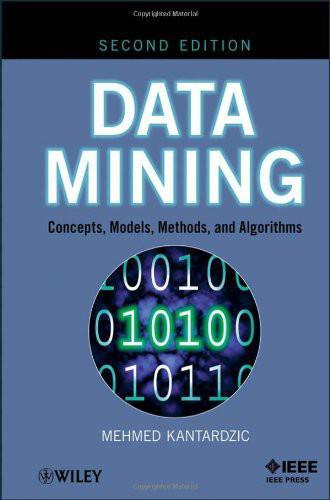
Data Mining: Concepts, Models, Methods, and Algorithms
by
Mehmed Kantardzić
Published 2 Jan 2003
The result is a report explosion in which literally hundreds of predefined reports are generated and pushed throughout the organization. Every report produces another. Presentations get more complex. Data are exploding. The best opportunities and the most important decisions are often the hardest to see. This is in direct conflict with the needs of frontline decision makers and knowledge workers who are demanding to be included in the analytical process. Presenting information visually, in an environment that encourages the exploration of linked events, leads to deeper insights and more results that can be acted upon. Over the past decade, research on information visualization has focused on developing specific visualization techniques.

Future Crimes: Everything Is Connected, Everyone Is Vulnerable and What We Can Do About It
by
Marc Goodman
Published 24 Feb 2015
But more things online means more things to hack, giving bad actors access to increasingly intimate parts of our lives from our bedrooms to our own bodies as biology becomes integrated with information technology. And at every step of the way, criminals, terrorists, and rogue governments are ready to exploit our common technical insecurity through the sweeping flaws that persist in today’s software and hardware systems. These illicit knowledge workers of the twenty-first century are deeply innovative, adaptive, and ever learning and employ the latest business practices, from crowdsourcing to affiliate marketing, to subvert the technologies around us. Advances in computing and artificial intelligence mean that crime has now become scripted, run algorithmically, to much greater effect and with far fewer human beings required.

The Data Warehouse Toolkit: The Definitive Guide to Dimensional Modeling
by
Ralph Kimball
and
Margy Ross
Published 30 Jun 2013
This is why you are paid so well…. Data Quality Three powerful forces have converged to put data quality concerns near the top of the list for executives. First, the long-term cultural trend that says, “If only I could see the data, then I could manage my business better” continues to grow; today's knowledge workers believe instinctively that data is a crucial requirement for them to function in their jobs. Second, most organizations understand their data sources are profoundly distributed, typically around the world, and that effectively integrating a myriad of disparate data sources is required. And third, the sharply increased demands for compliance mean careless handling of data will not be overlooked or excused.

The Great Leveler: Violence and the History of Inequality From the Stone Age to the Twenty-First Century
by
Walter Scheidel
Published 17 Jan 2017
In Amsterdam between 1580 and 1789, the wages of senior administrative officials, clerks, schoolmasters, and barber-surgeons rose more quickly—by a factor of five to ten—than did those of carpenters, which merely doubled. For some professions, such as surgeons, this may reflect the attachment of greater importance to their skills, even though skill premiums for workers did not generally increase during this period. However, generous raises for government officials and cognate knowledge workers such as schoolmasters may well have been driven in the first instance by a desire to keep up with those in the same bourgeois stratum who benefited from growing capital income. Thus commercial capital income seems to have had a striking knock-on effect on wages for certain socially privileged groups.
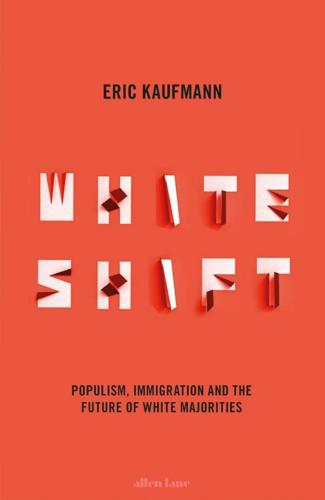
Whiteshift: Populism, Immigration and the Future of White Majorities
by
Eric Kaufmann
Published 24 Oct 2018
Left-modernist eschatology replaced the Marxist workers’ paradise with the multiculturalist dream of equality-in-diversity. The New Left electrified the rising Baby Boom generation of intellectuals. Its tenets were less threatening to capitalism and thus, in softened form, more readily absorbed by large corporations, government and a rising cohort of knowledge workers. This took time. The quickest strides were made in progressive circles, especially in universities. Baby Boomer scholar-activists began to occupy positions in the humanities and social sciences, instilling a more pronounced left-modernist ethos in these disciplines. For instance, leftist activists succeeded in using a ballot to install Alfred McClung Lee as president of the American Sociological Association (ASA), the discipline’s professional organization, in 1976.

The Code: Silicon Valley and the Remaking of America
by
Margaret O'Mara
Published 8 Jul 2019
Steve Jobs had engineered his specially built Mac factory in Fremont to produce a million units a year—and he predicted that it would soon run at full capacity. It was, he proclaimed again and again, “insanely great!”9 The Mac was conquering a new market too: higher education. “These students are the knowledge workers of tomorrow,” Jobs told InfoWorld. Students were smack in the middle of Arnold Mitchell’s “achievers” psychographic; placing Macs on their desks at age nineteen would always associate the brand with their fondly remembered college days. (It also broadened the gender profile; college students were the only target market for the Mac that included women as well as men.)
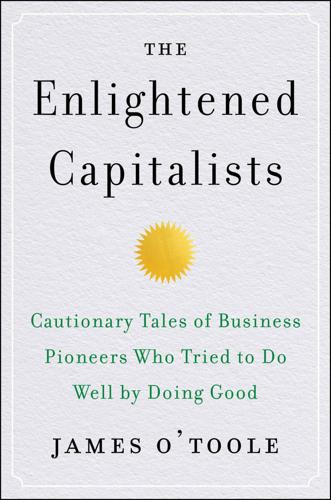
The Enlightened Capitalists
by
James O'Toole
Published 29 Dec 2018
“They’re fantastic people,” he later recalled, “but no one had ever given them the tools to do the job right.”17 The most important of those tools, Stack reasoned, is information—not an obvious conclusion in the grungy old-line business of rebuilding diesel engines for the used truck and tractor markets. Still, he believed that if his people knew how their own performance translated into the company’s overall ability to compete—and if they had the authority to act on that knowledge—workers would start to think like managers, and everyone would start to act as if they owned the business (which they did). In his book The Great Game of Business, Stack describes the practice of “open-book management” he developed at SpringfieldRe: every employee is given access to all managerial information.

The Rise of the Network Society
by
Manuel Castells
Published 31 Aug 1996
On the other hand, there has been a parallel growth of highly educated occupations and low-skill jobs, with very different bargaining power in the labor market. Exaggerating the terminology to capture the imagination of the reader, I labeled these two types of workers “self-programmable labor” and “generic labor”. Indeed, there has been a tendency to increase the decision-making autonomy of educated knowledge workers who have become the most valuable assets for their companies. They are often referred to as “talent”. On the other hand, generic workers, as executants of instructions, have continued to proliferate, as many menial tasks can hardly be automated and many workers, particularly youth, women, and immigrants, are ready to accept whatever conditions are necessary to get a job.
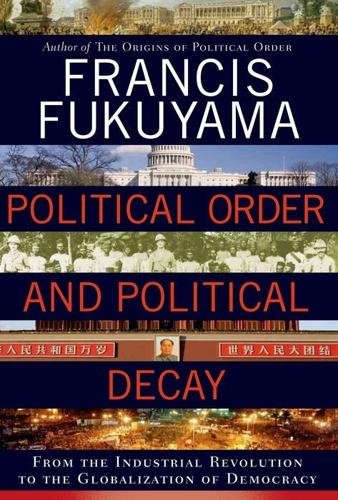
Political Order and Political Decay: From the Industrial Revolution to the Globalization of Democracy
by
Francis Fukuyama
Published 29 Sep 2014
Public policy supported deregulation and privatization at home and pushed for free trade and open investment abroad. Particularly in the United States, politicians intervened to weaken the power of trade unions and to otherwise increase the flexibility of labor markets. Individuals were advised to embrace disruptive change and were told that they would find better opportunities as knowledge workers doing creative and interesting things in the new economy. France and Italy stood at the other end of this spectrum, seeking to protect middle-class jobs by imposing onerous rules on companies attempting to lay off workers. By not recognizing the need for adjustment in work rules and labor conditions, they stopped job loss in the short run while losing competitiveness to other countries in the long run.

The Meritocracy Trap: How America's Foundational Myth Feeds Inequality, Dismantles the Middle Class, and Devours the Elite
by
Daniel Markovits
Published 14 Sep 2019
“eager and energetic”: Leslie Kwoh, “Hazard of the Trade: Bankers’ Health,” Wall Street Journal, February 15, 2012, accessed November 18, 2018, www.wsj.com/articles/SB10001424052970204062704577223623824944472, citing Alexandra Michel, Transcending Socialization: A Nine-Year Ethnography of the Body’s Role in Organizational Control and Knowledge Worker Transformation (2011), http://alexandramichel.com/ASQ%2011-11.pdf. Another study reports that more than two-thirds of overworked professionals do not sleep enough. Hewlett and Luce, “Extreme Jobs,” 54. just the first half of the 1980s: Schor, The Overworked American, 11. 260 annual days of sunshine: Jeffrey M.

The Irrational Bundle
by
Dan Ariely
Published 3 Apr 2013
In so doing, companies run the risk of taking away employees’ sense of the big picture, purpose, and sense of completion. Highly divisible labor might be efficient if people were automatons, but, given the importance of internal motivation and meaning to our drive and productivity, this approach might backfire. In the absence of meaning, knowledge workers may feel like Charlie Chaplin’s character in Modern Times, pulled through the gears and cogs of a machine in a factory, and as a consequence they have little desire to put their heart and soul into their labor. In Search of Meaning If we look at the labor market through this lens, it is easy to see the multiple ways in which companies, however unintentionally, choke the motivation out of their employees.

Palo Alto: A History of California, Capitalism, and the World
by
Malcolm Harris
Published 14 Feb 2023
Harman got a placement at SRI, too, and he quietly resumed the acid experiments under the auspices of the Alternative Futures Project.17 Fadiman has continued the work into the present, and his 2011 book, The Psychedelic Explorer’s Guide: Safe, Therapeutic, and Sacred Journeys, inspired a surge of interest in “microdosing,” now a popular performance-enhancing method in Silicon Valley tech circles that involves taking tiny amounts of LSD before work, a practice first proposed by Fadiman that’s sometimes imagined as a twenty-first-century off-label use of the drug.18 But acid was marketed to Bay Area knowledge workers as a productivity aid from the beginning. The personal revolutions in computers and consciousness weren’t just concurrent; they were also overlapping.ii Aided by LSD (directly and environmentally), technologists were going out on limbs too slight for even California’s big corporations to follow, and the government’s support peaked, then declined.

Artificial Intelligence: A Modern Approach
by
Stuart Russell
and
Peter Norvig
Published 14 Jul 2019
Doug Engelbart, one of the pioneers of HCI, championed the idea of intelligence augmentation—IA rather than AI. He believed that computers should augment human abilities rather than automate away human tasks. In 1968, Engelbart’s “mother of all demos” showed off for the first time the computer mouse, a windowing system, hypertext, and video conferencing—all in an effort to demonstrate what human knowledge workers could collectively accomplish with some intelligence augmentation. Today we are more likely to see IA and AI as two sides of the same coin, with the former emphasizing human control and the latter emphasizing intelligent behavior on the part of the machine. Both are needed for machines to be useful to humans. 1.2.6Computer engineering •How can we build an efficient computer?